

The Cost of Travel in South Korea: My 2024 Budget Breakdown
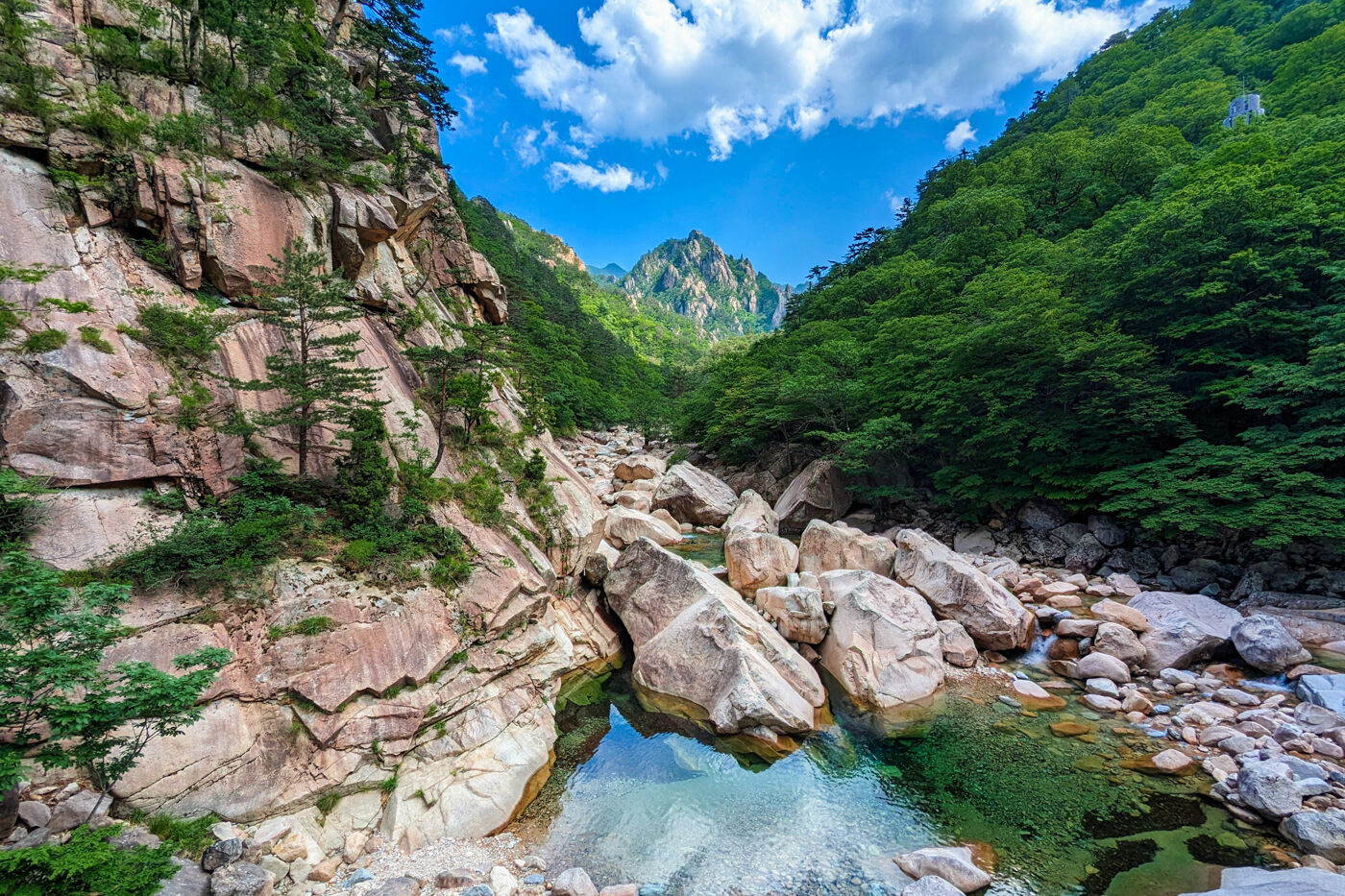
I was so excited to return to South Korea.
I haven’t been to many places where I’ve felt such a cohesive blend of old and new, but South Korea is one of them. Steeped with 5000 years of culture and history, but integrated with modern music, technology, and infrastructure, it’s a country that surprised and delighted me at every turn.
And Seoul? It’s one of my favourite cities in the world. If you think New York City is the place that never sleeps, just wait until you arrive in Seoul. During my first visit to the country, I landed in the South Korean capital expecting to spend three or four days in town, but ended up leaving after three weeks . Yes, I loved this city so much that I simply couldn’t bring myself to leave.
I’d be walking the bustling streets of popular neighbourhood Hongdae in the early hours of the morning and realise that there was nowhere on earth quite like it. Street performers are sharing their best routines to the latest K-pop songs, shops are bright and open, karaoke is everywhere, and clubs have lines out the door. Talk about a sensory overload, but in the best possible way.
On my return visit, though, I knew I needed to see more of this wonderful country. South Korea is so much more than it’s biggest city.
From the colourful houses in Busan to the scenic coastal views and tea plantations on Jeju Island to the towering mountains of Seoraksan National Park: I loved each and every destination I visited in the country. Get ready to be swept away by all that Korea has to offer, from Korean BBQ, K-pop, karaoke, palaces, temples, and arcades.
But how are the prices? In this post-pandemic world, the cost of travel has been skyrocketing, but this country has managed to remain relatively inexpensive.
Today, I’m going to be revealing exactly how much you can expect to spend on a trip to South Korea.
I’ve been recording every single dollar, peso, and baht that I’ve spent on my travels since 2011 (I now have over 65 budget breakdowns on the site !), aiming to give you an accurate picture of how much you can expect to spend in every country around the world. Today, it’s South Korea’s turn and I’m so excited to start sharing.
Grab yourself a cold bottle of soju because this post’s a long one!
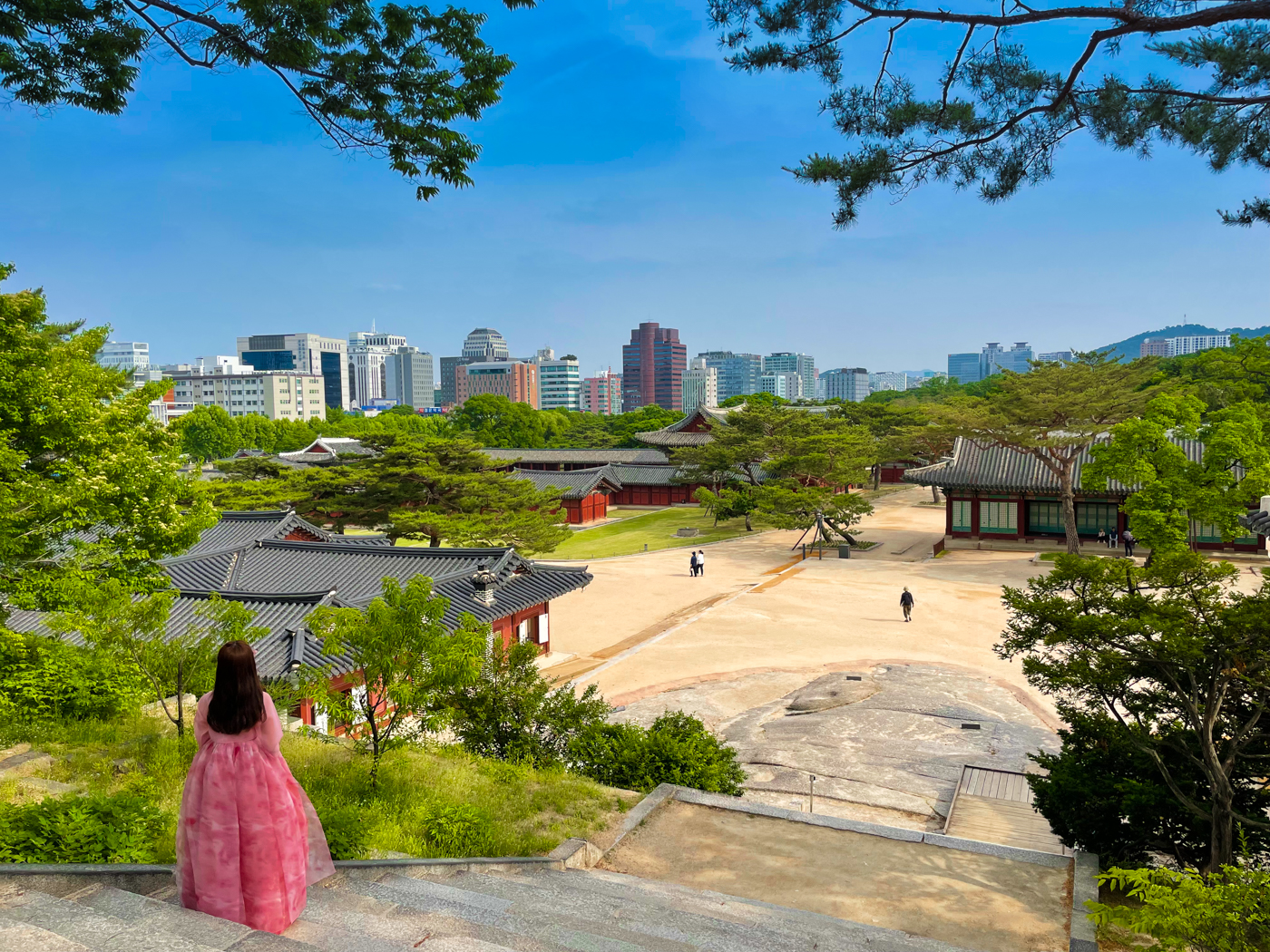
What’s Included in this Post
This budget breakdown covers how much I spent on accommodation, transportation, activities, and food during my trips to South Korea.
The amounts in the guide are listed in U.S. dollars, simply because the vast majority of my readers are from the U.S. I’ve also included prices in the South Korean won (KRW) — the local currency — as you’ll be using that throughout your time in the country.
At the time of writing (February 2024):
- 1 USD: 1,300 KRW
- 1 EUR: 1,450 KRW
- 1 GBP: 1,675 KRW
- 1 AUD: 875 KRW
Yes, this does make calculating the prices of things rather tricky when you’re in South Korea! For me, I kept in mind that 10,000 KRW is roughly 8 USD (€7, £6, or 11.50 AUD) and it made figuring out the prices of things far easier.
One quick note I do want to make about travel in South Korea is that it’s kind of complicated to pay for things! Korea is, these days, a cashless society — everybody pays with cards and there aren’t a lot of places that are happy to accept cash.
Now, that would be all well and good if it wasn’t for the fact that the vast majority of payment terminals don’t accept foreign bank cards. Apple Pay is very limited and Google Pay doesn’t exist at all.
Yes, really.
I’d say that we were able to successfully use our debit/credit cards 30% of the time in South Korea — and it made no difference whether we were using our U.K., Australian, or New Zealand cards.
So, what to do?
Honestly, there isn’t an elegant solution. Expect that every time you try to buy something, you might need to try four cards until one of them works. Carry a lot of cash with you in case none of your cards are accepted. It didn’t end up being a huge problem for us, as we were able to pay with cash whenever our cards were declined, but it was frustrating to have to continually deal with payment rejections everywhere we went!
Okay, let’s get started! Up first: accommodation!
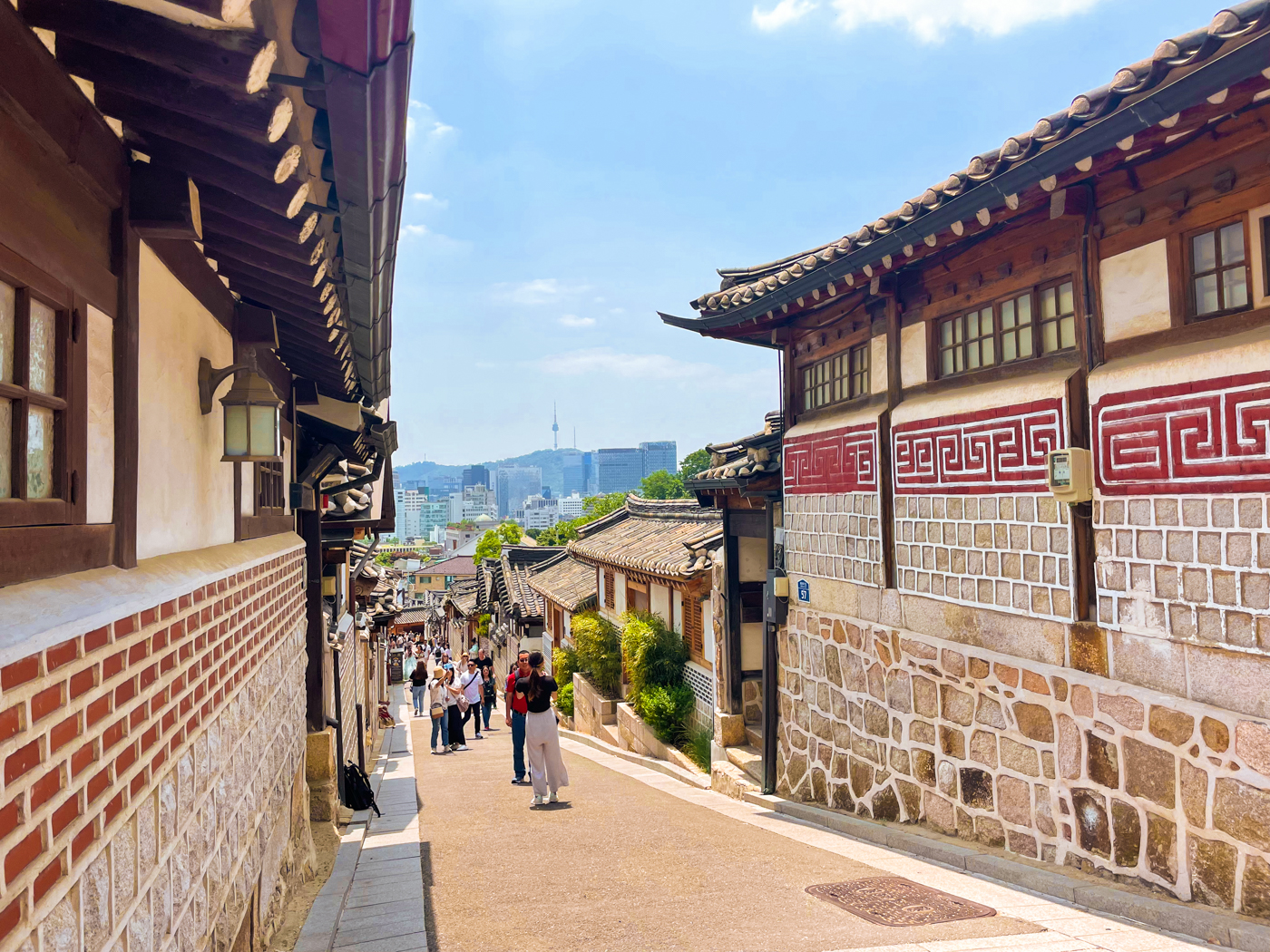
The Cheapest Accommodation Options in South Korea
Like practically every country in the world, prices have increased post-pandemic in South Korea, so you’ll be paying a little more for everything than you would have done a few years ago. Despite that, costs are lower than most Western countries, so accommodation in the country still offers up good value for money.
Let’s start on the lower end of the spectrum. If you’re willing to put in the time and effort, it’s possible to avoid paying for accommodation entirely.
Couchsurfing exists in South Korea and allows you to stay with a local for free, usually sleeping on their sofa and enjoying a local’s insight into life in their country. It’s not the most comfortable of living situations, but if your budget’s tight, it’s worth sending out a few requests to hosts to see if anything comes of it. You can browse through the 150,000+ Korean hosts on the Couchsurfing site .
Housesitting is a more upmarket option, aimed at mid-range and luxury travellers. Housesitting involves taking care of somebody’s house for free while they’re away, often (but not always) looking after their pets, too. It’s best for long-term travellers or retirees, as you can’t pick and choose dates and destinations, so you’ll need to have a lot of flexibility as to where you go and at what time of year. If you do have that freedom, though it’s a wonderful way to cut down your travel expenses, soak up some home comforts, and live like a local for a while. Trusted Housesitters is the best site for getting started with housesitting, as they have the highest number of listings.
And then we have hostels . In South Korea, you’ll come across hostels all over the country, finding them on tiny islands, large cities, and even within the national parks. They’re one of your best options for saving money.
All prices are in U.S. Dollars, by the way, as that’s where the vast majority of my readers are from.
Hostels in Korea are on a par with the rest of major cities in East Asia, and you can expect to spend between $18 a night for a dorm bed for a well-reviewed hostel, with the price increasing slightly to about $24 a night for the absolute best of the best.
When it comes to private rooms in hostels, you’ll be looking at $30 a night for a clean, basic room in a good location, so if you’re travelling with friends or with your partner, you may find it cheaper to grab some privacy over settling for two beds in a dorm room. $70 a night will get you an exceptionally well-reviewed private room in a hostel.
I use HostelWorld to find the cheapest hostels, as they tend to have the greatest number of listings at the lowest prices.
And then there are hotels, which I’m going to jump into next.
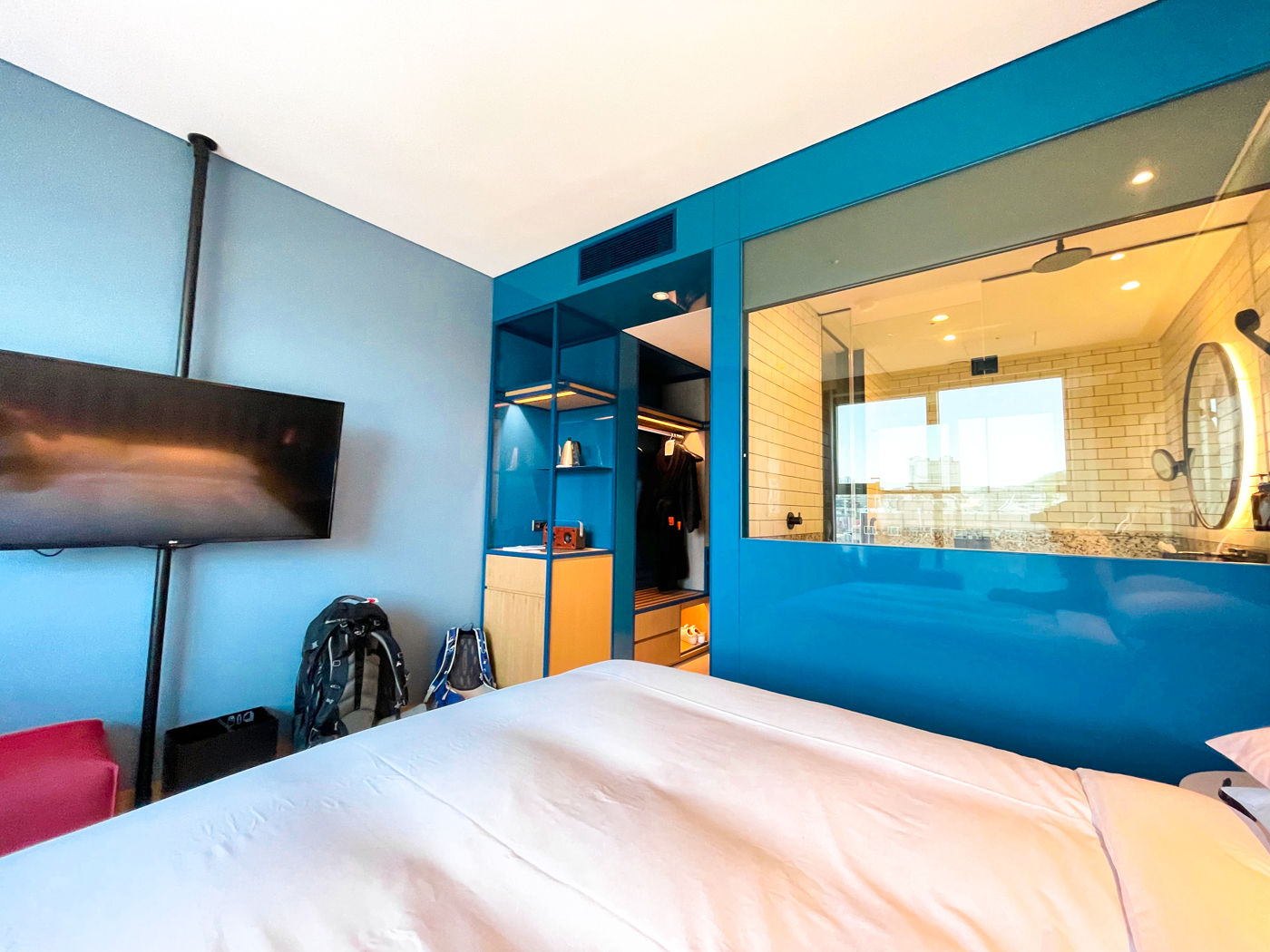
The Cost of Accommodation in South Korea
I found hotels in South Korea to be pretty reasonably priced. You won’t get the cheap, cheap rates that you do in places like Southeast Asia, but prices are generally lower than more expensive countries in Western Europe.
- As mentioned, well-rated hostels come in at an average price of $18 a night for a dorm bed, while private rooms are around $30 a night .
- Inexpensive guesthouses are typically around $50 a night .
- Four-star hotels are between $150 and $200 a night
- And five-star hotels are $250-350 a night
As always with these posts, I like to share where I personally stayed in the country and what I thought of each of my accommodation choices. On my most recent trip, I splurged in Seoul because I wanted to stay in two of the best-rated hotels in the country, but kept my accommodation costs relatively low in the other destinations I visited.
Seoul (Hongdae): RYSE Hotel (240,000 KRW, or $183 per night)
If you’re going to stay anywhere in Hongdae (my favourite Seoul neighbourhood), RYSE Hotel is the place to be. It’s one of the best hotels in the city! It’s in the perfect location, in the heart of Hongdae’s cafe-and-nightlife scene, but so well-insulated that you don’t hear any of it. The rooms had a modern, industrial design, great views over the city, and there were tons of gifts, from facemasks (this is Korea, after all!) to local games to even a bottle of wine. There’s a rooftop bar with some of the best views in Seoul, one of the best equipped hotel gyms I’ve ever used, and the staff were amazing. I’d absolutely stay here again on future visits!
Seoul (Myeongdong): Hotel 28 (189,000 KRW, or $144 per night)
Our itinerary in South Korea saw us spending two separate stints in Seoul, so for our second visit, I dragged myself away from my beloved Hongdae and gave Myeongdong a try — this is the neighbourhood to head to if you want to shop ’til you drop then eat ’til you’re… replete! We chose Hotel28, which is the best-rated option in the area; one of the Small Luxury Hotels of the World. It’s a cinema-themed hotel (you get bags of free popcorn when you check in!) in one of the best areas for eating in the city. The rooms are spacious, the bathroom had the best bathtub ever, and the staff were so sweet. It’s right by one of the city’s best night markets, too, which was so much fun to eat my way around! The hotel gym was great, too.
Gyeongju: Maison Mini Hotel (62,000 KRW, or $49 per night)
Dave and I loved our stay at the adorable Maison Mini Hotel in Gyeongju and found it to be a fantastic mid-range accommodation option. The rooms were spotless and cleaned everyday throughout our stay. The owner was so sweet and welcoming, and the shared kitchen and laundry facilities were definitely appreciated. Having access to a proper coffee machine was particularly useful! The guesthouse is a 10 minute walk from all of the wonderful sights of Gyeongju and a five minute walk from the main bus station, so it made for a great base while we were in town. I can’t recommend this place highly enough!
Busan: Urbanstay Seomyeon (61,000 KRW, or $47 per night)
Like Seoul, Busan is a big old city with plenty of neighbourhoods to choose from. Seomyeon, however, is the best spot for new visitors to town — it’s in a convenient location for visiting all of the most popular spots and has plenty of vibrant nightlife and restaurants to explore. Urbanstay is right beside a metro station, which makes getting around even easier. The rooms are clean, modern, and basic — very minimalist! — with lightning-fast Wi-Fi. There actually aren’t any staff at the hotel, so you’ll be emailed a key code to get into your room, which works well. The washing machines are, as always, very much appreciated!
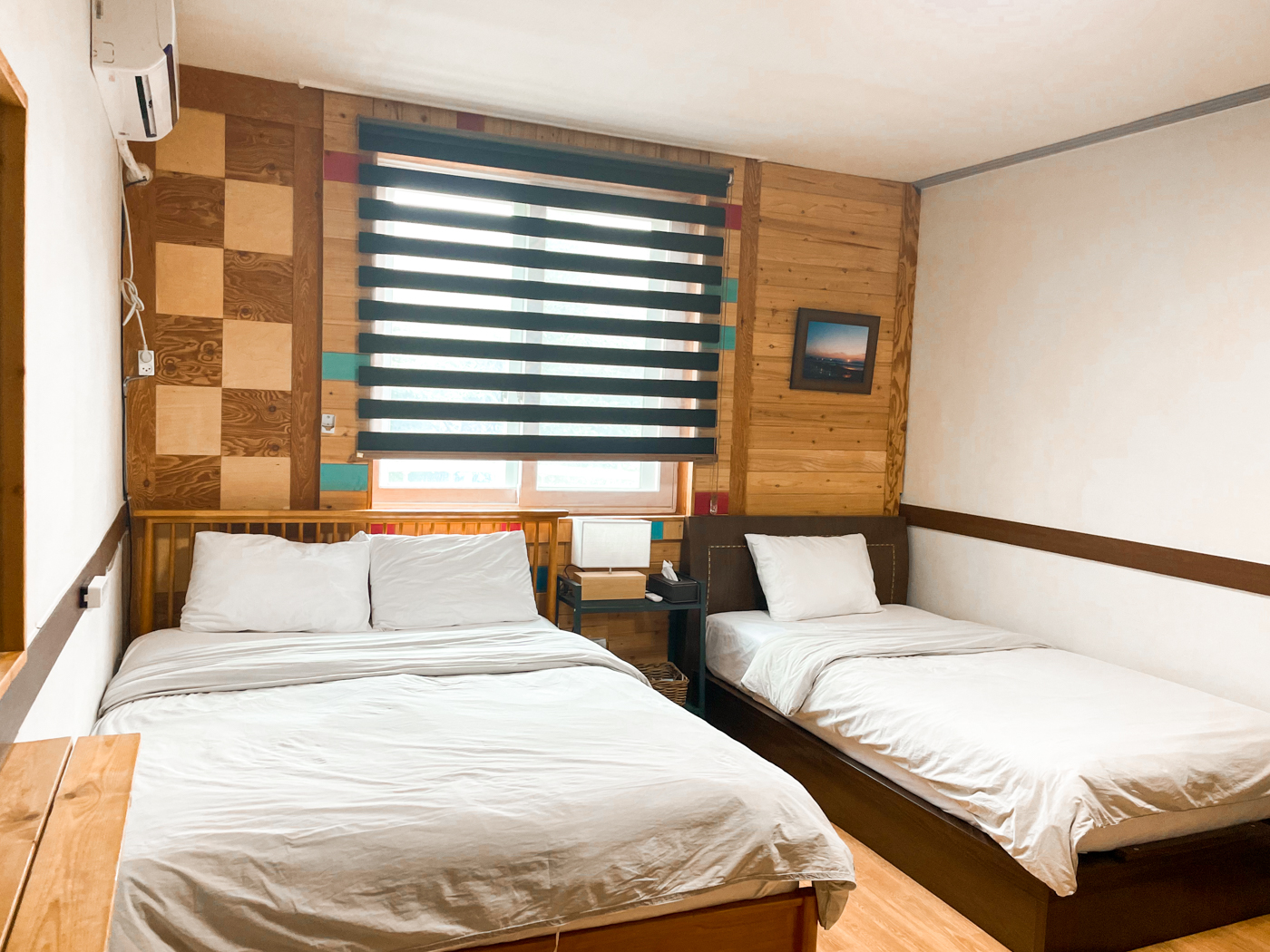
Seoraksan National Park: Smile Resort (70,000 KRW, or $53 per night)
If you’re going to be hiking in Seoraksan National Park, you’ll want to be staying as close to the park entrance as possible. Unfortunately, this area of South Korea seems to be full of mediocre accommodation options. Still, Smile Resort was the best option that was close to the entrance while not being obscenely expensive. While the interior was a little old and tired, it was a perfectly acceptable place to stay! The owners were welcoming and kind, the free breakfast (a rarity in South Korea) was definitely appreciated before a big day of hiking, and it’s just a five-minute walk from the bus that takes you to the national park entrance. Rooms also have a private kitchenette and fridge, which was useful for keeping our water cold overnight.
My partner, Dave, wrote an in-depth itinerary on how to spend 10 days in South Korea after our most recent trip, so do check that out if you’re looking for advice how to structure a trip to the above places!
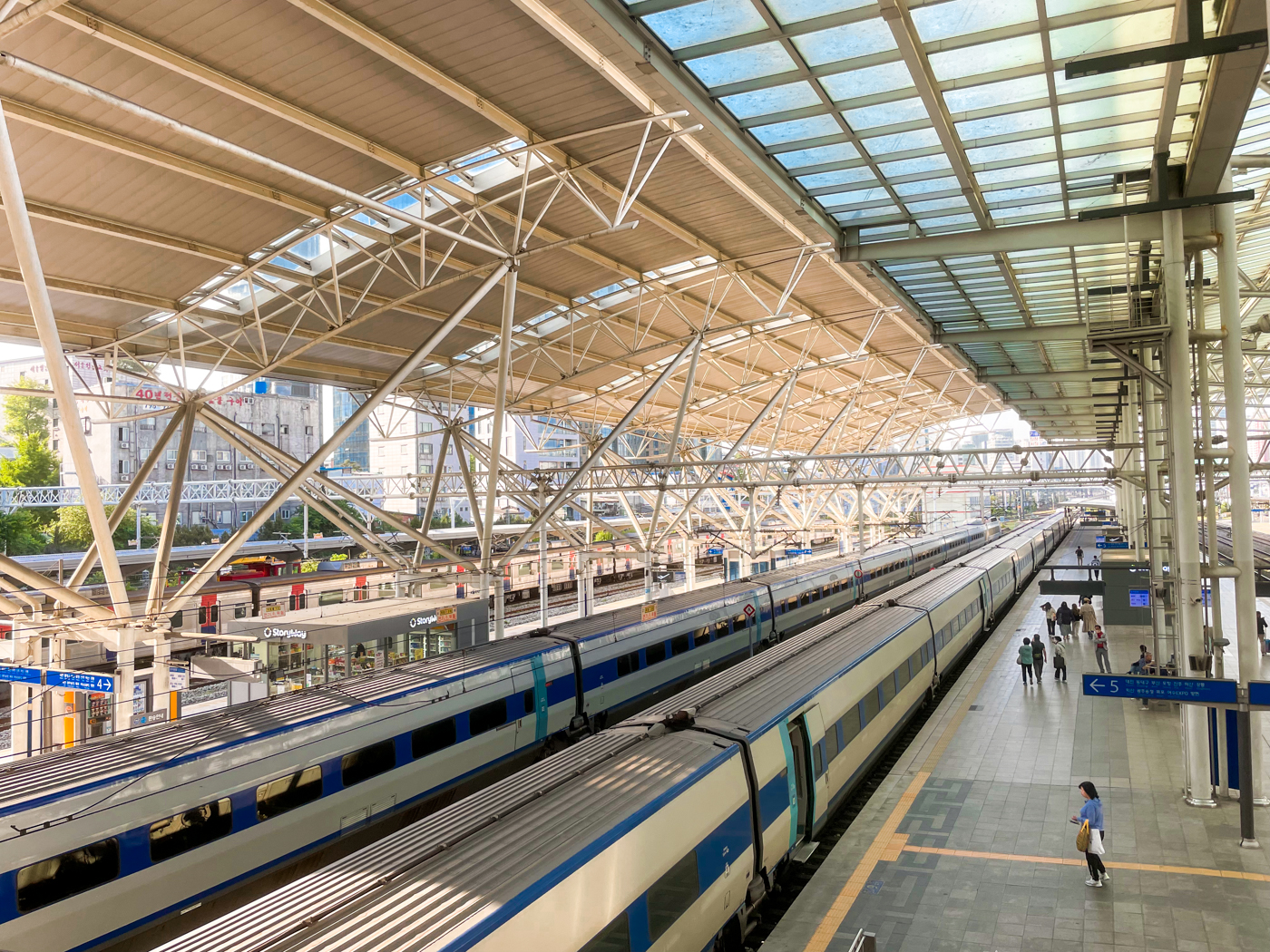
The Cost of Transportation in South Korea
I’m somebody who doesn’t get an awful lot out of travel days in unfamiliar places, but even I can admit that travelling around South Korea is a joy! From the buses to the high-speed trains to the comprehensive subways: getting around this country is convenient, comfortable, and hassle-free.
Your first encounter with the transportation system will be at the airport. There’s two options for getting the train from Incheon International Airport to Seoul: the Airport Railroad Express (AREX) or the All Stop Train. The former takes 43 minutes and costs 9,500 KRW ( $7.20 ), while the latter is half the price at 4,150 KRW ( $3.15 ) and takes 53 minutes.
I recommend jumping on the All Stop Train, then, as it’s cheaper, takes just 10 minutes longer, and runs more frequently than the AREX so will most likely get you into Seoul faster anyway.
I wouldn’t recommend taking the bus or the taxi, as both are more expensive and slower than the train. The bus costs 10-15,000 KRW ( $9 ) and takes around 80 minutes, while taxis cost a whopping 70,000 KRW, or $55 , and take around an hour.
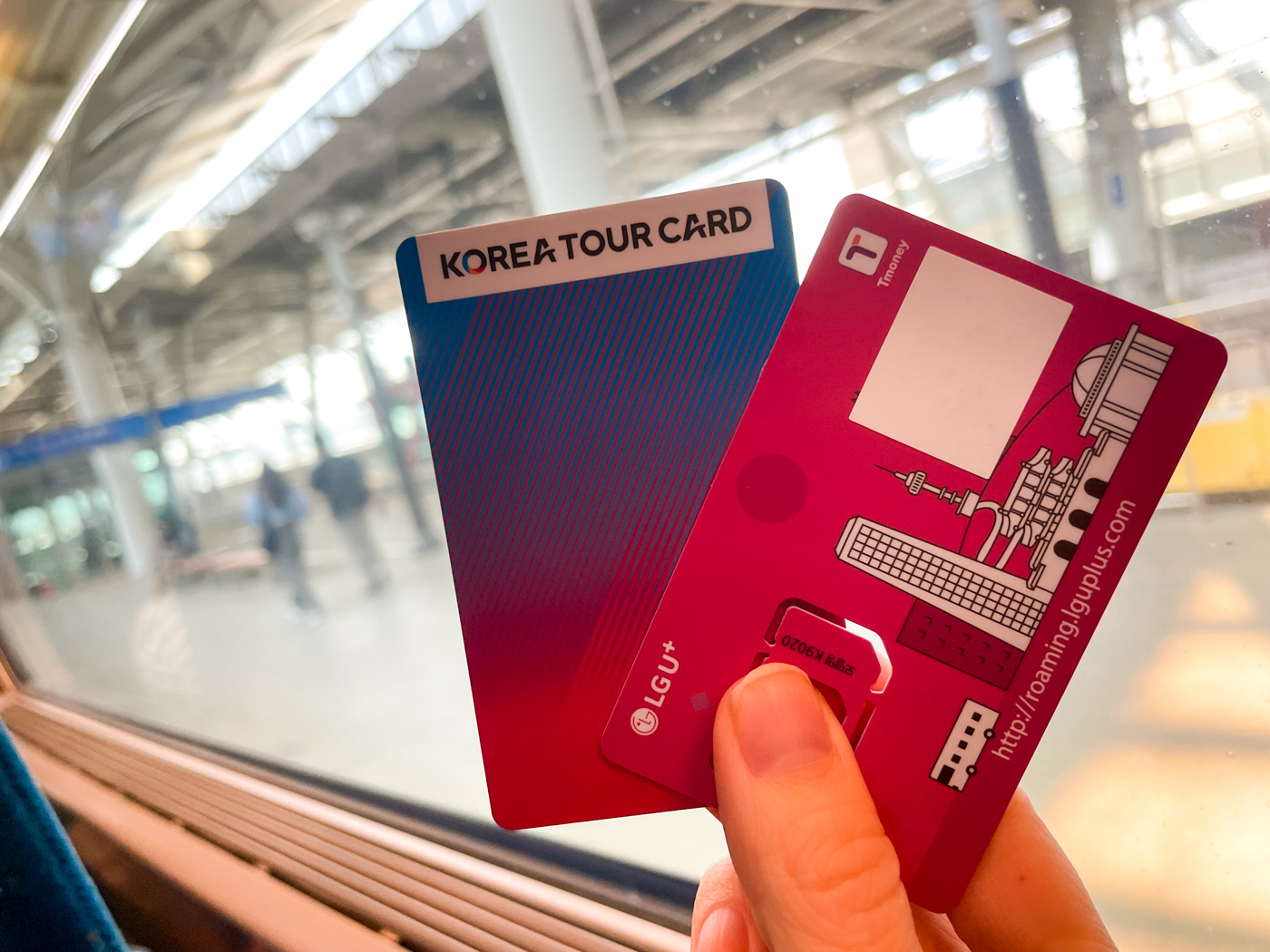
What to Know About T-Money Cards
Before we go any further, it’s time for a primer on T-Money! This is my one travel essential in South Korea and I highly recommend getting your hands on one before you leave the airport.
A T-Money card is designed to make your public transportation experiences seamless. You simply buy your T-Money card from any convenience store, or the vending machines at the airport, and then you can use it on subways, buses, taxis, and even vending machines and grocery stores — all across the country. Simply tap your card on the T-Money scanner and you’re good to go!
I recommend buying yours at the airport, where there are T-Money vending machines located beside the All Stop Train (and then you’ll pay for said train journey with the card). You’ll pay 4,000 KRW ( $3 ) for the card.
Once you’ve bought your card, remember to top it up with some cash. I topped-up with 40,000 KRW ( $30 ), which was the perfect amount for two weeks in the country — I had 2,000 KRW left over at the end. If you do end up with any money left on your T-Money card at the end of your trip, you can get that refunded to you at any subway station (including the airport) in Seoul.
I mentioned in the photo caption above that Dave’s T-Money card came free with his SIM card purchase. He bought his SIM card in advance from LG and picked it up in the arrivals hall at the airport. The SIM card included unlimited data (35,000 KRW or $25 for 10 days of usage) plus a Korean phone number — the latter of which is surprisingly useful in Korea (you often need a local phone number just to join a queue for a restaurant!) but tricky to get from many other providers.
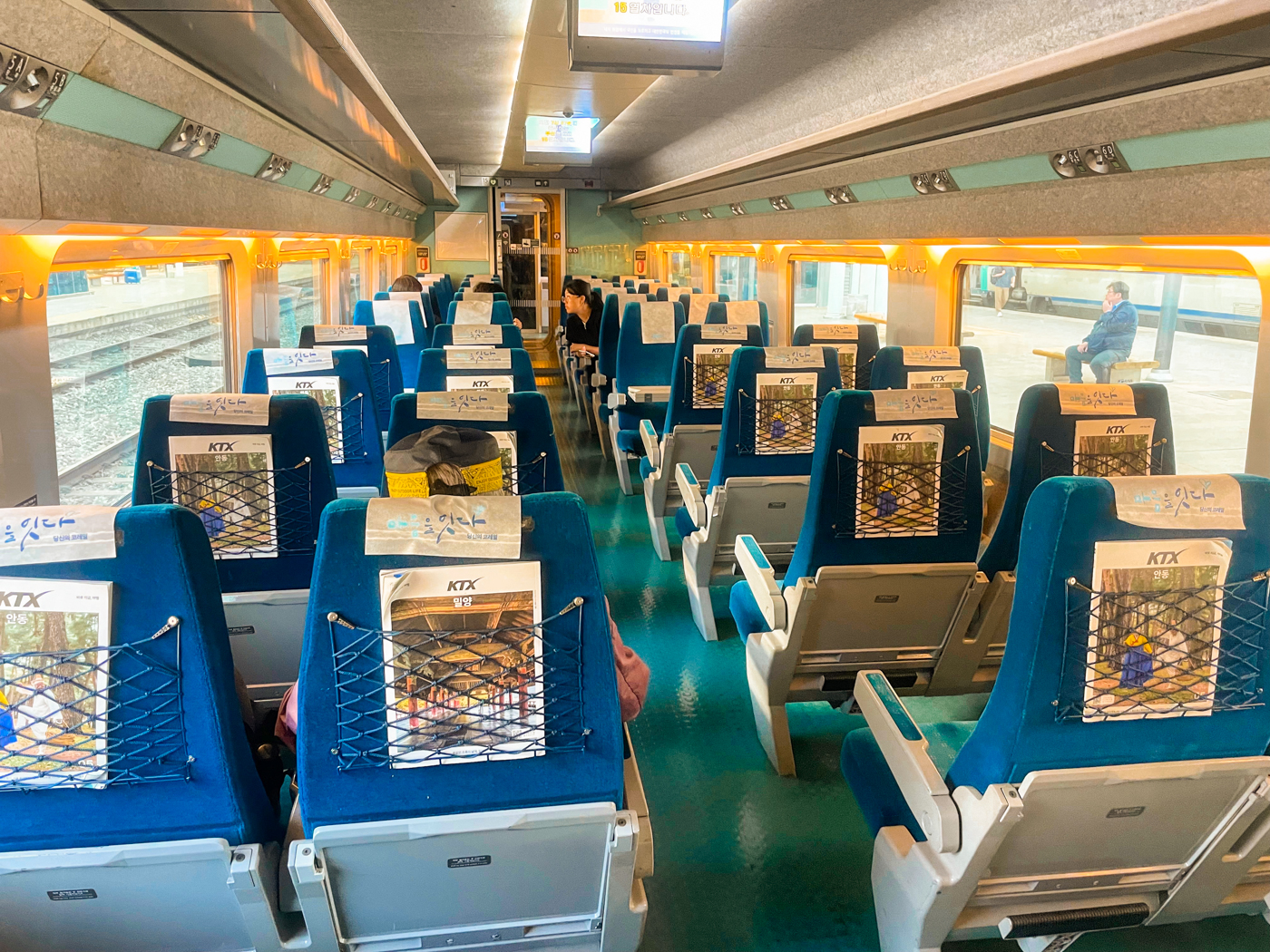
The Cost of Trains in South Korea
If you’ll be venturing outside of Seoul then odds are, you’ll be travelling by train. This is one of the best ways to explore the country, thanks to the modern carriages and speedy services. And expect your trains to be punctual — just as in nearby Japan , this country thrives on an on-time departure.
I’m a huge fan of the KTX — the Korean Travel Express — which whips you up and down the length of the country at speeds of 300+ kilometres an hour (190 mph). It’s the priciest option, for sure, but the amount of time you’ll save will likely make it worth it.
As an example, the KTX from Seoul to Busan — running from the top to the bottom of the country — takes just over two hours (at a price of 59,800 KRW/$45 ). In comparison, the equivalent buses and slower trains complete the journey anywhere between four and six hours (but costing 28,000 KRW/$21 ).
Buy your KTX tickets through the official Korail website to score the cheapest fare — we had no problems using it with our foreign debit/credit cards.
I’ll briefly mention the existence of the Korea Rail Pass (KR Pass) here, which works similarly to the Japan Rail Pass or a Eurail Pass. You can choose from either a consecutive pass or a flexible pass, but to be honest, the prices are around the same amount as the individual tickets, so I didn’t see the point. If you’ll be racing around the country and visiting multiple places in a single day, it may be worth it, but it wasn’t for us.
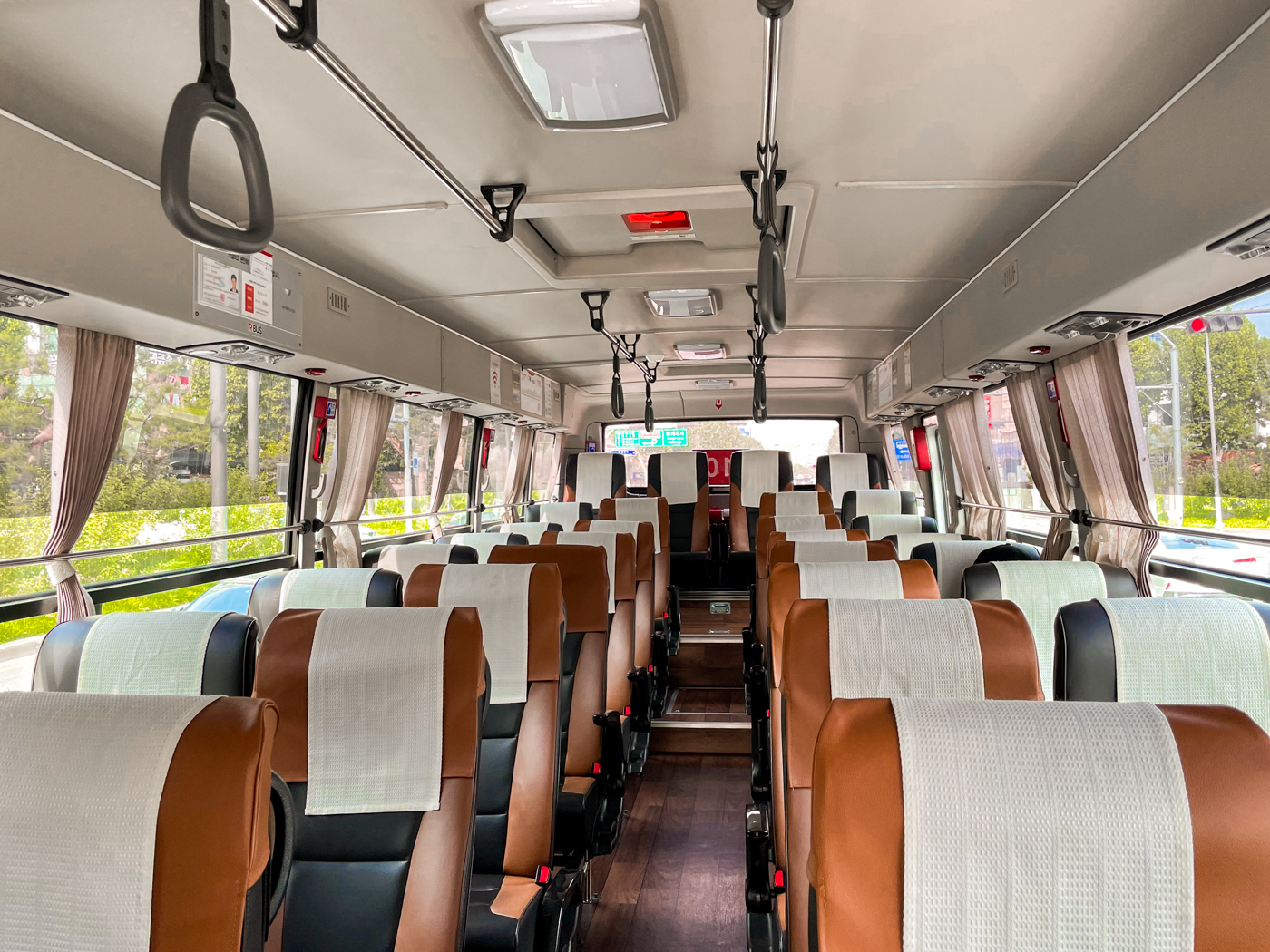
The Cost of Buses in South Korea
You can take the bus to just about anywhere in South Korea.
There are two types of long-distance buses in the country: express and intercity; due to time constraints, we opted for the express option for every journey we took (intercity buses are cheaper but take way longer because they make stops all along the way; express buses take you directly to your destination). Our two-hour express bus from Seoul to Sokcho ( 21,000W, or $16 ) was bordering on luxurious with wide, comfortable reclining leather seats, tons of legroom, and even power sockets.
You can find bus departures either through Kobus (express buses only) or Bustago (express and intercity buses). However , you can only purchase through these sites if you have a Korean bank card and a local number — yes, it’s frustrating and only the tip of the iceberg when it comes to Korea making travel difficult for foreign visitors.
We used these booking sites, therefore, to see which departure time we wanted to aim for and to check there were still tickets available. We then bought the tickets from the bus station an hour or so beforehand — departures typically run multiple times an hour so you don’t have to worry too much about buses being booked.
To give you a sense of ticket prices, here are some average one-way costs for a few routes you might take:
- Seoul to Busan: 33,000 KRW ($26)
- Seoul to Gyeongju: 20,000 KRW ($15)
- Busan to Daegu: 12,000 KRW ($9)
- Seoul to Jeonju: 20,000 KRW ($15)
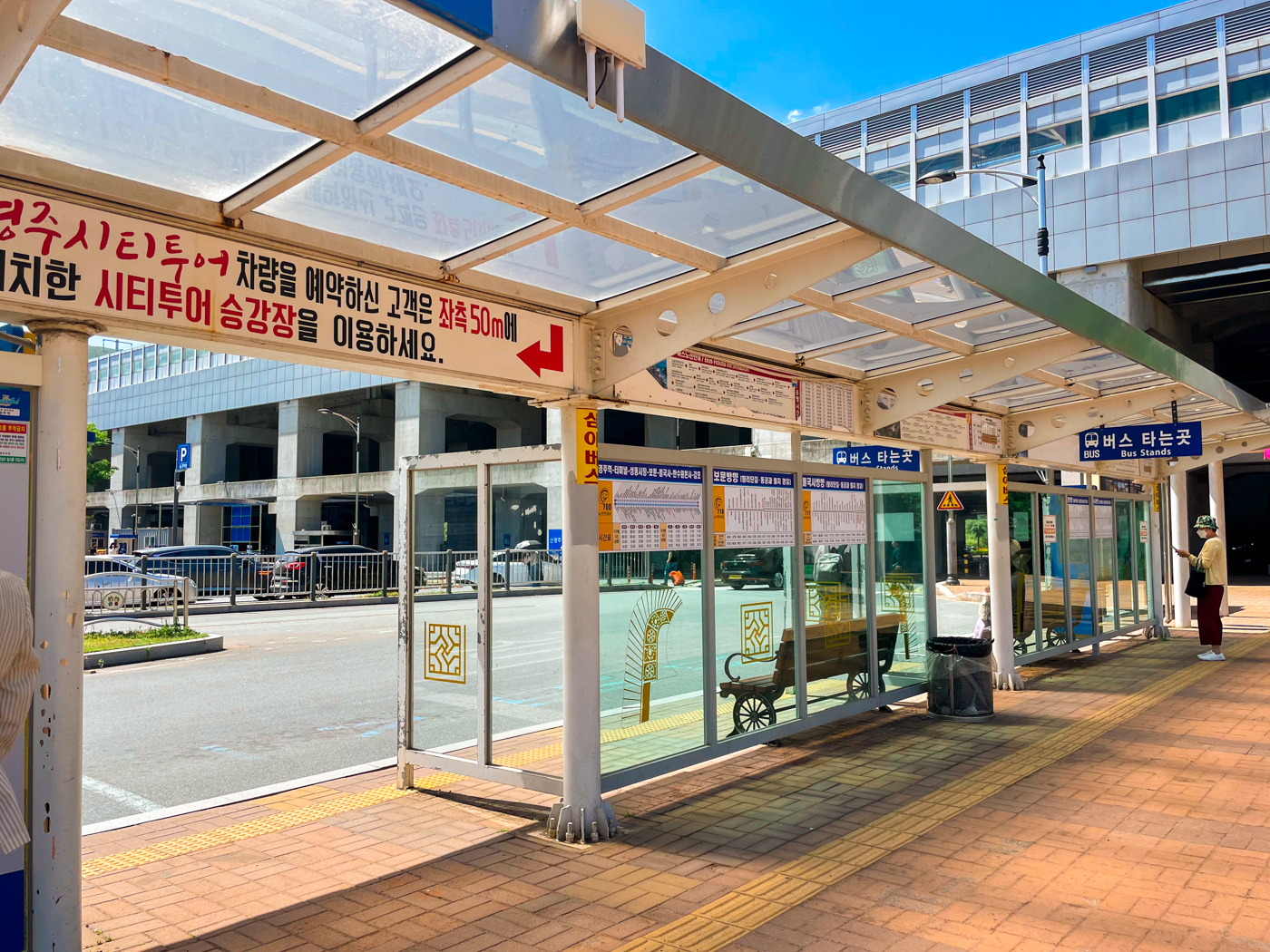
The Cost of Flying in South Korea
South Korea isn’t a gargantuan country. And with fast and frequent overland options available throughout, you probably won’t need to fly very often — if it all. But if you plan on going to wonderful Jeju Island (which you should), then flying is the easiest way to get there.
A one-way direct flight from Seoul to Jeju will cost around $42 , and if you’re flying from Busan, a one-way fare is roughly $33 .
In terms of alternative options to flying, you do have the ferry from Busan. At a journey time of around 12 hours, though, and a cost of 60,000W ($45) , there’s no real reason to put yourself through the discomfort.
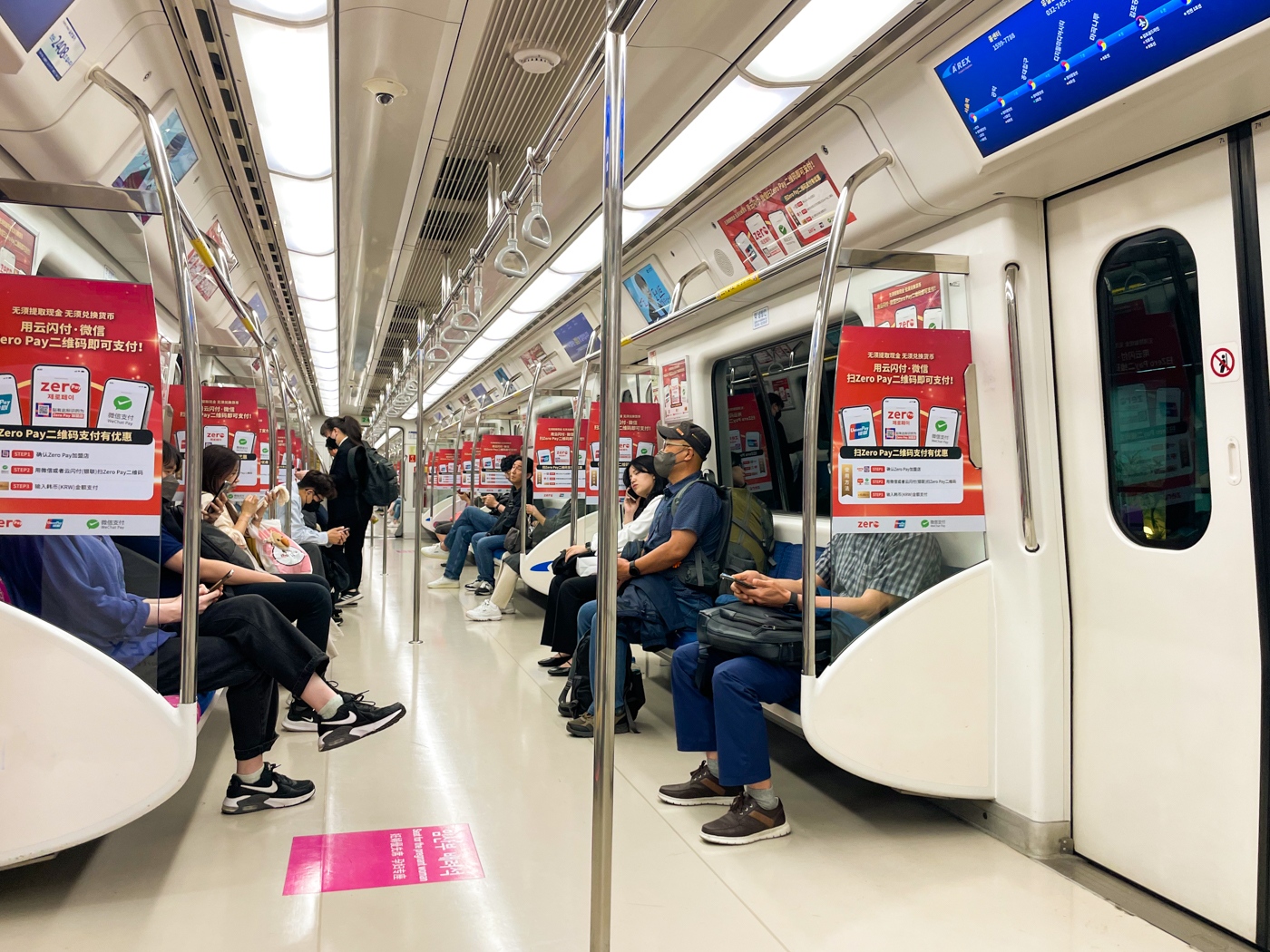
The Cost of the Metro in South Korea
The underground systems in Seoul and Busan are in a league of their own. In fact, Seoul has one of the most extensive subway systems in the world — it’s clean, modern, and safe. If you don’t have to use it during rush hour, it’s pretty calm, too. It’s one of the best and most efficient ways to get around Seoul, and with the exception of a couple of local bus trips, I relied on the subway during my entire stint in the city.
Fare is calculated by distance, so a subway ride of less than 10 km will cost 1,350 KRW ($1) with 100 KRW added on for every additional 5km (you’re unlikely to take a journey this far, though). When taking the subway over a typical day of sightseeing, I usually averaged around 5,000 KRW ($4) per day .
Overall, my daily transportation costs in South Korea worked out to: $10.20 per day
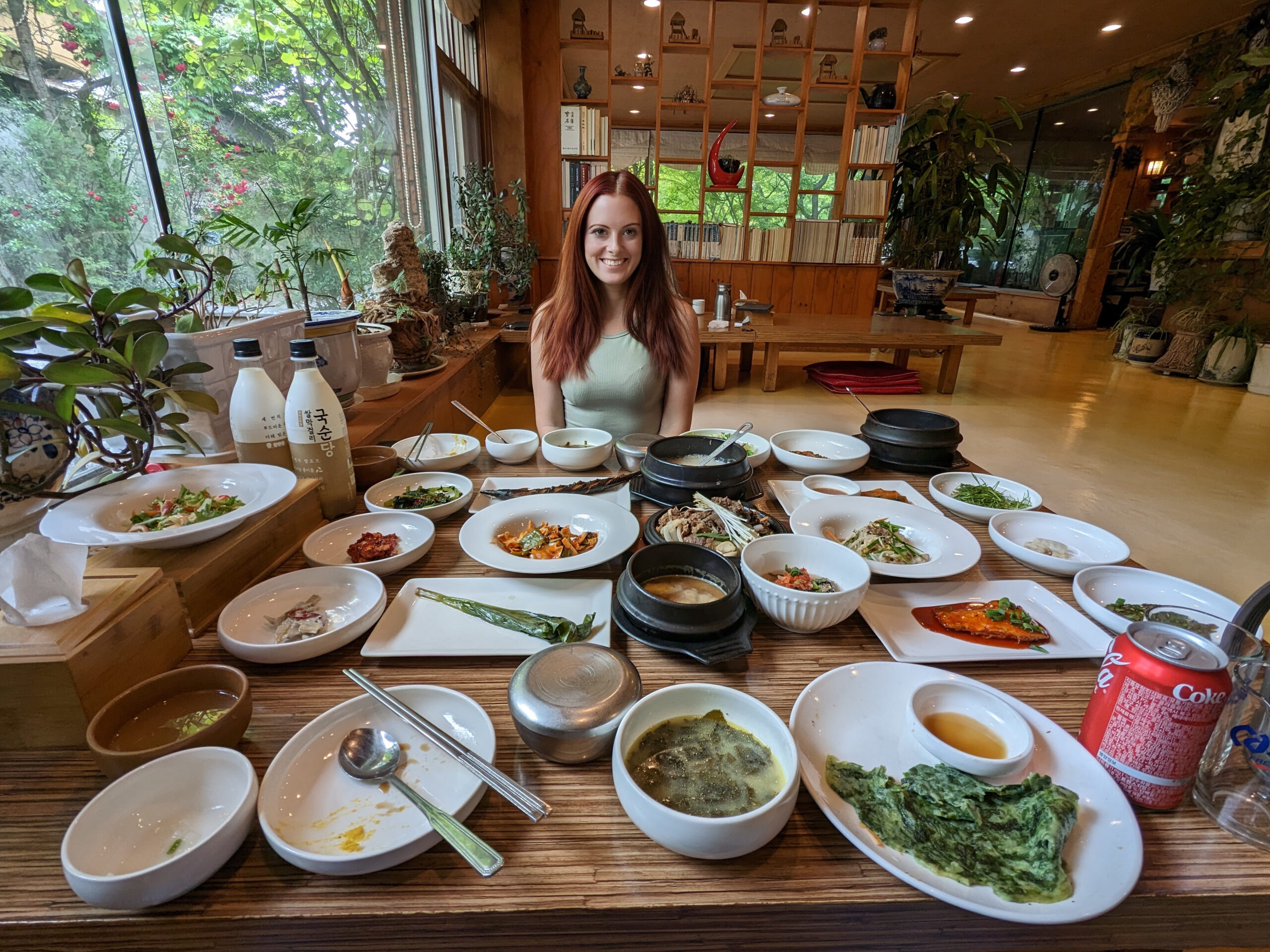
The Cost of Food in South Korea
Long-time readers of the site will already know that food is my primary driver to travel. It won’t come as any surprise, then, to learn that my favourite thing to do in Korea was eat .
There are so many incredible local dishes to sample in this country that I often found myself panicking that there weren’t going to be enough meals in the day. By the end of my weeks in the country, I was officially inducting South Korea into my list of the top five places to eat in the world (the others being India, Vietnam, Mexico, and Greece).
Yes, you’ve got all the classics you’ve probably come across before, like kimchi, bibimbap, and bulgogi, and you’ll be able to find them on practically every street you walk along. But for me, the delight came in wandering into a crowded restaurant without any idea what was on the menu, sitting down and being presented with one of the best dishes I’ve ever tried. Yes, I’m looking at you, samgyetang.
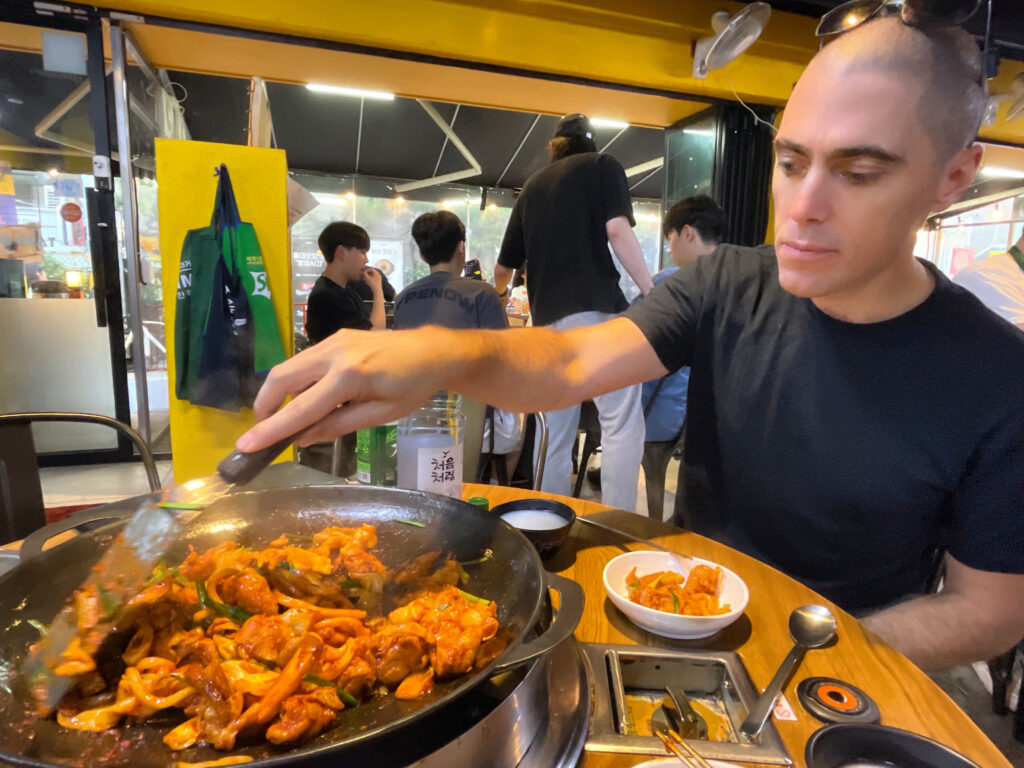
Of course, Korean BBQ reigns supreme and provides a super-fun food experience — I definitely recommend trying it at least once while you’re in the country. Gather around a table with a group of friends, order yourselves an inordinate amount of meat, marinate it in a variety of sauces, then cook it up at your table on your own little grill.
And let me tell you that Korean fried chicken may have ruined me for all of my future fried chicken experiences. Before arriving in the country, I’d made a vow to never eat the same thing twice while I was there. After my first taste of crispy fried chicken, however, I found myself meekly eating it again a couple of days later. It was just so freaking good!
The kimchi in South Korea is amazing and I was regularly blown away by the depth of flavour that was contained in such a simple dish. You’ll be given a couple of versions of it (cabbage and radish) as a free side with practically every meal you order, and it was nearly always a flavourful highlight for me.
One particularly epic food experience we had in the country is depicted in the photo at the very top of this section — the one where I’m surrounded by about 35 different dishes! Hongsi Hanjungsik in Gyeongju offers up a traditional Korean banquet, run out of the owner’s home, with so many high-quality, tasty things to try. And despite the multitude of dishes, we didn’t come away feeling overly full. At a price of 20,000W (or $15.50) each, it felt like phenomenally good value!
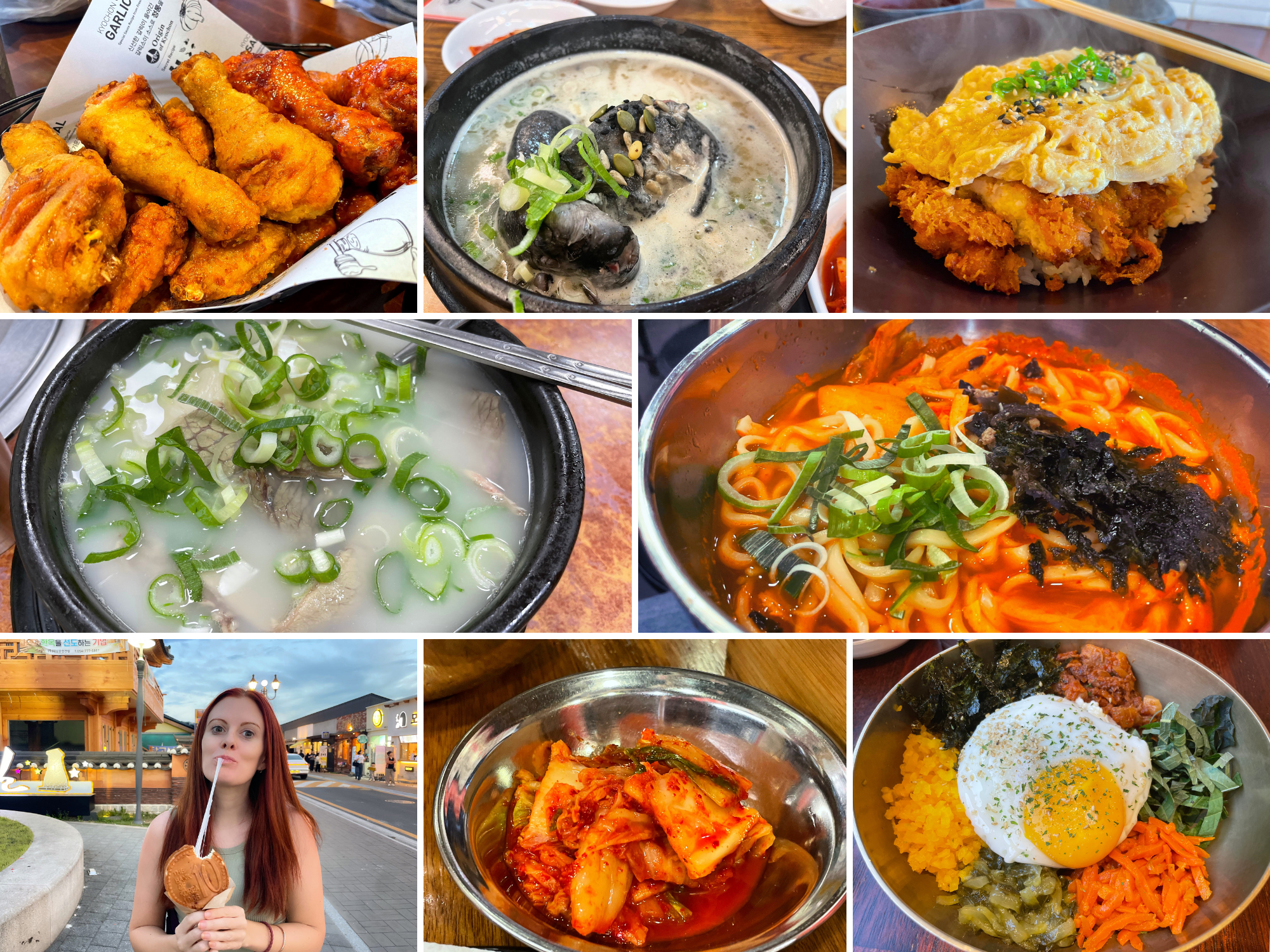
So let’s get into the food prices.
In general, if you’re eating out at a Korean restaurant, look to spend around 10,000 – 15,000 KRW ($7.50 – $11.50) for a meal. When eating at a more Western restaurant (which you absolutely should not do because the Western food in Korea is probably the worst I’ve ever eaten — a ham and cheese sandwich I ordered was drizzled with condensed milk!) then you might spend 20,000 KRW ($15) for a meal. Fast food, street food, or a smaller meal will range around 5,000 – 7,000 KRW ($4 – $5) .
Here’s some examples of what we spent on some of the various dishes we tried:
- Fried chicken for lunch: 10,000 KRW ($7.50)
- Bibimbap for lunch: 9,500 KRW ($7)
- Bindaetteok (mung bean pancake) as a street food snack: 5,000 KRW ($4)
- Dakgalbi (stir-fried chicken) for dinner: 6,500 KRW ($4.50)
- Unlimited Korean BBQ on a weekday lunch: 15,000 KRW ($11.50)
- Samgyetang (chicken ginseng soup) at a fancy restaurant for lunch: 19,000 KRW ($14.50)
- Street food snacks: 3,000 KRW ($2) each
- A pint of local draft beer in a restaurant: 4,000 KRW ($3)
- A bottle of soju in a restaurant: 4,000 KRW ($3)
- A 750ml bottle of makgeolli in a restaurant: 4,000 KRW ($3)
- An extremely fancy cocktail in a world-class bar: 23,000 KRW ($17.50)
Dave and I are usually intermittent fasters when we travel, so we rarely opted for breakfast while we were travelling in South Korea. Instead, we’d have a large meal for an early lunch and often hit the street food carts for dinner. Our daily meal costs were sometimes then as little as 15,000 KRW ($11.50) a day but averaged out at 25,000 KRW ($19) a day .
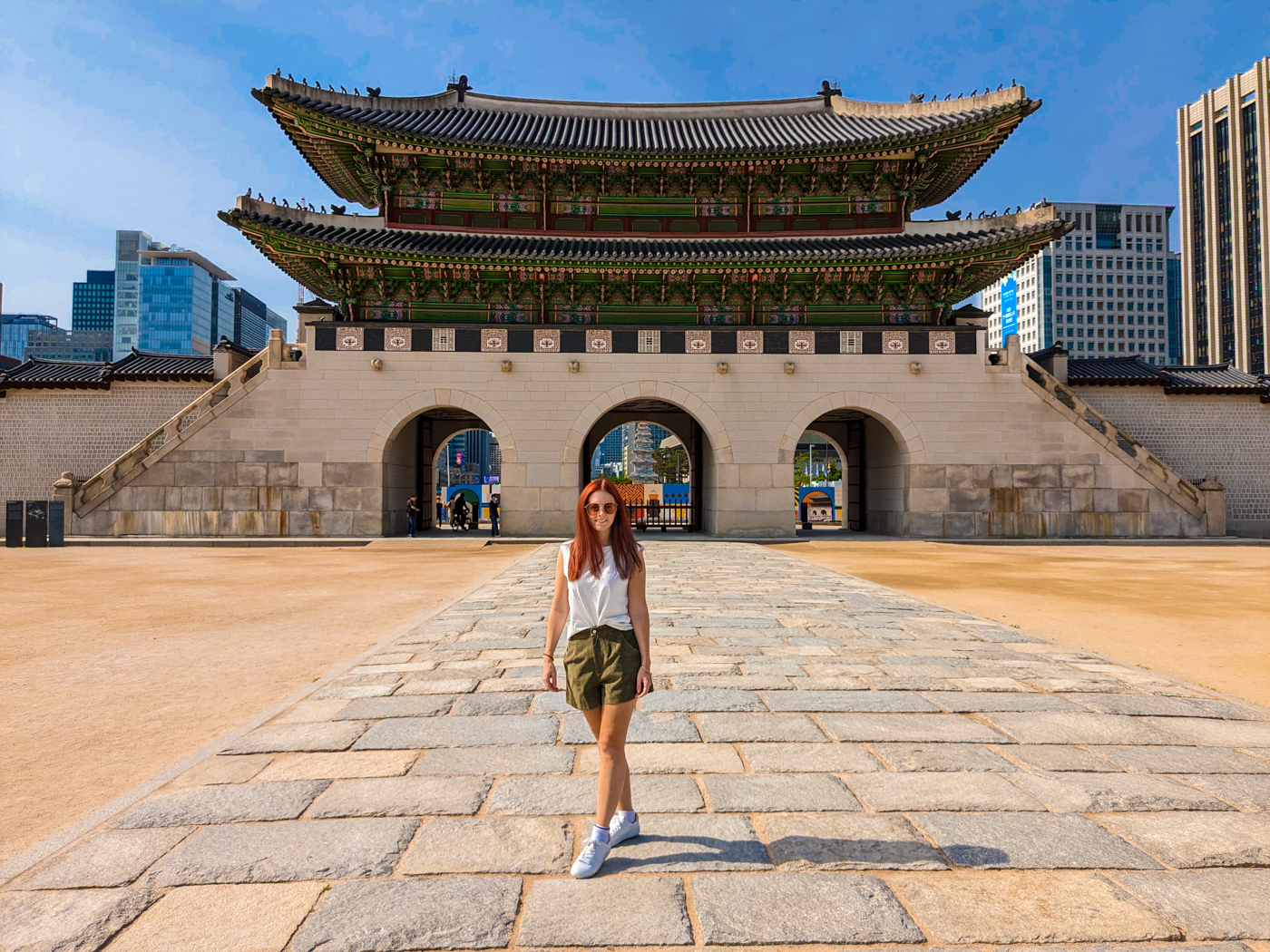
The Cost of Activities and Entrance Fees in South Korea
When it comes to activities in South Korea, there’s so much to keep you entertained — and it’s pretty affordable, too.
If there’s one activity to cross off your list when you’re in Seoul, it has to be the royal palaces. For just 10,000 KRW , you can purchase a combo ticket that gives you entrance to Gyeongbokgung, Changdeokgung (and its separate secret garden), Deoksugung, Changgyeonggung, and Jongmyo Shrine. To visit each of these individually would cost 14,000 KRW , so it’s well-worth getting the combo and crossing all of them off. We managed to see all of them in a single day of hardcore sightseeing, and while we were undoubtedly templed-out by the end of it, we were still glad we’d made the effort to do so.
If you only have a limited amount of time, then just head to Gyeongbokgung and Changdeokgung — the two most impressive of the palaces. You’ll be able to catch the impressive changing of the guard in the morning at Gyeongbokgung, then take a tour of the wonderful secret garden at Changdeokgung in the afternoon.
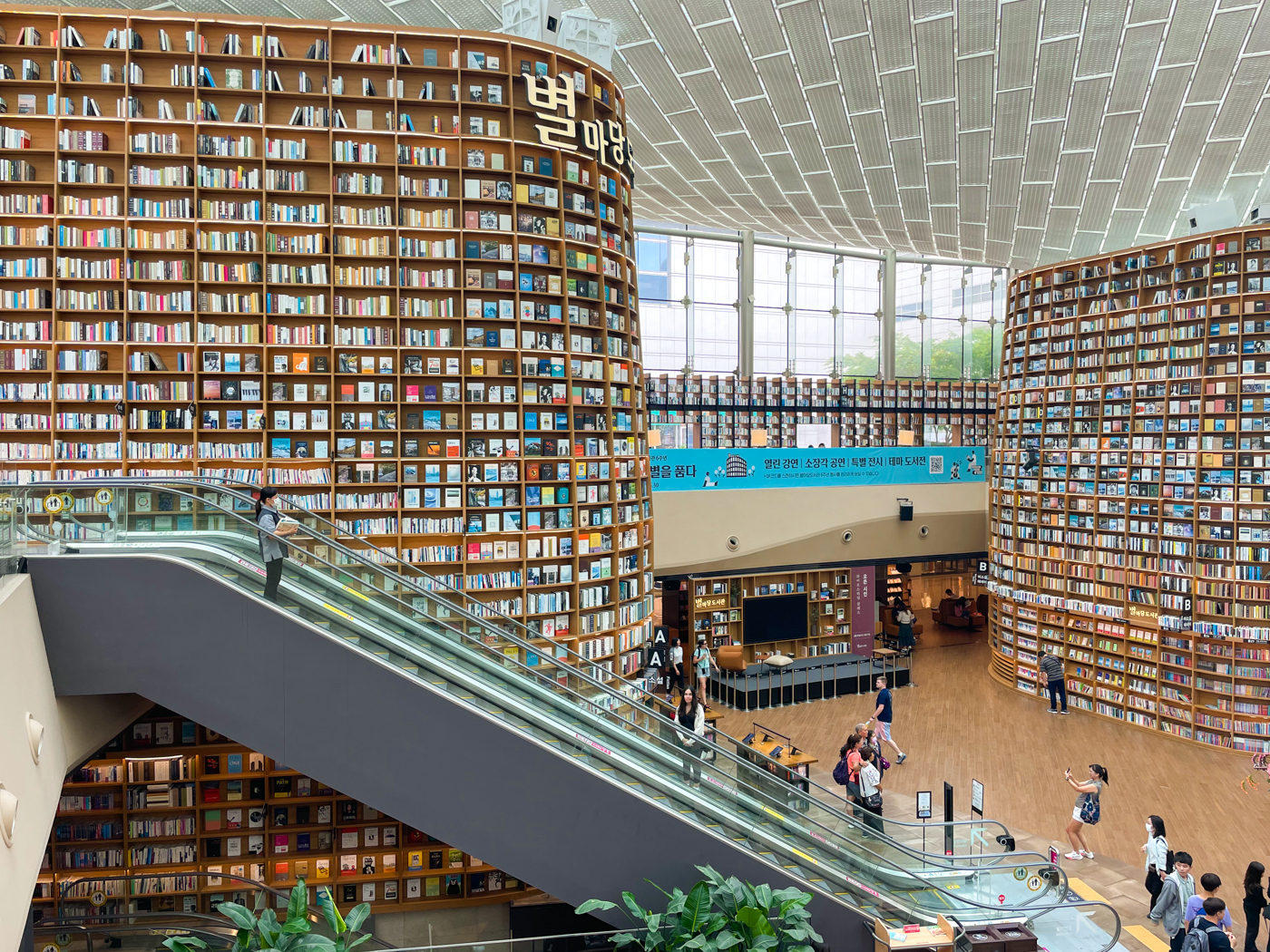
Many visitors to Seoul spend their time shopping, eating, and partying. This is one livable, lively city, crammed full of excellent skincare products, world-class vintage stores, delicious street eats, and more karaoke bars than you could possibly imagine. There’s lots to keep you entertained.
Simply strolling through the different neighbourhoods provides a way to keep costs down. I loved spending my time cafe-hopping in student-filled Hongdae, shopping in bustling Myeongdong, picking up traditional souvenirs in Insadong, and admiring the street art in Itaewon.
One particular highlight from my most recent trip was walking the 10 kilometre, or seven mile, Cheonggyecheon Stream, which runs through downtown Seoul from Cheonggye Plaza to Dongdaemun. Once a busy highway, it has since been transformed into a peaceful oasis, where friends come to chill beside the water, surrounded by plants, trees, and fun water features.
Most visitors to South Korea want to hit up the DMZ: the border between South and North Korea, and specifically the Joint Security Area (JSA) — those famous blue barracks where North and South Korean soldiers stand face-to-face. It’s the closest you can get to North Korea without actually entering it.
You’ll want to be careful, then, when you do book your DMZ tour. There are plenty of these general DMZ tours running (priced at 76,000 KRW/$56 ), but the closest you’ll get to North Korea is standing on a hill and looking into the country from afar with binoculars. You won’t visit the JSA on these trips. It is, however, a third of the price of the JSA tours, so a great option for budget travellers. These non-JSA tours are incredibly popular, so do book early to ensure you manage to get a space. You can check availability for your travel dates using the widget below:
The JSA-specific tours are even more popular, but unfortunately, they’re currently (as of early-2024) on pause. This is a common occurrence, especially during these post-pandemic years. It’s only been open to tourists for about three months in total since 2020!
VVIP Travel and Hana Tour are the two JSA tour operators to go with, so do check out their websites before your trip, just in case the tours are up and running again. Tours cost 195,000 KRW ($150) per person and last for a full day.

I knew I wanted to get out into nature while I was in South Korea, as I didn’t want my entire trip to focus around gigantic, bustling cities. This country, after all, is 70% mountains. Seoraksan National Park provided the perfect opportunity to do just that. It’s a two-hour bus ride from Seoul and when you arrive, you’ll feel as though you’re in a whole other country.
With an entrance fee of just 3,500 KRW ($2.50), this was an affordable way to see a part of the country that few tourists opt to explore. The scenery was incredible and a couple of days in town enabled us to tackle all of the most popular hikes.
Speaking of gigantic, bustling cities: Busan!
Busan often ends up being most people’s favorite spot in South Korea and there’s plenty to do while you’re there. From beach-hopping your days away (my favourite free activity!) to hitting up bustling fish markets; eating allll the street food then exploring amazing colourful villages, blanketed with murals. Busan is well-worth visiting, that’s for sure. But for us? We quickly realised that nearby Gyeongju was more our type of place.
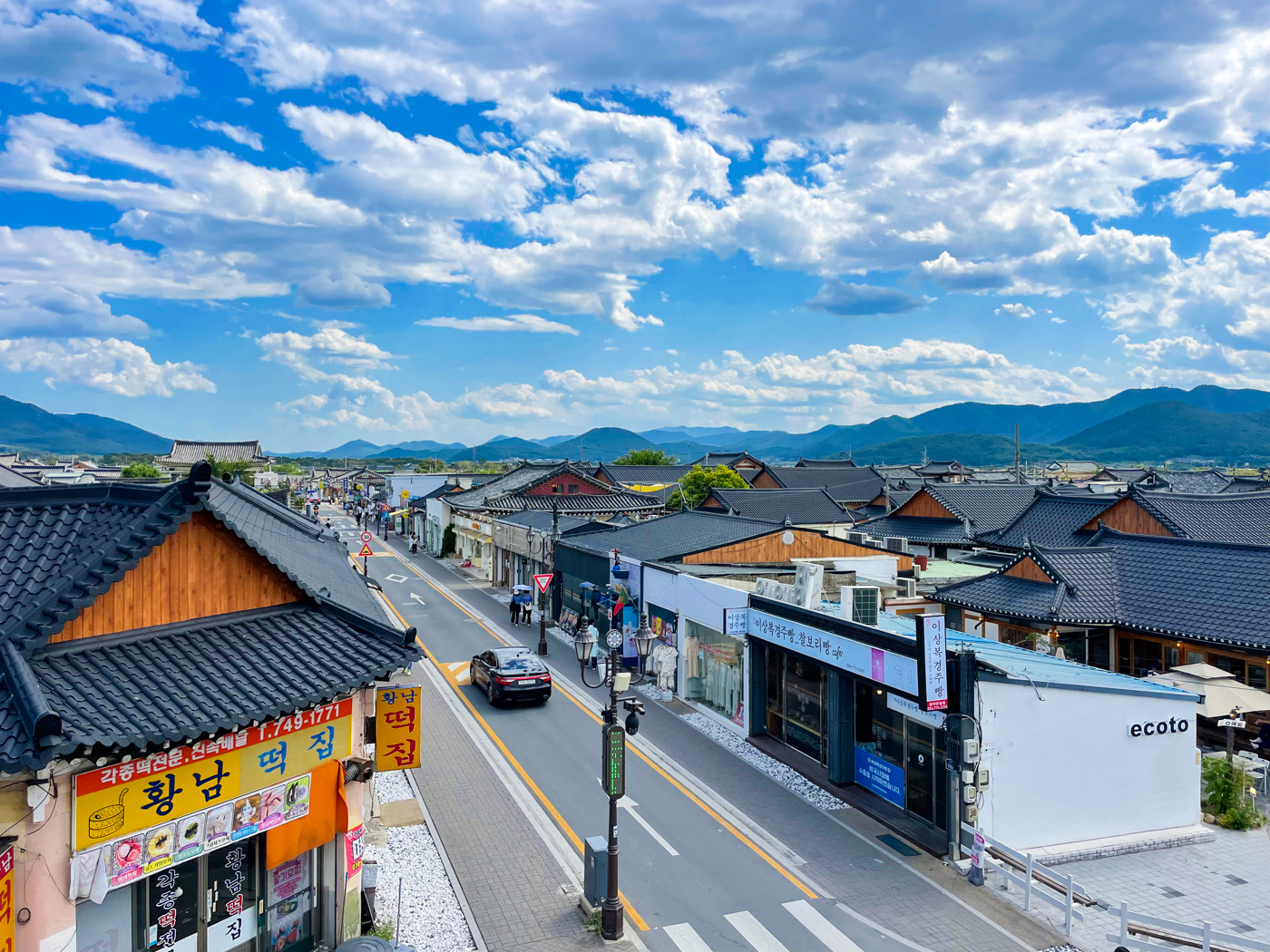
Dave and I adored Gyeongju, a compact city that’s perfect for some respite after a few days in Busan. Gyeongju is crammed full of cultural sites and attractions, from royal tombs to ancient observatories, to one of the most impressive Buddha statues we’ve ever seen. The vast majority of attractions in town were free to visit, so we spent very little money while we were there, too — an added bonus!
And I can’t write about South Korea and not include beautiful Jeju Island — the iconic volcanic island off the southern coast of the country that’s known for its beaches, waterfalls, and mountains, as well as its local delicacies. Just wait until you try the local black pork! There’s tons to do on the island — you could spend two weeks on Jeju alone — but so much of it is focused around landscapes and scenery (so much hiking!) that you can easily visit on a budget.
With all that being said, here’s a breakdown of the main activity costs you may encounter in South Korea:
- Entry to Donggung Palace, Gyeongju – 3000 KRW ($2)
- Bulguksa Temple & Seokguram Grotto, Gyeongju – 5,000 KRW ($4)
- Gyeongju Expo Park – 8,000 KRW ($6)
- Daereungwon Tomb Complex, Cheomseongdae Observatory, Woljeonggyo Bridge, Gyochon Traditional Village – Free
- Royal palaces combo ticket, Seoul – 10,000 KRW ($7.50)
- N Seoul Tower – 21,000 KRW ($16)
- Kimchi Museum entrance – 5,000 KRW ($4)
- Nanta cooking show – 44,000 KRW ($34)
- Lotte World entrance – 62,000 KRW ($47)
- Bukchon Hanok village, Dongdaemun Design Plaza, Cheonggyecheon Stream, War Memorial of Korea, National Museum of Korea, Seoul – Free
- Entrance to Seoraksan National Park – 3,500 KRW ($2.50)
- Busan Sky Capsule – 15,000 KRW ($11.50)
- Songdo cable car, Busan – 15,000 KRW ($11.50)
- Busan Tower Observatory – 7,000 KRW ($5)
- Haedong Yonggungsa Temple, Gamcheon Cultural Village, Busan – Free
- Jeongbang Waterfalls entrance, Jeju Island – 2,000 KRW ($1.50)
- Camellia Hill entrance, Jeju Island – 7,000 KRW ($5)
- Jeju Folk Village, Jeju Island – 12,000 KRW ($9)
As you can see, there’s very little that’s going to break the bank in South Korea — there’s tons of free attractions and any entrance fees are reasonable.
Over my two weeks in Korea, I averaged just $3 a day on activities and entrance fees.
The Cost of Miscellaneous Expenses in South Korea
An eSIM: A few years ago, I made the switch to eSIMs and it’s an act that’s significantly improved my travels.
I used to hate having to spend my first few hours in a new country wandering around in search of a way to get connected. There’s locating a store that will sell you one, language barriers to deal with (I was surprised to discover South Korea has one of the highest language barriers I’ve ever encountered!), various forms of ID and information you might need to bring, scams to navigate, and… well, it’s a headache.
These days, I buy my SIM cards in advance through AloSIM , which sells local e-SIMs for travellers. What that means is that you can buy your SIM card online before you arrive in South Korea, and then as soon as you land in Seoul, can switch on your phone and be online before the plane’s even come to a halt. It’s worked flawlessly for me in over a dozen countries, including South Korea.
I paid $15 for 5 GB of data for 30 days in South Korea. Readers of Never Ending Footsteps can get a 5% discount on AloSIM eSIMs by using the code FOOTSTEPS.
There’s one small detail I need to mention. Before arriving in South Korea, I read dozens of articles insisting that you need a local Korean phone number to successfully travel in the country.
Most of the taxi apps require a local number (especially if you want to pay by card in the app), and most popular restaurants operate a waitlist where they call or text you on a local number when a table is ready — if you don’t have one, you can’t join the queue!
Dave specifically bought an LG SIM card that gave you a local phone number and… we used it close to zero times. It turned out, we didn’t need to call a taxi even once and none of the restaurants we went to had waiting lists. A couple of takeaway joints that we went to required a local number to place an order, but that was it. I’m glad we had at least one SIM card with a Korean number for peace of mind but we also didn’t really need to use it, so I don’t think it’s as much of a travel essential as people say.
Travel insurance : If you’ve read any other posts on Never Ending Footsteps, you’ll know that I’m a great believer in travelling with travel insurance. I’ve seen far too many Go Fund Me campaigns from destitute backpackers that are unexpectedly stranded in a foreign country after a scooter accident/being attacked/breaking a leg with no way of getting home or paying for their healthcare. In short, if you can’t afford travel insurance, you can’t afford to travel. These costs can quickly land you with a six-figure bill to pay at the end of it.
Travel insurance will cover you if your flight is cancelled and you need to book a new one, if your luggage gets lost and you need to replace your belongings, if you suddenly get struck down by appendicitis and have to be hospitalised, or discover a family member has died and you need to get home immediately. If you fall seriously ill, your insurance will cover the costs to fly you home to receive medical treatment.
I used SafetyWing as my travel insurance provider in South Korea. They provide worldwide coverage, don’t require you to have a return ticket, and even allow you to buy coverage after you’ve left home. If you’re on a long-term trip, you can pay monthly instead of up-front, and can cancel at any time. Finally, they’re affordable, and have a clear, easy-to-understand pricing structure, which is always appreciated.
The cost of two weeks of travel insurance with SafetyWing was $21, or $1.50 a day.
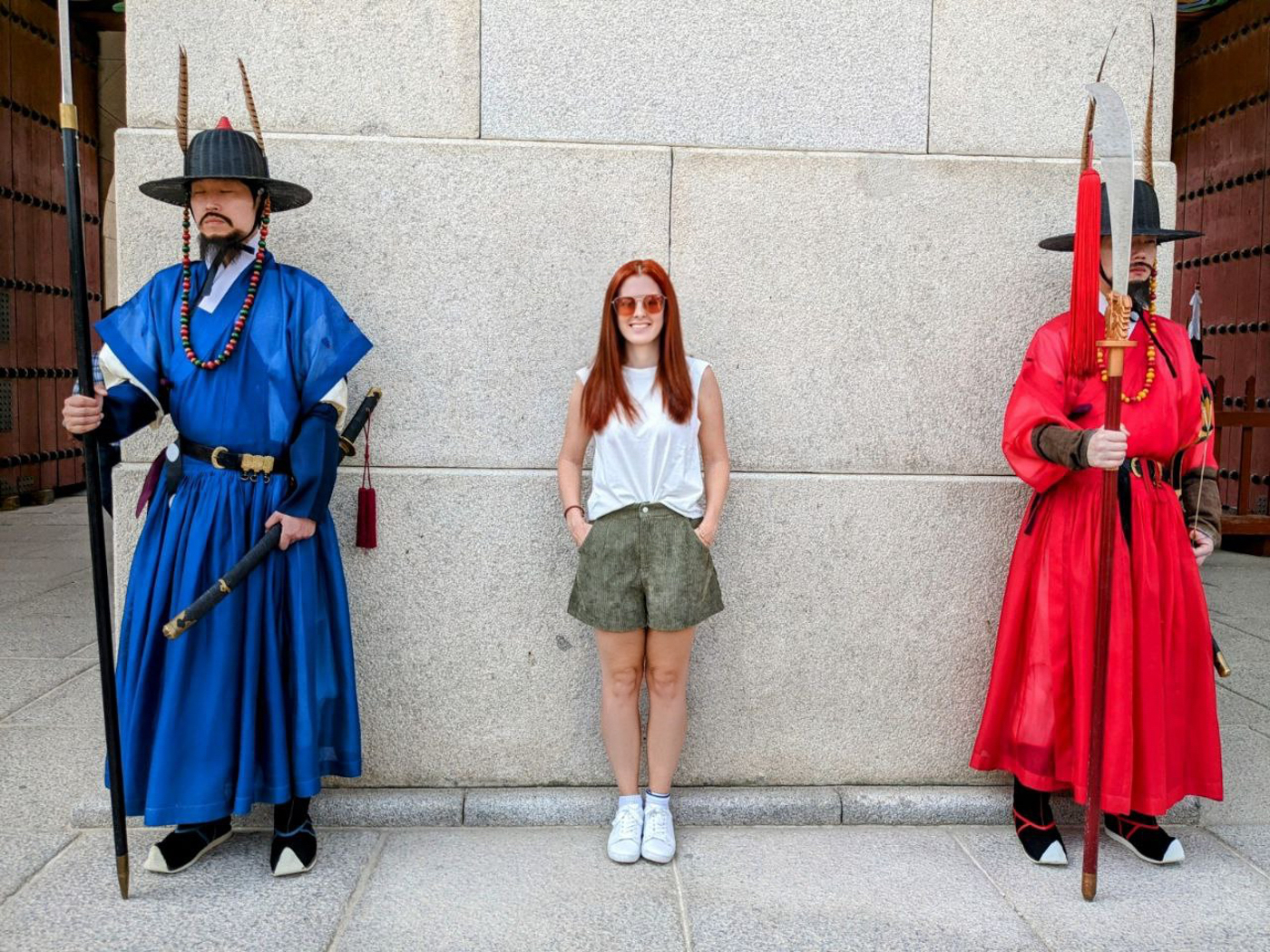
How Much Does it Cost to Travel in South Korea?
It’s time to tally up all of my expenses to see my total travel costs! In U.S. dollars, my average daily costs in South Korea were:
- Accommodation: $104.50 per day
- Transportation: $10.20 per day
- Food: $19 per day
- Activities/Entrance Fees: $3 per day
Average amount spent in South Korea: $137 a day!
As I mentioned in the accommodation section, I did splurge a little when it came to accommodation, so if you’re on a tighter budget, that’s where you’ll be able to cut costs.
For example, if you’re a backpacker who plans on staying in dorm rooms, you can expect to spend $18 a night on accommodation, making your total daily costs around $50 a day .
Alternatively, if you’re part of a couple and staying in budget-to-mid-range guesthouses, you’ll be looking at $50 a night for accommodation, which will make your daily total costs $82 a day .
So what do you think? Is South Korea more or less expensive than you expected? Let me know in the comments below!
Lauren juliff.
Lauren Juliff is a published author and travel expert who founded Never Ending Footsteps in 2011. She has spent over 12 years travelling the world, sharing in-depth advice from more than 100 countries across six continents. Lauren's travel advice has been featured in publications like the BBC, Wall Street Journal, USA Today, and Cosmopolitan, and her work is read by 200,000 readers each month. Her travel memoir can be found in bookstores across the planet.
Related Posts

The Cost of Travel in Mauritius: My Detailed Budget Breakdown

The Cost of Travel in Thailand: My Detailed Budget Breakdown

2023: My Travels in Review

How to Spend Three Perfect Days in Delhi: An In-Depth Itinerary

Pushkar Travel Guide: 11 Things to Do in Pushkar
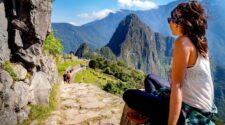
The Cost of Travel in Peru: A 2023 Budget Breakdown
11 comments.
Thank you so much for sharing all your infos, they are always clear and straight to the point which makes it really handy, i have been reading you for a while and always enjoy, i am now doing a 3 months trip through bali, south korea and japan, and your infos on south korea are going to be usefull, once again, Lauren,thank you!
Thanks a lot for your excellent article Lauren! South Korea is much more affordable than I thought it was. And apparently there’s nature too :) We just decided against a South Africa trip this September due to the safely situation and power outages, but now adding South Korea to the wishlist for when the boy is a little older and traveling purely by public transport is more feasible.
We’ve been living in the SoKorea for almost 2 years now. A couple things …
* DMA/JSA tours ARE available through visitjsa.com. US military and USDoD-associated individuals have first dibs, but we booked the end of July as “general tourists” without an issue. These tours leave from right OUTside several US military bases in SoKorea, include lunch and are half the price of just DMZ tours from Seoul. There is a dress code, which is STRICTLY enforced.
* In regard to the language barrier. Many Koreans – especially “younger” generation Koreans – DO know English. They, as a whole, are EXTREMELY shy about using it, though. I have found most have excellent English skills – much better than my Korean skills!! Give grace here, folks. And, download the Papago app as EVERYONE (Koreans & foreigners) uses this to communicate. Don’t be shy – just Papago it!
* Korean phone number – during covid, you needed a Korean number to register at restaurants and retail shops for contact- tracing/tracking purposes. We haven’t been anywhere lately that required a Korean # to get a table or anything.
* For taxis, subway directions/maps, download Kakao – there are various Kakao apps – 1 for subway, 1 for taxis, etc.
* Credit cards – AMEX tends to work more places than my Chase or Citibank VISA cards. I carry a couple hundred kwon with me just in case my cc doesn’t work. If you have significant leftover kwon when you leave, I’d suggest looking for Americans at the airport and strike up a conversation – with so many US military bases here, there’s a good chance someone will buy your kwon off you at a reasonable exchange rate.
Thanks for all the extra information!
The language barrier wasn’t a criticism or complaint — just in case you interpreted it as one! I came across a few younger Koreans who spoke excellent English and I didn’t personally have any problems with the lack of English spoken. It was just a brief sidenote that after travelling to 100-odd countries, the language barrier was higher in South Korea than the vast majority of other places I’ve visited.
I used Papago and Naver and Kakao, etc while I was in the country, but as this is an article about the cost of travel, I didn’t want to turn it into a travel guide and add too much detail that was unrelated to the costs. I’ll definitely publish a more general travel guide over the coming months!
The Korean phone number thing wasn’t a reference to COVID contact tracing but rather that the popular restaurants operate waitlists — and to join those waitlists, you’ll sometimes be asked to give your phone number so that they can text/call/KakaoTalk you when your table is available. I had one restaurant turn me away because Dave wasn’t with me so I couldn’t give them a local number, and a couple of takeaway places, where you ordered from a screen, required a local number to confirm the order. I read about this on r/KoreaTravel ( example ) quite a bit before getting here — it wasn’t as bad as expected but it does still seem to be a good idea to get a local number just in case.
Good to know that AMEX works well — the one bank we don’t have accounts with! I’m not American so wasn’t sure if US cards would fare better than ours.
Great to see new articles again! Cant wait to hear what you have been up to!
Thanks so much! I’m relieved to see I still have readers after my extended break! Lots to share from the past year, but the biggest news is probably gaining my Australian permanent residency and setting up a new home base in Melbourne! Other than that, lots of travel in Southeast Asia, as always :-)
Hi! Thanks so much for this :) we are travelling in October to South Korea & Tokyo and I too have read about needing a korean number. Do you happen to know if you need a local number for Kakao app? Thank you!
Hi Lucy! Yes, you can use an international number to sign up for Kakao, but the app won’t let you add a credit or debit card. You’ll need to pay the driver directly with cash.
Just wanted to let you know I found this post incredibly helpful as I´m planning a South Korea trip for later this year! Great to have an idea of costs, and you´ve made me consider putting Jeju island on our itinerary (would mean cutting time in other countries on the way – still figuring it out!).
Thank you so much for all the info! I just have one more question: Do you happen to know of any budget travel agency that organizes Korean land tours for a week or so? I found a few, but the prices are rather high.
wow..learnt so much from your article. thanks a ton. planing a 4day trip to S.Korea and 4 days in Taiwan… do you have any info on taiwan? also is S.Korea clean and safe? Im planning to stay in Seoul. would love to know where i can do some clothes shopping……..also are there any night markets around?
Leave a reply Cancel reply
Your email address will not be published. Required fields are marked *
Meet Lauren Juliff
Nomadic Matt's Travel Site
Travel Better, Cheaper, Longer
South Korea Travel Guide
Last Updated: July 17, 2023
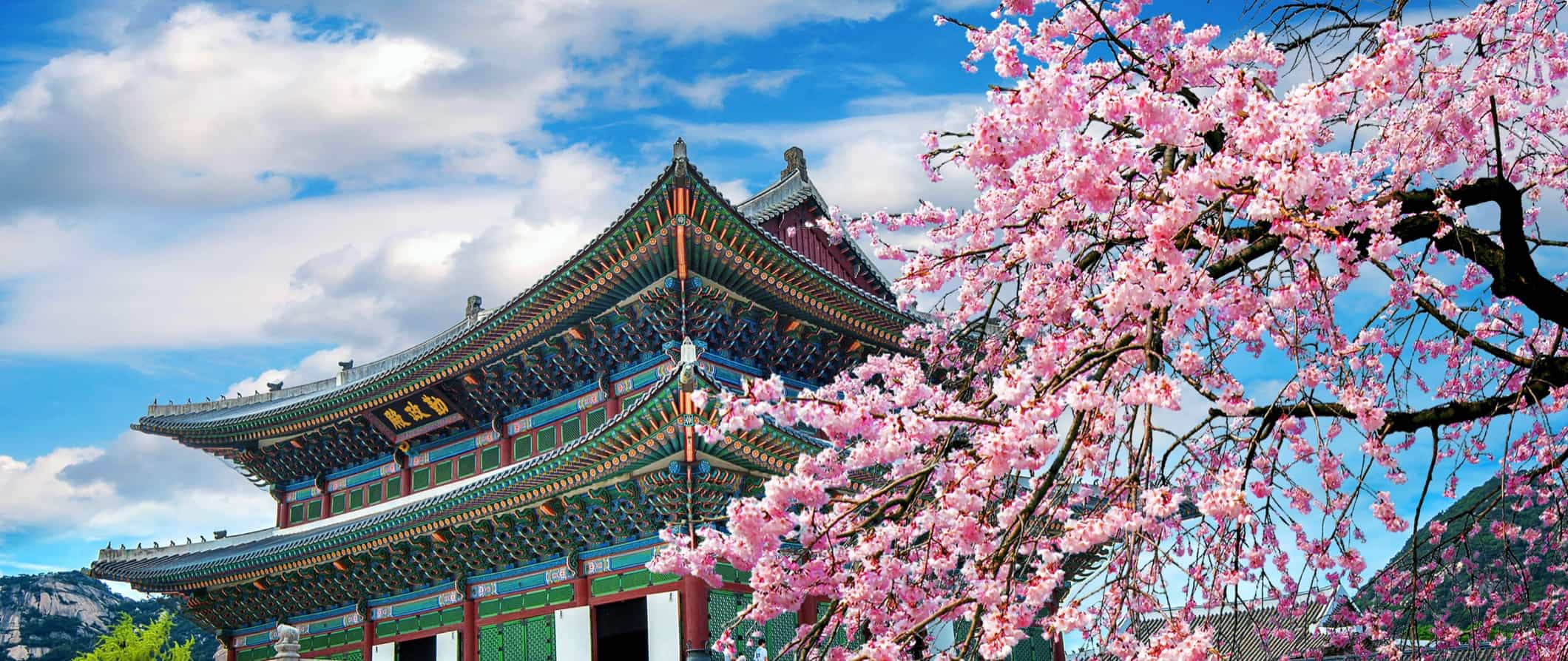
Though South Korea is small (about the size of the US state of Indiana), it punches well above its weight in terms of things to see and do. Boasting a vibrant culture, incredible history, natural beauty, delicious food, and a wild nightlife, it’s home to both major cities and untouched nature, offering something for every traveler.
Seoul, the capital city and fourth-largest metropolitan area in the world (over half the country’s population of 50 million is concentrated here), is a lively hub for food lovers and partying. But while it gets all the attention, there is much more to explore, including 22 national parks, lush Jeju Island, and the infamous Demilitarized Zone (DMZ) bordering North Korea.
Best of all, since South Korea is a manageable size, you can see a good portion of it in a limited amount of time. The transportation here is modern, clean, and efficient, so it’s easy to get around quickly.
The country is also a foodie’s paradise, with cheap street food and delicious dishes like bibimbap, kimchi, and the famed Korean barbecue.
It’s one of my favorite countries in the world and one that I think is super under the radar and often overlooked by travelers. You never see the tourist crowds found in other Asian countries.
This travel guide to South Korea can help you plan your trip, save money, and make the most of your visit.
Table of Contents
- Things to See and Do
- Typical Costs
- Suggested Budget
- Money-Saving Tips
- Where to Stay
- How to Get Around
- How to Stay Safe
- Best Places to Book Your Trip
- Related Blogs on South Korea
Top 5 Things to See and Do in South Korea
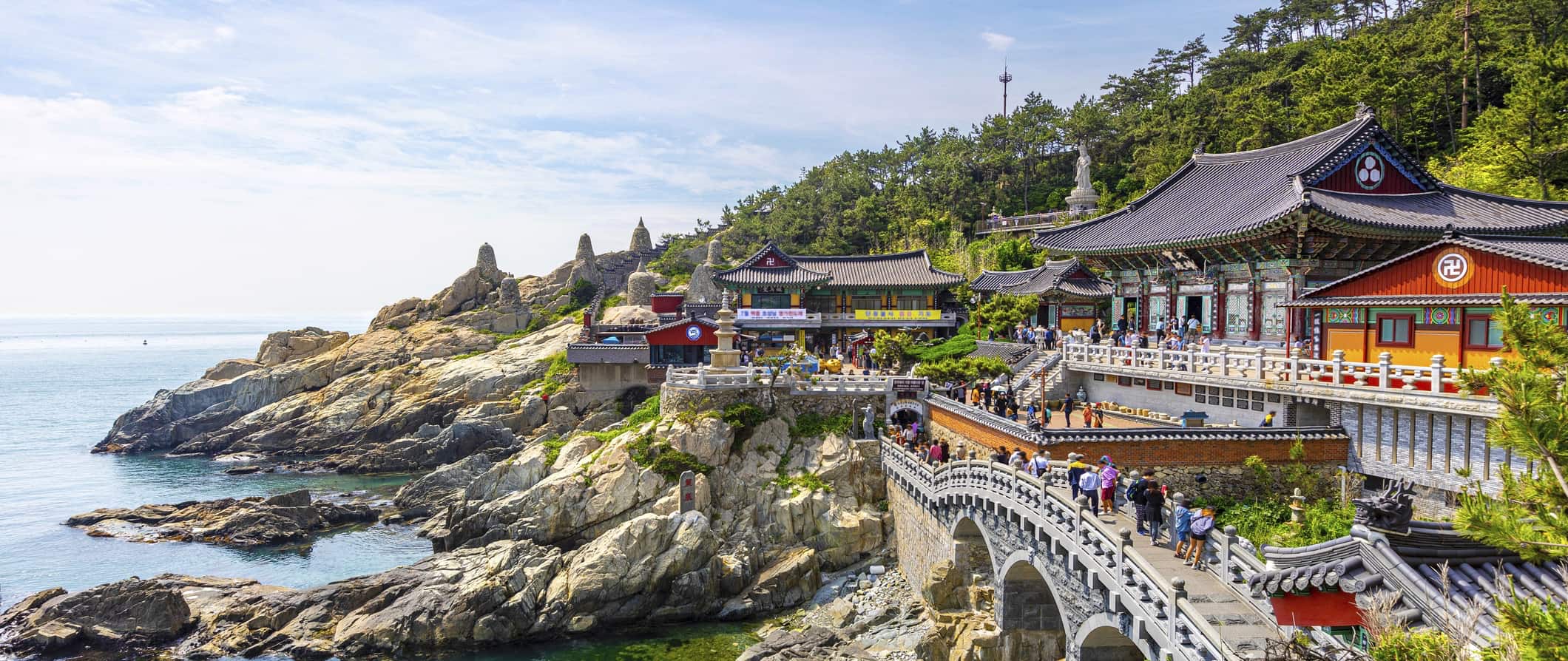
1. Explore Seoul
Korea’s capital has a little bit of everything. It’s a bustling metropolis and global technology hub, with sleek and modern neighborhoods like Gangnam and iconic sights like the Lotte World Tower, the sixth-tallest building in the world. Yet there is a lot of history here too, including many museums, palaces, and temples, among them five UNESCO World Heritage Sites. When you’re done exploring for the day, Seoul has a robust street food scene, countless trendy restaurants, and fast-paced, soju-driven nightlife. You could easily spend weeks here and never get bored.
2. Tour the DMZ
The Demilitarized Zone (DMZ) separates North and South Korea and, despite the name, is the most militarized border in the world. You can only visit the Joint Security Area (JSA), which has military personnel from both sides, on a guided tour, but it’s a unique experience and an important way to learn about this ongoing conflict (the war started in 1950 and has not officially ended). On the tour, you’ll be able to actually stand in North Korea, visit the Third Tunnel of Aggression (which North Korea dug to sneak soldiers across the border), see the Freedom Bridge, and catch glimpses of North Korea from the Unification Observatory. Guided tours of the DMZ start from 80,000 KRW.
3. Visit Jeju Island
This volcanic, semitropical island is a popular domestic vacation spot. It’s accessible via cheap daily flights from Seoul that take just one hour. Known as “the Hawaii of Korea,” it’s a natural paradise, home to the tallest mountain in Korea (Mount Hallasan), lava tubes, beautiful beaches, and countless hiking and walking trails. Other attractions include visiting mythic Jeju Stone Park, wandering the Yeomiji Botanical Gardens, and watching the haenyeo divers — women who dive without any protective equipment to gather underwater treasures like shellfish and seaweed, which they then sell on the beaches. You can visit the Jeju Haenyeo Museum as well to learn more about this cultural practice that dates back centuries.
4. Sing karaoke
Known as noraebang , this is a cultural phenomenon and something worth experiencing at least once while visiting Korea. While the karaoke machine was originally invented in Japan, Koreans have adopted the pastime and made it their own. Here, you rent out a private room with a group of friends (instead of singing in a public bar, as is often the case in Western countries). Pricing is determined by the hour, with rates varying wildly depending on the number of people, time of day, day of the week, and whether snacks and drinks are included. Average group karaoke rates range from 5,000 to 15,000 KRW.
5. Step back in time at a hanok village
Other things to see and do in south korea, 1. visit changdeokgung palace.
One of the Joseon dynasty’s Five Grand Palaces, this 15th-century complex in Seoul was built in harmony with the natural environment at the foot of Bugaksan Mountain. Changdeokgung, or “Palace of Prospering Virtue,” was the main royal residence for 13 kings over the course of three centuries. The complex sprawls over 110 acres, 60% of which is taken up by the beautiful Huwon Secret Garden, home to over a hundred species of trees, flowers, and other plants (some of the trees here are over 300 years old!). The main draw is wandering around the exterior, with its restored buildings and gates, though you can also go inside Injeongjeon Hall, the palace’s throne room. Admission to the complex is 3,000 KRW; the Secret Garden is an additional 5,000 KRW. There are guided tours in English as well.
2. Explore Busan
Korea’s second-largest city is located just two hours from Seoul on the KTX high-speed bullet train. A coastal city, Busan boasts great beaches, such as Haeundae Beach, with its miles of sand, and Gwangalli Beach, known for its sunsets. Gamcheon Culture Village, the “mural village of Korea,” is a hillside neighborhood rich in street art and covered in murals, and nearly all the houses are painted bright colors. It’s a great place to wander around for a few hours, popping into the unique shops, cafés, and restaurants.
3. See the National Museum of Korea
If you visit only one museum in Korea, make it this one. Located in Seoul, it covers all aspects of Korean culture, art, and history, from prehistory to the early modern era. It also contains many national treasures and artifacts that have been designated as having special importance and value in Korean culture and history. Some of the most important ones include the sixth-century inscribed Bukhansan Monument, detailing military expansions; sixth-century gilt-bronze Buddhist statues; and the 10-story Gyeongcheonsa Pagoda, which dates to the 14th century. Don’t miss the exterior gardens, which feature indigenous plants, reflecting pools, and traditional Korean sculptures and lanterns. Admission to the main exhibitions and children’s museum is free.
4. Take a food tour
As a foodie, learning about a culture through its food is one of my favorite things to do while traveling. Korea has an incredible variety of amazing dishes to try, as well as a bustling (and delicious) street food scene. Taking a food tour with an experienced guide is one of the best ways to gain a deeper understanding of Korean cuisine. O’ngo Food offers a variety of tours in Seoul, Busan, Jeonju, and Jeju, with prices starting from 70,000 KRW per person.
5. Visit Gyeongbokgung Palace
Originally built in the 14th century by the kings of the Joseon dynasty, this palace in Seoul served as the seat of the government for two hundred years until it was destroyed by a fire and abandoned for centuries. Since the 19th century (and still today), it has been undergoing renovations to restore the complex to its former glory. It is considered the most stunning of all five royal palaces in Seoul, featuring grand gates, open courtyards, and terracotta-topped buildings set against the backdrop of Mount Bugak. In addition to wandering through the complex, you can also go into the many administrative halls and residential chambers set up to resemble the palace’s heyday. You can watch the changing-of-the-guard ceremony as well, every day except Monday. The National Palace Museum and the National Folk Museum are also located in the complex. Admission is 3,000 KRW.
6. See the cherry blossoms
While cherry blossoms are often associated with Japan, festivities surrounding the blooms are incredibly popular in Korea as well. Here, the season runs from late March to late April, with many festivals throughout the country. Just be prepared for crowds at the more popular ones, like the Yeouido Cherry Blossom Festival in Seoul.
7. Try taekwondo
Korean’s native martial art, taekwondo, is characterized by high kicks and punches and, like all such disciplines, emphasizes mental training. An Olympic event since 2000, taekwondo has only grown in popularity in recent years and is a point of pride in Korean culture. Kang’s Global Taekwondo in Seoul offers classes to adults and foreigners that cost around 43,000 KRW for one hour.
8. Learn to cook classic Korean foods
If you’d like to take your knowledge of Korean food one step further, take a cooking class, where you’ll learn to prepare classics like bibimbap, kimchi, bulgogi, and Korean pancakes. Hello K Cooking in Seoul offers a class where you’ll learn how to cook three main dishes and one stew — recipes and skills that you can bring home with you. Classes are 107,000 KRW.
9. Go hiking
Korea is an incredibly mountainous country, so hiking is a favorite pastime for locals. Be sure to immerse yourself in nature while visiting this lush land. There are even hiking spots near the bigger cities if you don’t have enough time or don’t want to venture too far afield. Bukhansan National Park, just outside Seoul, is a popular place to go hiking, offering panoramic views over the capital (expect crowds due to its proximity to the city, though). Yet with 22 national parks spread across the country, there are plenty of opportunities to escape the crowds (including lots of guided hikes if you don’t want to organize one yourself). For a multiday hike, the Jirisan Ridge Trek in Jirisan National Park is one of the most famous — a four-day walk from mountain shelter to mountain shelter.
10. Wander around Seoul Olympic Park
In 1988, Seoul hosted the Summer Olympics, which was only the second time the summer games had been held in Asia (the first was in Tokyo in 1964). Today, you can visit the massive park where the games were staged, and while Olympic Park does have many sports facilities, there’s much more to explore here as well. The park is divided into four sections, focusing on the arts, history, nature, and sports. In the arts section, you’ll find the SOMA Museum of Art and a park with over 200 sculptures, while in the history section, you can see the third-century defensive Mongchontoseong Earthen Fortifications, excavated dugout huts and storage pits left in the state in which they were uncovered. You can easily spend an entire afternoon here. Admission to the park is free.
11. Discover Jirisan National Park
Located in the southern part of the country (Namwon is the nearest city), this park is named after Jirisan (Mt. Jiri for short), the tallest mountain on mainland Korea. As it’s South Korea’s first national park (as well as its largest), hiking trails and cultural sites abound. You can visit seven major Buddhist temples and see several of Korea’s national treasures of ancient carved stonework from the seventh to the tenth centuries. One of the most important sites here is Samseonggung, or Three Sages Palace, a mountainside shrine dedicated to the legendary founders of Korea. Admission to the park is 1,600 KRW.
South Korea Travel Costs
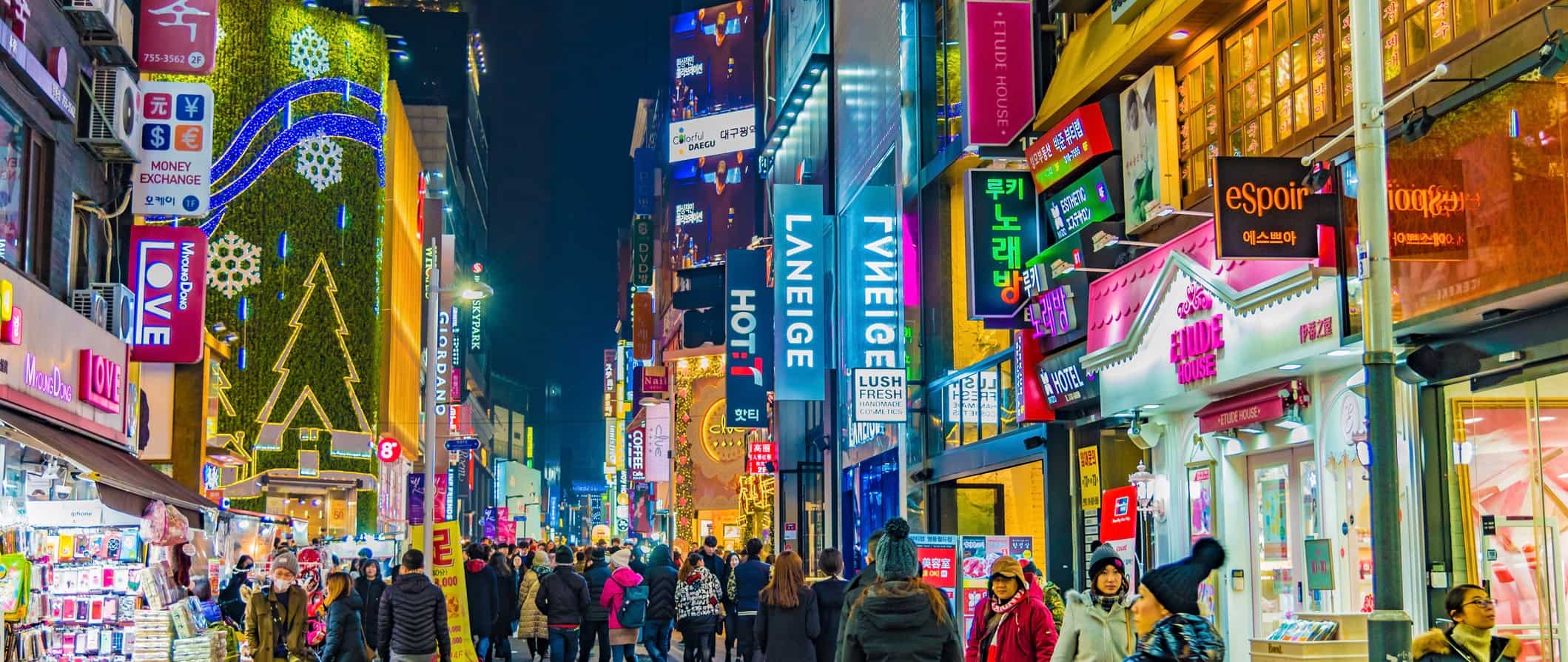
Cheap hotel rooms start at 28,000 KRW for a room that sleeps one, while a double room generally costs at least 40,000 KRW. Expect basic amenities like Wi-Fi, a TV, air conditioning, and an electric teapot. Breakfast is usually not included at budget hotels.
Airbnb is available around the country, with private rooms starting at 25,000-30,000 KRW. For an entire home or apartment, expect to pay at least 50,000-70,000 KRW per night.
While wild camping is illegal in Korea, there are plenty of campgrounds should you want to pitch a tent. Expect to pay 7,000-20,000 KRW for a plot with access to bathroom and shower facilities, and usually even Wi-Fi.
Food – Korean cuisine has developed its own traditions and flavors over the centuries, with a unique emphasis on using uncooked, fermented, and pickled vegetables. Traditional Korean meals are often composed of a variety of side dishes, eaten with short-grain rice. A meal isn’t considered complete unless there’s kimchi on the table.
Common dishes include bulgogi (marinated, grilled beef), samgye-tang (chicken and ginseng soup), bibimbap (a mixed rice bowl), chap chae (a glass noodle dish), and many other noodle and rice dishes. Popular street foods include hotteok (a sweet, filled pancake), tteokbokki (spicy cylindrical rice cakes), and bungeo-ppang (a fish-shaped pastry filled with red bean paste).
Dining out in South Korea is relatively inexpensive. A meal at a casual restaurant serving traditional Korean food is around 9,000-15,000 KRW, while a three-course meal at a mid-range restaurant is around 25,000-30,000 KRW. Expect higher prices in larger cities.
Western food is more expensive. Expect to pay at least 20,000 KRW for a pasta dish at an Italian restaurant.
In terms of fast food, a combo meal (think McDonald’s) is around 7,000 KRW, while a burger is around 4,500 KRW. A typical Korean street food dish is 1,500-3,000 KRW.
A pint of beer is 4,000-5,000 KRW, a glass of wine is 6,000 KRW and up, and a cocktail is 7,000 KRW and up. A latte or cappuccino is 5,000 KRW.
If you cook your own food, expect to pay 50,000-70,000 KRW per week for basic staples like rice, pasta, vegetables, and some meat. Shopping at local markets is the best way to get great fresh produce for cheap.
Backpacking South Korea: Suggested Budgets
On a backpacking budget of 75,000 KRW per day, you can stay in a hostel dorm, cook all your meals, use public transportation and intercity buses to get around, skip the alcohol, and do mostly free activities like walking tours and hiking.
On a mid-range budget of 135,000 KRW per day, you can stay in a private Airbnb or cheap hotel, eat out for most meals at casual restaurants, enjoy a few drinks, take the occasional taxi as well as trains between cities, and do more paid activities like museum visits and food tours.
On a “luxury” budget of 255,000 KRW or more per day, you can stay in a nicer hotel or entire Airbnb apartment, eat out pretty much anywhere you want, drink at the bar, get a high-speed rail pass, and do as many guided tours and activities as you want. This is just the ground floor for luxury, though. The sky is the limit!
You can use the chart below to get an idea of how much you need to budget daily. Keep in mind these are daily averages — some days you’ll spend more, some days less (you might spend less every day). We just want to give you a general idea of how to make your budget. Prices are in KRW.
South Korea Travel Guide: Money-Saving Tips
I find South Korea to be one of the best value countries out there. It’s a really affordable place to visit. Accommodation can add up but food and drinks are generally cheap. Here are some ways to save money when you travel around South Korea:
- Visit the free attractions – With countless museums, shrines, temples, historic neighborhoods, and parks, Korea is filled with opportunities to become immersed in its culture. Many of the nation’s museums and cultural attractions are free, so don’t pass them up!
- Purchase a KORAIL Pass – If you want to travel by train, getting a rail pass is the most economical way to do so. You’ll get unlimited train travel for the time period you choose (2-5-day increments). Prices start at 121,000 KRW.
- Get a transit pass – Most major cities in Korea offer a day pass for public transit, which means great savings if you plan to hop around using buses and subways. Seoul’s day pass costs 15,000 KRW, though the longer you stay, the more you’ll save (a seven-day pass is 64,500 KRW).
- Buy a city pass – If you plan on visiting a lot of attractions, buy a city pass . Seoul and Busan both offer ones that include admission to popular sights, a transit pass, and discounts to restaurants and other attractions. A one-day pass starts at 33,000 KRW.
- Eat from the convenience stores – Convenience stores in Korea offer not only snacks and drinks but prepared boxed meals and cheap alcohol. If you’re on a tight budget, shop in those.
- Take the bus – While the trains are fun, the cheapest way to get around Korea is by bus. They take longer but are much cheaper, so if you have the time, opt for long-distance buses. Just show up at the bus station to reserve your tickets in advance, as most websites and apps are in Korean.
- Stay with a local – Couchsurfing lets you stay with a local for free, cutting your accommodation costs drastically. You’ll get to spend time with someone who can share their tips and advice in exchange for your own travel stories and culture. You can also use the app to meet people for activities (coffee, museum visits, etc.) if you don’t feel comfortable staying with a stranger.
- Drink like the locals – Soju, the national alcohol of Korea, is incredibly cheap, as is domestic beer. Just be careful to not let it sneak up on you — both monetarily and physically. Korea’s drinking culture is infamous!
- Stay in capsule hotels – If you don’t want to Couchsurf or stay in hostels but still want to save money, capsule or pod hotels are great options. These offer just what you need to sleep (a small, basic pod) yet can be surprisingly comfy and much more affordable than a traditional hotel. Prices start as low as 45,000 KRW per night.
- Bring a water bottle – The tap water here is safe to drink, so bring a reusable water bottle to save money and reduce your plastic use. LifeStraw is my go-to brand, as its bottles have built-in filters to ensure that your water is always clean and safe.
Where to Stay in South Korea
South Korea has plenty of budget-friendly hostels and guesthouses. Here are some of my recommended places to stay when you visit:
- Time Travelers Relax Guesthouse (Seoul)
- Zzzip Guesthouse (Seoul)
- Time Travelers party Hostel (Seoul)
- INSIDE Busan (Busan)
- Jeju Hiking Inn (Jeju)
- Backpacker’s Home (Jeju)
How to Get Around South Korea
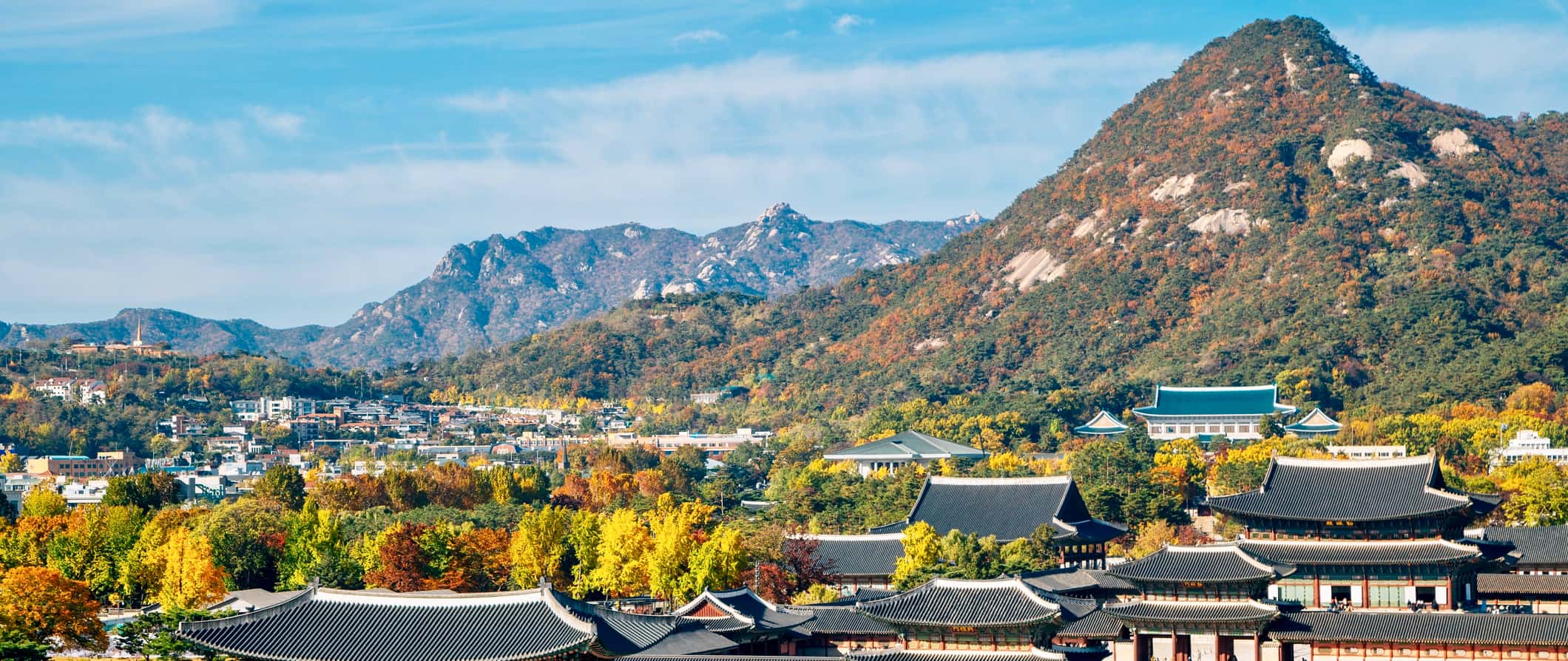
Bus – Taking a long-distance bus is the cheapest and most popular way to get around the country. There are two types: express (which makes few to no stops) and intercity (which travels between smaller destinations and makes more stops).
Your best bet for reserving tickets in advance is to go directly to the bus terminal, as most bus websites and booking apps are in Korean and only accept Korean credit or debit cards.
Pricing depends on what class ticket you choose: standard, luxury, or premium. The four-hour bus ride from Seoul to Busan costs around 36,000 KRW for a standard ticket, Incheon to Busan takes just over four hours and costs 38,000 KRW, and Seoul to Daegu is 29,000 KRW and takes just under four hours.
Train – South Korea has a robust train system that can take you all over the country. Korean Train Express (KTX) is the country’s bullet train, regularly running at speeds up to 305 kilometers (190 miles) per hour. However, these only go between major cities, have limited schedules, and are more expensive, so KTX may not always be the most convenient choice.
KORAIL (the national railway service) operates slower-speed, intercity trains that offer a wider range of schedules and destination choices. You can also get the unlimited KORAIL Pass, which is offered exclusively to international tourists. A two-day adult pass is 121,000 KRW; a five-day adult pass is 210,000 KRW.
As a comparison of the two train types: the journey from Seoul to Busan on a KRX train costs around 90,000 KRW and takes 2.5 hours, while on a regular intercity train, it takes 5.5 hours and costs 47,500 KRW.
The further out you book, the cheaper KTX train prices get, while intercity prices stay about the same. You can book up to a year in advance.
Flying – South Korea is so small that flying around the country doesn’t really make sense. Trains can get you anywhere pretty quickly. However, if you’re very pressed for time and have cash to burn, there are a few budget airlines offering domestic flights between major cities. Most are around one hour long.
The flight from Seoul to Busan is around 30,500 KRW, Seoul to Jeju is 55,000 KRW, and Busan to Jeju is 22,000 KRW. However, you can find flights even cheaper when you book further in advance.
Low-cost airlines in South Korea include the following:
Car rental – Renting a car isn’t incredibly cheap in South Korea. However, it is one of the best ways to explore all the natural wonders that the country has to offer, many of which are inaccessible by public transportation. Expect to pay around 50,000-55,000 KRW per day on a multiday rental. Drivers need to be at least 21 years old.
When to Go to South Korea
Generally, the best times to visit South Korea are March-May and September-November. During these periods, the weather is mild, with temperatures of 10-24°C (50-75°F); prices for accommodation and transportation are lower; and there are fewer crowds.
In the spring, the cherry blossoms are in bloom all over the country, while the fall brings the beautiful colors of the changing leaves. Also, if you plan on doing a lot of hiking, the fall is the best time to visit.
The summer starts with monsoon season, from June through mid-July, and the rest of the summer is hot and humid in the cities (though it cools down in the mountains and along the coasts). Prices for accommodation are also very high during this time.
Winters in South Korea get very cold, with temperatures dipping as low as -6°C (21°F), so unless you plan on skiing, visiting from December through February might not be the best option (though the temples and landscapes look beautiful covered in snow).
How to Stay Safe in South Korea
South Korea is an incredibly safe place to backpack and travel around. Petty crime is rare here, though it never hurts to be cautious on public transportation and around popular tourist landmarks. Always keep your wallet and valuables secure and out of reach, just in case. Violent crime is even more rare.
Solo female travelers should feel safe here. However, the standard safety precautions apply as always. For specific tips, consult one of the many solo female travel blogs on the web.
While scams are super rare in South Korea, to avoid getting ripped off, you can check out this list of common travel scams to avoid .
When hiking, always bring water and sunscreen. Be sure to check the weather before you depart and dress accordingly.
Earthquakes occur regularly in the region, so it’s best to be prepared and download the Emergency Ready app, which the Korean government developed to provide information in English to foreign residents and tourists. It has all kinds of advice and tips for natural disasters, shows you where nearby emergency shelters are, and sends out warnings and notifications should a disaster occur.
If you do experience an emergency, dial 112 for assistance.
Always trust your gut instinct. Make copies of your personal documents, including your passport and ID, and forward your itinerary along to loved ones so they’ll know where you are.
South Korea Travel Guide: The Best Booking Resources
These are my favorite companies to use when I travel. They consistently have the best deals, offer world-class customer service and great value, and overall, are better than their competitors. They are the companies I use the most and are always the starting point in my search for travel deals.
- Skyscanner – Skyscanner is my favorite flight search engine. They search small websites and budget airlines that larger search sites tend to miss. They are hands down the number one place to start.
- Hostelworld – This is the best hostel accommodation site out there with the largest inventory, best search interface, and widest availability.
- Booking.com – The best all around booking site that constantly provides the cheapest and lowest rates. They have the widest selection of budget accommodation. In all my tests, they’ve always had the cheapest rates out of all the booking websites.
- Get Your Guide – Get Your Guide is a huge online marketplace for tours and excursions. They have tons of tour options available in cities all around the world, including everything from cooking classes, walking tours, street art lessons, and more!
- SafetyWing – Safety Wing offers convenient and affordable plans tailored to digital nomads and long-term travelers. They have cheap monthly plans, great customer service, and an easy-to-use claims process that makes it perfect for those on the road.
- LifeStraw – My go-to company for reusable water bottles with built-in filters so you can ensure your drinking water is always clean and safe.
- Unbound Merino – They make lightweight, durable, easy-to-clean travel clothing.
- Top Travel Credit Cards – Points are the best way to cut down travel expenses. Here’s my favorite point earning credit cards so you can get free travel!
South Korea Travel Guide: Related Articles
Want more info? Check out all the articles I’ve written on Asia travel and continue planning your trip:
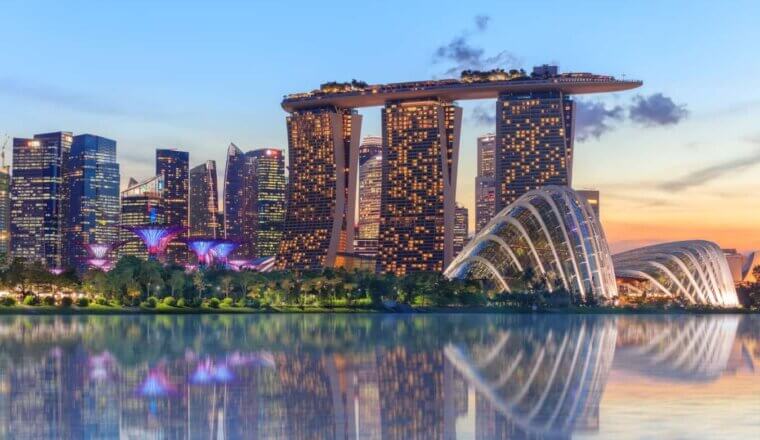
The 5 Best Hotels in Singapore
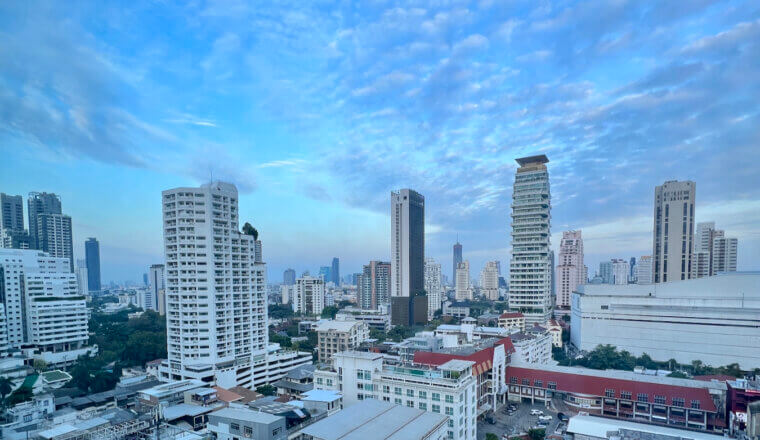
The 7 Best Hotels in Bangkok

The 4 Best Hostels in Singapore
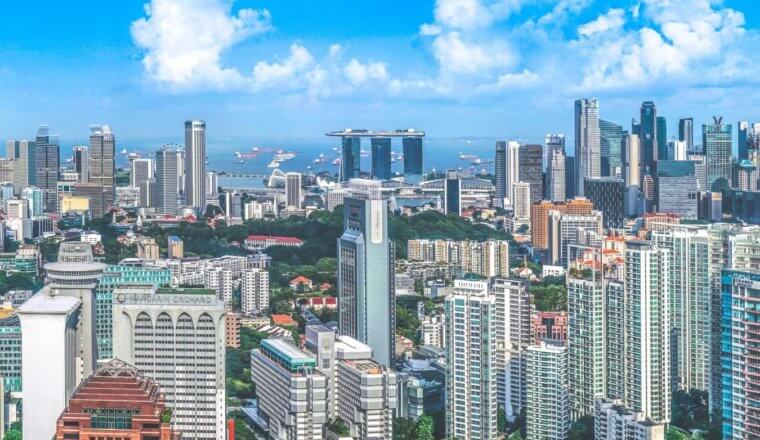
Where to Stay in Singapore: The Best Neighborhoods for Your Visit
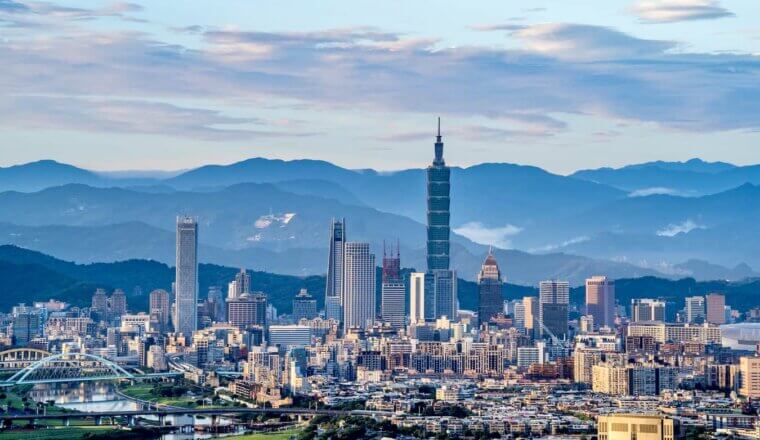
The 13 Best Things to See and Do in Taipei
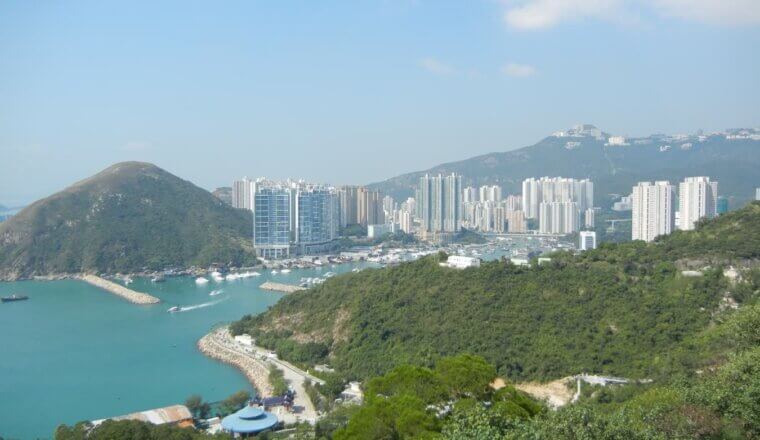
The 23 Best Things to Do in Hong Kong
Get my best stuff sent straight to you, pin it on pinterest.
- Where To Stay
- Transportation
- Booking Resources
- Related Blogs
Almost a Nomad
Budget Travel Guide: South Korea on a Shoestring
If you’re looking for an exciting and budget-friendly destination for your next trip, South Korea is definitely worth considering. This fascinating country is a blend of ancient traditions and modern technology, with plenty of stunning scenery, delicious food, and unique cultural experiences to enjoy. And the best part? You don’t have to break the bank to explore this amazing country.
In this budget travel guide to South Korea, we’ll show you how to make the most of your trip without spending a fortune. From affordable accommodations to delicious street food, we’ll share our top tips for saving money while still having an unforgettable adventure. Whether you’re a solo traveler or exploring with friends or family, you’ll find plenty of ideas and inspiration to help you plan your perfect South Korean getaway.

Planning Your Budget Travel to South Korea
If you’re planning a trip to South Korea on a budget, it’s important to plan ahead to make the most of your money. Here are some tips to help you plan your budget travel to South Korea.
Best Time to Visit
The best time to visit South Korea is during the spring (March to May) and autumn (September to November) seasons. During these periods, the weather is mild and pleasant, making it perfect for outdoor activities. Moreover, there are fewer tourists, which means you can save money on accommodation and transportation.
Affordable Accommodation Options
South Korea has a wide range of affordable accommodation options that cater to budget travelers. Hostels are the most popular choice for budget travelers, with prices ranging from 14,000 KRW to 25,000 KRW per night for a dorm bed. Private rooms are also available at a higher cost, but they are still relatively affordable compared to hotels. You can find a single private room for around 40,000 KRW per night, while a double private room costs around 70,000 KRW per night.
Transportation on a Budget
South Korea has an efficient and affordable transportation system, which makes it easy for budget travelers to get around. The subway is the most convenient and cheapest way to travel within the cities. A single journey costs around 1,350 KRW, and there are discount passes available for frequent travelers. Buses are another affordable option, with prices ranging from 1,200 KRW to 2,000 KRW per journey. Taxis are also available, but they are more expensive than public transportation.
To save money on transportation, you can also consider purchasing a T-Money card, which is a rechargeable transportation card that can be used on subways, buses, and taxis. By using a T-Money card, you can save up to 20% on transportation costs.
By following these tips, you can plan a budget-friendly trip to South Korea without compromising on the quality of your experience.
Sightseeing and Activities
When it comes to sightseeing and activities in South Korea, there are plenty of options that won’t break the bank. From free attractions to cultural experiences, you’ll find something for everyone.
Free Attractions
One of the best things about South Korea is that there are many free attractions to enjoy. For example, you can visit Gyeongbokgung Palace, one of the most iconic landmarks in Seoul, for free. This palace was built in the 14th century and is a great place to learn about Korean history and culture.
Another free attraction is the Cheonggyecheon Stream, a beautiful 11 km-long stream that runs through the heart of Seoul. It’s a great place to take a stroll and enjoy the scenery.
Cultural Experiences
If you’re interested in learning more about Korean culture, there are plenty of cultural experiences to enjoy. For example, you can visit a traditional Korean tea house and try some delicious Korean tea. You can also try your hand at making your own Korean pottery, or attend a traditional Korean music concert.
One of the most popular cultural experiences in South Korea is visiting a Korean spa, or jjimjilbang. These spas offer a variety of services, including hot and cold baths, saunas, and massages. They’re a great way to relax and unwind after a long day of sightseeing.
Overall, South Korea has plenty to offer budget travelers when it comes to sightseeing and activities. Whether you’re interested in free attractions or cultural experiences, you’ll find something to enjoy without breaking the bank.
Eating and Drinking
When it comes to food, South Korea has a lot to offer. From street food delights to cheap eats and local markets, you will never go hungry.
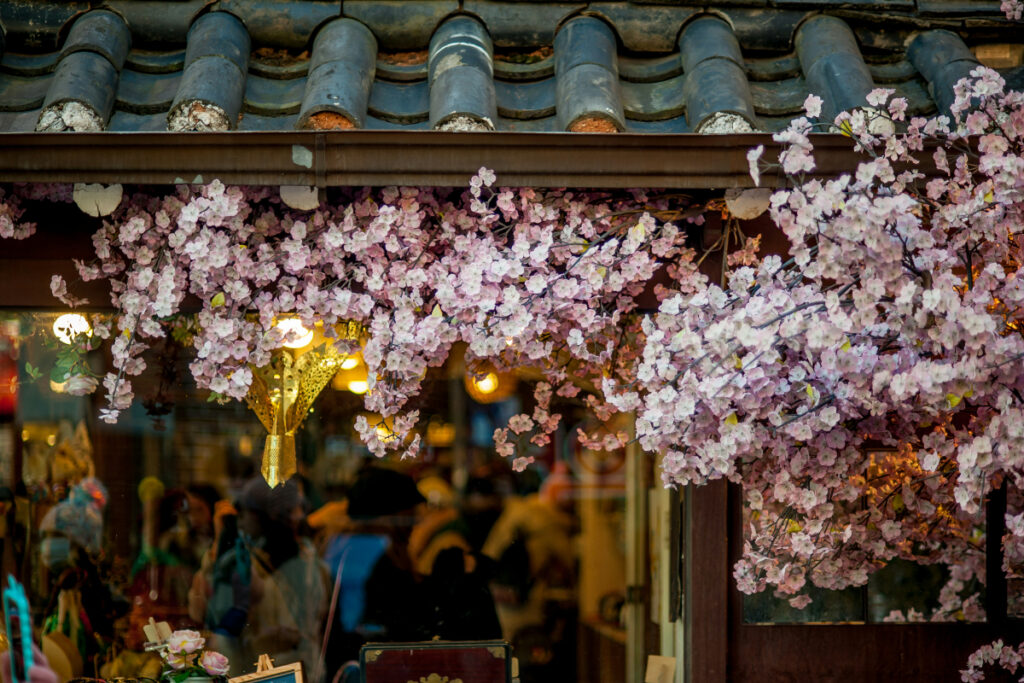
Street Food Delights
South Korea is famous for its street food, and it’s a great way to experience the local culture. You can find street food vendors all over the country, especially in Seoul. Some of the most popular street food items include tteokbokki (spicy rice cakes), hotteok (sweet pancakes), and kimbap (rice rolls with various fillings). Make sure to try the famous Korean fried chicken as well. It’s crispy, juicy, and delicious.
Cheap Eats and Local Markets
If you’re on a budget, head to local markets for some cheap eats. Gwangjang Market in Seoul is a great place to start. You can find a variety of Korean dishes such as bindaetteok (mung bean pancakes), bibimbap (rice bowl with vegetables and meat), and gimbap (rice rolls with various fillings). Most dishes are priced under 10,000 KRW (around $9 USD).
Another great option is to visit a Korean-style cafeteria called a “shikdang.” These places serve home-style Korean food at affordable prices. You can get a filling meal for around 5,000 KRW (around $4.50 USD). Look for signs that say “일반식당” (ilban shikdang) or “정문식당” (jeongmun shikdang) to find one.
In conclusion, South Korea has plenty of options for budget-friendly food. Whether you’re looking for street food or local markets, you’re sure to find something delicious.
Money-Saving Tips
Traveling to South Korea can be an amazing experience, but it can also be expensive. Fortunately, there are plenty of ways to save money while enjoying your trip. Here are some tips to help you save money while you travel:
Discount Cards and Passes
One of the best ways to save money while traveling in South Korea is to purchase a T-Money card. This card can be used on buses, subways, and even in some taxis. It’s a great way to save money on transportation costs, and it’s also very convenient. You can purchase a T-Money card at most convenience stores and subway stations.
Another great option is the Discover Seoul Pass. This pass offers free entry to over 30 attractions in Seoul, as well as discounts at many restaurants and shops. It’s a great way to save money on sightseeing and other activities.
Communication and Connectivity
If you need to stay connected while you travel, consider purchasing a SIM card or renting a portable Wi-Fi device. This will allow you to stay connected without racking up expensive roaming charges. You can purchase a SIM card or rent a portable Wi-Fi device at the airport or at most convenience stores.
Another option is to use free Wi-Fi hotspots. Many restaurants, cafes, and public places offer free Wi-Fi, so you can stay connected without spending any money.
Shopping and Souvenirs
If you’re looking for souvenirs or gifts to bring back home, consider shopping at local markets and street vendors. You can find a wide variety of items at these places, and they are often much cheaper than shopping at tourist shops or department stores.
Another option is to shop at discount stores like Daiso or Homeplus. These stores offer a wide variety of items at very affordable prices. You can find everything from snacks and souvenirs to household items and clothing.
By following these money-saving tips, you can enjoy your trip to South Korea without breaking the bank.
Similar Posts

Budget Travel: Disneyland Paris on a Shoestring
If you’re planning a trip to Disneyland Paris, you might be wondering how to make the most of your experience while sticking to a budget….

Best European Countries to Visit in December: Festive Destinations for Winter Travel
Are you planning a winter getaway to Europe? December can be a wonderful time to visit, with festive holiday markets, snow-covered scenery, and fewer crowds…

Budget Travel Central America: Tips and Tricks for Exploring on a Budget
Are you planning a trip to Central America but worried about the expenses? Budget travel in Central America is not only possible but also a…

Warm Places to Visit in January: Escape the Winter Chill
Are you tired of the cold winter weather and looking for a warm escape in January? Luckily, there are many destinations around the world that…

10 Best South Korea Budget Tips + Travel Costs (2024)
Are you wondering how much a trip to South Korea will cost? Here’s our in-depth travel guide on the 10 best South Korea budget tips you should know before your trip. We’ll show you how to plan your South Korea travel costs and many ways to make your trip more budget-friendly. We also share all of our costs for a 2 week trip to Korea from accommodation and snacks to transport and activities.
South Korea is ultimately one of the best countries we’ve travelled to. The country blew us away with its beautiful culture, rich history and delicious food.
Have you been wondering if South Korea is expensive to visit? Depending on the prices of your home country, it’s really not too bad. Compared to the UK it is much more affordable and it’s even slightly less expensive than beloved Japan!
We’ve created this budget guide to share our South Korea travel costs of travelling the country for 2 weeks. We visited Seoul, Gyeongju, Golgulsa Templestay, Busan and Jeonju!
Honestly, we had a great time and can’t wait to go back in the future and we’ll probably still stick to a budget. For now, we’ll show you that South Korea can be done on a budget and what travel costs you can expect.
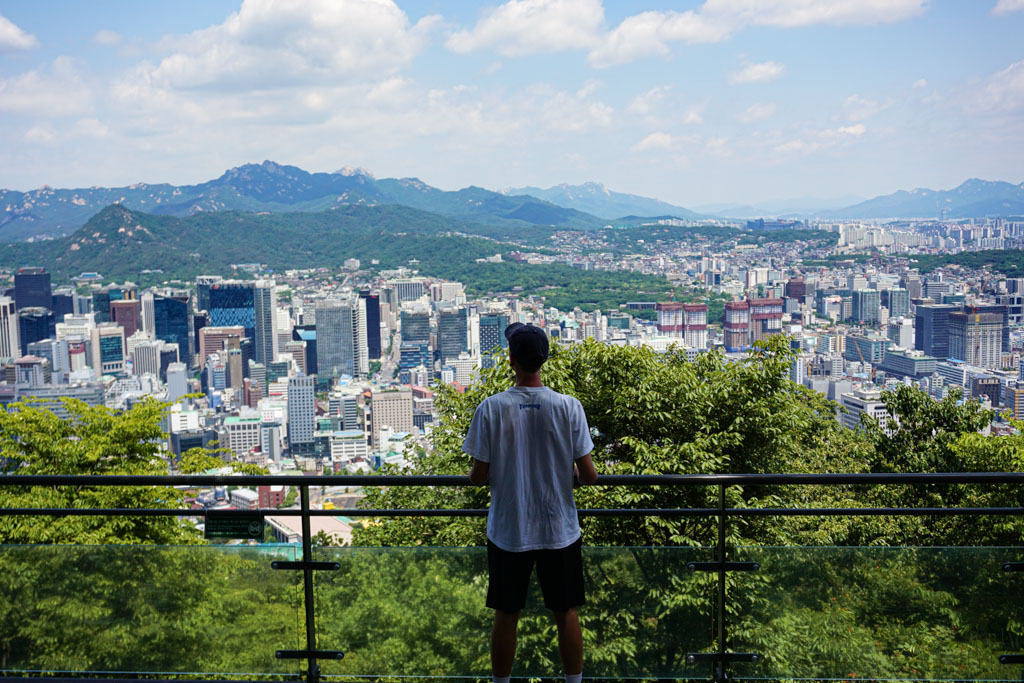
This post may contain affiliate links. We will receive a small commission if you make a purchase using these links, at no additional cost to you .
10 Best South Korea Budget Tips
Table of Contents (Skip to a section!)
Here are our top 10 South Korea Budget tips to help you plan the best trip! After these tips, you’ll find our full South Korea travel cost breakdown split into separate categories.
1. Swap Restaurants for Markets & Street Food
One of the best ways to travel to South Korea on a budget is to choose your food carefully. The price to eat somewhere in South Korea is very reasonable, but some places will be expensive too.
Throughout our 2 weeks in South Korea we ate our food at restaurants, markets, street stalls, convenience stores and grocery stores ! It definitely helps the bank to cook your own food and you can try the endless supply of ramyeon!
Places to eat in South Korea on a budget
- Myeongdong Street Food (Seoul)
- Maru – Budget-friendly Korean street food in the heart of Insadong (Seoul)
- Gwangjang Market – Our favourite! (Seoul)
- Haeundae Market (Busan)
- Gwangbokdong Food Street (Busan)
- Fast-food chains – Places like Lotteria, No Brand Burger and Subway
We highly recommend visiting Gwangjang Market whilst visiting Seoul. Grab a mung bean pancake, bibimbap and dumplings and you’ll be very full ( this food will feed two people )!
A few Korean dishes to try to keep your South Korea travel costs low:
- Ramyeon (The easiest food to grab at a convenience store) 1,500 ₩
- Bibimbap (Very popular with a variety of toppings) 6,000 ₩
- Gimbap (Korean Sushi, you can find these everywhere)! around 2,000 ₩
- Mandu (Korean Dumplings) 5,000 ₩
- Tteok-bokki (Spicy & saucy Rice Cakes) 3,000 ₩
You’ll be surprised by how good the food is in the convenience stores in South Korea. Locals grab food from here all the time and it’s perfect for those in South Korea on a budget.
If there are some restaurants you’d like to try, just add that to your budget and eat at convenience stores the next day. International and Western food will also usually cost more than Korean, but Korean food is very good!
Osegye Hyang is our favourite traditional Korean restaurant with affordable prices. We’ve even created a Vegan in South Korea Guide – Best Restaurants & Snacks (2024) !
Note – There is no tipping culture in South Korea. It’s likely the staff will kindly decline your tip! This is common throughout East Asia.

2. Stay in Budget Accommodation in South Korea
Accommodation can take up a big part of your South Korea travel budget. Especially if you choose amazing hotels! Although it’s nice to feel comfortable, maybe take the time to look at some other options before spending more than your budget.
Hostels and small private rooms are going to be the most affordable places to stay in South Korea. Most hostels offer private rooms that are still cheaper than hotels.
It’s really down to preference, but we didn’t stay in one bad accommodation on our South Korea trip and we stayed in private rooms!
Hostels usually cost around 25,000₩ per person with male, female or mixed dorms available. A private room in a hoste l is around 40,000₩ per room and hotels are usually 70,000₩ or more!
Where to stay in South Korea on a budget
- Seoul – Hostel Tommy – A lovely hostel with dorms & private rooms! – Find here on Booking.com !
- Seoul – Kimstay 9 – Basic private rooms! – Find here on Booking.com !
- Busan – Dynamic Guesthouse – A shared penthouse with great views – Find here on Booking.com !
- Gyeongju – Doobaki Guesthouse – The best hostel in South Korea! – Find here on Booking.com !
There are also a few ways to get free accommodation in South Korea :
- Couchsurfing – Stay in a local house, for free! Find out more here !
- Workaway – Exchange work/volunteering for free accommodation and food!
- Worldpackers – Volunteer for free accommodation and food!
- Trusted Housesitters – Look after a locals pet whilst they’re out of town
It’s also important to note that accommodation will be more expensive in the peak time of year such as the Cherry Blossom season, spring and fall. Winter is usually the cheapest time to visit South Korea on a budget.

3. Do you need a Sim Card in South Korea?
When you start to Google about sim cards or wifi in South Korea, there’s a lot of information telling you to get one! We agree, but it’s definitely possible to travel the country without one.
We have a solution to help your South Korea budget. Pick up an E-Sim for 15,000₩ ! (€10.99 for 12 days)
E-sims are the perfect option if you only need internet or mobile data. You don’t even need to buy them in advance like other sims or wifis.
As we visited South Korea for 2 weeks, we purchased our sim on Day 3 of our trip. This made us realise how much easier it is to have the internet on the go, but luckily Seoul is a very easy place to get around and we downloaded offline Maps.
If there’s more than one of you, it’s also possible to hotspot the E-sim data from one phone, although you’ll have to check your data allowance! The instructions come with the E-sim, but you simply install it into your phone settings. The customer service team answer quickly if you have any problems!
There’s also some great deals if you do need a Korean phone number. Here’s a few other options ranging in price:
E-Sim – Here’s a 12 Day E-Sim (15,000₩, €10.99 for 12 days and 6gb of data)
Prepaid Sim – Purchase ahead of time and pick up at the airport. This sim has a Korean number! The price changes depending on how long you need it. Find a sim card on Klook here ! (£15 for 10 days)
Portable Wifi – The most expensive option is portable Wifi and this is usually what travellers get if they’re not worried about their South Korea travel costs. Find a portable Wifi on Klook here ! (£20 for 10 days) Also, pick it up at the airport.
It’s also a good idea to carry around a portable charger for your phone so you always have enough battery to last the day. We recommend Anker Power Bank and just charge it up every few days if you’ve been using it a lot.

4. Use Buses to get around South Korea on a Budget
The transport in South Korea is some of the best in the world! It’s reliable, well connected and quite affordable considering how good it is.
If you want to stick to your travel budget in South Korea, we recommend catching Intercity and Express Buses around South Korea. They are so comfy and you can book your seats in advance.
Here’s the prices we paid for transport around South Korea on a budget
- KTX (Fast Train) Seoul to Gyeongju – 2 hours – 49,000₩ (£32)
- Express Bus – Gyeongju to Busan – 45 minutes – 5,000₩ (£3.30)
- Express Bus – Busan to Jeonju – 3 hours – 25,000₩ (£16.40)
- Express bus – Jeonju to Seoul – 2.5 hours – 14,000₩ (£9.20)
The buses from Seoul to Gyeongju will take around 4-5 hours and usually cost around 22,000₩ £46.40 . We took a train as we wanted to arrive in Gyeongju early and also wanted to experience a train in South Korea as we only used buses in Japan.
If you want to add Jeju Island to your South Korea travel costs, then it’s best to book a flight from Seoul or Busan. The ferries are often more expensive and they will take longer.
It’s possible to book trains in advance, but you can only book buses in advance if you have a Korean number. We booked our bus tickets as soon as we arrived at a new destination, usually booking them 2-3 days in advance.
Express & Intercity Buses – Have a look at bus times on the official Korean website – Kobus tickets
Trains – Book your train tickets in advance here – Korail tickets here (or a Korea Rail Pass )
Flights – Flights to Jeju Island from Seoul or Busan – Check Skyscanner for flight times and prices !

5. Get a T-Money card
This is another great way to stick to your South Korea budget. A T-Money card is a discounted transport card that works all over South Korea in cities and towns. It’s for local transport to each destination, not for long bus journeys.
Using a T-Money card is not just about saving money, but saving time too! You won’t need to purchase a local ticket every time you use the bus or subway. Simply tap your card when you get on and off transport and you’ll be good to travel around South Korea!
A T-Money Card costs 2,500 ₩ . There’s also tourist cards and designed cards that cost 4,000₩
How to get a T-Money Card?
T-Money cards are available to purchase at the airport, at major stations and convenience stores (such as CU, GS25, 7-Eleven and Ministop).
How to top up my T-Money Card?
You can only top up a T-Money card with cash and not by debit or credit card. Make sure you grab money out of an ATM if you arrive in South Korea without Korean Won! Here’s how you can top up using cash:
- At Convenience Stores! Hand your card over, give the employee the cash and it’s all done!
- Some other local newsstands or shops offer top-ups. Look out for the T-Money logo!
- At major stations, find a ticket machine and choose how much you want to add to your card. The machines can be changed to English!

6. Use Local Buses and Subway instead of Taxis
Local buses are always the most affordable way to travel around any city and it’s the same with South Korea. However, the subway is also very budget-friendly too!
As the transport is well connected, you won’t need to use taxis anyway! The best way to feel comfortable about using public transport in South Korea is to download the app – Naver Maps . Google Maps doesn’t work in South Korea, so it’s best to use the local navigation app!
It costs 1,250₩ to use the Subway in South Korea which is £0.82p ! For reference, in London, it costs £2.60 to take one journey. We used subways and buses all around Seoul, Gyeongju, Busan and Jeonju without any issues! Naver Maps is perfect with timing and where to go.
7. Shop at Convenience Stores
One of the best South Korea budget tips is to eat and shop at the convenience store! Food and meals are well priced and you can usually heat the food inside the shop too! It makes travelling around South Korea on a budget so much easier!
The tax in South Korea is included in the price, so you don’t have to worry about extra prices at the checkout (like in Canada or the US).
Our favourite convenience store snacks are Ramyeon, Lotus Biscuits, Chocolate Soy Milk (it’s okay to laugh), Japanese Onigiri and Frozen dumplings (to add to your Ramyeon back in a hostel kitchen).
There are plenty of lunches to find in convenience stores based around rice or noodles. The best part is convenience stores are everywhere!

8. Make use of the Free Things To Do
This South Korea budget tip may be obvious – activities don’t always have to cost money. There are so many free things to do around the country and some of them are highlights of our trip! Here’s a list of great things to do for free if you’re in South Korea on a budget.
Seoul – A city filled with unique neighbourhoods, hikes and parks. There are so many free things to do in Seoul to help your South Korea budget. Check out our 5 Day Seoul Itinerary !
- Explore neighbourhoods such as Insa-dong, Ikseon-dong, Myeongdong, Hongdae, Itaewon & Gangnam
- Walk around the beautiful Bukchon Village & Ihwa Mural Village
- Feel the nature at Namsan Park
Gyeongju – Some of the best things to do in Gyeongju are free! Browse our 11 Best Things to do in Gyeongju: Itinerary (2024) ! Here’s a few suggestions:
- Admire Woljeonggyo Bridge, Donggung Palace & Wolji Pond
- Visit Cheomseongdae & Gyerim Forest
- Window shop in Hwangnidan-Gil & explore the Hanok Village
Busan – Another great city for finding budget-friendly activities! We also have a 3 day Busan Itinerary !
- Gamcheon Culture Village (yes it’s free!) & watch the sunset at Lotte Department Building
- Walk along the Igidae Coastal Walk & relax at Haeundae Beach
- Discover Nampo-dong & Haedong Yonggung Temple
Jeonju – Walk through the famous Hanok village and check out the murals, markets and shrines!
- Explore Jeonju Hanok Village & Jaman Mural Village
- Walk through Nambu Market & visit Gyeonggijeon Shrine
- See the views from Omokdae
Jeju Island – Filled with natural wonders, Jeju is filled with free things to do. You’ll just need transport to get around!

9. Use Klook to Save Money on Activities
Klook is one of the best companies to book activities, tours and things to do in South Korea. It’s similar to GetYourGuide, but Klook is used more in Asia. We’ve used this website in South Korea and Japan to buy discounted tickets such as Disneyland, Seoul Tower and Hanbok rentals .
It’s also a great place to find sim card or portable wifi deals! When using Klook, you can easily book your activity in advance and sometimes there’s an option to pick up the ticket at the airport on arrival.
Activities to buy on Klook in South Korea:
- Seoul Tower – Go to the top of Seoul Tower in Namsan Park – Buy your ticket in advance!
- Hanbok Rental – ( Gyeongbokgung Palace as it’s the perfect size to explore and there’s a great rental shop nearby! Find the link on Klook here – Hanbok Rental Klook
- DMZ Tour – Visit part of North Korea – Book tickets with Klook here !
- Korea Rail Pass – If you decide to use the train, consider a rail pass – Here’s more info !
- Everland 1 Day Pass – One of South Korea’s theme parks – Buy your tickets here !
- Nami Island – Take a trip to Nami Island from Seoul – Find out more info here !
Staying in a temple is another fantastic activity that can’t be missed on your South Korea trip! It can be booked on Korea’s temple stay website ! Also, check out our Golgulsa Templestay Review !

10. Travel Off Peak
If you’re planning your travel budget for South Korea, one of the first steps is to figure out which time of year you want to visit.
The most popular time to visit South Korea is between April and May due to the beautiful cherry blossom season. Prices for accommodation and flights will most likely be more expensive and it will also book up fast. There will be more tourists and locals around, especially in the parks.
If you’re travelling to South Korea on a budget, it may be best to avoid these months and visit off-peak.
The off-peak months to travel to South Korea are January, February, late October , November and early March. If you can find good deals on flights and good accommodation prices outside of these months, then go for it! January is usually the cheapest month to travel as it’s cold, but it’s perfect if you want to ski!
Summer isn’t the best time to visit South Korea due to the hot and humid weather, but it’s still a popular time to visit due to worldwide holidays.

How to Budget in South Korea
So that’s our 10 South Korea budget tips! There are many ways to travel on a budget, it all depends on how comfortable you are. We love hostels, but some people we know would never stay in them. For us, they’re budget-friendly, comfortable and just a place to sleep or meet new people!
Ultimately it comes down to food, accommodation, transport and activities. Check accommodation in advance before you book your flights just to get an idea of prices for that month. Here’s a few more tips on how to budget in South Korea:
- If you want to shop, Namdaemun and Dongdaemun are filled with discounts in Seoul
- Tours will cost money, so make sure you add must-do activities to your budget
- Eat more street food and at markets
- Check prices for your visa ( every country is different )
- Use Skyscanner to browse flight prices for different times of the year
Accommodation in South Korea – We use Hostelworld and Booking.com to find accommodation in South Korea. You can filter to the lowest price and check reviews from previous guests.
Travel Insurance – Don’t forget travel insurance whilst planning your South Korea budget. SafetyWing is a flexible monthly-rolling travel insurance to help you stay safe on your trip. You can add more months to your trip too! – Find out more here!
E-Sim – Here’s the E-sim we used on our South Kore trip – 12 Day E-Sim (15,000₩, €10.99 for 12 days and 6GB of data)

Costs compared to other countries in Asia
We have only visited countries in Southeast Asia, South Asia and Japan.
After visiting both Japan and South Korea, we have to admit that South Korea is slightly cheaper! The country is more affordable meals out and transport (especially the train!)
Comparing South Korea to countries such as Thailand, Sri Lanka or the Philippines, we have to say that South Korea is more expensive on every level. Accommodation is almost three times the price compared to countries in Southeast/South Asia. Food and activities are more too.
A full breakdown of our South Korea Travel Costs
Here’s the full breakdown of our South Korea travel costs. We both shared the same card and cash, but for this breakdown, we’ll show you roughly how much the same trip would cost for one person too.
Our full South Korea travel costs for 2 people (2 weeks)
- Korean E-Visa – 20,600₩ (£14)
- Intercity Transport -186,800₩ (£123)
- Local Subway & Buses – 88,000₩ (£58)
- Activities – 225,800₩ (£148)
- Restaurants & Markets – 345,600₩ (£227)
- Groceries – 109,110₩ (£72)
- Snacks – 120,300₩ (£79)
- Accommodation – 586,200₩ (£385)
- Miscellaneous – 20,500₩ (£13.50)
Total Cost – 1702,910₩ (£1,120)
Our Transport Costs – 274,800₩ (£181) – prices for two people
T-Money Cards – We accidentally bought the Korea Tour Cards at the airport so spent 4000₩ instead of 2500₩. We topped up our cards with 80,000₩ (£52.60) to get around the cities in towns during our 2 week trip. There’s a chance we may have a bit of money leftover on our cards too!
Accommodation – 586,200₩ (£385) – prices for two people
- 5 nights in Seoul (private room in a hostel) – 260,000₩ / £171
- 2 nights in Gyeongju (private room in a hostel, Korean style beds) 72,000₩ / £47
- 3 nights in Busan (private room in a shared apartment, shared bathroom) 117,000₩ / £77
- 1 night in Jeonju (private room in a Hanok with free breakfast) 52,200₩ / £34
- 2 nights in Seoul – different place – (private room in a guesthouse) 85,000₩ / £56
- Seoul – 52,000₩ (£34.20) per night / 26,000₩ (£17.10) per person
- Gyeongju – 36,000₩ (£23.50) per night / 18,000₩ (£11.75) per person
- Busan – 39,000₩ (£25.60 per night / 19,500₩ (£12.80) per person
- Jeonju – 52,200₩ (£34 per night / 26,100₩ (£17) per person
- Seoul – 42,500₩ (£28) per night / 21,250₩ (£14) per person
Our accommodation costs came to 586,200₩ (£385) which is 293,100₩ (£192.50) per person for 2 weeks! One of our nights we spent at Golgulsa Templestay which we’ve included as an activity.
Activities – 225,800₩ (£148) – prices for two people
- Golgulsa Templstay – 120,000₩ (£79)
- Archery at Golgulsa Temple – 20,000₩ (£13.20)
- Palaces – 26,000₩ (£13.20)
- Hanbok Rental – 24,000₩ (£15.80)
- Seoul Tower – 8,300₩ (£5.50)
- Photo Booth – 4,000₩ (£2.60)
- Bukchon Observatory with free drinks – 6,000₩ (£4)
- Gamcheon Map – 2,000₩ (£1.30)
- Arcade games – 15,500₩ (£10.20)
Shopping & Miscellaneous – 20,500₩ (£13.50) – prices for two people
- Laundry / Laundry Detergent ( 2 washes ) – 4,000₩ (£2.60)
- Socks & Lip Balm – 12,500₩ (£15.15)
- Plasters – 4,000₩ (£2.60)
Restaurants & Markets – 345,600₩ (£227.40)
We ate at multiple restaurants and markets during our 2 weeks in South Korea, we also revisited a few if we loved the food. Osegye Hyang is our favourite restaurant (traditional Korean)! Here’s a few examples of our meals:
- Lunch at a Traditional Korean Restaurant – 27,000₩ (£17.80)
- Lunch at a Hot Pot Restaurant – 26,000₩ (£17.15)
- Lunch at 7-Eleven – 83,00₩ (£5.50)
- Lunch at Lotteria – 14,200₩ (£9.40)
- Lunch at a Bibimbap Restaurant- 16,000₩ (£10.55)
- Lunch at a Korean Street Food Restaurant 19,000₩ (£12.50)
- Dinner at a Japanese Restaurant – 18,000₩ (£18.90)
- Dinner at Gwangjang Market – 12,000₩ (£7.90)
- Dinner at a Korean Restaurant – 16,000₩ (£10.55)
Snacks – 120,300₩ (£79.15)
In the snack category, we’ve included random snacks at convenience stores or street food. Here are a few examples of snack prices in South Korea.
- Lotus Biscuits – 3,800₩ (£2.51)
- Sweet Potato Street Food – 1,000₩ (£0.65)
- Chocolate Soy Milk – 1,200₩ (£0.79)
- Onigiri – 1,200₩ (£0.79)
- Mochi – 2,500₩ (£1.65)
- Red Bean Bun – 3,000₩ (£2)
- Bakery (4 Doughnuts) – 13,100₩ (£8.65)
- Korean Rice Cakes – 4,000₩ (£2.65)
Groceries (which include meals) 109,110₩ (£71.80)
Our grocery section is very close to snack selection but we tried to split it up into food that we took home or cooked for meals. We bought a lot of instant noodles, frozen dumplings, inari sushi and soy milk.
- Bread – 2,250₩ (£1.49)
- Inari Sushi Pack – 4,500₩ (£3)
- Bananas – 4,900₩ (£3.20)
- Ramyeon – 2,400₩ (£1.60)
- Frozen Dumplings – 6,400₩ (£4.20)
Total Food Costs – 575,010₩ (£378.40)- prices for two people
Food Costs per day in South Korea – 41,072₩ (£27) – prices for two people
Total Cost of a 2 week trip in South Korea for 2 people – 1702,910₩ (£1,120) & 141,909₩ (£93) per day
Our total cost doesn’t include flights in and out of the country, but for reference, we flew from Manila to Seoul for £135 each with Jeju Air and Seoul to Bangkok for £105 each with Air Asia. Our flights worked out well as we were already travelling in Asia at the time, we booked them 2 months in advance.
We hope this helps you plan your South Korea budget! We think that £46 per person, per day, is a pretty good price to travel around South Kore. We also had the best time and didn’t feel like we lost out on anything.
Korean food is amazing and we ate at restaurants and markets a lot more than cooking our own food. If we cooked more, our South Korea travel costs would be even less!

Is South Korea expensive to visit?
After looking at all of our South Korea travel costs, we’ve concluded that South Korea isn’t expensive to visit compared to the UK. Depending on your home country, the prices may be more, but we were pleasantly surprised with the prices of food.
The accommodation we booked was also really great! If you’re visiting South Korea on a budget, you’ll need to watch your spending when shopping or eating at fancier restaurants.
How much money to bring to South Korea for 2 weeks?
If you’re planning a travel budget for South Korea, we always recommend budgeting more than you think you need. We spent 1702,910₩ (£1,120) for two people during our 2 weeks in South Korea and although we ate a lot of instant noodles, we did everything we wanted to do!
We recommend budgeting at least 1215,715₩ (£800) if you’re a solo traveller with the addition of flights.
Travel Essentials for a South Korea Trip
Here are a few travel essentials we always bring with us:
- Amazon Basics Packing Cubes – The best way to pack your bag!
- Anker Power Bank – Keep your phone charged on the go!
- Stainless Steel Water Bottle – The water in Korea is drinkable, bring a reusable bottle and fill it up!
- Rain Mac in a Bag – Carry a lightweight raincoat or umbrella around Korea!
- Worldwide Travel Adaptor – The ultimate travel plug when travelling to different countries!
- Joby GorillaPod 3K Pro Kit – The best lightweight tripod to take anywhere in South Korea! We have a Joby GorillaPod and use it for our Sony A600 . There’s also a Joby Phone Tripod if you take photos on your phone.
Let us know if you have any more South Korea budget tips and we’ll have to keep adding to this guide! We highly recommend visiting South Korea even on a budget. Make sure you have extra money just in case anything goes wrong and always have travel insurance! Now you know how to create a travel budget for South Korea!
Don’t forget about Travel Insurance! – SafetyWing Nomad Insurance
SafetyWing is a flexible monthly-rolling travel insurance to help you stay safe on your trip anywhere in the world. Find out more here!
More South Korea guides:
- Ultimate 2 week South Korea Itinerary: Best Places (2024)
- 5 Day Seoul Itinerary – Best Things To Do (2024)
- Staying in Golgulsa Temple: The Best Templestay in Korea (2024)
- 25+ Best South Korea Travel Tips: What to Know
- 3 day Busan Itinerary: What to do in Busan (2024)
- 11 Best Things to do in Gyeongju: Itinerary (2024)
- Ultimate South Korea Bucket List: 20 Best Things To Do
- Vegan in South Korea Guide – Best Restaurants & Snacks (2024)
- All our South Korea posts!
That’s the end of our 10 Best South Korea Budget Tips + Travel Costs (2024)! Have the best time in South Korea on a budget and if you need any more help planning – send us a message on Instagram (@thesunrisedreamers) or leave a comment below!
LIKE THIS POST? PIN IT FOR LATER & SHARE IT WITH OTHERS!

Amy & Dan are the founders of The Sunrise Dreamers. They are travellers from the UK who have been on the road since 2017 whilst living in places like England, Canada, Thailand and the Canary Islands. They share their knowledge of travelling the world with detailed travel guides and tips. They're experts in vegan travel and show their audience how to travel on a budget.
Similar Posts

3 Day Busan Itinerary: What to do in Busan (2024)
Thinking about spending 3 days in Busan? Here’s our in-depth guide on how to plan your 3 day Busan Itinerary…

Ultimate 3 week Sri Lanka Itinerary: 2024 Guide
Planning 3 weeks in Sri Lanka? You’re in the right place! Sri Lanka is an amazing country to explore with…

Staying in Golgulsa Temple: Best Templestay in Korea (2024)
Are you thinking about spending the night at Golgulsa Templestay? It’s totally worth it! It’s one of the best Templestays…

Incredible 10 Day South Coast Sri Lanka Itinerary
At the very bottom of Sri Lanka is the beautiful South Coast – filled with small coastal towns and some…

20 Tips to Know Before Travelling to Sri Lanka (2024)
Are you planning a trip to Sri Lanka soon? That’s amazing! We have a great list for you – 20…

Top 50+ London Travel Tips to Know
London is one of the best cities to visit in the world, it’s got famous monuments, iconic film locations and…
Thank you so much for such awesome tips. Planning a trip for early next year so these tips will definitely be useful.
Amazing! You’ll have a great time! 🙂
Thank you this has really helped with my planning a budget travel trip to South Korea. I was just wonder if you, or any other readers used a WOW pass, it seems to get a lot of good reviews?
Hi Ashley! Thank you so much 🙂 Personally, we haven’t used a WOW Pass but know it’s an all-in-one prepaid card for foreign travellers! As we’re from the UK, we just use a debit card that has no foreign charges. (example, Starling or Revolut) Sorry I can’t share more info about it! Safe travels.
Leave a Reply Cancel reply
Your email address will not be published. Required fields are marked *
Save my name, email, and website in this browser for the next time I comment.
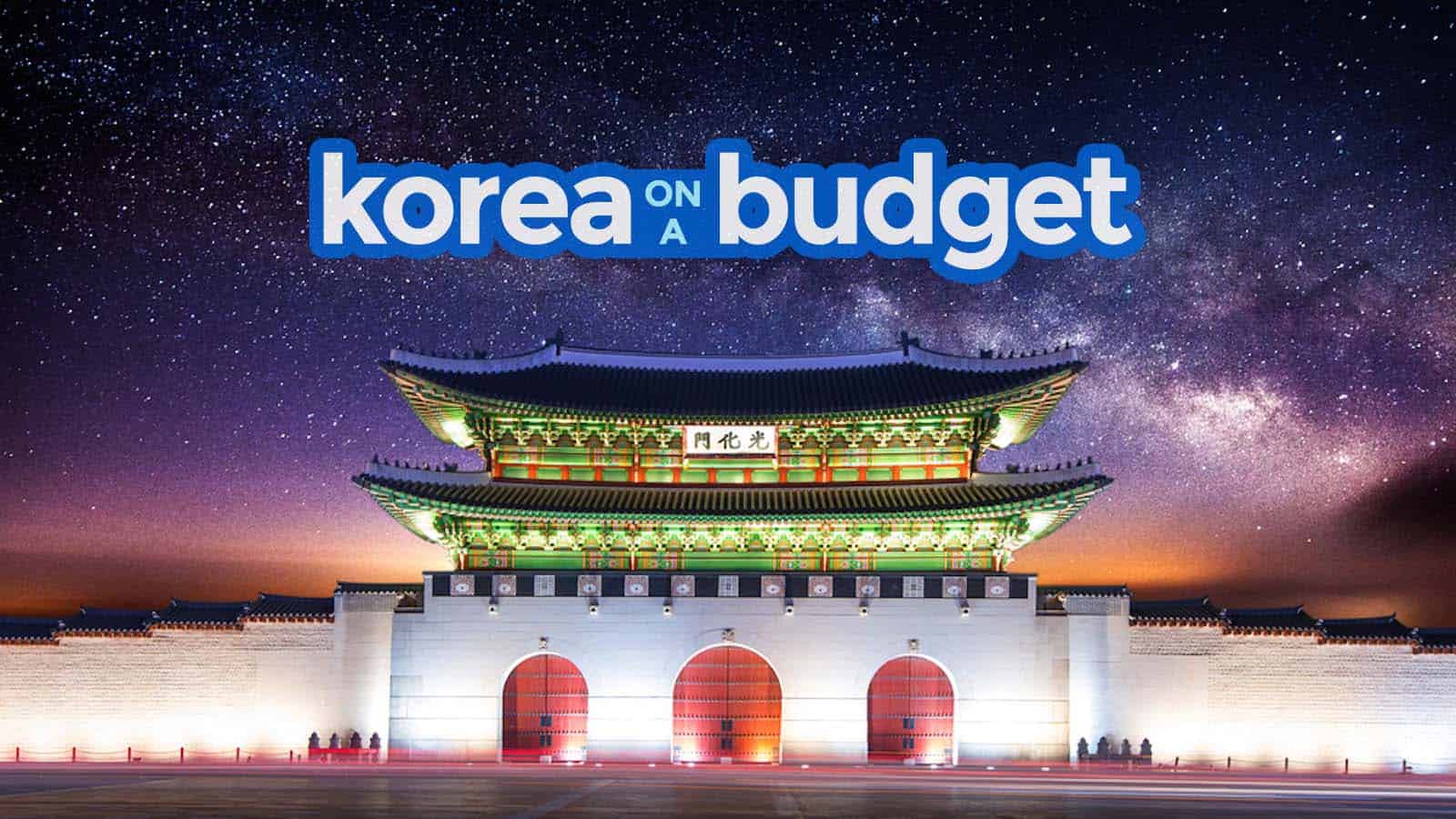
KOREA ON A BUDGET: Seoul Travel Guide & Itinerary

Some countries change your life even before you set foot in it.
One lazy day at the university, I was chillin’ with friends at the lobby of our college building when the College Secretary approached us. “I’m looking for volunteers,” she said. Apparently, exchange students from Korea had arrived way earlier than expected. She needed people who could tour them around the campus while they were preparing whatever it was they were preparing. Bored af, I was first to raise a hand.
Many of these exchange students became good friends of mine. They were my first foreign friends.
At the time, my brother was coincidentally working at a factory near Seoul. The computer that I relied on in college was a product of his hard work there. ( Katas ng Korea , sabi nga nila.) This also means that every now and then, we would receive a package bursting with Korean products, which would then fill our living room racks and kitchen drawers.
After graduation, my first job was with a Korean company that brought Korean students to the Philippines to learn English. So yes, my first boss, the first person who believed in my skills as a worker, was Korean.
South Korea had already changed my life way before I set foot in it. So when I finally did, it felt wonderful. It felt like I was giving thanks. But yeah, the whole time, I was grateful.
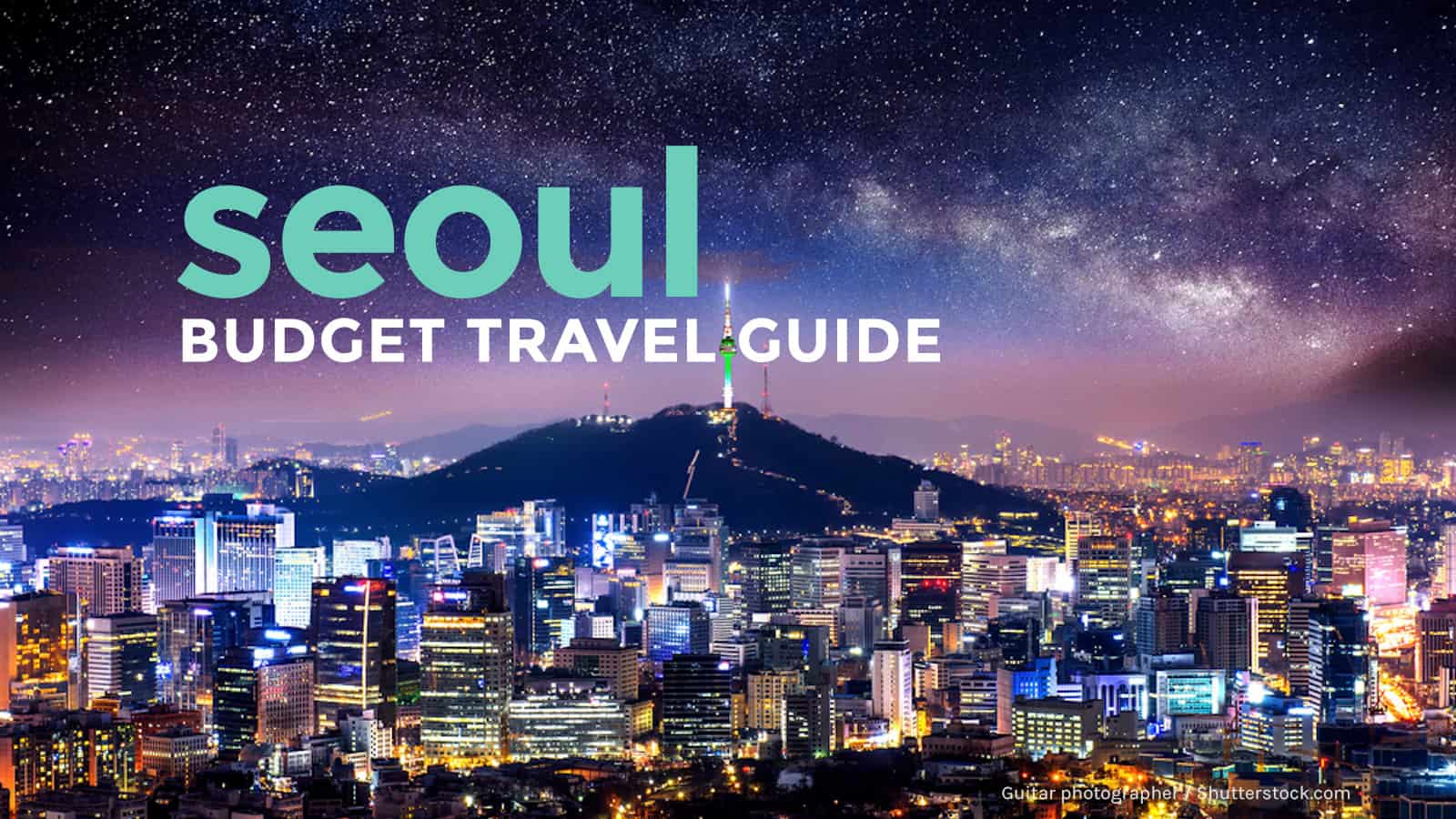
WHAT'S COVERED IN THIS GUIDE?
Understanding Seoul
The political and economic center of South Korea, Seoul is home to almost 12 million residents. The larger Seoul Capital Area (Sudogwon), which includes neighboring Incheon and Gyeonggi-do, houses 25.6 million people (half of the country’s population), making it the fourth largest metropolitan area in the world, after Tokyo, Shanghai, and Jakarta.
Like most capital cities in East Asia, Seoul is pulsating with curiosities. Think of it as a younger but more tamed Tokyo. Everywhere you go, there’s always something interesting to find even in a random neighborhood. A regular cafe (often located next to another cafe across another cafe) displays how many calories are in your order for the benefit of the weight health-conscious in you. If you’re feeling a bit offbeat, walk into a cat cafe to indulge the animal-lover in you or a toilet-themed one to satiate your appetite for humor. And that’s just the coffee shops!
Seoul is also known for its obsession to beauty, something that became apparent as soon as I passed by half-dozen cosmetic shops after only two minutes of walking. (I LOVE IT. Here, I could step into a cosmetic store without anyone giving me judging stares.) But their constant quest for physical perfection isn’t limited to beauty products. Almost everything here looks pretty! Street food looks gourmet, university grounds are tourist spots, and historical sites are well-preserved!
- Language : Korean. English is getting increasingly common. Most signs have English translations.
- Currency : South Korean Won (KRW, ₩). KRW 1000 is roughly USD 0.88, EUR 0.77, SGD 1.22, PHP 47.8 (as of October 2018).
- Modes of payment : Many establishments accept credit cards, but most still prefer cash.
- Electricity Info : 220 volts. Plugs have two round pins.

How to Get to Seoul
If you’re a Filipino citizen, you’ll need a visa. Here’s how to get a Korea visa .
Seoul is served by two airports: Incheon International Airport (ICN) and Gimpo International Airport (GMP). Gimpo is used primarily for domestic and a few international flights (mostly from China, Japan, and Taiwan). Incheon, on the other hand, is used by most international flights. It is the largest and the primary gateway to South Korea. Gimpo is much closer, just 30 minutes away from Central Seoul, while Incheon is roughly an hour away by train or 1.5 hours by bus.
If you’re coming from Southeast Asia, the cheapest flights to Incheon are offered by low-cost carriers. The lowest rates are often from Manila. AirAsia has the lowest year-round fares and they get even lower when there’s a promo. Here’s a quick search on SkyScanner.
Manila to Incheon (Seoul)
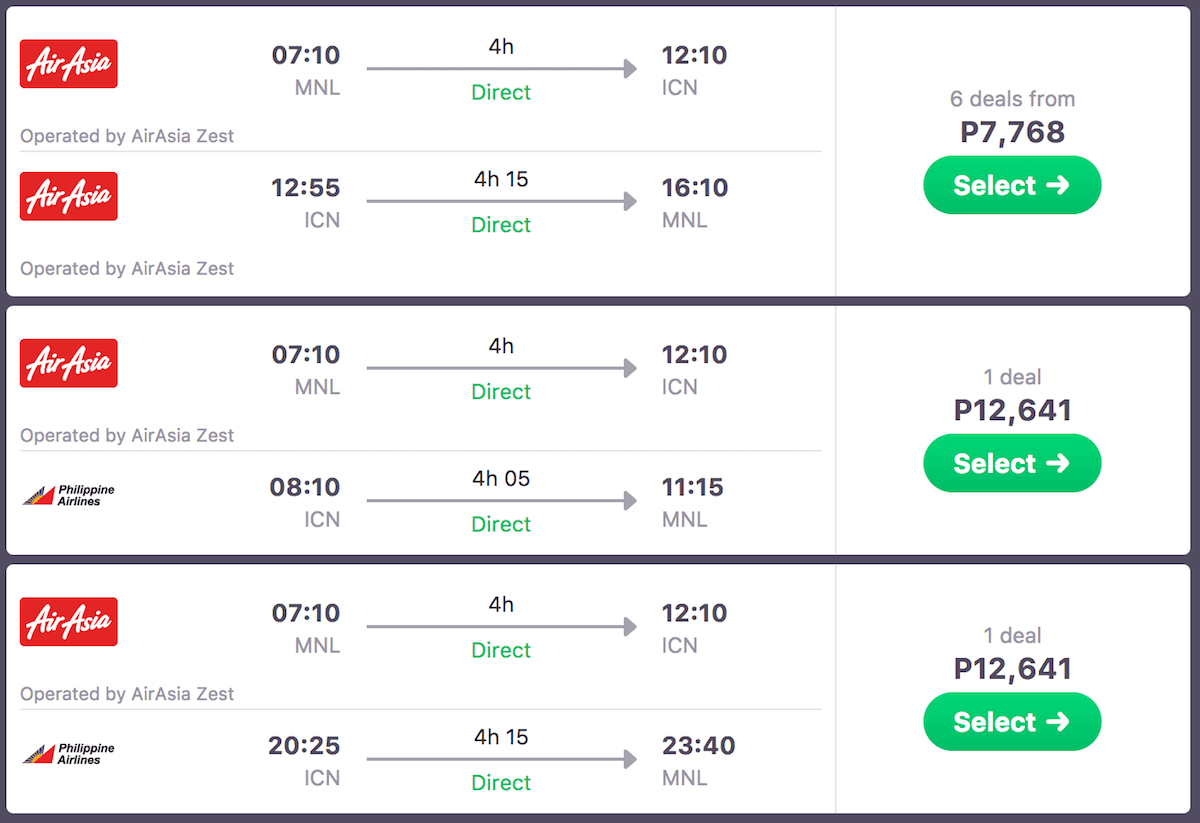
Kuala Lumpur to Incheon (Seoul)
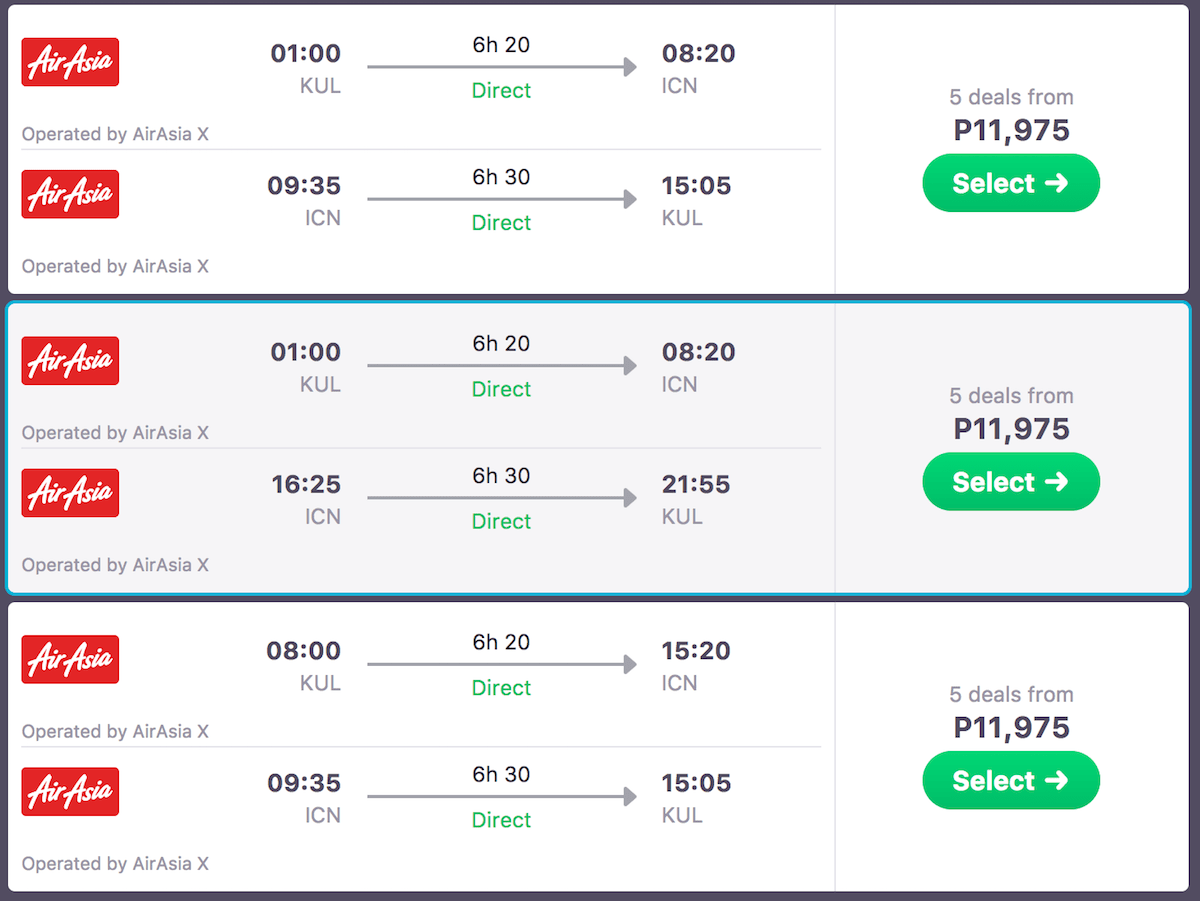
Where to Stay in Seoul
Seoul has three major backpacking districts: Jongno, Myeongdong and Hongdae. Which is the best? Well, I hate answering with “It depends,” I would have to say “It depends.” Haha. All these areas are close to major tourist stops, so it will depend on which of these attractions you will visit. But here’s a quick summary.
- Myeongdong . Seoul’s main shopping district, dotted with boutiques and department stores. Close to Myeongdong Shopping Street and Namdaemun Market. If you love shopping, stay here. Check rates of Myeongdong hotels here.
- Hongdae-Sinchon . Seoul’s university belt. This place is driven by Seoul’s youth culture, nurturing a more romantic and underground atmosphere. Lots of creative and quirky shops and food places. Close to: Hongik University Street, Hongik Mural Street, and Ehwa Women’s University. If you’re a foodie, stay here. Check rates of Hongdae hotels here.
- Jongno . Seoul’s historic core. Its map is littered with shrines, temples, and other traditional sites. In fact, four of the city’s five grand palaces can be found in Jongno. It is also where the Bukchon Hanok Village, Gwangjang Market, and Insa-dong are located. If it’s your first time in Seoul, stay here . Check rates of Jongno hotels here.
I have experienced staying in all three districts, and I personally prefer Jongno . There’s just so much to see and explore within walking distance.
Where We Stayed in Seoul
Here are the hostels and a hotel that I have tried. You can read our reviews here: Where We Stayed in Seoul
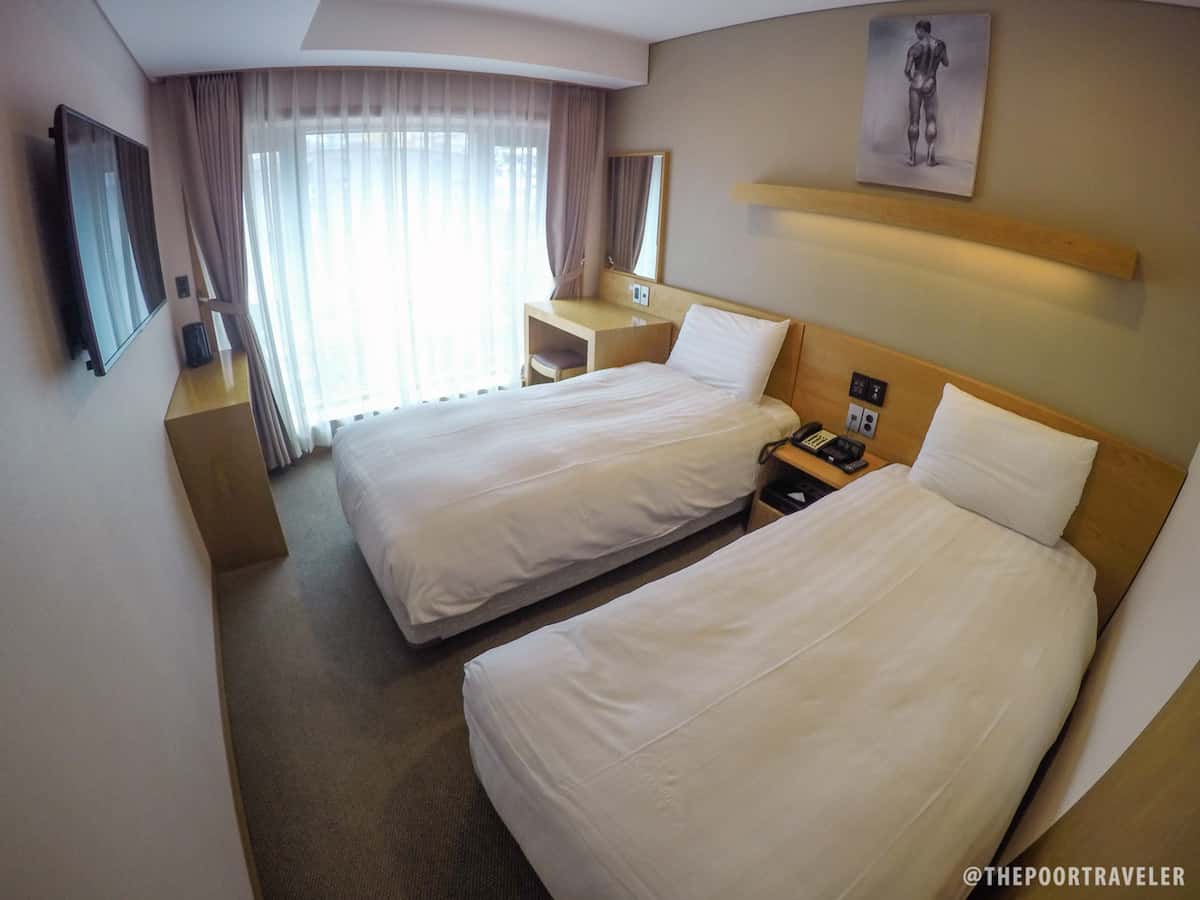
- Namsan City Hotel Myeongdong . Check Rates .
- Hongdae Pencil Guesthouse . Check Rates .
- Fully Hong Hotel . Check Rates .
Top Budget Hotels Under $60 in Seoul
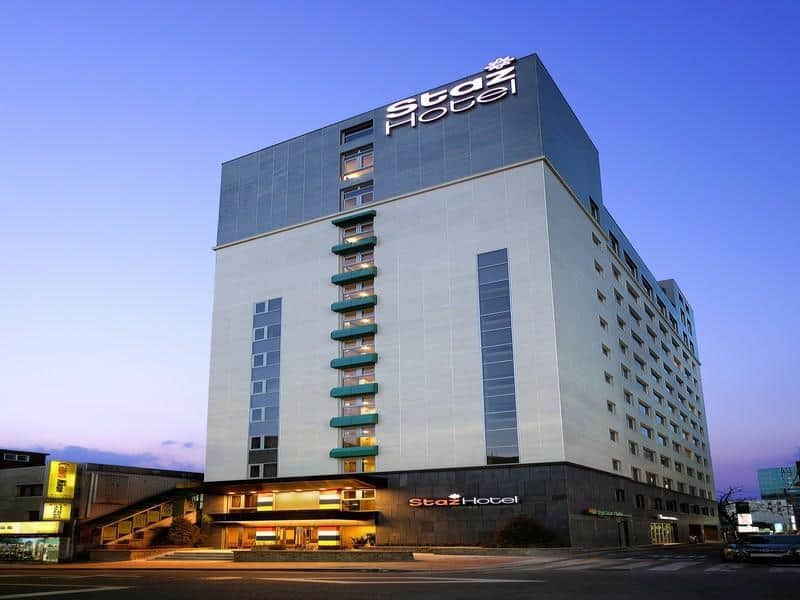
- Staz Hotel Myeongdong II . Check Rates Here
- Makers Hotel . Check rates or book here .
- HOTEL GS Jongno . Check rates or book here .
- Youngbin Hotel . Check Rates Here
Top Seoul Hostels
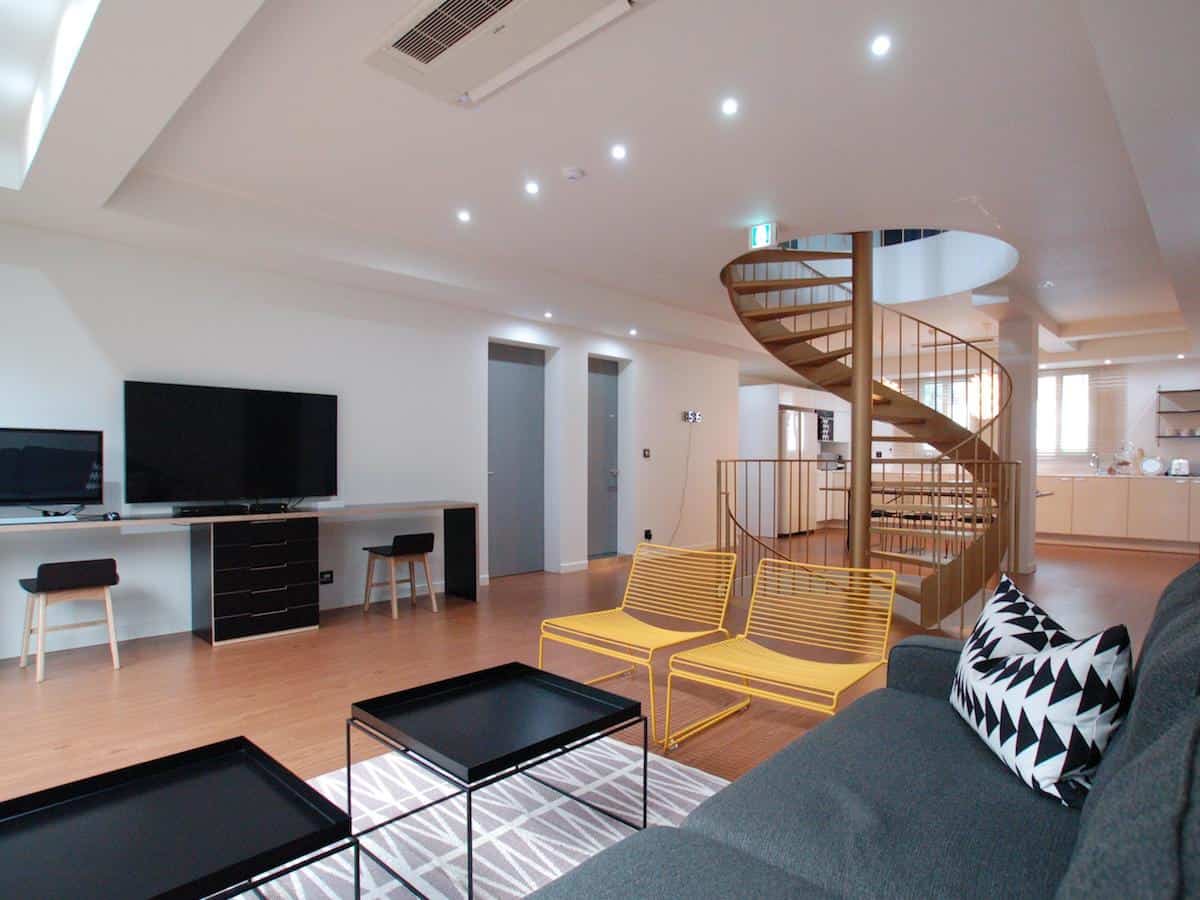
- YE4 Guesthouse . Check Rates .
- Gateway Korea Guesthouse . Check Rates .
- Brownie Guesthouse . Check Rates .
- Hostel HARU . Check Rates .
Search for more Seoul Hotels
How to get from incheon airport to seoul city center, incheon airport to seoul by train.
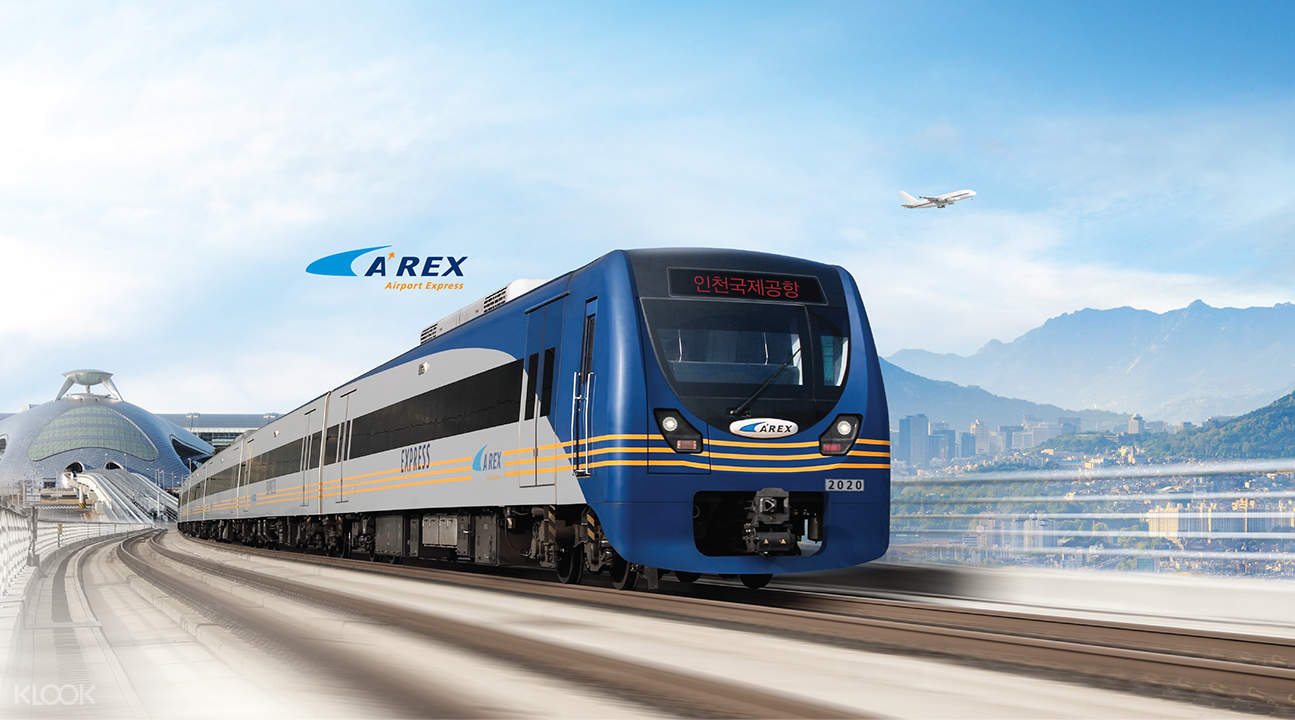
The Airport Railroad Express (AREX) connects Incheon Airport to Seoul city center. It has two types: EXPRESS and ALL STOP.
The fastest way to reach the city is by taking the AREX EXPRESS Train. But the cheapest way is to take the ALL STOP Train.
- AREX ALL STOP Train. The Cheapest Option. Will stop at all 12 stations before arriving at Seoul Station. It’s 15 minutes slower (travel time: 58 minutes), but costs only ₩4250.
Incheon Airport to Seoul by Bus
By bus, if your hotel is close to one of the many bus stops scattered throughout the city. I say it’s easiest because there is no need to switch trains. I personally prefer this method because I despise transferring to another train line when I have 20+++ kilos of baggage on my back. The good news is, the three main backpacking districts in Seoul have their own bus stops! Here are the buses you need to catch:
- JONGNO : Bus 6002 (at Gate 5B or 12A). Get off at Jongno 1, 2, 3,4,5, or 6, whichever is closest to your hostel/hotel. Last bus: 11:30pm. Fare: ₩10,000.
- HONGDAE : Bus 6002 (at Gate 5B or 12A). Get off at Hongik University Station. Last bus: 11:30pm. Fare: ₩10,000.
- MYEONGDONG : Bus 6015 (at Gate 5B or 11B). Get off at Myeongdong Station. Last bus: 10:50pm. Fare: ₩15,000.
If your hotel is closer to a subway station than the bus station, then take the train instead.
Pocket Wifi Rental and Data SIM in Seoul
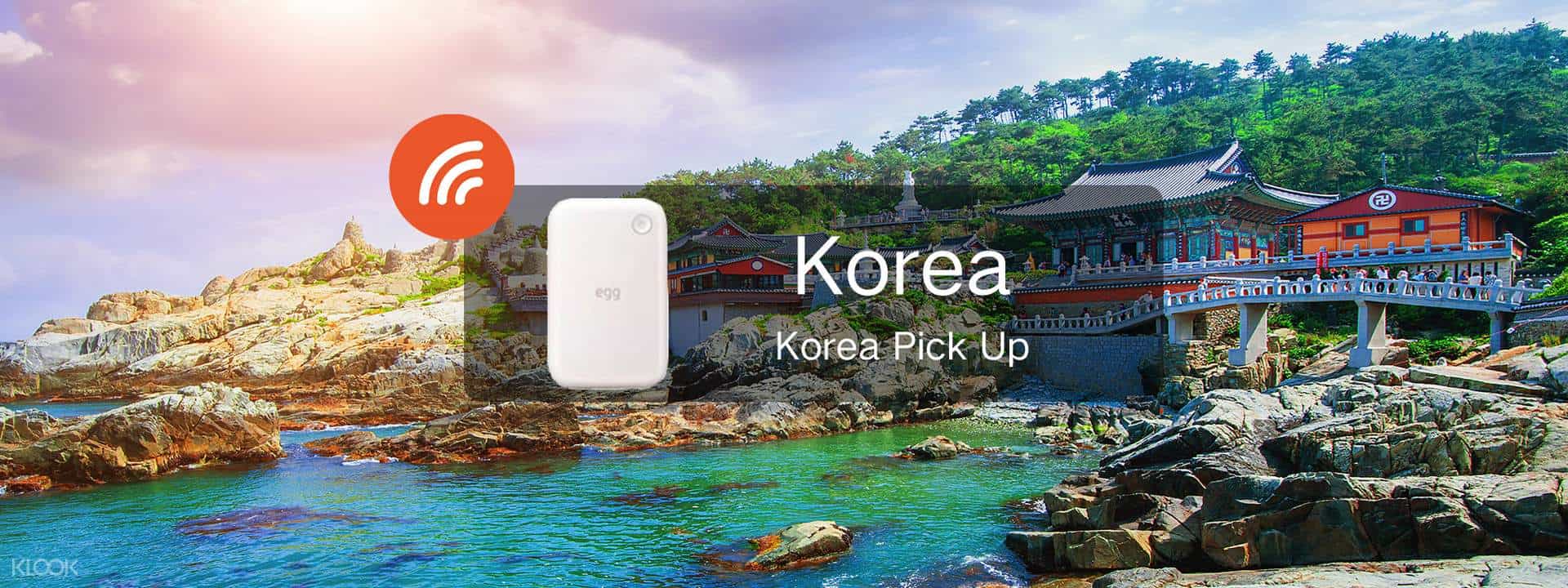
South Korea has the fastest internet connection in the world! Most establishments like fast food restaurants and cafes offer FREE wifi, too.
But if you want to make sure you’re connected all the time, you can buy a 4G SIM Card or rent a Pocket Wifi.
How to Get Around Seoul
You’ll find Seoul an extremely walkable city. Walk when you can. If you’re staying in Jongno, most historic attractions are within walking distance of each other. Otherwise, there’s always the subway, which makes Seoul-searching a walk in the park.
Seoul’s expansive subway system is the third largest in the world. It consists of 14 lines criss-crossing underneath the vibrant city. It looks intimidating when you look at it, but it’s actually pretty easy to get the hang of. It uses cards that require a ₩500 deposit, which can be refunded after the ride.
Before the trip, I encourage you to download a FREE app called Subway Korea . It is available for iOS and Android . Here’s how to use it.
- Open the app . You will be greeted by Seoul’s complicated subway map.
- Find your station of origin and tap it. It will reveal options. Choose Departs From .
- Find your destination station and tap it. Choose Arrives at .
- Choose between the route that will get you there fastest and the route that will make the fewest stops .
It will then tell you the following:
- The estimated travel time (top of the screen)
- Number of stops (top of the screen)
- Fare (bottom, in green)
- The recommended route
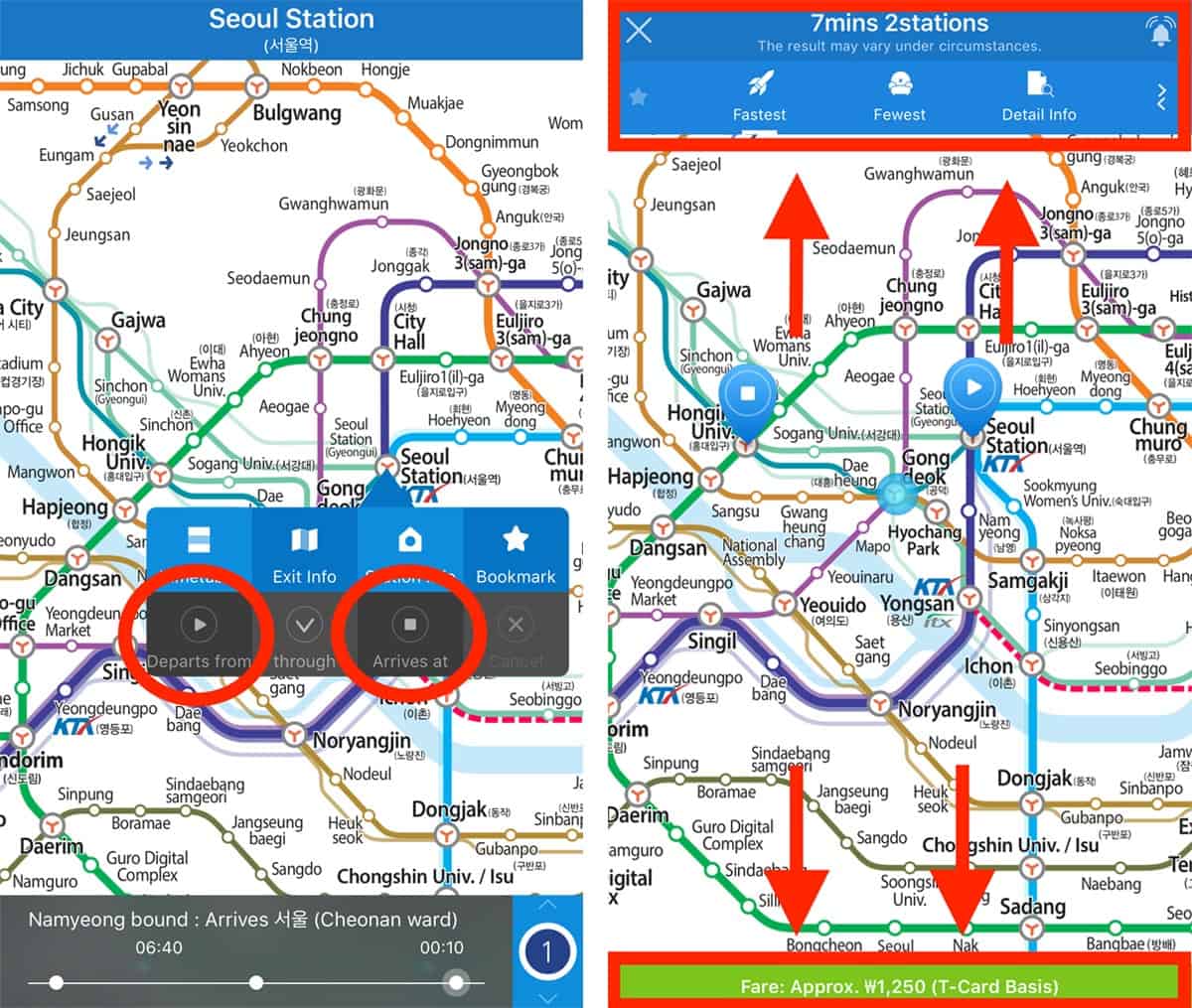
Here’s how to use Seoul’s subway system.
- Find a single journey traffic card ticket machine at the station.
- Select your destination.
- Select the number of tickets.
- Insert payment + refundable deposit of ₩500.
- Collect the single journey traffic card that will be released.
- After your ride, you can get the ₩500 deposit from one of the payment return machines at your destination.
Each station stems into several routes that lead to exits that are far apart. Check the map displayed near the gates to make sure you’re taking the right exit. Often, signs leading to key tourist attractions are found around the station. Also, when walking inside train stations, keep right.
There are prepaid cards available at every station, too. One of the most popular is the T-Money Card . It will save you ₩100 per ride, which isn’t much, but it’s convenient because you don’t need to get a ticket every single time. Another great thing about it is its coverage. You can use it on trains AND buses in many cities including Seoul and even Busan. Just make sure you load it with just enough credit so you don’t need to worry about getting a refund.
Discover Seoul Pass
If you have a pretty packed itinerary, you might want to consider purchasing a Discover Seoul Pass , which was created by the Seoul Tourism Organization specifically for foreign tourists. You can choose between the 24-hour pass and the 48-hour pass .
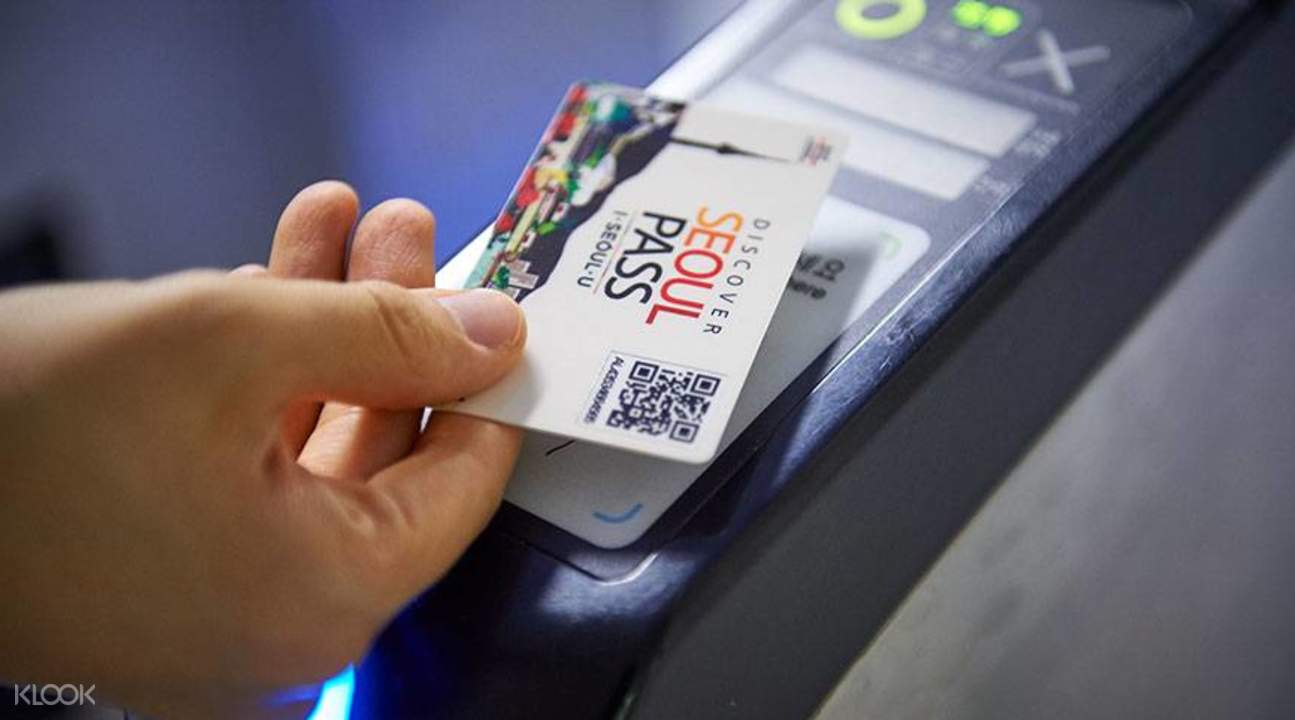
Here are some things that the Discover Seoul Pass can do for you:
- FREE access to 22 key attractions like the palaces and shrines, specialty museums like the TrickEye Museum in Hongdae, N Seoul Tower Observatory using only one card.
- Access to the Seoul City Double Decker Tour Bus
- Comes with T-Money (which I discussed above). But you need to top up before use. If you don’t use all credits, you can refund the remaining balance.
- Can be picked up at Incheon Airport at the time and date you specified
Here are some of the tourist sites that are covered by the Discover Seoul Pass:
- N Seoul Tower (Observatory)
- Trickeye & Ice Museum
Gyeongbokgung Palace
Changdeokgung palace.
- Changgyeonggung Palace
You can get the Discover Seoul Pass in advance with Klook!
Places to Visit in Seoul
Below are some of the tourist attractions in the city and the nearest subway station.
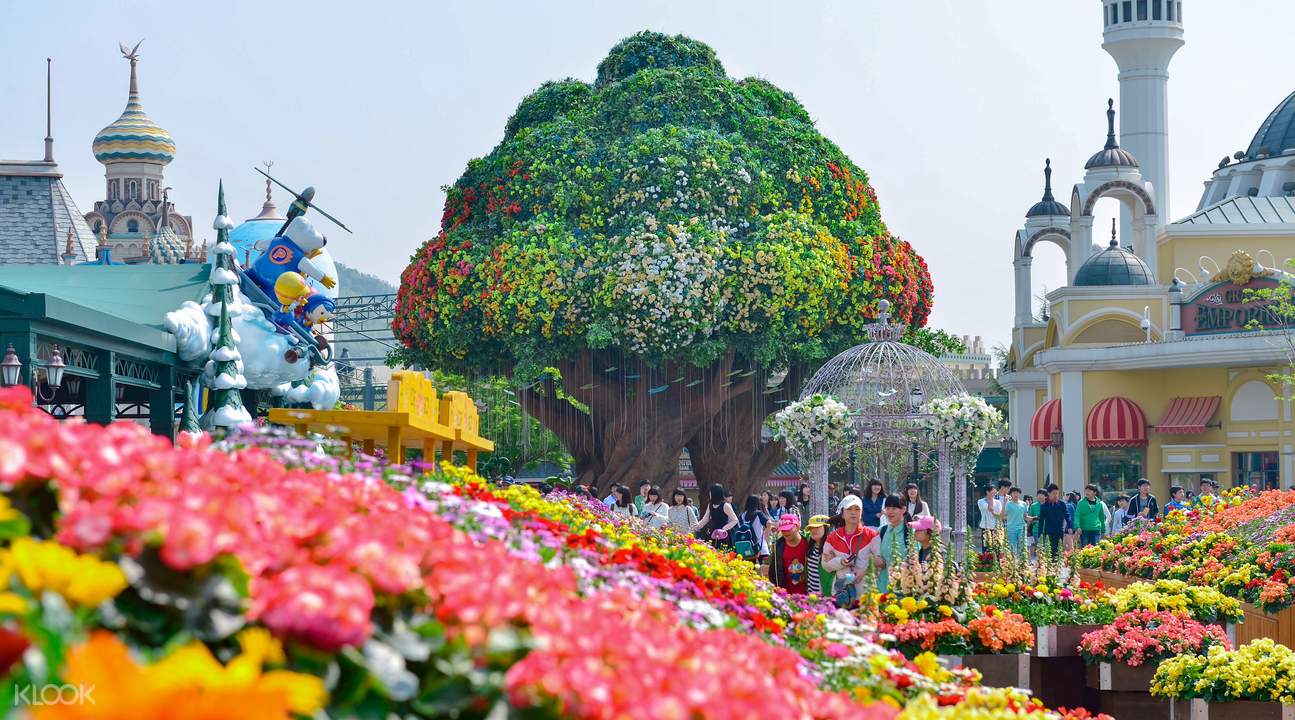
Everland is Korea’s largest theme park. Admission Fee: Adults, ₩52,000; Children, ₩41,000. Nearest Station: Jeondae-Everland (Yongin EverLine, Exit 3).
Klook offers discounted tickets if you buy online!
If you don’t want to bother with the getting there part, you can book an Everland Day Tour instead, which includes the following.
- Admission ticket
- Transportation from Seoul and back
- Tour guide service
This is great if you want to catch the fireworks display at night because you won’t need to compete with the crowd for transportation back to the city. They use a shuttle bus, which can pick you up in Hongdae, Myeongdong or Dongdaemun. Book Below!
Lotte World
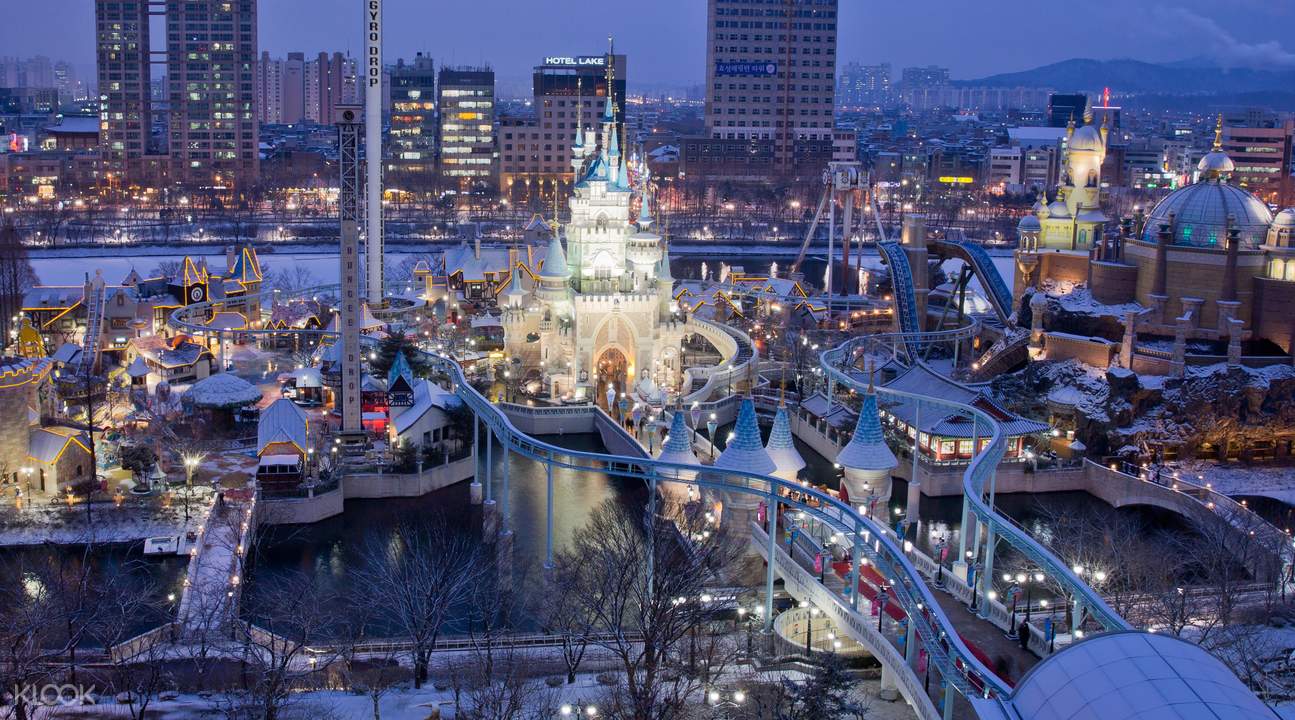
Lotte World is another theme park that is great for kids. Admission Fee: Adults, ₩52,000; Teens, ₩45,000; Children, ₩41,000. Nearest Station: Jamsil (Line 2, 8; Exit 4)
N Seoul Tower
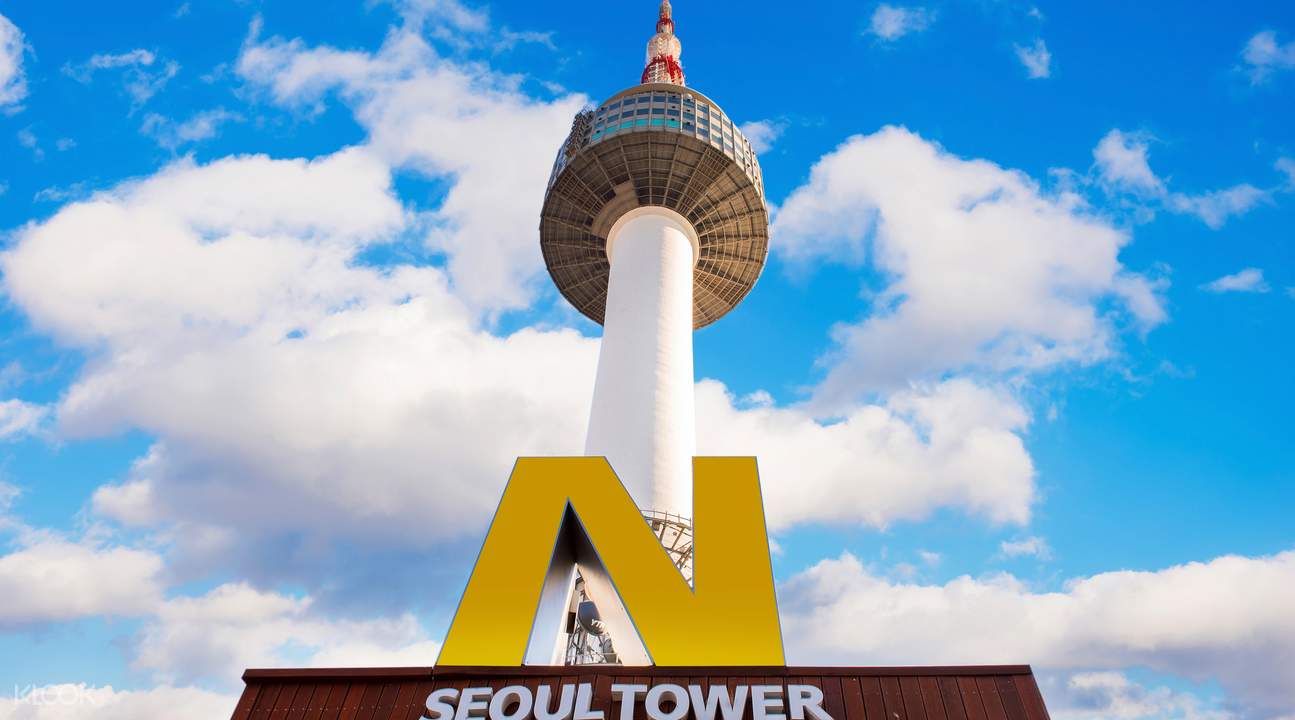
N Seoul Tower , the city’s iconic skyscraper that allows breathtaking views of the city. It also has a revolving restaurant. It’s accessible by bus, but a scenic approach is by cable car. The boarding station is located 15 minutes from Myeongdong Station (Line 4, Exit 3). Just walk down the street on the right side of Pacific Hotel and you’ll find it soon after. Admission Fee: Adults, ₩10,000; Children, ₩8,000.
Get a discount if you purchase your tickets online with Klook! On top of that, you also get a ₩5,000 shopping coupon that you can use at Namdaemun Market for FREE!
TrickEye 3D Museum + Ice Museum

A “trick art” museum for wacky photos! It’s located in Hongdae. There’s also an annexed Ice Museum. Nearest Station: Hongik University
Hanbok Experience
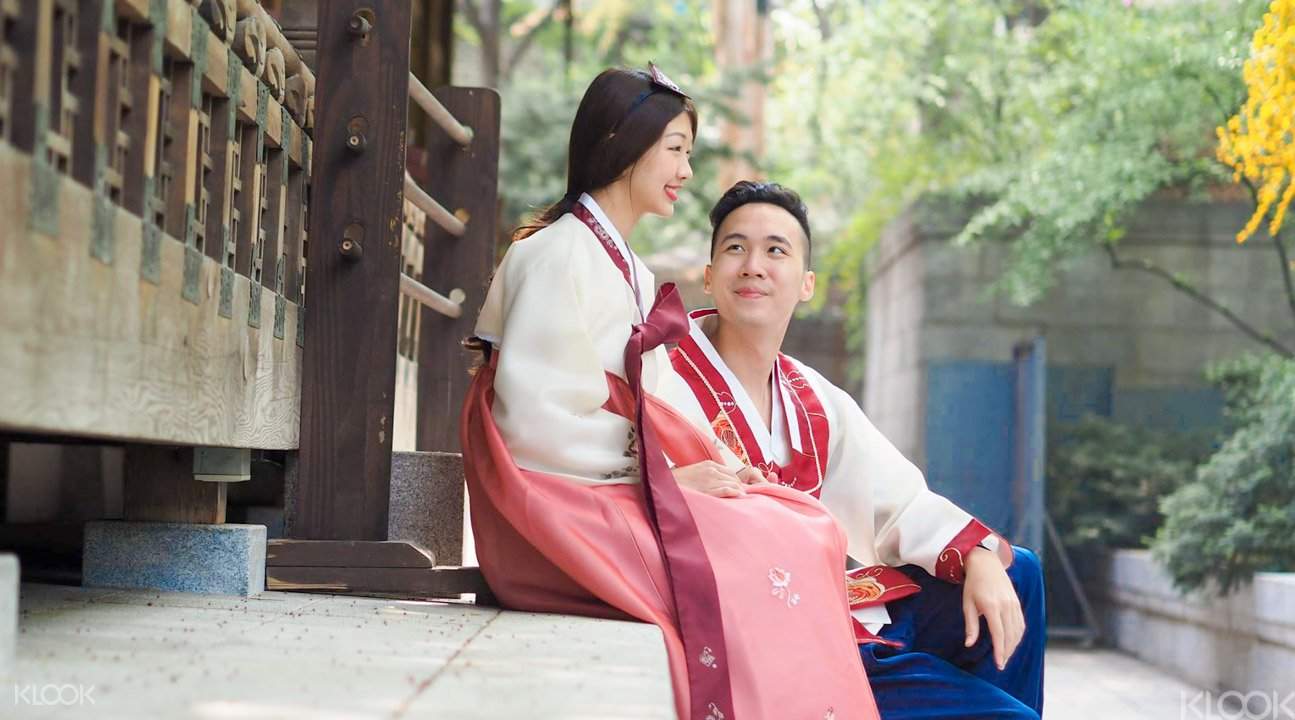
Did you know that you can enter Seoul’s palaces and shrines for FREE if you’re wearing hanbok? You can rent a hanbok for 4 hours or 24 hours!
The grandest among the city’s five important palaces.
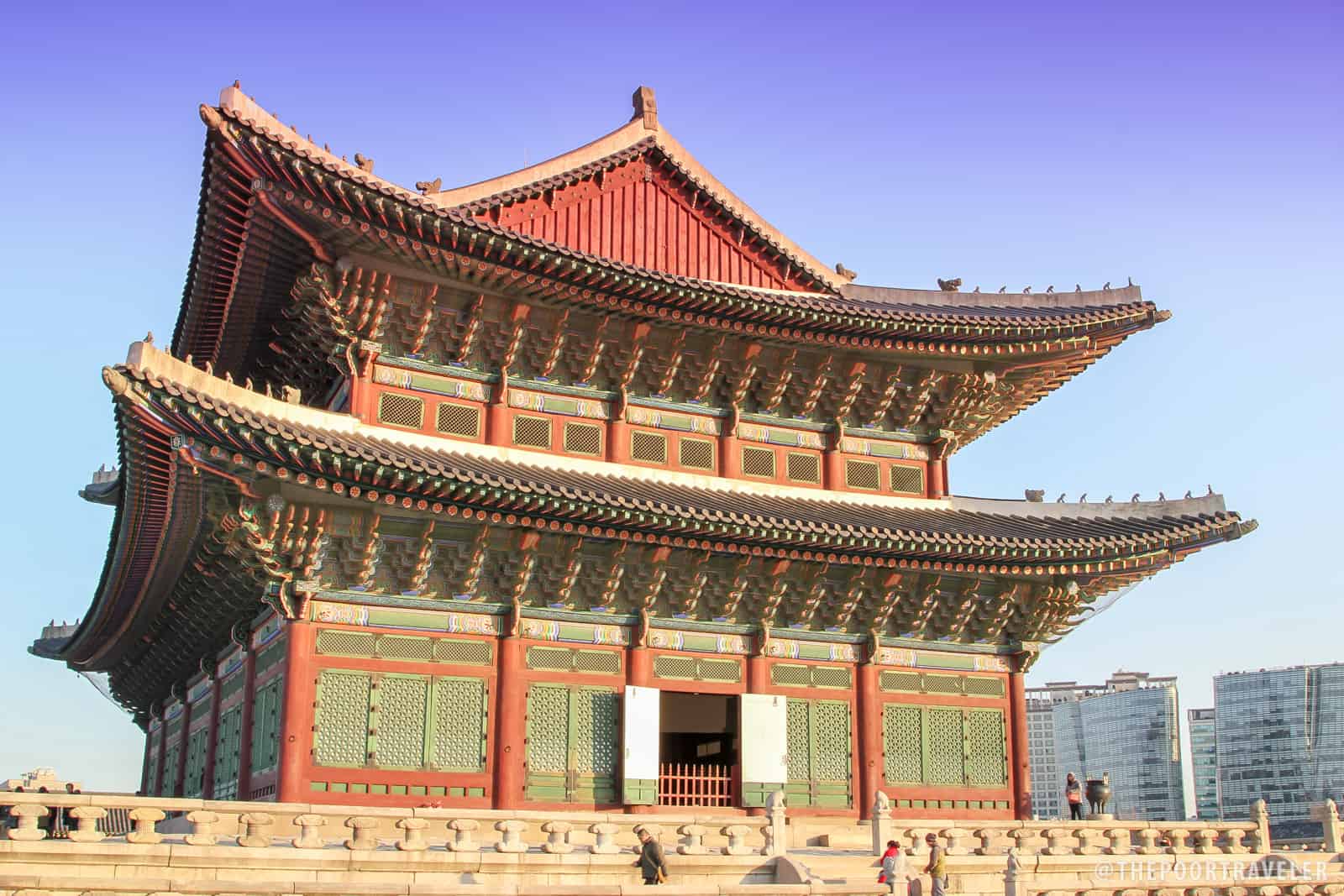
Admission fee: Adults (19-64yo) ₩3,000, Youths (7-18yo) ₩1,500. Nearest station: Gyeongbokgung Palace (Line 3, Exit 5)
A well-preserved royal villa that has been standing for more than six centuries.
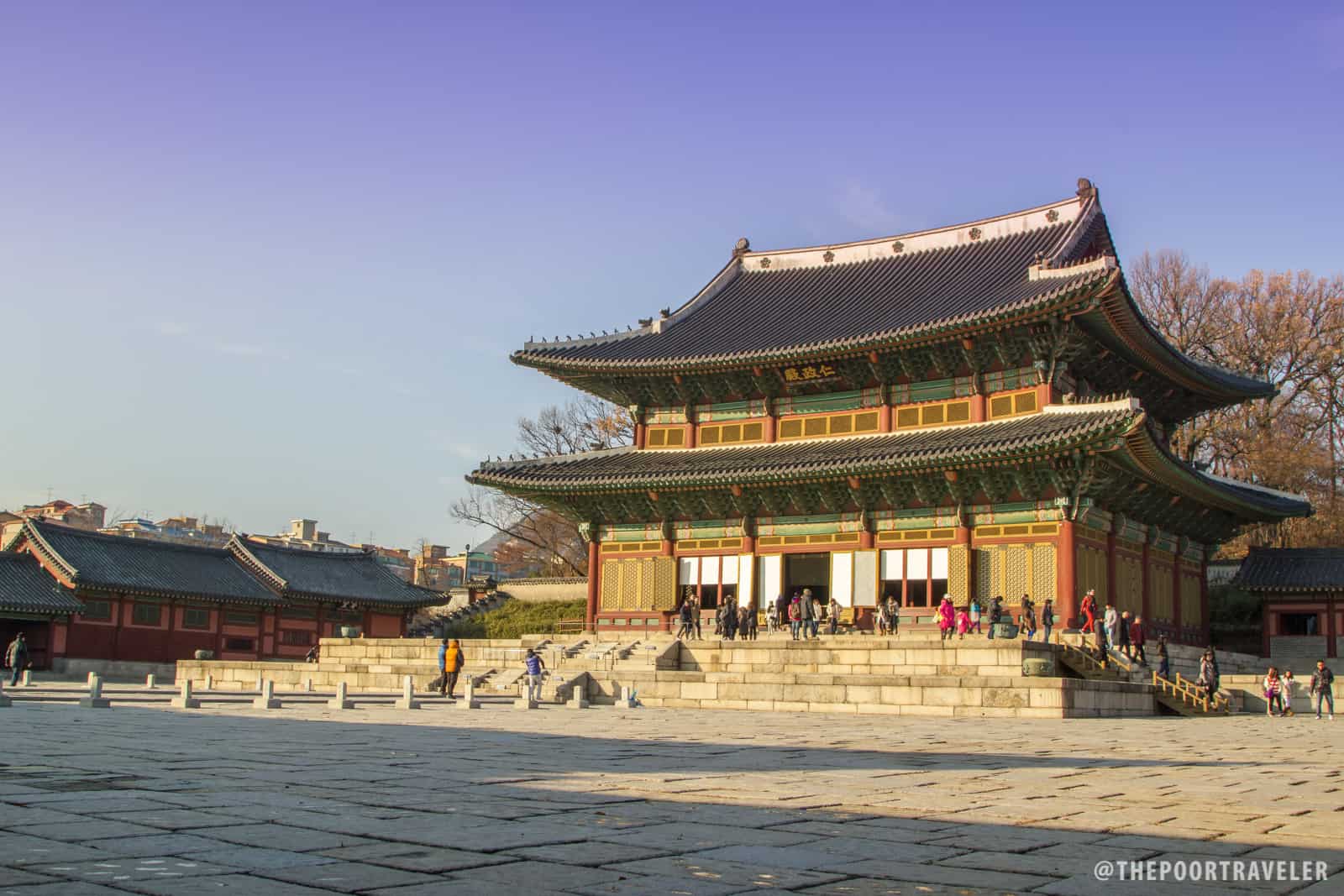
Admission fee: Adults (19-64yo) ₩3,000, Youths (7-18yo) ₩1,500. Nearest station: Anguk (Line 3)
Other Seoul Attractions
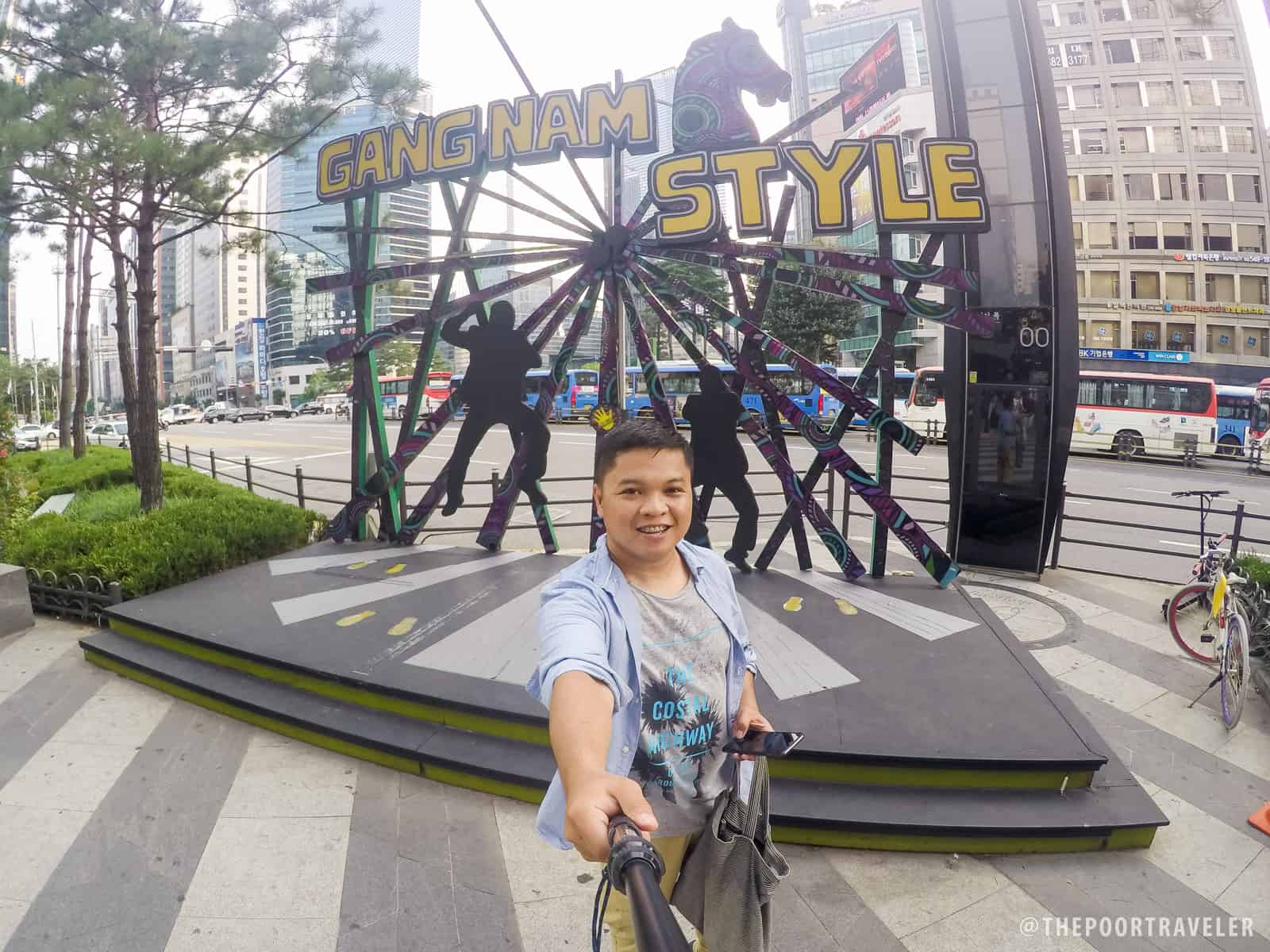
- Gangnam . Prior to the global success of PSY’s Gangnam Style, Gangnam has always been popular among locals for social gatherings and events. Admission Fee: FREE Nearest station: Gangnam (Line 2, Exit 10 or 11)
- Gwangjang Market . Built in 1905, it is Seoul’s oldest traditional daily marketplace. It’s mostly a food market so make sure you’re hungry when you visit. Entrance Fee: FREE Nearest stations: Jongno 5-ga Station (Line 1, Exit 8) or Euljiro 4-ga Station (Lines 2 or 5, Exit 4)
- Myeongdong , one of Seoul’s main shopping districts! If you’re after branded clothes, mid-range restaurants, cosmetic products, and all sorts of street food, this is the place for you. Admission Fee: FREE Nearest station: Myeongdong (Line 4, Exit 6).
- Ewha Women’s University . Founded in 1886, it is Korea’s first educational institute for women. The area around it is a popular shopping destination, too. You’ll find a whole bunch of accessories and footwear, and quirky apparel. Since they cater to students (mostly), prices are much friendlier! Entrance Fee: FREE Nearest station: Ewha Womans University Station (Line 2, Exit 2 or 3)
- Hongdae . The epicenter of Seoul’s youth culture, it is a place for many students’ self-expression. Lots of creative shops and quirky food places. Visit on a Saturday, when the Hongdae Free Market comes to life. It is a flea market that offers some unique items that are often handcrafted by young student artists. Entrance Fee: FREE Nearest Station: Hongik University (Line 2, Exit 9)
- Bukchon Hanok Village harbors traditional houses called hanok, the history of which can be traced back to the Joseon Dynasty. Many of these houses also function as restaurants and shops. Entrance Fee: FREE Nearest station: Anguk Station (Line 3, Exit 1 or 2)
Day Tours from Seoul
Many other attractions outside Seoul Capital Area are easily accessible if you want to do it DIY-style.
But you can also join a group tour if you want a hassle-free experience. Many of these tours will provide transportation with hotel pickup and drop off and entrance tickets.
Nami Island
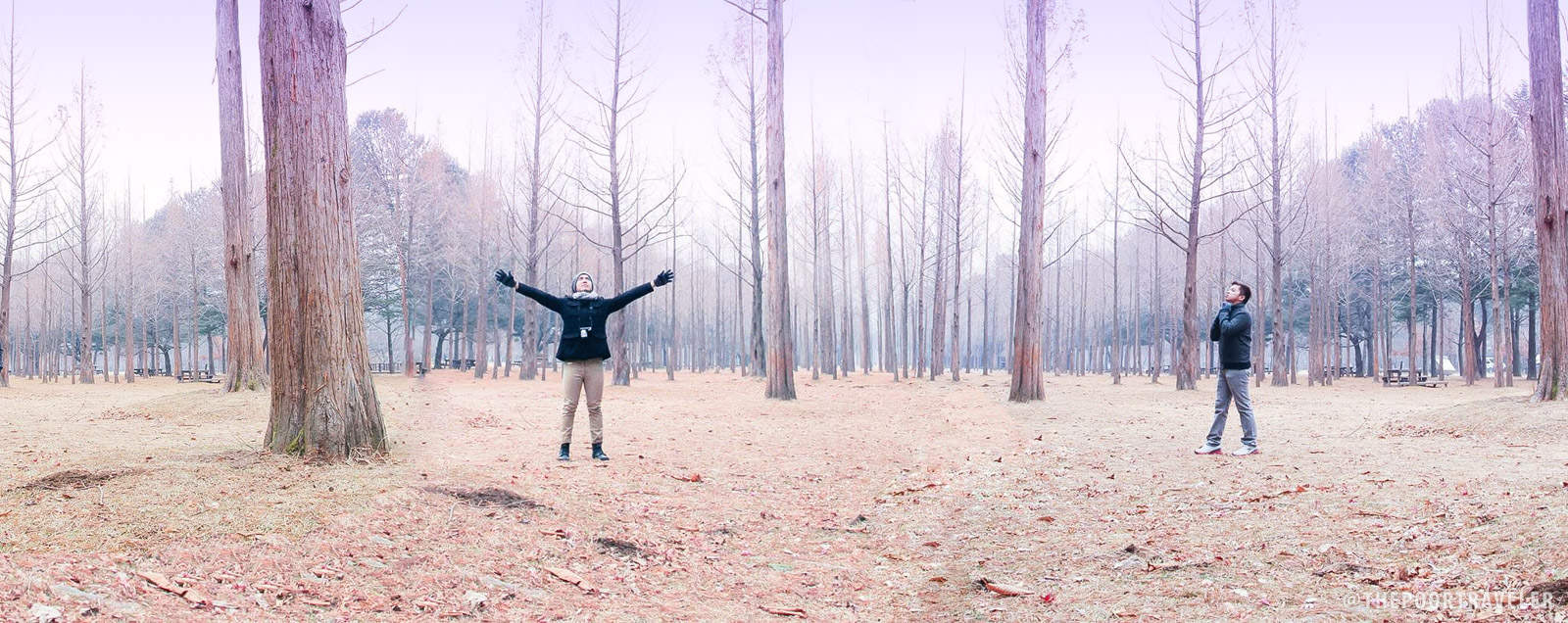
Nami Island , a half-moon shaped island in the middle of the Han River in Chuncheon. It became the final resting place of General Nami, a well-known historical figure during Joseon Dynasty. Foreigners are most familiar with it as the filming location of Winter Sonata , a Korean TV series (koreanovela) that became a hit all over Asia.
How to get to Nami Island : Travel by train to Gapyeong Station. Walk or take a cab from the station to the ferry wharf, where you can buy tickets to the island. You can also travel by bus. Catch the shuttle bus in Insadong (near the West Gate of Tapgol Park) or Sungnyemun Square Bus Stop in front of Namdaemun Market. Bus leaves at 9:30am. Roundtrip fare is ₩15,000. You can reserve a bus seat by emailing [email protected] or calling +82-2-753-1247.
Entrance Fee : ₩13,000.
If you want to book a group tour instead, Klook bundles Nami Island with Petite France, a French-village theme park, so you get to see two attractions in one day. There’s no hotel pick up for this but you will be meeting your guide at a convenient location in Seoul. Entrance fees are already covered.
DMZ Tour and Panmunjom Tours (and See North Korea)
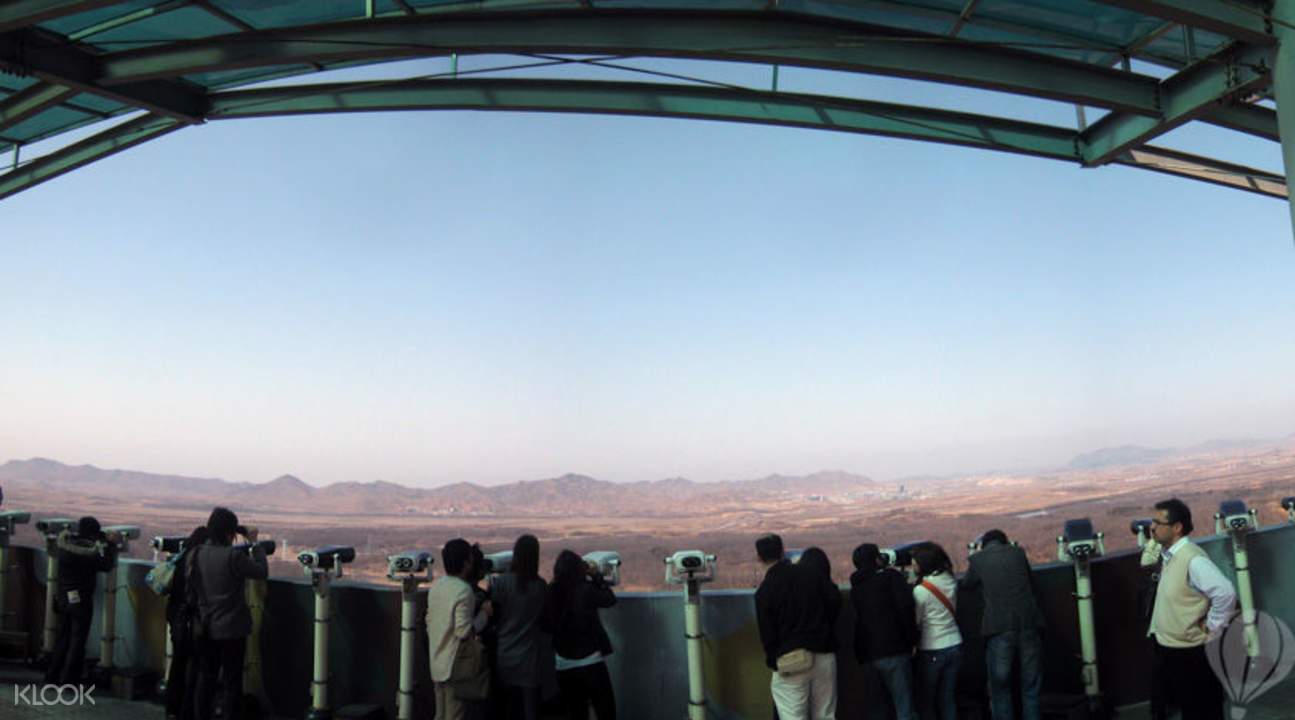
Korean Demilitarized Zone (DMZ) and Panmunjom. . Learn more about the Korean War and how these places came to be. You can also take a glimpse of North Korea from the Dora Observatory. DMZ and JSA tours are also offered separately if you want to see just one. Often, reservations have to be made at least 3 days in advance so it is best to book online.
Klook offers two types of tours: DMZ Only Tour and DMZ + Panmunjom .
DMZ Tour (DMZ Only)
- Hotel pick up
- English-speaking guide
- Lunch option
- Inclusive of admission fees
- Visit at Imjingak Park, 3rd Infiltration Tunnel, Freedom Bridge, and the DMZ Exhibition Hall
- A chance to see North Korea through binoculars at Dora Observatory
Slots per day are limited so book as early as you can.
Panmunjom + DMZ Tour
- Enter and see the JSA (Joint Security Area) to see Freedom House and Conference Room. You also get to visit the Bridge of No Return and the Ax Murder Incident area.
- Lunch is included
Boryeong Mud Festival
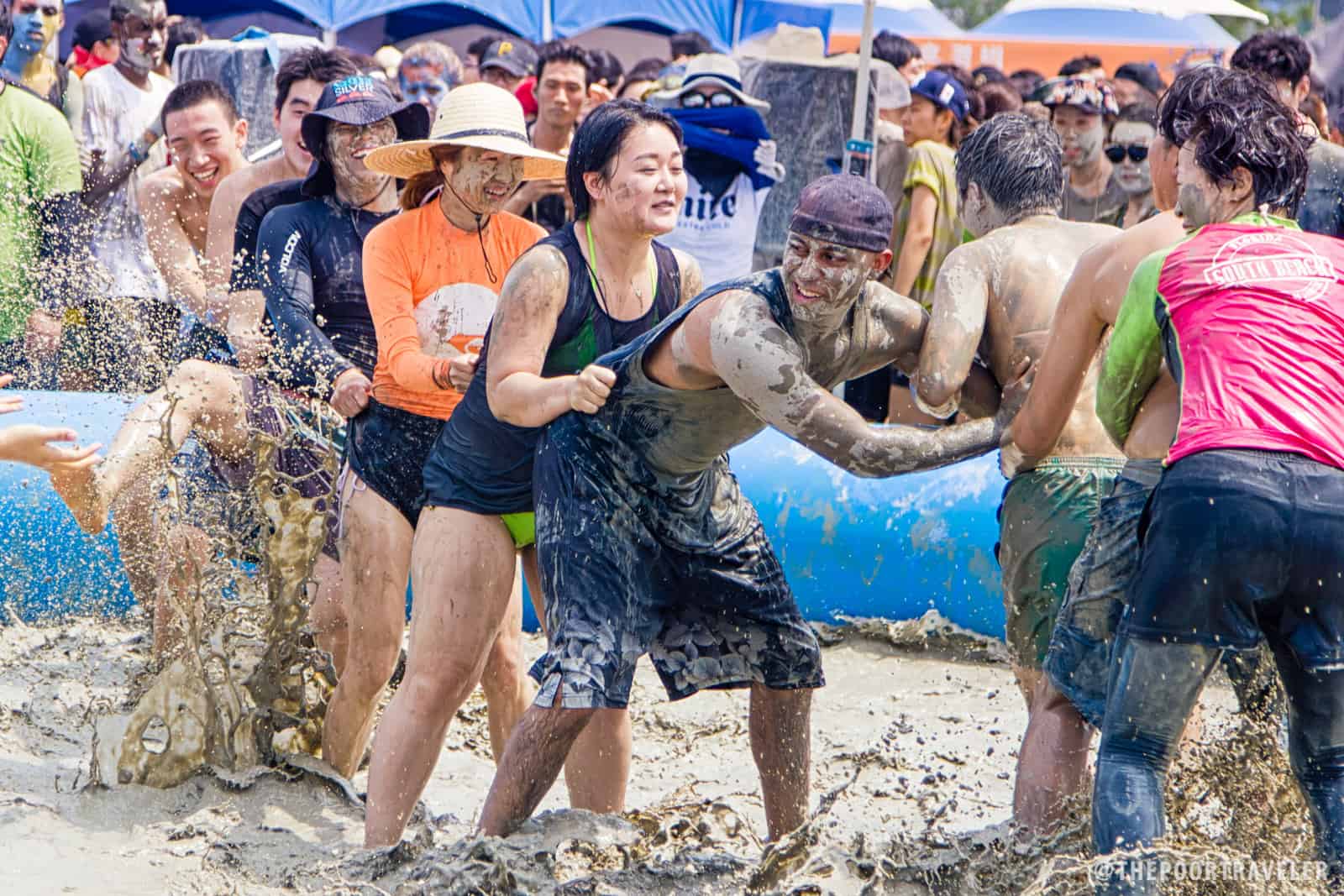
Boryeong , a port city located 3 hours from Seoul, is most famous for the Boryeong Mud Festival, which happens in July. Koreans sometimes refer to the place as Daecheon because the present-day Boryeong is a merger between Daecheon City and Boryeong-gun. Hemmed in by the waters of the Yellow Sea in the west, it is a popular summer destination, with Daecheon Beach as a top place to visit. During the festival, giant inflatable slides, a performance stage, and other attractions are set up along Daecheon Beach, where all the fun happens.
How to get there: From Seoul, take the train/subway/metro to Yongmun Station, where you will board a Korail train to Daecheon Station. The Korail train ride takes 2 hours and 40 minutes and costs ₩11,700.
If you’re joining Boryeong Mud Festival for only a day, it may be hard to find accommodations because the prices double. What you can do is just join a group tour which will cover your transportation from Seoul and back. You will also have a guide to help you in storing your things, finding the locker areas, etc.
Where to Shop in Seoul
Aside from Myeongdong and Hongdae:
- Dongdaemun Market . Everything fashion, from the trendiest fabrics to bridal wear. Composed of 26 shopping malls scattered around 5 blocks, housing 50,000 different manufacturers and 30,000 specialty shops. Although best known for wholesale, retail is also alive here. Nearest Station: Dongdaemun Stadium (Line 2, 4 or 5)
- Namdaemun Market . The oldest and the biggest traditional market in Korea, this 400yo shopping mecca houses 10,200 stores across 66,000 sq. m. You’ll find all sort of products here, from clothes to kitchenware to electronics. Nearest station: Hwehyeon (Line 4, Exit 5)
- Insadong . Great if you’re looking for traditional souvenirs such as artworks, ceramics, paper goods, or if you want to try some of its traditional teahouses. If you can, visit on a Sunday, when they close off the road from vehicular traffic. Nearest station: Jonggak Station (Line 1, Exit 3)
More info here: 8 Shopping Places in Seoul
Sample Seoul Itinerary and Expenses
Below is a sample 5-day/4-night Seoul itinerary with breakdown of expenses. This assumes the following:
- You are a group of two.
- You will be staying in a twin room at Fully Hong Hostel.
- You will be using a T-Money card (T-Card).
- Your meal allowance is limited to only ₩5000 for breakfast and ₩15000 for lunch and dinner. It’s actually too much for me considering that you will find a bowl of delicious bibimbap for only ₩5000. But I think it’s better to overestimate so let’s leave it at ₩15,000. I’m not a breakfast person, either. But fine, let’s still include breakfast for good measure.
Just make necessary adjustments to match your needs.
Pre-trip expenses Hotel booking – ₩116,000 (₩58,000 x 4 nights divided by 2pax)
Day 1: ARRIVAL + GYEONGBOKGUNG 01:00pm – Airport to Jongno-3ga – ₩4150 + ₩1250 02:20pm – Check in at hostel 03:00pm – Gyeongbokgung Palace – ₩3000 06:30pm – Cheonggyecheon Stream 08:00pm – Gwangjang Market – ₩15,000 budget 10:30pm – Sleep!
Day 2: ANGUK AREA + MYEONGDONG 08:00am – Wake up 09:00am – Grab breakfast – ₩5000 09:30am – Bukchon Hanok Village 11:30am – Lunch – ₩15,000 01:00pm – Changdeokgung Palace – ₩3000 06:00pm – Subway to Myeongdong – ₩1250 06:20pm – Dinner – ₩15,000 budget 09:30pm – Back to Hotel
Day 3: NAMI ISLAND 07:00am – Wake up 08:00am – Grab breakfast – ₩5000 08:30am – Subway to Gapyeong Station – ₩2250 10:00am – Taxi to ferry wharf – ₩3000 10:20am – Buy Nami Island ticket – ₩13,000 10:50pm – Explore Nami Island 01:30pm – Lunch – ₩15,000 budget 02:30pm – Continue exploring Nami Island 04:00pm – Ferry back 04:30pm – Taxi back to Gapyeong Station – ₩3000 05:00pm – Subway back to city – ₩2250 06:30pm – Dinner – ₩15,000 budget 09:00pm – Sleep
Day 4: HONGDAE & SINCHON 09:00am – Wake up 10:00am – Brunch + Insadong – ₩15,000 budget 01:00pm – Subway to Ewha Women’s University – ₩1250 01:30pm – Ewha Women’s University 02:30pm – Subway to Hongik University – ₩1250 02:45pm – Seoul Trick Eye Museum – ¥15,000 05:00pm – Explore Hongdae 08:00pm – Dinner – ₩15,000 budget 10:30pm – Back to hotel – ₩1250
Day 5: PACK UP + DEPARTURE Train back to Airport – ₩5400
This itinerary will cost you ₩292,000 (USD 256, EUR 226, SGD 355, PHP 13,700), excluding the airfare.
You can still bring down the cost by staying in a dorm (and there are great options in the city), skipping the Trick Eye Museum (it’s not really unique to Seoul), or cutting down on your food budget (Please don’t. Korean food is awesome!)
If you’re coming from Manila and you’re able to snag PHP7700 fare, the total cost of this trip is PHP 21,400 .
For my first trip, I got my plane tickets from a SEAT SALE and paid only PHP 6000, hehe. Add the travel tax (which was being collected separately at the time) and the total is pretty much the same.
More Tips for the Poor Traveler
- Changdeokgung and Gyeongbokgung are the best palaces , but if you’re interested to explore more + Jongmyo Shrine, get an Integrated Palace Pass. If you buy individual tickets, the total will be at ₩14,000 but the palace pass is only ₩10,000.
- Walk when you can . Like I said, Seoul is very walkable and you’ll discover something along the way. In the itinerary above, I included the fare for the subway ride from Ewha University to Hongik University, but in reality I just walked. I also never used the subway to go around the Jongno area.
- Get a T-Card . It will save you ₩100 for every ride. But I said that already.
- If you’re on a really tight budget, you can skip restaurants altogether and just eat at Gwangjang Market (considerably cheaper) or munch on street food because they’re pretty tasty too. But if you can afford it, spend! For me, Korean cuisine is one of the best in the world! I’m salivating right now just typing this. (Sorry about the mental image.) Hahaha.
Updated: 2️⃣0️⃣1️⃣8️⃣ • 4️⃣ • 2️⃣0️⃣
More Tips on YouTube ⬇️⬇️⬇️
Is this post helpful to you?

Related Posts:
- NAMI ISLAND TRAVEL GUIDE with Budget Itinerary
- TRICK EYE MUSEUM in Seoul
- BORYEONG MUD FESTIVAL: Budget Travel Guide & Itinerary
- WHERE TO STAY IN SEOUL: Myeongdong, Jongno or Hongdae?
- SEOUL: Top 10 Budget Hotels Under $60
- INCHEON AIRPORT TO SEOUL (Myeongdong, Hongdae, Jongno): The Cheapest Way
- SAMPLE SEOUL ITINERARY (with Costs)
- KOREA FOR KIDS: 10 Family-Friendly Attractions in Seoul

- Recent Posts
- 2024 Resorts World One HONG KONG CRUISE Guide for First Timers - 13 April 2024
- FLIGHT RESERVATION for VISA • How to Get Dummy Ticket for Schengen, Canada, China and Other Visa Applications - 22 March 2024
- 2024 Cebu Pacific Promos & PISO SALE with List of Covered Destinations - 4 March 2024
Thank you for generous people like you!! this is very informative and helpful
No prob, James!
Is it true that there is one card that you can you purchase then it will allow you to enter most of the tourist attractions? Like it’s valid for 24 hours. I heard something like that. Can you help me?
South Korea is great. Thanks for the guide and cool pics of their traditional parade.
Planning to explore the area around Ewha and Hongdae when visiting Seoul soon! How long does it take to walk from Hongdae to Ehwa?
It’s gonna be a long walk, probably 40 minutes to an hour, if I remember correctly. You can take the subway. Hongdae is just 2 stops away from Ewha.
I’d looked for and downloaded several apps for going around Seoul but none was satisfactory. Either they were buggy or the map doesn’t load well enough. I never came across the Subway Korea app though, that seems like something I could’ve used. I ended up using an actual train map from the airport– works but you know, a little less convenient. :)
Really nice overview! I will be going to South Korea this year, now I have some ideas of what I should not miss out on :)
Thank you for this post, it is one of the most useful ones I’ve found! I have a question, is the food budget per person or was it calculated for two people?
Per person. But it has a big allowance already. You can find bibimbap bowls for only 5000 won and street food if you’re on a budget. :)
i’m planning to visit soon, this is a pretty extensive guide thanks!
Hi, me and my former classmates are planning to visit korea next year.Now i am confused about some of the requirements i have read online.I am working in the middle east for the past 9 years and at present,one of the requirements i see is income tax return which as being an ofw i dont have like that.Second, certificate of employment, do i have to ask this from my employer in the middle east? I hope you can enlighten some things about traveling to korea from Filipinos working abroad and on vacation in the Philippines.
Hi Mhel, Same here I’ve been working also as an OFW but I don’t have any idea about the requirements for us who are working abroad. I really want to visit south korea by next year also. I hope someone can help us.
It seems that the requirements you are referring to are the requirements if you will apply your visa in the Philippines. If you are in Dubai UAE, you can apply your visa directly at the Korean Consulate in Dubai and they have a different set of requirements. You can include your ticket to the Philippines if you are going to Korea from the Philippines.
Hi, I am currently working here in Dubai. Have you tried applying for visa from here? I am planning to travel there next year Aug. Do you think how much safe fund do I need to put in my bank account for me to get visa approval. I am only planning let us say 5/6 days (to mention in the application form).. What do you think? :))
Do you need to have a 100.000 PHP before booking and getting Visa to korea? Someone answer me please :D Thanks!
100,000 is safe. But I know people with smaller funds whose applications have been approved, but they have stable jobs and rich travel history. So it really depends on many other factors.
100,000 won or dollar or peso
Hi. My friends and I have stable jobs. But we dont have that high salary to save much money for the visa approval. All my researches show that there’s no definite account value needed but just a show money to fund your trip for how long you want to. If it’s just for three days, would php30k be okay?
Hi Winnie Rose, no, it’s not just about the show money for the trip. While it’s true that there is no definite value, the embassy will look for and into your bank statements and bank certificate and check the average daily balance for the past 3 months. The bank account should have sufficient and consistent funds throughout that period. :)
P. S. I really want snow pouring on my head so we’re planning our trip by nov. 30 to dec2. Usually, will it snow in those days? Thanks
In Seoul? There is a chance but it’s hard to tell. They say that the first snow happens around that time, but back in 2013, I was in Seoul from late November until December 6 and it didn’t snow at all. Snow is hard to predict. It’s like trying to predict if uulan or hindi on November 30. But for better chances, move your travel to a later date.
Hi! can you please give me some ideas how to apply tourist visa in south korea?
We’re planning to travel next year end of March 2018, is this the best time to travel to see cherry blossoms? we’re 2 adults and 1child 12years old, or maybe she’s also adult now.
hope to hear from you. Thank You!
Greetings, Cris
Also, you might want to check out this link for cherry blossom season.
skyscanner.com.sg/news/inspiration/when-and-where-to-see-cherry-blossoms-in-korea-during-sakura-season/
Hello Cris! Do you have a BPI or BDO Gold or Platinum credit card? If you do, it’s easier to get a Visa that way. You can be granted multiple entry for up to 3 years (gold) or 5 years (platinum) for your whole family.
This is Very Helpful Thank You! :)
My Friend and I are Planning to Visit S. Korea on Mid March 2018, Maybe 8-9 days for Seoul and Busan.. If I could get a Visa and Process it on Time ;) i’m only given 30 days Annual Leave from work here in KSA..
Hi! i really enjoyed reading this entry. I was able to book a flight to SoKor for a cheap price and it will be my first time going there not to mention going on solo. Ill be there by Feb 28 to March 5 and my friends told me to pack enough coats since it’ll be winter there by then. I really am hoping you can help me with my Itinerary. it will be Manila to Busan and then Incheon to Manila. It may be too much to ask but can you help me? :)
Hi kaiye, we haven’t been to Busan though. :(
Hello! I’m planning to go to SoKor in June, after my college graduation. I’m worried because, I’m not yet employed during that time and I recently graduated that time so I don’t know if im still considered as a student. If possible what are the requirements I need to bring. Thank you so much po! :D
Just find a sponsor, ideally immediate family, and write a cover letter.
and It is also my first time travelling abroad po :( Thank you for your reply.
Love your blog!!! So resourceful ~ I felt like I went to Seoul with you just by reading it!! The best I’ve ever read ~ My friends & I are visiting Seoul Fall 2018 but I’m really shooting for Spring ~ I will definitely use all the info you have here!! Thanks again & God bless always!!
You’re welcome, Kirei!
Hi Sir, any idea po about the visa requirements for an OFW who wants to travel SK from Phil next year.
BTW, thank you for sharing your experiences, it helps a lot :)))))
Love your blog–very informative and helpful during our stay in Korea—even stayed at Fully Hong Hostel. Really affordable with very accommodating and friendly staff. Budget friendly. Planning to return one day, didn’t really get to go around much. Got to experience the Korean spa (jijinbang?) one morning because the broiler got busted.
Thanks, Karen!

[…] solution: the subway! It’s insanely cheap (about $1-2USD per ride) and insanely convenient. The Poor Traveler blog has some great tips about the app and understanding the […]
Grabeh! Superb! Na amaze po ako sa lahat ng tips mo. Maraming maraming salamat po. Will be visiting Korea May 2018.
Salamat sa pagbisita sa blog namin!
Enjoy Korea!
hi, how much is the soul travel pass? thanks
Discover Seoul pass? P1600+
Hello! Will 95,000 won a day for two people for food and additional attractions is enough money?
That largely depends on your itinerary.
Thanks for all of these information. ^^ It helped me a lot! Will be in SoKor on October and I like Autumn the most.
Yay! Enjoy Korea!
This is the most informative blog I’ve ever read! It has almost all the informations I need for my plan to visit Korea with my partner. Thank you so much for this blog. Thumbs up for the job well done!
No problem! Thanks too for visiting our blog. Enjoy Korea! :)
Hi! What if the school where I am working which is a public school doesnt have a landline number? Can i just include my principal’s mobile number?
Make sure that the fact that the school doesn’t have a landline number is mentioned in the COE.
Pwed po ask kng ano ang weather sa march 26-30?ano po dpat dlhin na dmit?thanx!
When is the best month to visit SOkor?
mainit po ba sa korea pag june? sabi kasi sa forecast maulan sa katapusan ng june. isip ko lang po kung ang ulan nila parang ulan natin na di ka na makakaikot pag umulan
Hi Cha, naku, di ko pa naranasan ang ulan sa Seoul. I’ve been to it in July na rin, which is supposedly the wettest month, pero di pa rin umulan buong week na andun ako, so I have no idea. :(
kasi po end of june ang byahe ko e sabi sa accuweather tagulan. isip ko lang kung accurate po ba ang accuweather (though obviously”accu” e part na ng title :-) naaprub po pala ko thanks sa blog nyo rin :-)
It’s the weather that we’re talking about so it can change any time especially if ganyang kalayo ang forecast. For me it’s reliable if di ganyan kalaki lead time.
Hello! We’ll be in South Korea by next week.. and your blog really helped a lot.. thank you for this!! We will enjoy SoKor because of you informative tips and guides. Thank you. :)
Enjoy Korea!!! :) Let us know how it went after the trip!
H! Ur blog is very informative and helpful. Thanks much for this. I”ll be travelling in sokor this coming sept.27-oct 2, 2018 for our covention in grand international seoul parnas. I just want to ask if u can recommend any travel agency that can cater land arrangement only or can process visa application alone?thank you so much for ur generous assistance.
Hi Lorie, we haven’t really tried applying for a visa via a travel agency so we can’t recommend any. :(
Thank you so much for your Blog. We are traveling to Seoul in November and I am still preparing our itinerary. Your blog sure is a great help. I booked our lodging thru airbnb in Jongno area. I love to walk a lot. Hopefully the weather in the first week of November will allow me to do so. Fighting!
Yay! No prob, Ana Marie! Enjoy Seoul! :D
Wow, this is super helpful! May I ask if you think Lotte World or Everland is worth visiting instead of spending a whole day sightseeing in the city? We’re planning to go on October, just 4 young adults (youngest is 16) so we might not enjoy the rides as much as we would in Disneyland/Universal Studio (bc they have that nostalgic feel).
Hi Audrey, Everland is not just for kids. It has a lot of rides that grownups will enjoy too.
But yes, I would prefer sightseeing in the city to Everland any day.
Visitng Nami Island, would you recommend DIY or join a group tour for a 1st time solo traveler?
Hi Gee, if Nami Island lang, DIY mo na. But if gusto mo rin mag-Petite France same day ng Nami Island, i-group tour mo na lang.
Is Petit France worth it?
This is very helpful. Thanks for sharing!
Very helpful and informative post! Will defs checkout your blog for future travels! :D
Thanks, Desiree!
I love this post esp. yung nasa last portion hehehe. Very informative, thank you sir!
No prob, Kitchie!
You deserve a medal for this post. Truly. What a great piece.
yeah that’s my man whoo
Thank you for the very informative post. I just want to clarify something on the pocket wifi rental. I was about to purchase it from klook but I noticed that pick up is at Incheon International Airport Terminal 2. My arrival would be at Terminal 1. Upon checking, transfer from Terminal 1 to Terminal 2 would be like 15 mins but you have to go through the transfer desk and I don’t want to go through that with a heavy luggage. I think it is more convenient to just ride a bus from Terminal 1 to Seoul. Can you give me advise on the pocket wifi please. Is there any alternative? Thanks.
Hi Renzcy, ay, I haven’t tried anything pa other than yung sa Klook. :(
thanks a bunch for this very thorough info! God bless you on all your travels!
You’re welcome! Thanks din for visiting our blog. :)
Hi.. I just wanted to ask which is better Lotte World or Everland? Thank you.
Everland is bigger and has more rides. Only problem is it’s much farther.
Hi! Thank you so much for this article! I’m planning to travel back to Korea this October 2019 but I haven’t scored plane tickets yet. By any chance, would you have any idea if there are still seat sales where I could book lowfare tickets? Thanks!
Hi yep, marami pang parating. Usually days before a major holiday, may sale mga airlines.
These posts might help: Cebu Pacific: https://www.thepoortraveler.net/2018/03/cebu-pacific-promo-piso-fare/ AirAsia: https://www.thepoortraveler.net/2018/03/airasia-promo-tickets/
THANKS FOR THE INFORMATION IT REALY DO HELP ME. BT JUST ASKING
DO I NEED TO BOOK A HOTEL 1ST BEFORE I APPLY FOR THE VISA?????
KAMSAHAMIDA.
No, no need to book a hotel. But you must have an idea where you plan to stay. You’ll just need the hotel name, address and contact number of where you plan to stay.
First of all, thank you for this very helpful blog about Korea. Marami akong nakuhang tips for my upcoming solo travel sa SoKo this April. :)
Question lang though, yung AREX Train ba is 24 hours open? Kasi my flight in Seoul will arrive at around 10:40pm and I’m not sure if open pa yung AREX Train by the time I arrive in Incheon. And my hotel is in Myeongdong so okay ba na magtrain ako or bus, since medyo late na yung dati ko ng Incheon? Thank you in advance… :)
Hmmm, if hindi madelay yung flight and makalabas ka agad ng Immigration, baka kaya mo pa ang AREX All Stop train kasi hanggang 11:30-ish yun. Yung bus 6015 to Myeongdong din, hanggang 11:15 so baka di rin maabutan.
Di ko alam kung anong pwedeng alternative except maybe take the bus to Seoul Station and then take a cab to Myeongdong from there.
Pls send the u r number
Best blog post I have read, super informative.
Thanks, Gio!
Our family is planning to visit Korea next year after our Hongkong experience this summer. The information above are so detailed and easy to look into that it got me excited, especially seeing that there are also amusement parks for the kids. And of course the possibility of experiencing snow if our timing is just right. Thank you so much for sharing.
Thanks, Syrel!
Na-excite din ako for you kasi I’m also planning to return to Seoul (again!) with the kids in the family. :D
Hello po. Tanong lang. Ok po ba mag book sa. Skyscanner? Thank you po
Hello po. Inaaccept na po ba sa immigration ng SK ang accommodation booking with AirBnB? We are a group of 13, with kids, kaya we decided to book at AirBnB.
WOW! It`s very helpful for me. i really like your post about Korea travel guide. i`m planning to go in Seoul by next year together with my family this is one of my dream to go there.
Thanks, Joyce! Go go go! Happy planning!
Thanks for sharing
Hi which other tourist spot do you recommend isama namin together with everland??
hi mas ok po ba magpapalit ng dollars to won or ok lang kahit peso to won
If peso yung pera mo, i-diretso mo na to won para di ka lugi sa double conversion.
ah ok sige po maraming salamat
hello po. ang pick up nang sim card po nakalagay seoul. but i will be going to gwanju pa po before souel. mero ba pick up sa incheon airport?
Hello po. Im planning to have a tour with my family in seoul. Any idea how much will it cost (visa, airfare, hotel, etc. ) for 2 adults and 3 teens, for about 3-5 days of stay, including fees to a place to visits.. Thanks a lot.
chilling in quarantine in tallinn, estonia, planning my first trip after we open up again and so happy to find your blog. very nicely written, thank you! comparing to average travel blog way more informative and readable!
That’s my mom-in-law’s hometown. I’ve been there once and I wanna go back next year! Thanks Yoshke!
thanks for sharing this.
Such helpful tips!! I love visiting Seoul (and South Korea) in general but it definitely isn’t the cheapest Asia destination. I’ve taken some tips down and hopefully can save a few $$ next time I’m there.
Seoul is my dream destination. I enjoy reading and i’m glad that reach out this amazing post.
Thank you for sharing, Greetings from Canada
Amazing man. I’m planning to visit here next year. The information you provided is quite useful. Thank you alot
Can you send me itenerary for kore tour early nezt year ..january
Featured On

We heard you!
Your comment is now queued for moderation! We’ll try to get back to you soonest. While waiting, follow us on these channels.
Subscribe on Youtube! Follow us on Instagram!

- Travel Planning Guide
How much does a trip to South Korea Cost?

How much money should you budget for your trip to South Korea?
- How much does a one-week trip to South Korea cost?
- How much does a two-week trip to South Korea cost?
- How much does a one-month trip to South Korea cost?
- Hostel Prices
- Hotel Prices
The Cost of a Trip to South Korea
For a trip to South Korea, you should plan for daily costs anywhere between $0 to $0. If there's two of you traveling, your daily expenses could range from $0 to $0. These price ranges are based on the average daily spending of $0 (₩0) per person which comes from the travel expenses of other visitors. These costs include food, accommodation, sightseeing activities, and getting around locally. Keep in mind, though, these figures can vary somewhat based on your individual travel style, level of luxury, and chosen activities. Destinations across the country, such as Seoul and Busan (Pusan), might might vary somewhat from the overall average price, but they usually stick close to this range. Read on for a breakdown of travel typical expenses as well as a comparison of tour prices versus Independent travel.
For budget travelers in South Korea, planning for around $0 (₩0) per day should cover essentials such as accommodations in hostels and budget hotels, affordable meal options, local transportation, and engaging in various activities. If you're a mid-range traveler, setting aside around $0 (₩0) per day would allow for more comfortable stays in typical hotels, dining at regular restaurants, and exploring a diverse range of popular attractions. Luxury travelers, on the other hand, should consider a daily budget of approximately $0 (₩0) to accommodate higher-end hotel stays, dining at nicer restaurants, and indulging in more exclusive private tour options. It's important to note that these price ranges are derived from our extensive travel cost data for South Korea, which is based on valuable insights from other travelers as well as hotel and tour data provided by travel companies. For a more detailed breakdown of travel costs, you can refer to our comprehensive travel cost data for South Korea .
How much does a one week trip to South Korea cost?
On average, visitors to South Korea spend between $0 and $0 for their week-long adventure, with the average being $0. This covers sightseeing, local transportation, food, and accommodations. With a duration of one week, you'll have the opportunity to explore one, two, or even three locations within South Korea, depending on the level of depth you desire for your visit. Some of the most popular places to consider exploring are Seoul and Busan (Pusan) . It's important to note that these figures are averages and can vary based on personal preferences and choices. Ultimately, the goal is to create a memorable and enjoyable experience tailored to your specific interests.
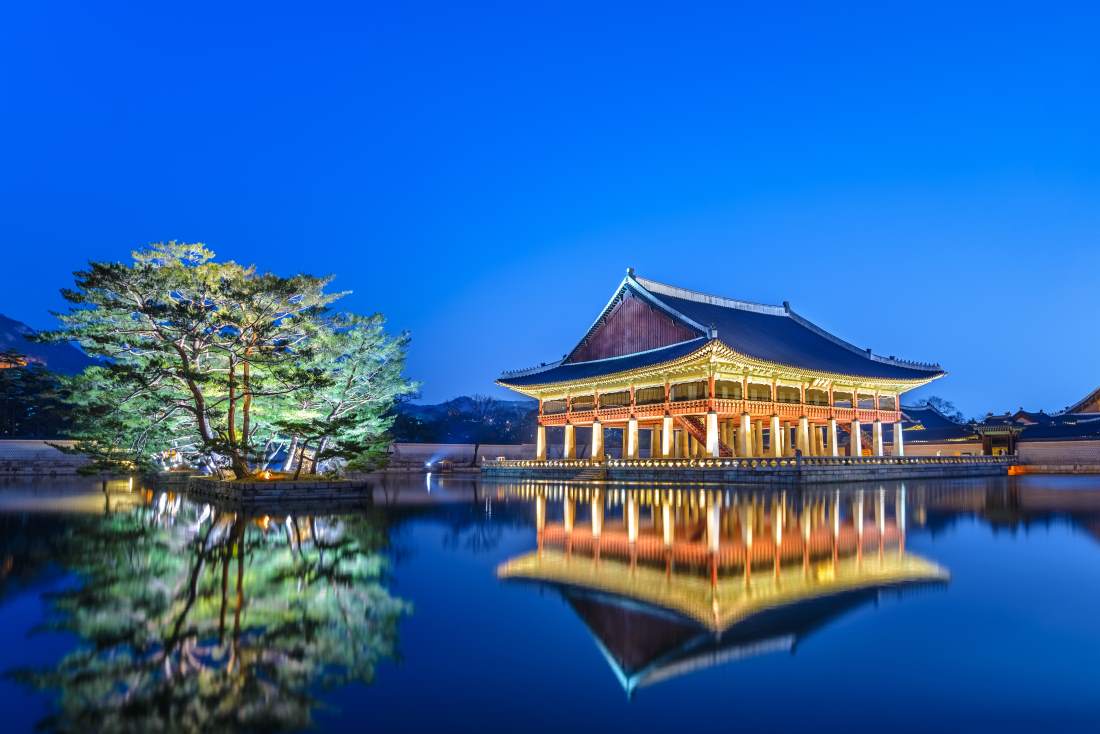
How much does a two week trip to South Korea cost?
With two weeks, you should budget between $0 and $0 for your trip to South Korea. The average price for a two week trip is $0. Two weeks will allow you enough time to visit between three and five places. If you're on a budget, you might want to consider some of the more affordable places such as Cheju (Jeju).
How much does a one month trip to South Korea cost?
When embarking on a month-long trip to South Korea, expenses can range from $0 to $0, with an average cost falling around $0. For those fortunate enough to have a full month, considering a vacation rental with a kitchen for at least a portion of your stay can help save money with meals. Backpackers often opt for hostels due to their affordability and the added benefit of a social vibe.
Hostel Prices in South Korea
With more than 30 hostels in South Korea, the average price is $17 per night for a dorm bed. Hostels are a terrific option for younger independent travelers looking to save money while staying social during their trip. With many types of hostels, it can be overwhelming to sort out the best places, though. Our analysis of the hostels in South Korea not only found the average price, but also uncovered some surprises about the overall quality, amenities, and atmosphere of hostels in the region. You can see more details from our analysis about typical hostel prices in South Korea here .
Here are a few sample prices from popular hostels in South Korea.
- $12 for a dorm bed at Time Travelers Party Hostel in Hongdae in Seoul more details
- $18 for a dorm bed at Kimchee Busan Downtown Guesthouse in Busan more details
- $16 for a dorm bed at Good Moments in Incheon more details
Hotel Prices in South Korea
You'll find a wide range of hotel options across South Korea. Below are prices for some of the destinations, and for more details see our analysis of hotel costs in South Korea .
Pacific Hotel Seoul
Uniqstay hostel and suite.
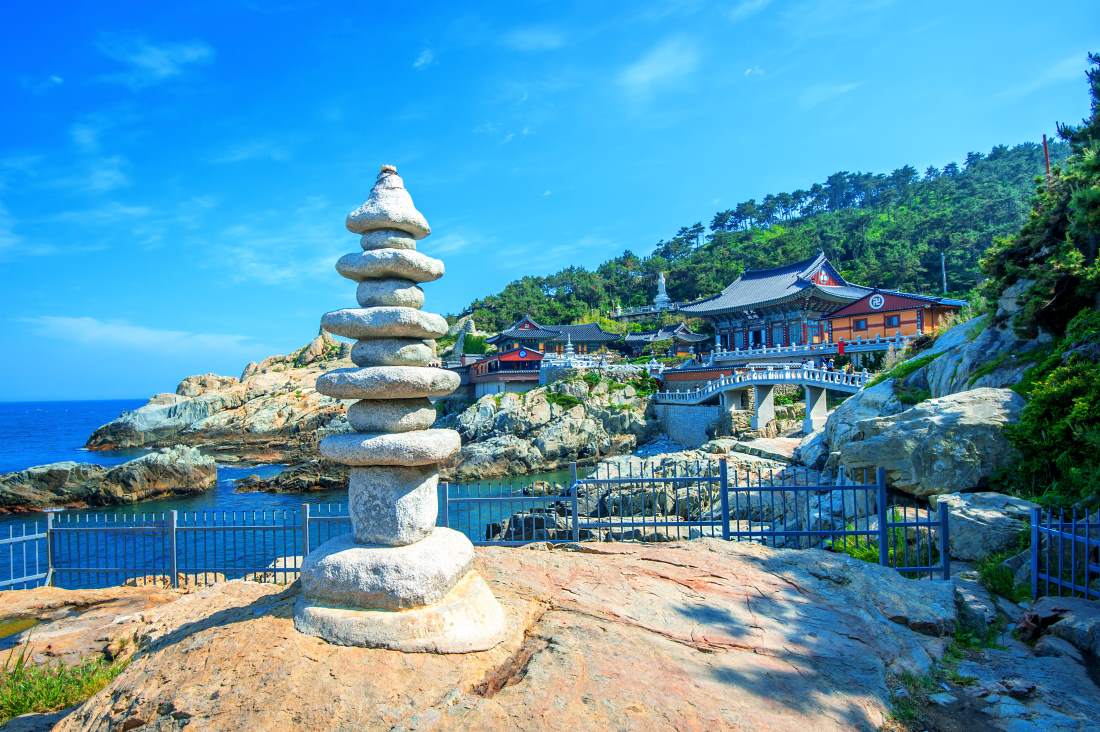
Should you do an organized tour or travel independently in South Korea?
Organized tours and independent travel are essentially the two main ways to plan a trip to South Korea. Organized tours offer a convenient and hassle-free experience, with travel experts handling all the logistical details and the added benefit of an expert guide imparting valuable insights. This option is favored by those who appreciate the convenience and ease provided by tours that often include transportation and expert guides.
On the other hand, independent travel provides a different set of advantages, allowing for greater freedom and flexibility in customizing itineraries and exploring at one's own pace. This option appeals to individuals who value spontaneity and control, enabling them to immerse themselves in local culture on a deeper level.
Ultimately, the choice between organized tours and independent travel depends on personal preferences and travel style, considering factors such as convenience, guidance, and flexibility.
Comparing Trip Costs in South Korea
When we compare the prices of organized tours to the average costs of independent travelers, we can see that sometimes the prices are fairly even.
Tours vs. independent Travel: Pros & Cons
Organized tours.
- An expert guide familiar with the culture
- Convenient transportation
- Fellow travelers to socialize with
- Well researched activities
- Efficient and thought out itinerary
- The security of have a trip leader if something goes wrong
- Limited options
- Usually not customizable
- The fast pace often means you can’t visit one place in depth
- Usually more expensive than independent travel
- There may be limited time to interact with the local culture and community
Independent Travel
- Completely customizable
- Opportunity to visit off-the-beaten-path destinations
- Can fully immerse yourself in the local culture
- Freedom to move at your own pace
- Flexibility to change your itinerary at any time
- More affordable
- Challenging to plan an efficient itinerary
- Transportation may be challenging or inefficient
- Booking and trip planning can be a hassle
- Popular sights may sell out well in advance
- If something goes wrong, you're on your own
Are organized tours more expensive than independent travel in South Korea?
Organized tours typically average around $399 per day and provide the convenience of an all-inclusive package with one comprehensive payment. On the other hand, independent trips usually average around $0 (₩0) per day and involve individual payments for accommodations, local transportation, meals, and sightseeing. Both organized tours and independent trips have their own unique challenges and benefits, so it's crucial to thoroughly understand the aspects of each to make a fair comparison. For a detailed analysis of tour prices in South Korea, check out our comprehensive guide on tour prices in South Korea here .
Here are a few sample tours in South Korea:
- South Korea One Life Adventures - 13 Day Tour ($2,931) 13 days, 6 destinations more details
- Discover Western Korea in 4days: A Wellness Holiday ($980) 4 days, 10 destinations more details
- South Korea's Best: 9-Day Tour from Seoul to Jeju(Private Custom) ($2,231) 9 days, 5 destinations more details
- South Korea DISCOVERY TOUR ($4,902) 12 days, 12 destinations more details
- Explore South Korea on Foot ($5,279) 9 days, 6 destinations more details
More for South Korea
If you're planning a trip to South Korea, check out these other informative travel guides.
We've been gathering travel costs from tens of thousands of actual travelers since 2010, and we use the data to calculate average daily travel costs for destinations around the world. We also systematically analyze the prices of hotels, hostels, and tours from travel providers such as Kayak, HostelWorld, TourRadar, Viator, and others. This combination of expenses from actual travelers, combined with pricing data from major travel companies, gives us a uniqe insight into the overall cost of travel for thousands of cities in countries around the world. You can see more here: How it Works .
Subscribe to our Newsletter
Coupons and discounts! Travel tips!
1 Categories averaged on a per-item basis. 2 Categories averaged on a per-day basis. For example, the Food 2 daily average is for all meals for an entire day, while Entertainment 1 is for each individual purchase. Thus, the overall daily average cost is not a summation of the individual categories.
- You are welcome to reference or display our travel costs on your website as long as you provide a link back to this page .
- For a basic link, you can copy and paste the HTML link code, or this page's address. Address Link HTML South Korea Travel Costs " disabled />

Some of the links on this website are sponsored or affiliate links which help to financially support this site. By clicking the link and making a purchase, we may receive a small commission, but this does not affect the price of your purchase.
- Privacy / Terms of Use
- Activities, Day Trips, Things To Do, and Excursions
- Meet the Team
- Work with Us
- Czech Republic
- Netherlands
- Switzerland
- Scandinavia
- Philippines
- South Korea
- New Zealand
- South Africa
- Budget Travel
- Work & Travel
- The Broke Backpacker Manifesto
- Travel Resources
- How to Travel on $10/day
Home » Asia » South Korea » Backpacking Guide
Backpacking South Korea Travel Guide (2024)
Backpacking South Korea is all about experiencing both sides of this country – the traditional and modern aspects of South Korean culture.
Known as the “Land of the Morning Calm,” South Korea is a fascinating country, a place where ancient temples and skyrise buildings stand side by side.
What comes to mind when you hear of South Korea? For many, the bustling capital city of Seoul is the first place to come to mind.
This sprawling metropolis is certainly the center of attention, as it’s home to over half of South Korea’s population, but travelling in South Korea is about so much more than just exploring the big city.
Within a few hours of Seoul, you can find yourself hiking in rolling hills, reflecting at a peaceful temple, or exploring a traditional village.
Depending on what time of year you visit South Korea, you could be skiing the slopes or chilling on a beach. One thing is for sure; no matter when you visit, there’s probably some a festival taking place, whether it’s a traditional Korean holiday or a massive music festival.
You’ll also find a wealth of cultural and historical attractions in all corners of the country.
Of course, one of the highlights of backpacking South Korea is the incredible cuisine. Few countries are as defined by their food as South Korea, and the people take great pride in their culinary traditions.
Furthermore, South Koreans know how to party, so be prepared to wash that spicy kimchi down with several glasses of beer and soju .
Perhaps no place in the world presents a contrast quite like the Korean Peninsula. Split decades ago as a result of the Korean War, the difference between North and South is like night and day.
Whereas North Korea is isolated under totalitarian reign, highly-developed South Korea is one of the most modern countries in Asia. The two are split by the DMZ (Demilitarized Zone), an interesting name considering how many armed guards patrol it.
South Korea is often overlooked by backpackers who flock to South East Asia, but I’m here to show you why backpacking South Korea is an incredible travel experience.
Read my comprehensive South Korea travel guide below; it includes everything you need to plan an amazing trip, like costs, budget hacks, South Korea itineraries, how to get around, the foods to try, and so much more!
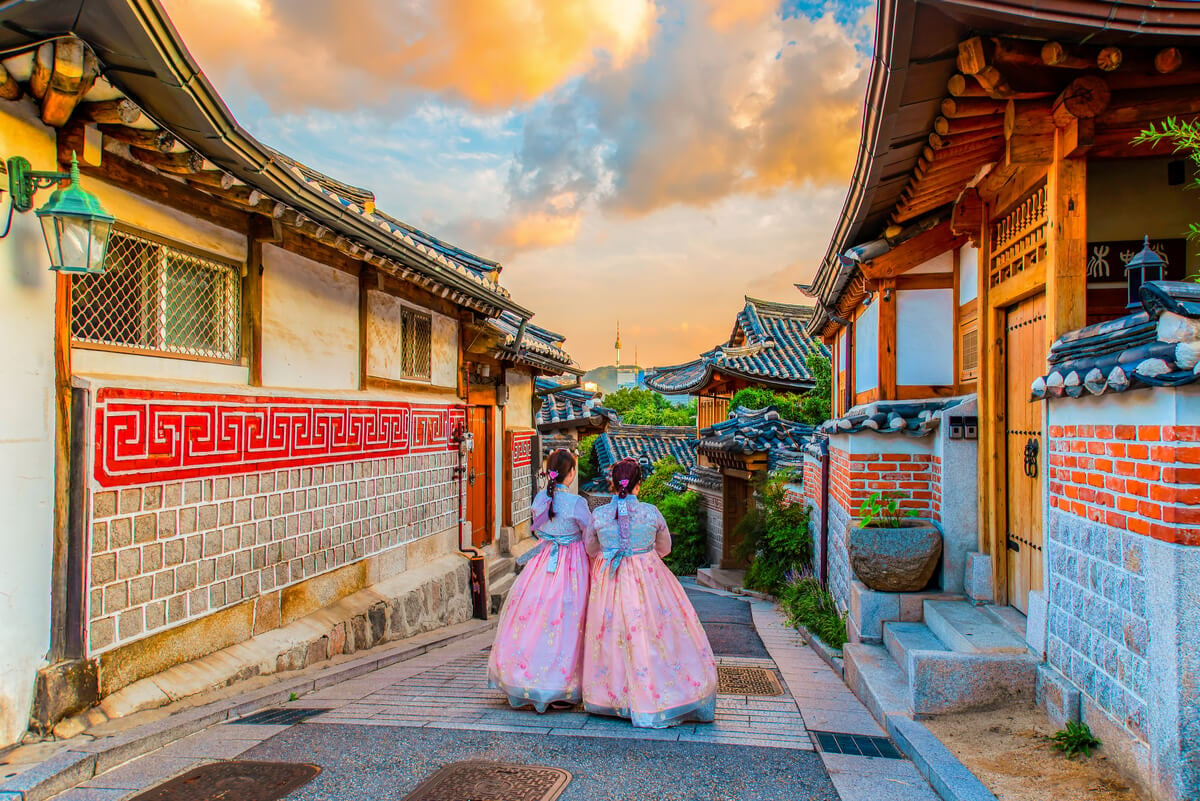
Why Go Backpacking in South Korea?
One great thing about traveling in South Korea is that you’re never too far from any other destination in the country. You can travel from one end to the other in five hours or less, so you don’t have to waste entire days in transit.
Thanks to the country’s excellent transportation system, getting around is a breeze when you’re backpacking South Korea. Seriously, you’ll ride the nicest trains and buses you’ve ever been on in South Korea.
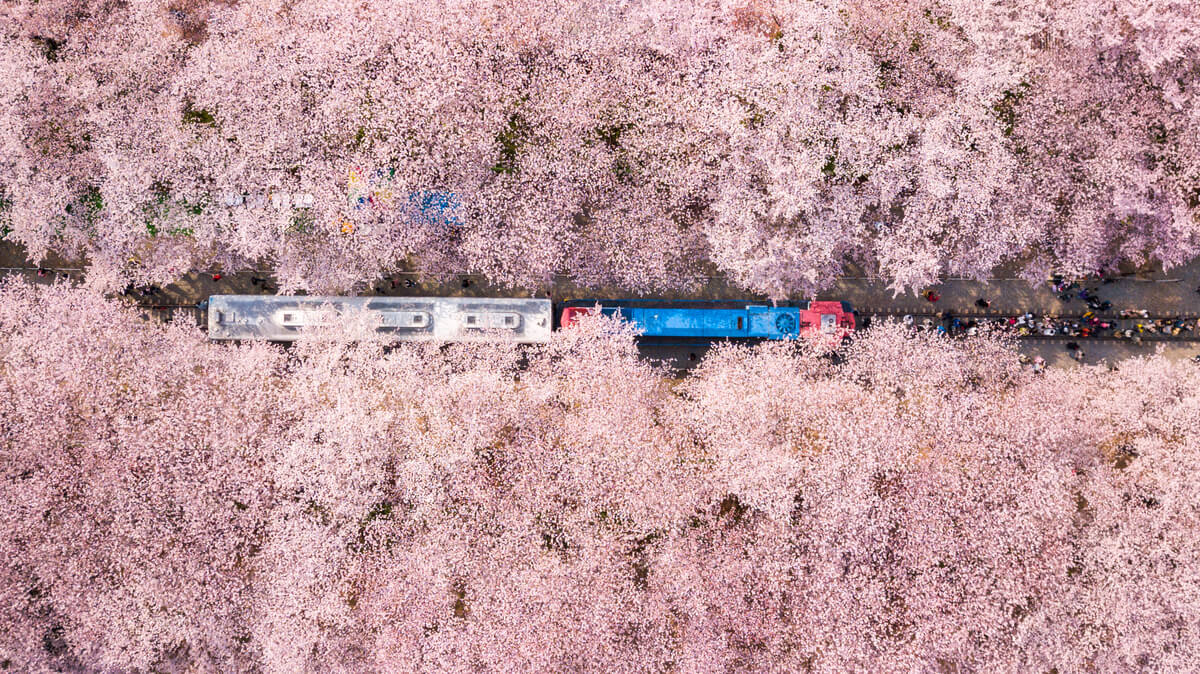
The best strategy for exploring South Korea is to book a flight to Seoul. From there, you can travel across the country to Busan, stopping at several interesting points along the way. You can then book a flight out of Busan or make your way back to the capital via train or bus.
Best Travel Itineraries for Backpacking South Korea
Places to visit in south korea, top things to do in south korea, backpacker accommodation in south korea, south korea backpacking costs, best time to travel to south korea, staying safe in south korea, how to get into south korea, how to get around south korea, working in south korea, what to eat in south korea, south korean culture, final advice before visiting south korea.
Wherever you decide to visit in South Korea will depend on your interests, and of course how much time you have. Here are a few different ideas for South Korea travel itineraries. I’ve included two different one-week itineraries and one jam-packed 2-week itinerary.
Backpacking South Korea 7-Day Itinerary #1: Seoul to Busan
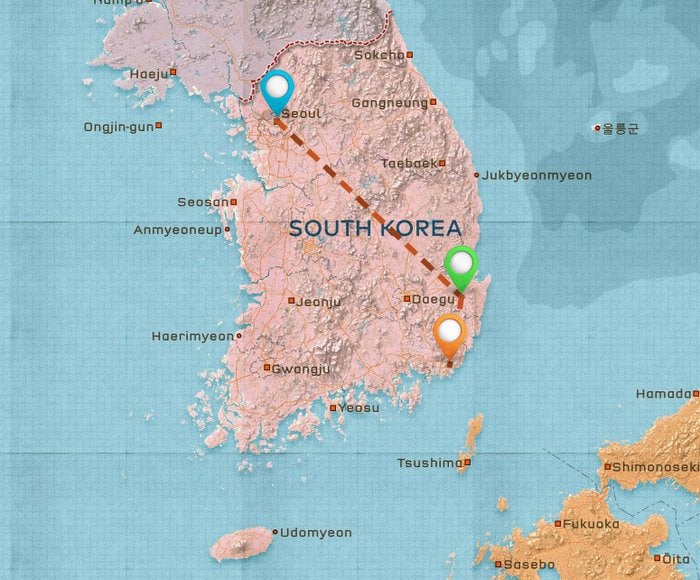
With just one week to spare in South Korea, your best bet is to travel across the country from Seoul to Busan with a stop in Gyeongju along the way. Since there’s so much to see and do, you should dedicate at least three days to the capital to start your trip.
Seoul is home to several ancient Korean palaces, the grandest of which is Gyeongbok-gung . In addition to visiting the palaces, you’ll want to check out some of the city’s museums, temples, markets, and parks. That’s more than enough for a couple of busy days backpacking in Seoul .
From Seoul, you can catch a train or bus to Gyeongju. This small city is home to many historic sites such as Tumuli Park – the final resting place of Shilla kings. It’s possible to do a whirlwind tour of the city, but you’ll enjoy it much more if you stay at least one night.
Finally, head to the coast and South Korea’s 2nd biggest city of Busan. Hopefully, you’re backpacking South Korea during the warmer months because most people come here to kick back and relax on the beach.
There’s lots more to see on a trip to Busan than the beach, though. You can fill your days exploring the city or hiking in the surrounding hills.
Backpacking South Korea 7-Day Itinerary #2: Seoul and Jeju
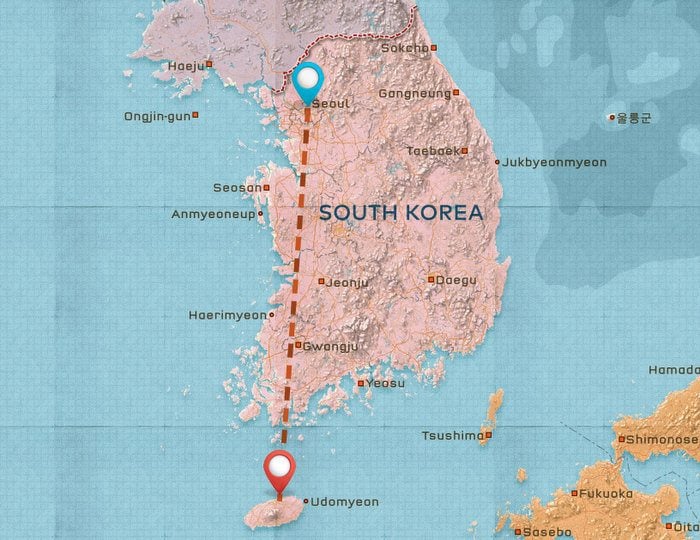
If you’re looking for more of a vacation vibe on your trip to South Korea, you’ll definitely want to add Jeju Island to your itinerary. With one week in South Korea, you can still start off with a 3-day itinerary in Seoul before just catching a quick flight to Jeju.
Since this trip is a bit more relaxing than the one outlined above, you might as well partake in Seoul’s rowdy nightlife. Night quickly turns to day here, especially on weekends when it seems like the whole city is out partying.
You may need a day to sleep in and recover if you really go hard on a night out in Seoul.
While Jeju may be known as South Korea’s “honeymoon island,” it’s still a great place for backpackers. For starters, you can hike the country’s highest peak at Hallasan . There are also caves, waterfalls, botanical gardens, and several trails leading to viewpoints. A few days full of adventure and beach-bumming in Jeju is a great way to cap off your trip.
Backpacking South Korea 14-Day Itinerary #1: Seoul to Busan to Jeju
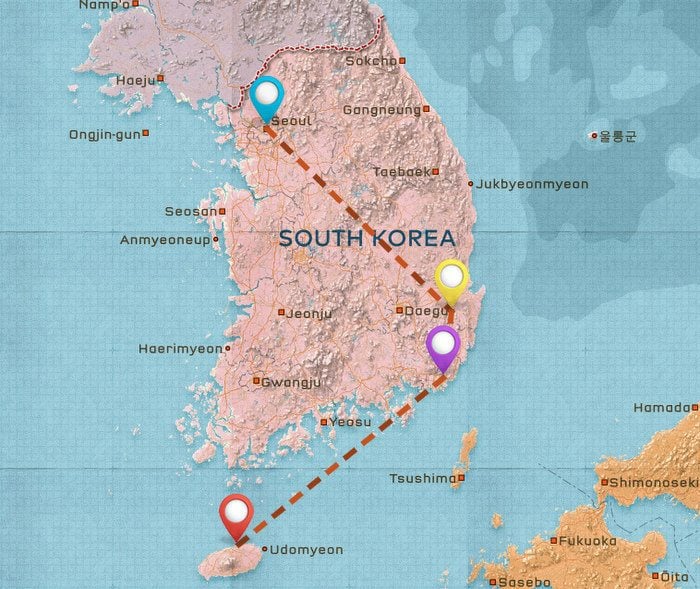
With an extra week in South Korea, you can take your time and linger in destinations. You can also add a few day-trips to mix it up and get out of the cities. Here’s a solid plan for 2 weeks in South Korea, starting again with Seoul.
If you’ve got two weeks in South Korea, I honestly recommend staying in Seoul for 4 or 5 days. It’s a huge city and more than half of the country lives here, so it’s definitely worth that much time. Since the city is so sprawling, it’s more enjoyable if you can spread your sightseeing out over a few days.
In addition to hitting the sights in town, you can tack on a day-trip or two. Of course, the most popular is visiting the DMZ . If that’s not your thing, you can also get out of the concrete jungle and hike around the beautiful Bukhansan National Park .
Rather than breeze through Gyeongju , you can allot two full days to exploring the city and the surrounding sights. The same goes for staying in Busan , as you can afford to spend a few extra nights there with two weeks in South Korea.
From there, it’s a short flight to Jeju. After a few days staying on the island , it’s time to head back to Seoul to catch your flight out.
To help you out with your itinerary backpacking through South Korea, I’ve gone ahead and broken down my favourite places to go right below. From bustling metropolises to far off the beaten trail, there’s heaps to do!
Backpacking Seoul
Pretty much everyone who visits South Korea ends up in the capital city of Seoul. The city proper is home to nearly 12 million, while the greater metro area has a whopping 25 million. That’s more than half of the country’s population in one city alone!
This is a city that seems to have one foot firmly planted in the past while the other steps eagerly toward the future. Ancient palaces sit across the street from shiny new skyscrapers.
Seoul’s urban areas are an amalgamation of the old with the new, and there are heaps of cool places to see around the city. Peaceful Buddhist temples exist nearby bustling nightlife districts. Seoul is indeed a fascinating city of contrasts and surprises.
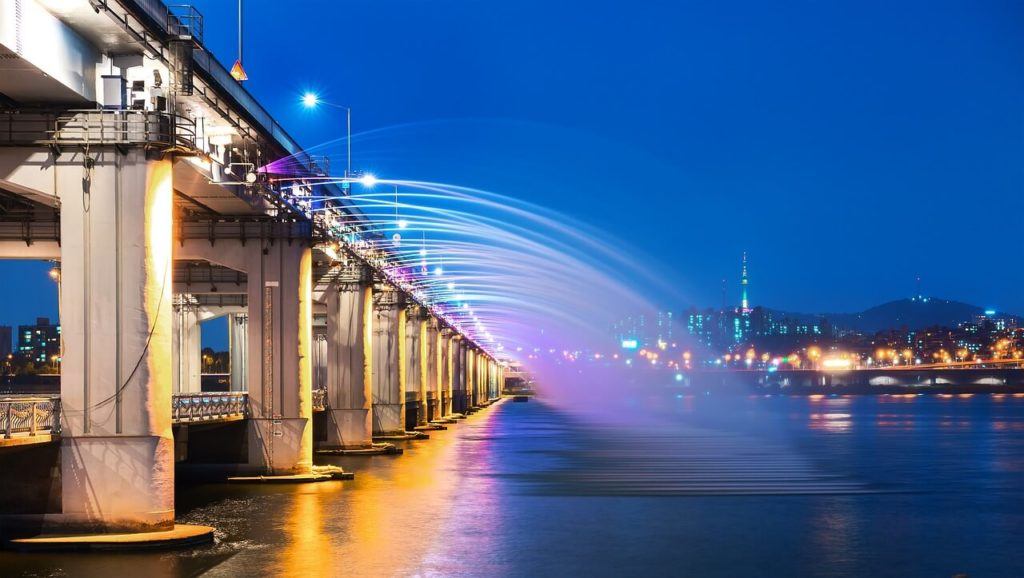
While in Seoul, you’ll be able to dive into the history and culture of South Korea. Start your journey off by exploring the city’s ancient palaces. All of them are worth a visit, but you’ll definitely want to hit Gyeongbok-gung and Changdeok-gung .
Seoul is also home to several excellent parks. Koreans love getting outside exercise, so go ahead and join them.
Namsan Park is a popular place to visit while backpacking South Korea. Not only is it a great place for a stroll, but you’ll also find the Seoul Tower here for some of the best views of the city.
Wherever you go, be sure to do a lot of walking so you can work up an appetite and dig into lots of mouth-watering Korean food . From street food snacks to high-end restaurants and everything in between, there’s something tasty around every corner in Seoul.
Once the sun goes down, it’s time to party in Seoul. It’s not just the young whippersnappers partying out here either; you’re just as likely to see businessmen in suits downing glasses of soju as you are college kids.
Some of the best areas in the city to party in Seoul are Hongdae and Itaewon . The party goes late in these neighborhoods, so be sure to pace yourself.
Aside from sightseeing and eating/drinking your way across the city, you may also want to embark on a few day-trips from Seoul. Popular options include hiking in the national park just north of the city or paying a visit to the DMZ .
If you’d rather just chill out, spend a night in one of the city’s many jimjilbang (spas) – the perfect place to relax. Plenty of them are even 24-hour. You could just skip booking a backpacker hostel in Seoul and instead sleep in the sauna… I did!
Backpacking Busan
The ROK’s 2nd largest city, Busan, is mostly known for its beaches, as Koreans flock here over the summer holiday for sun and sand. That’s not all that’s going on in Busan, though. The city is also home to some amazing temples, nature reserves, and hot springs.
A must-see place in Busan is the ancient Beomeosa Temple . It’s a slightly challenging uphill hike, but you’re rewarded with some incredible views of the city. Speaking of hiking, there are several trails that are easily accessible from the city, including Jangsan Mountain.
If you’d rather skip the hills, check out Yonggungsa – the Dragon Palace Temple – that’s perched along the coastline. Seeing the beautifully designed temple with the waves crashing against the shore is a can’t-miss when visiting Busan.
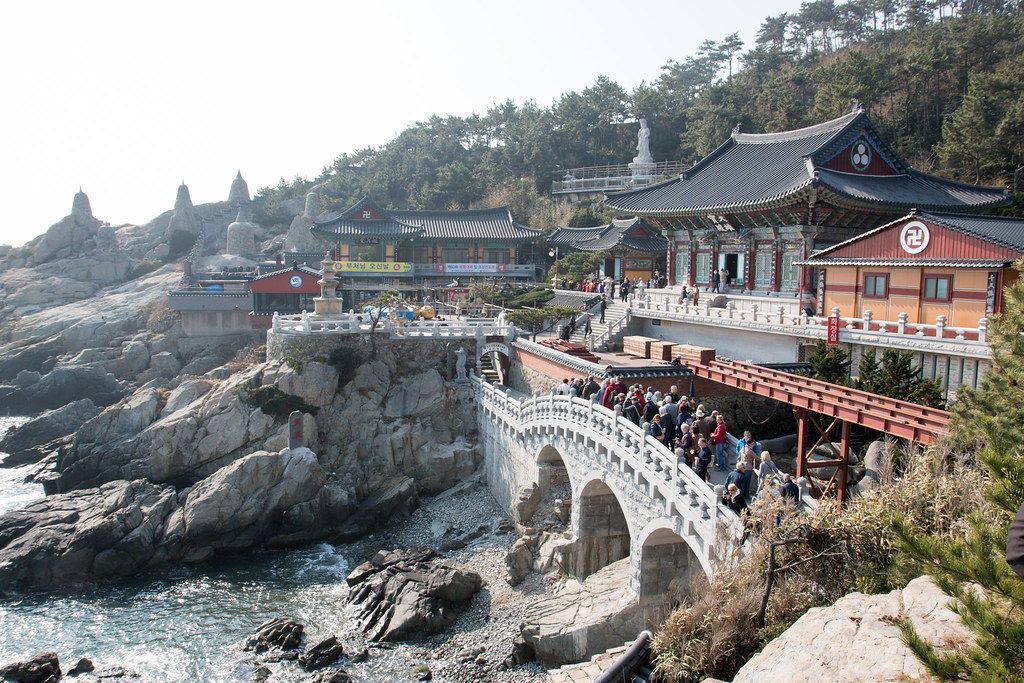
Busan is also famous for its many festivals throughout the year. The Busan International Film Festival runs for the first ten days of October and draws quite the crowd.
In August, you can rock out at the city’s International Rock Festival . Make sure you book in at one of Busan’s backpacker hostels early though – it gets busier around festival time!
Thanks to its location on the coast, Busan cooks up some tasty seafood. Head to the Jagalchi Fish Market to pick from the cat day’s catch and have it cooked up at one of the many restaurants.
Those with an adventurous palate might try bokguk , which is a soup made from the extremely poisonous pufferfish. If not, you can always play it safe and stick with the cod.
Backpacking Jeju Island
Most Koreans choose to vacation on Jeju Island. It’s definitely the top choice for honeymooners, but you don’t have to be a newlywed to enjoy a trip here. Jeju Island is for backpackers as well; there are plenty of social hostels o n Jeju Island to meet other travellers at.
Home to South Korea’s tallest mountain, the longest lava tube in the world, plenty of sandy beaches, some quirky theme parks, and even some chill hikes, Jeju Island is a pretty epic place to visit.
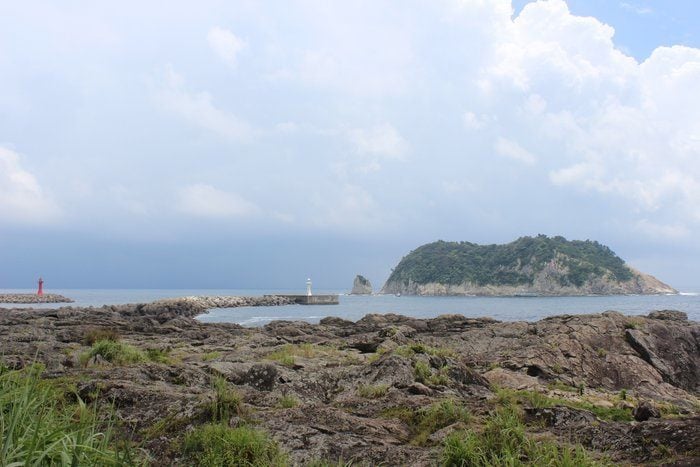
You can even check out the filming locations of super popular Korean television shows here, if you’re into that sort of thing.
Perhaps one of the most interesting aspects of Jeju Island is its culture, which is quite different from the mainland. For one it is matriarchal; here you’ll surely spot the famed haenyo (women divers) who dive without any oxygen tanks to depths of 10-20 meters in search of squid, octopus, clams, and other seafood.
Be sure to bring your hiking shoes when you visit Jeju. In addition to tackling the dormant volcano Hallasan , you can also enjoy coastal trails that wrap around the island. After a nice hike, you can kick back on a beach and order up a tasty plate of seafood. Life is good on Jeju Island!
Backpacking Gyeongju
If you’re interested in learning more about Korean history and culture, then Gyeongju is the perfect place to visit. It’s also a great way to break up the journey from Seoul to Busan.
Gyeongju was the capital of the Silla Dynasty, which lasted for 1,000 years and played a very important role in Korean history. The historic area of Gyeongju was actually the first site to be nominated a UNESCO World Heritage status in South Korea.
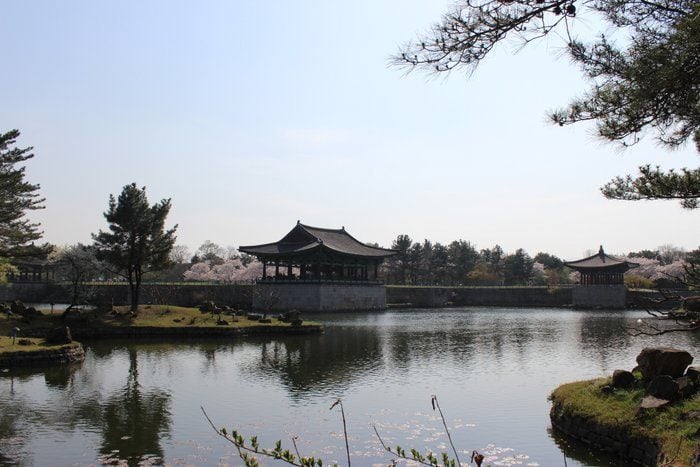
Here you can visit the beautiful Bulguksa Temple , which just might be the most impressive temple in the country. You should also check out Seokguram Grotto for an excellent example of Silla art and architecture.
With a few extra days in Gyeongju, you can enjoy some hiking in the national park, stroll around Bomun Lake , pay a visit to the royal tombs , and much more.
Getting around the city is a breeze thanks to the bus system and bike rentals, and most places have English signs despite the fact that few foreign tourists visit.
Backpacking Daegu
The main reason to stop by South Korea’s 4th largest city is to hike on Palgongsan . This mountain is just 20km from downtown and features several different hiking routes.
There are Buddhist statues and pagodas all over the mountain. In fact, there’s one statue believed to grant you one wish in your life, if you make it there. If you make it all the way up here, you might as well give it a shot!
In the city, you can also find plenty of parks that are pleasant to explore for a few hours. In Apsan Park , you can hike or take a cable car up to the observatory for great views of the city.
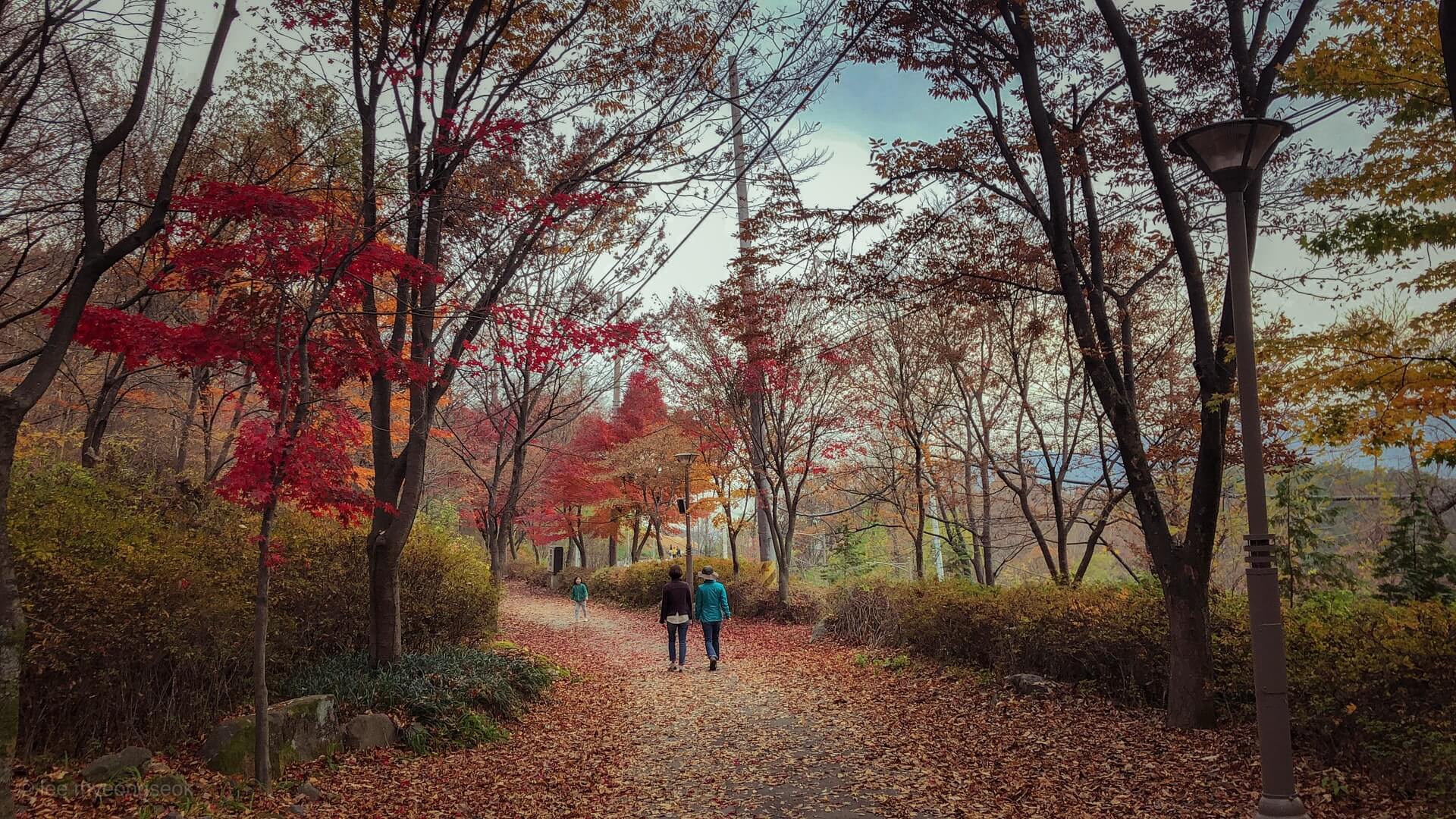
Once the sun goes down, you can head to the Banwoldang part of the city to explore the food and bar scene; there are plenty of restaurants, bars, and clubs in this area.
If you visit on a weekend, this area is especially lively. You can also party hard in the university areas if you’re up for it.
Backpacking Jeonju
If you’ve had enough of South Korean cities, join the locals and head to a place like Jeonju. The main draw for travelling here is the Jeonju Hanok Village . With more than 700 traditional hanok homes, this is a great place to dive into traditional Korean culture.
The Hanok Village is especially lively during festivals and on weekends, so try to time your visit to experience Jeonju at its finest. During these busy times, you’ll find plenty of markets and street food stalls as well.
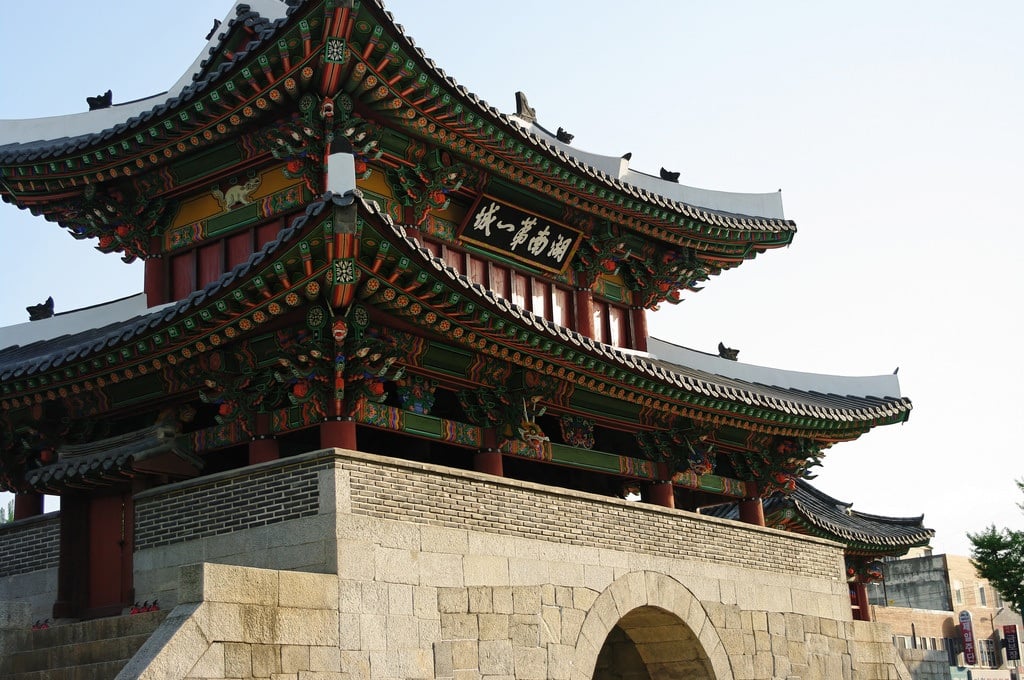
Speaking of food, Jeonju is thought to have the best bibimbap in the land. There seem to be restaurants cooking it on every corner, so dig into a big bowl of this Korean classic and judge for yourself.
Wash it down with some makgeolli, a traditional fermented rice liquor that this city is also famous for.
Getting Off the Beaten Path in South Korea
It really isn’t that hard to get off the beaten path in South Korea. Many travelers never even leave Seoul, so the second you step out of the capital you’re already there!
Admittedly, I’ve stayed very much on the beaten path in my travels to South Korea. My brother, on the other hand, lived there for a year and imparted some wisdom on me.
Gurye is a small town near Jirisan National Park, which is home to the highest peak on the peninsula. Here you can try Daesulgi sujebi – a soup made with river snails, a local specialty.
Danyang is another small town nestled between Woraksan and Sobaeksan National Parks with a river flowing through it. I didn’t see another foreigner the whole weekend there; it was all Korean people. It’s a perfect place for some Instagrammable photo ops in South Korea .
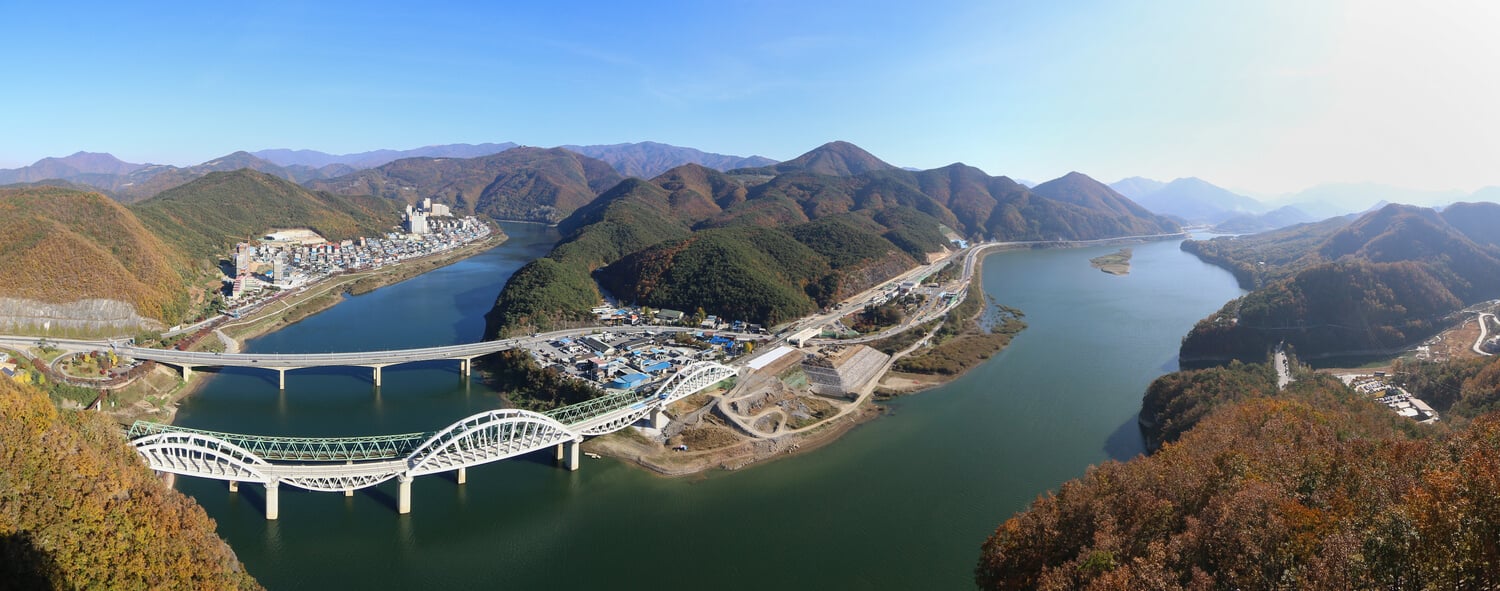
Also, look up the “Eight Views of Danyang” for some beautiful sights in the area. I saw some of them but wasn’t aware they were part of that list until my boss informed me Koreans go there for the eight views. Parasailing is popular in Danyang, though I didn’t do it.
Andong is a pretty unremarkable city but it’s near the Hahoe Folk Village which felt like a Korean version of the Shire. There’s also a nice Confucian Academy outside the town called Dosan Seowon, which is beautiful and peaceful.
Sokcho is a small city on the east coast near Seoraksan National Park. Considered one of the nicest places to see fall colors; there are beaches to see in the summer too.
Thank you to my brother Pip for those awesome recommendations! Be sure to add a few to your list if you want to experience South Korea outside of the big cities.

We’ve tested countless backpacks over the years, but there’s one that has always been the best and remains the best buy for adventurers: the broke backpacker-approved Osprey Aether and Ariel series.
Want more deetz on why these packs are so damn perfect? Then read our comprehensive review for the inside scoop!
With so much awesome stuff to do in South Korea, it can be hard to choose exactly what to do! However, I guarantee you that oince you step outside of Seoul, the country really opens up.
1. Explore the ancient palaces of Seoul
The Joseon Dynasty was the last kingdoms in South Korea lasting from 1392 all the way until 1910. It was during this time that Seoul became the capital.
The kings of the Joseon Dynasty had several grand palaces built in the city, and exploring the palaces is one of the best things to do in South Korea.
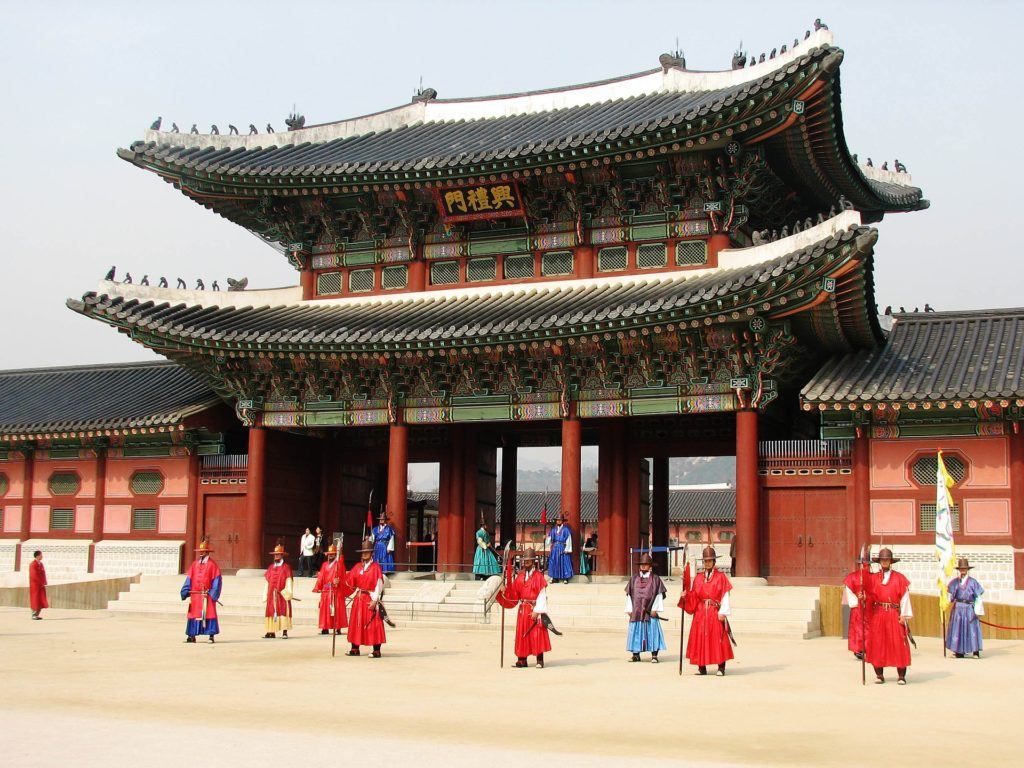
There are five grand palaces in Seoul, with the grandest being Gyeongbokgung . With a name meaning “Palace Greatly Blessed by Heaven,” you know they went all out when they built this one.
Be sure to catch the changing of the guard ceremony and sign up for one of the free guided tours, which run at 11am, 1:30pm, and 3:30pm.
2. Feast on Korean Food
One of the best things about backpacking South Korea is indulging in delicious Korean cuisine. Whether it’s the national dish of kimchi , a colourful bowl of bibimbap , or an epic feast at a Korean BBQ restaurant, your taste buds are in for a treat.
3. Spend a night in a jimjilbang
Seeing how people in South Korea love hiking up in the mountains so much, it should come as no surprise that another popular pastime is relaxing in a spa.
In Korean, these spas are known as jimjilbang , and they’re all over the place. A trip to a jimjilbang is an absolute must when backpacking South Korea. Experience the South Korean jimjilbang lifestyle !
You can bounce around between hot and cold tubs, saunas, and steam rooms, get a massage or a body scrub, grab some food and drink, and so much more. Broke Backpackers may want to visit one at night as you can crash in the sleeping room and save some money on accommodation.
4. Take a hike
Hiking is probably the most popular pastime among Koreans. It makes sense, considering that most people live in crowded cities yet most of the country is made up of mountains.
Koreans know what to take hiking : they’re very serious about their gear and are usually decked out in the freshest hiking attire. Just because you’re working up a sweat doesn’t mean you can’t look good!
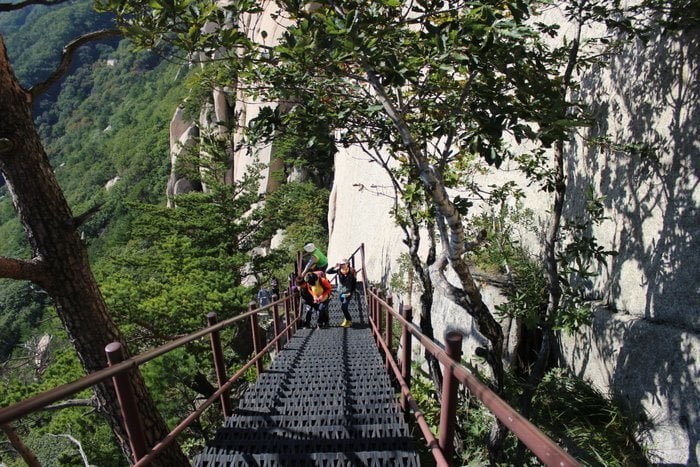
There are hiking trails all over South Korea ranging in difficulty and length. One of your best bets is hiking in Bukhansan , as it is easy to visit from Seoul. If you’re up for the challenge, you can tackle the country’s largest mountain, Hallasan on Jeju Island.
4. Take a tour of the DMZ
Many travelers who visit South Korea hope to see the DMZ (Demilitarized Zone) that has separated the North from South since the end of the brutal Korean War in 1953.
Here you can catch a glimpse into the “Hermit Kingdom” and learn more about the tense relations between the two Koreas. You’ll have to take a tour to get here, so be sure to shop around and check reviews.
6. Indulge in the seasonal sports
South Korea experiences all four seasons, meaning you can enjoy both summer and winter sports here. In the warmer months, that means hiking, cycling, swimming, and more. South Korea is also a great destination for skiing and snowboarding in the winter.
7. Visit a folk village
A fun way to get some insight into Korean history and culture is by visiting Minsok . Also known as the Korean Folk Village, this living museum is a bus ride away from Gangnam in Seoul.
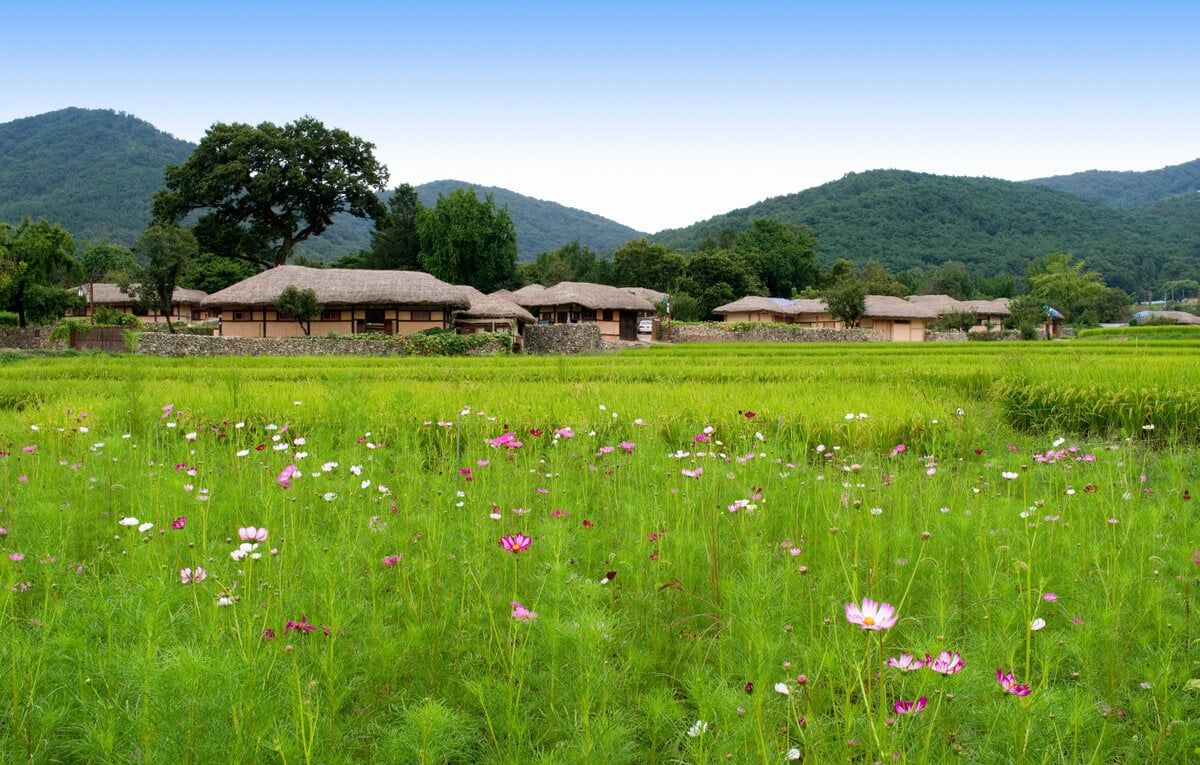
On a visit to the folk village, you can see old-school hanok homes, cultural performances, and maybe even watch a traditional Korean wedding.
It’s a fun place to come for the day to get out of the city and try something new.
8. Take part in a local festival
In South Korea, there are festivals to celebrate just about everything. You can try catching trout at an ice festival, watch the sky light up at a fireworks festival, or get down and dirty at a mud festival.
Of course, there are also plenty of traditional Korean festivals such as Chuseok as well as food and music festivals all throughout the year.
9. Enjoy an island getaway on Jeju
A quick flight from the mainland will get you to beautiful Jeju Island. Full of beaches, waterfalls, caves, folk villages, and even South Korea’s highest mountain, this little island will keep you plenty busy.
In addition to all of its natural wonders, Jeju is also home to some very eccentric tourist attractions. Take Loveland for example, a bizarre park full of risqué sculptures. Visiting this place will definitely make for some of the funniest photos from your trip.
10. Party hard in Seoul
Seoul is undoubtedly a party city. It seems like everyone likes to go out and get loose here, from college kids to briefcase-carrying businessmen. When visiting the Korean capital, you need to have at least one big night out.
Some of the most popular areas to party in Seoul include Hongdae and Itaewon. You’ll find tons of restaurants, bars, and clubs in each area. Start with dinner and drinks and see where the night takes you.
My guess is you’ll end up loudly singing karaoke and chugging down soju at around 4 AM with some people you just met.
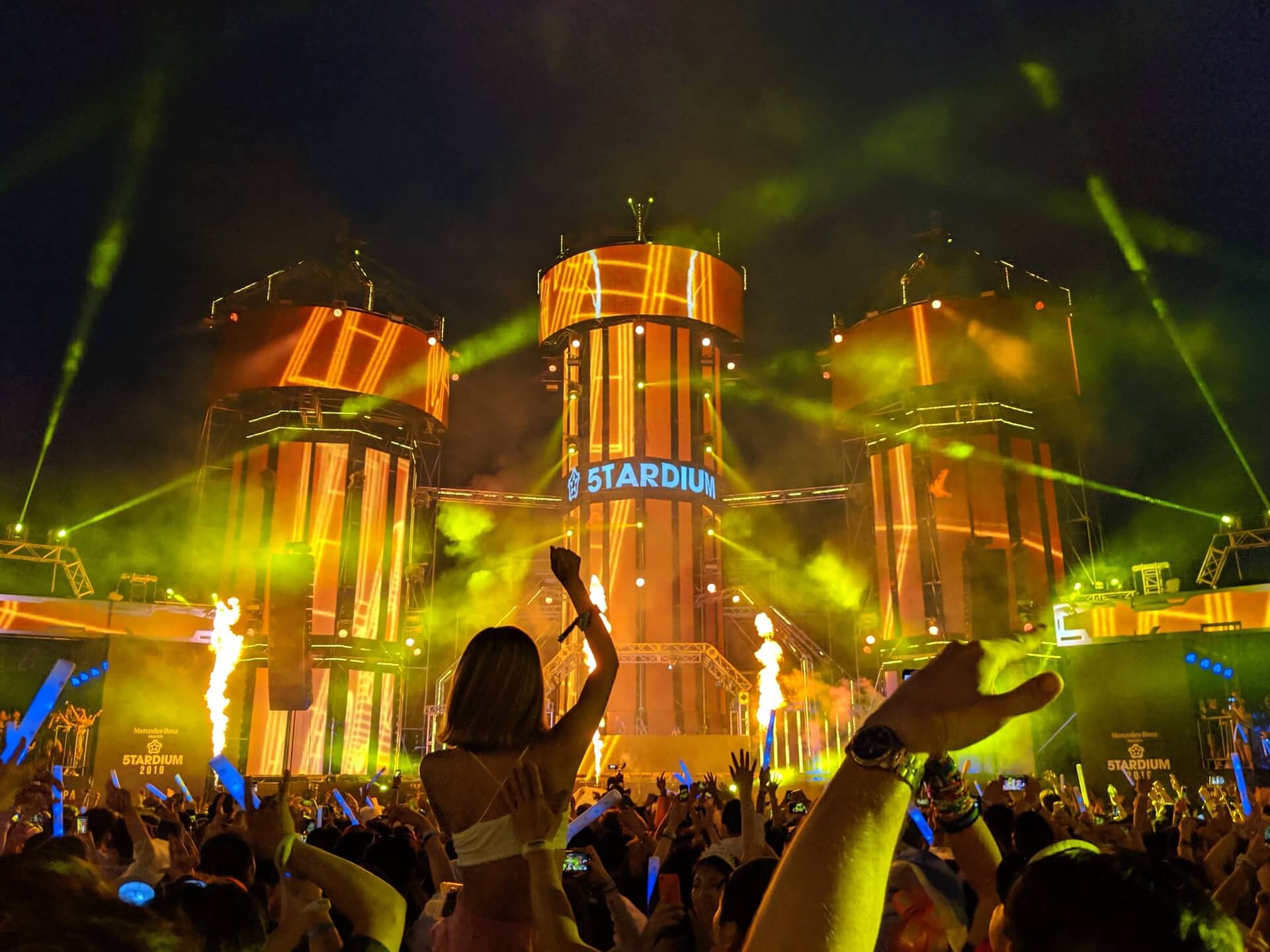
Wanna know how to pack like a pro? Well for a start you need the right gear….
These are packing cubes for the globetrotters and compression sacks for the real adventurers – these babies are a traveller’s best kept secret. They organise yo’ packing and minimise volume too so you can pack MORE.
Or, y’know… you can stick to just chucking it all in your backpack…
Travelling South Korea is a great experience thanks in part to the many excellent backpacker hostels around the country . Especially in the big cities of Seoul and Busan, you’re spoiled for choice when it comes to hostels.
The Best Places to Stay in South Korea
The cost of travel in South Korea is somewhere in the middle. It’s definitely cheaper than North America and Western Europe, but more costly than backpacking in Southeast Asia.
While it’s possible to get by on a daily budget of around $30-35, you’ll be more comfortable if you can allot $45-50 a day.
For getting around South Korea, you’ll obviously spend more if you choose to fly or take high-speed trains. That being said, you can score flights from Seoul to Busan for as little as $35, which is actually cheaper than taking the high-speed train, which costs $57.
Catching a bus is substantially cheaper and really doesn’t take that much longer.
You can find a dorm room in a nice hostel for around $10-15 a night depending on where you are staying. Couples or groups may want to look into private rooms, which won’t cost much more per person. You can also find some great deals on places on Airbnb; Seoul’s Airbnb scene is wicked and a total draw for the lovers of high-flying city life!
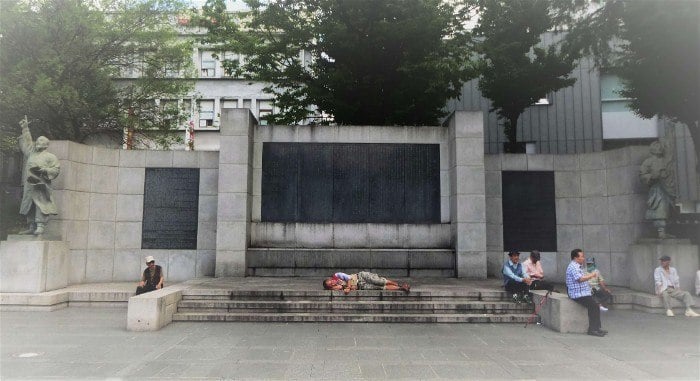
When it comes to eating out, you can find super cheap street food or splurge on a fancy high-end restaurant. The choice is yours, my friend. On the budget end of the spectrum, it’s possible to find a decent meal for $3-4. You could also spend a little more and fill up on an awesome Korean BBQ.
There are plenty of free things to do in South Korea, such as going for a hike, strolling around the local park, and wandering the streets. Even the most famous sights in the country don’t cost that much. You can get a ticket to the Gyeongbokgung Palace in Seoul for just under $3.
It is worth setting aside some money for some bigger ticket items, like a flight to Jeju Island, ski life ticket, or South Korean spa!
For more budget tips, head on over to our guide breaking down South Korea’s expenses .
A Daily Budget in South Korea
Money in south korea.
South Korea’s currency is the Won. At the time of writing (December 2020) , the exchange rate is 1 USD = 1,084 Won .
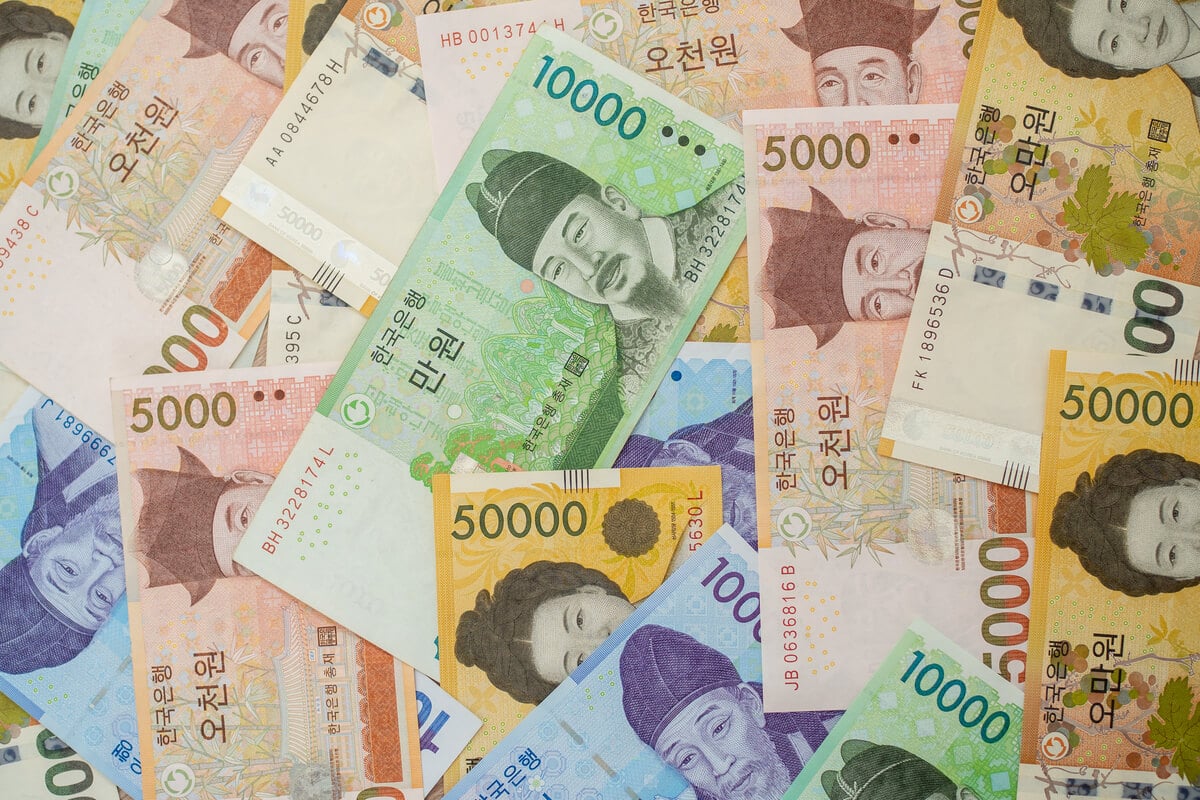
ATMs are widely available in South Korea and many businesses accept credit cards, so you really don’t have to worry about being able to pay for things when backpacking South Korea. That said, you are dealing with high denominations – I’d suggest wearing a solid travel money belt when kicking around the cities.
Travel Tips – South Korea on a Budget
Visiting South Korea on a shoestring budget is totally possible – it’s just about knowing the art of budget backpacking !
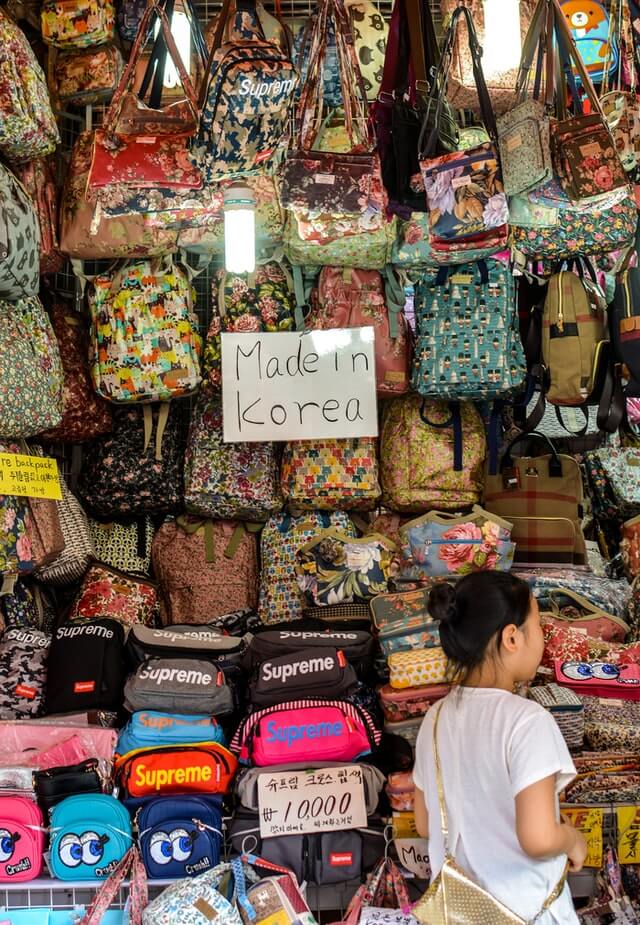
- Camp: It’s most definitely possible outside of the cities, and it’s totally possible in the cities too (provided you find a good spot). Make sure you bring your best backpacking gear and prepare for some nights under the stars!
- Cook your own food: If you are on a tight budget, you can save money by cooking your own food. Staying places with a kitchen or packing a cooker is the way to go.
- Check the convenience stores – Much like Japan’s rabid konbini culture, the convenience stores in South Korea (7-Eleven, GS25, etc.) are mega-cheap and a haven for backpackers, uni students, penny pinchers alike!
- Couchsurf: If you want to save some dough on accommodation, it’s worth it to look for a host on Couchsurfing. Traveling by Couchsurfing is a great way to make some real friendships and see this country from the perspective of locals.
Why Should You Travel to South Korea with a Water Bottle?
Plastic washes up on even the most pristine beaches… so do your part and keep the Big Blue beautiful!
You aren’t going to save the world overnight, but you might as well be part of the solution and not the problem. When you travel to some of the world’s most remote places, you come to realise the full extent of the plastic problem. And I hope you become more inspired to continue being a responsible traveller.
STOP USING SINGLE-USE PLASTIC! If you’d like some more tips on how to save the world .
Plus, now you won’t be buying overpriced bottles of water from the supermarkets either! Travel with a filtered water bottle instead and never waste a cent nor a turtle’s life again.

Drink water from ANYWHERE. The Grayl Geopress is the worlds leading filtered water bottle protecting you from all manner of waterborne nasties.
Single-use plastic bottles are a MASSIVE threat to marine life. Be a part of the solution and travel with a filter water bottle. Save money and the environment!
We’ve tested the Geopress rigorously from the icy heights of Pakistan to the tropical jungles of Bali, and can confirm: it’s the best water bottle you’ll ever buy!
South Korea is home to all four seasons, so the best time to travel really depends on what kind of weather you prefer and what you hope to do while you’re backpacking South Korea.
Summer (June-August) can be hot and humid, while winter (December-February) can be bitterly cold and dry. If you plan to hit the beach or the slopes, these seasons are just fine.

Those who prefer moderate weather will want to visit in either the spring or the fall. Both seasons are typically sunny and dry, allowing you to spend plenty of time outside comfortably.
If you want to see the cherry blossoms in bloom, you’ll want to visit between mid-March and mid-April.
Festivals in South Korea
South Korea has countless festivals that span over the entire year:
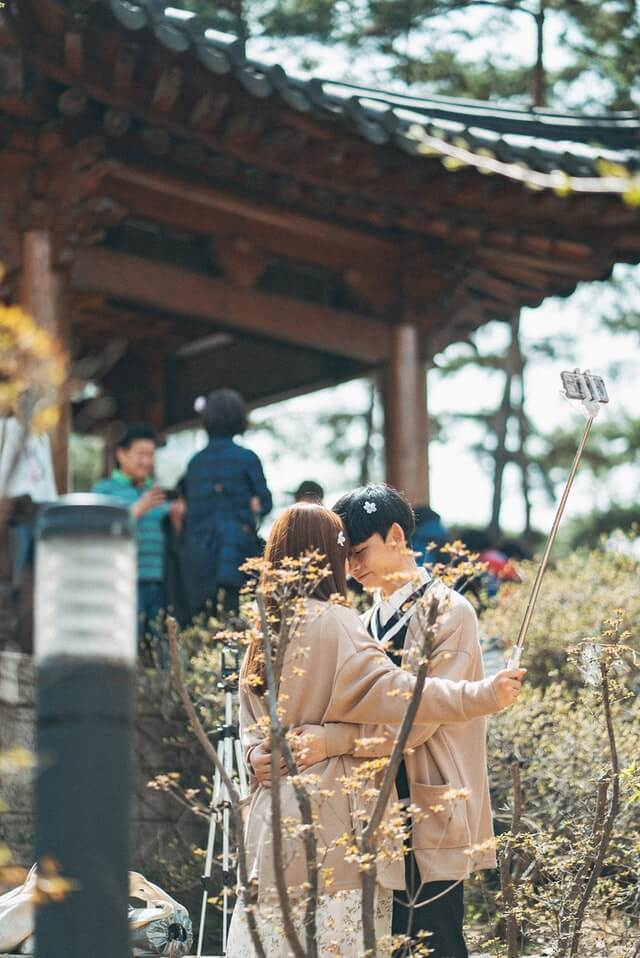
- Seollal (the Lunar New Year) – One of the most important holidays in the country and a very festive time. South Korea’s New Year takes place around late January – February. One interesting thing about Korean New Year is that all people add a year to their age on this day rather than their birthday.
- Chuseok – Another super important festival in Korean culture, this harvest festival occurs on the 15th day of the 8th lunar month during the full moon. On this day, Koreans visit their ancestral hometown and partake in a massive feast of traditional food.
- Yudu – Another of the many other interesting festivals in South Korea. On this day, people try to drive away bad luck and spirits by bathing and washing their hair. People also eat long noodles for a long and prosperous life.
- Chopail – People also celebrate the day of Buddha’s birth by hanging up lanterns and visiting a temple.
As many Koreans are Christian, Christmas and Easter are also big holidays.
What to Pack for South Korea
What you pack for your adventure backpacking South Korea depends mostly on what time of year you go. The country experiences all four seasons, so you’ll need to take the weather into consideration. It can get very hot in the summer and super cold in the winter, so you’ll want to be prepared.
How you pack also depends on what you plan to do there. Hiking is huge in South Korea, so it’s a good idea to pack good hiking shoes and other gear. If you’re visiting in the winter, you might want to bring your ski/snowboard gear to hit the slopes.
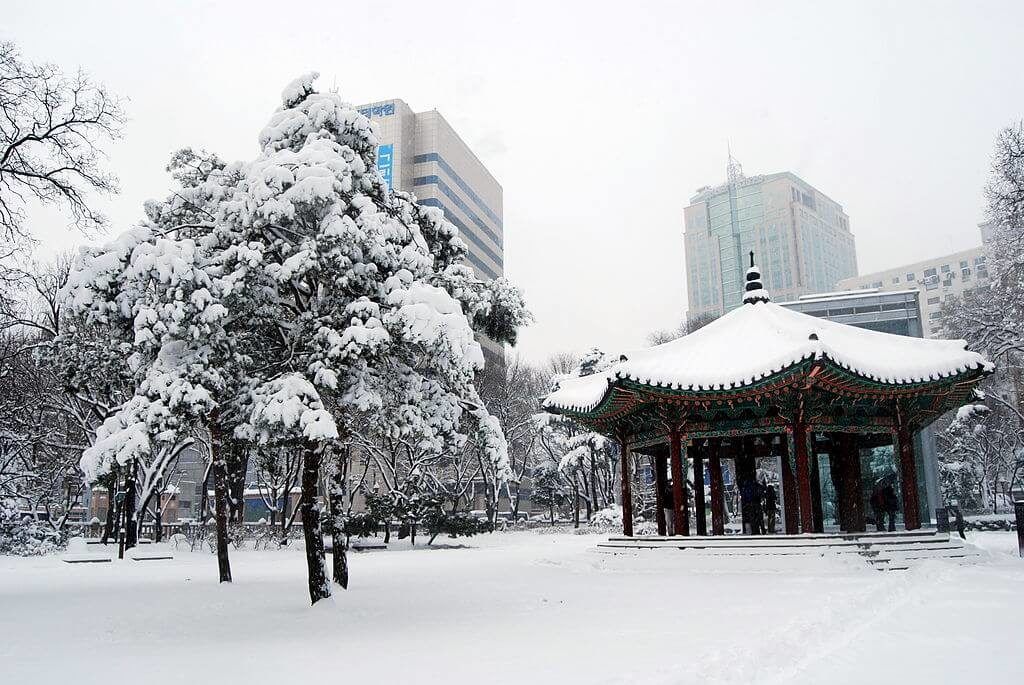
Make sure you get your backpacking packing list right! On every adventure, there are six things I never go travelling without:

Snoring dorm-mates can ruin your nights rest and seriously damage the hostel experience. This is why I always travel with a pack of decent ear plugs.

Hanging Laundry Bag
Trust us, this is an absolute game changer. Super compact, a hanging mesh laundry bag stops your dirty clothes from stinking, you don’t know how much you need one of these… so just get it, thank us later.


Sea To Summit Micro Towel
Hostel towels are scummy and take forever to dry. Microfibre towels dry quickly, are compact, lightweight, and can be used as a blanket or yoga mat if need be.

Monopoly Deal
Forget about Poker! Monopoly Deal is the single best travel card game that we have ever played. Works with 2-5 players and guarantees happy days.

Grayl Geopress Water Bottle
Always travel with a water bottle! They save you money and reduce your plastic footprint on our planet. The Grayl Geopress acts as a purifier AND temperature regulator. Boom!
South Korea is safe to travel . This is a very safe country where you have very little to worry about.
Even petty theft and pickpocketing aren’t really a big concern here. Of course, you should still be mindful of your things, especially on crowded streets or public transport. Make sure to hide your money when travelling around .
Foreigners who run into trouble here usually do so as a result of drunkenly starting arguments or fights. Basically, don’t be an idiot and you’ll be fine. If you’re out and an argument starts, just use some common sense and walk away.
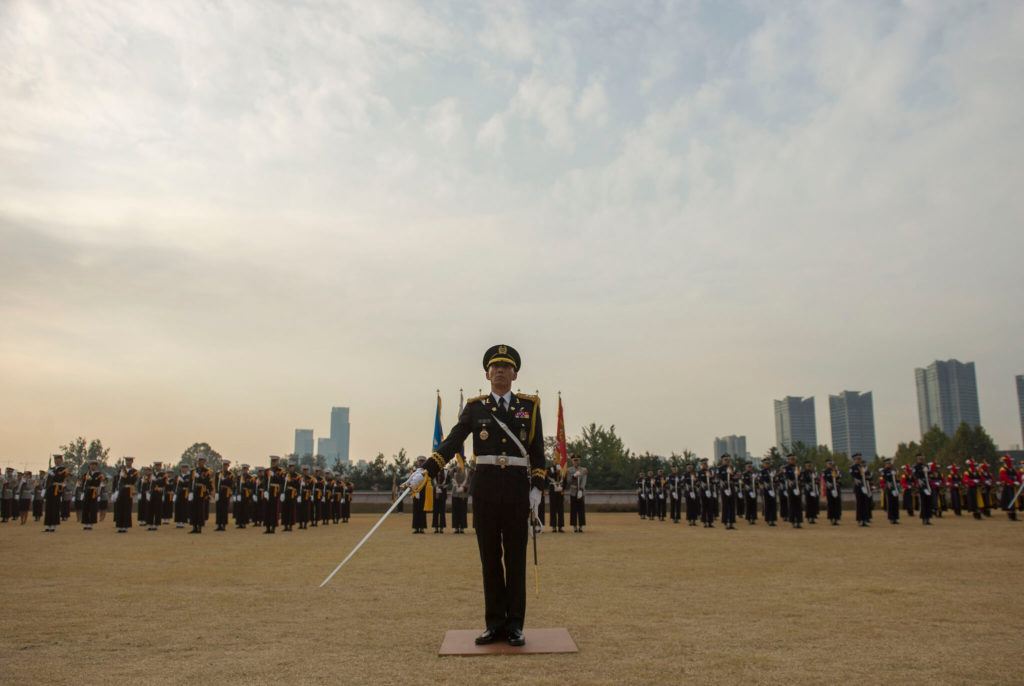
Check out the travel tips in our Backpacker Safety 101 post for advice on staying safe whilst backpacking.
Sex, Drugs, and Rock ‘n’ Roll in South Korea
If you’re a foreigner in South Korea whose single and ready to mingle, just be aware of a few things. First of all, there are definitely plenty of Korean girls with foreign boyfriends. That being said, it’s a very homogenous country where many people still look down on other kinds of relationships.
I remember reading a blog by a guy who lived there several years and had a local girlfriend. Once he finally started to pick up the language, he was incredibly upset to hear what random people out in public said about seeing them together.
As a backpacker passing by, you may not encounter such problems. You might, however, find language barriers and cultural differences as an obstruction to your desires.
Prostitution is technically illegal in South Korea, but there are plenty of red-light districts in the country that seem to operate just fine. Exercise caution (in more ways than one) if you choose to go this route.
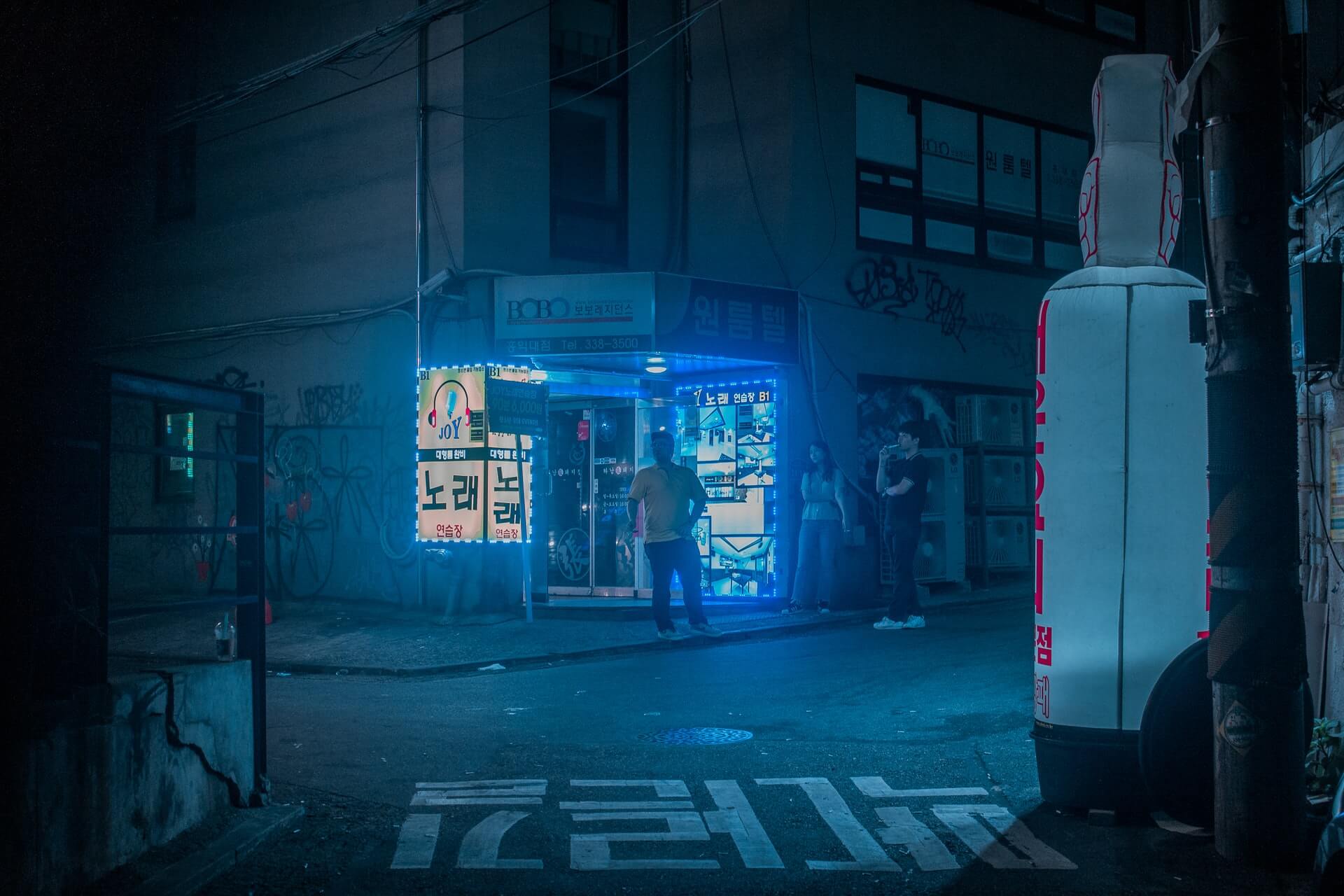
When it comes to drugs in South Korea, my advice is to steer clear. I love sparking a fat doobie as much as the next stoner, but it’s not worth it here.
Drug laws are pretty strict, and they love making examples out of foreigners who choose to ignore their laws. Are there drugs around? Sure. I just wouldn’t bother looking for them. Stick to booze here and save it for your next trip to Colorado.
Speaking of booze, Koreans definitely love to party. In fact, Koreans are among the heaviest drinkers in the world. Because of strict social norms at home and in the workplace, people tend to get quite loose when they go out.
The national drink of South Korea is soju , a clear spirit that’s usually about 20%. Most of the time, people just drink it straight, but sometimes a little soju is poured into a cup of beer to really get the party started. It’s not that strong, but it creeps up on you after several cups!
Travel Insurance for South Korea
A wise man once said that if you can’t afford travel insurance, you can’t really afford to travel! Do invest in good backpacker insurance sorted before you head off on an adventure!
ALWAYS sort out your backpacker insurance before your trip. There’s plenty to choose from in that department, but a good place to start is Safety Wing .
They offer month-to-month payments, no lock-in contracts, and require absolutely no itineraries: that’s the exact kind of insurance long-term travellers and digital nomads need.

SafetyWing is cheap, easy, and admin-free: just sign up lickety-split so you can get back to it!
Click the button below to learn more about SafetyWing’s setup or read our insider review for the full tasty scoop.
Most visitors to South Korea arrive at the Incheon International Airport outside of Seoul. There are direct flights to and from this airport from cities all over the world. You can also fly into Busan if you’re traveling to South Korea from other points in Asia.
Entry Requirements for South Korea
Citizens from over 115 countries are allowed to enter South Korea visa-free. The length of stay varies – Canadians get the jackpot of a maximum 180-day in the country.
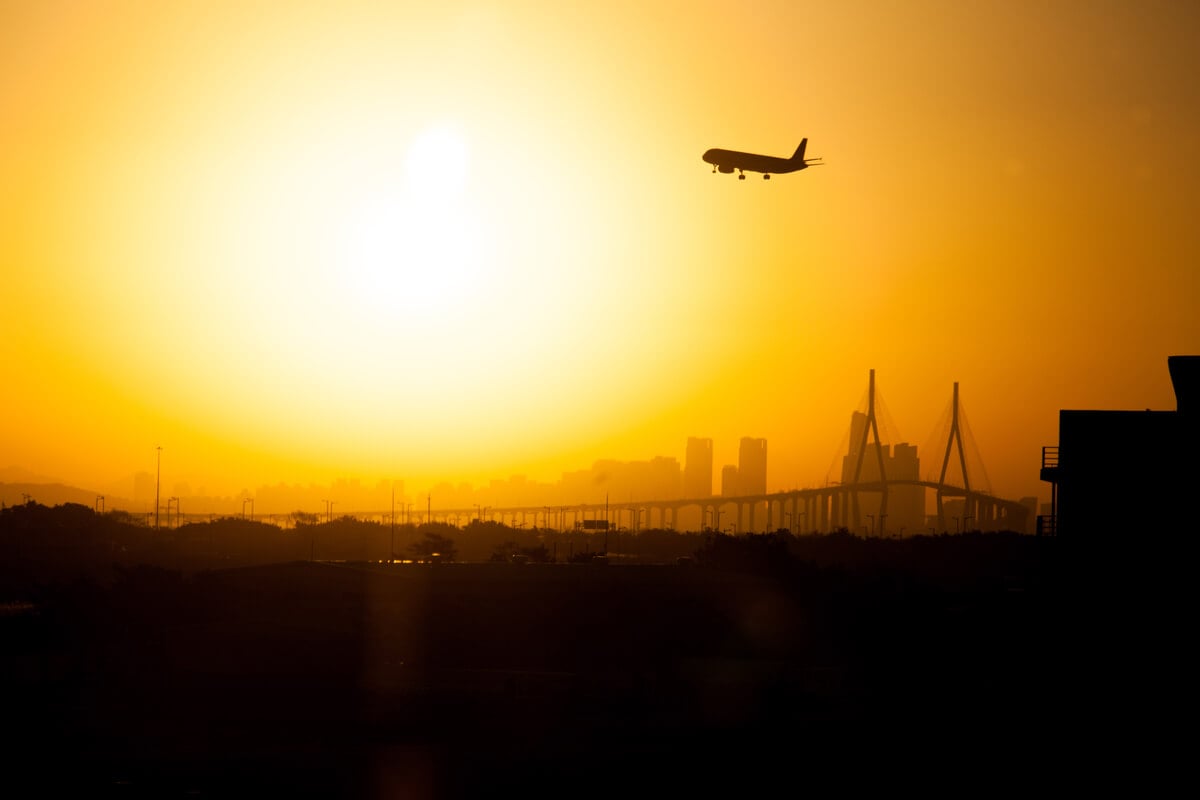
A bulk of the countries on the list get up to 90 days, including Americans, Aussies, Kiwis, and most EU countries. It’s always a good idea to check out the visa policy for South Korea before you plan your trip.

Get 15% OFF when you book through our link — and support the site you love so dearly 😉
Booking.com is quickly becoming our go-to for accommodation. From cheap hostels to stylish homestays and nice hotels, they’ve got it all!
Getting around South Korea is quite easy thanks to the country’s compact size and excellent transportation system. You can get from one side of the country to the other in just a few hours. When backpacking South Korea, most travellers get around via a combination of bus and train.
The national rail operator is Korail , and there are train routes connecting most major cities. If you plan to move around a lot, it is worth looking into purchasing the KR Pass . These give you unlimited train travel for a set amount of time, up to 10 days maximum.
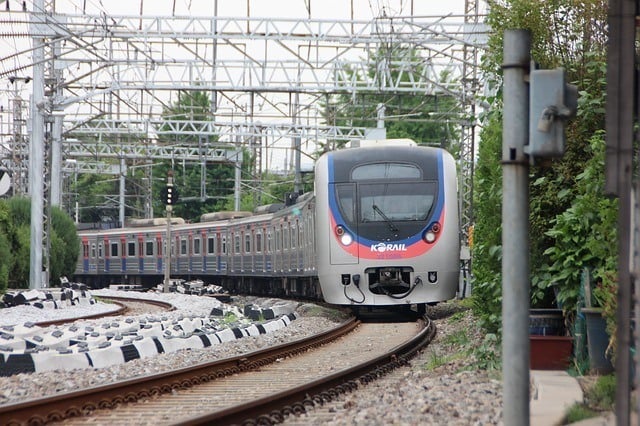
South Korea has a great bus system as well. You can get travel about anywhere in South Korea by bus in a timely and efficient manner. I’ve yet to take a train or plane in South Korea relying solely on the bus system to get around.
There are domestic flights between cities if you’re in a huge hurry, but you probably won’t need to fly unless you go to Jeju Island.
Hitchhiking in South Korea
I’ve never tried hitchhiking in South Korea , but apparently, it’s pretty easy. I’ve heard it’s similar to hitchhiking in Japan. It’s not super common but people do get it,
It helps to look presentable – clean-shaven and well-dressed – as well as staying smiley, cheery, and approachable. That said, if my experience hitchhiking in Japan and elsewhere in Asia is a good metric to go by, looking like a shaggy, colorful, hippy traveler works just as well.
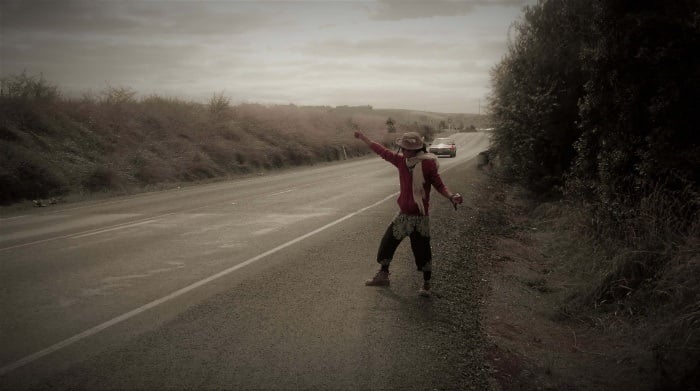
Generally, people are just delighted to meet and help an eccentric foreigner. Signs written by locals can help you get to your next destination in South Korea a bit easier, however , always specify that you only need to go in the DIRECTION OF ‘X’. That way, people don’t think your explicitly asking for a free 200 km lift.
For more hitchhiking tips, check out Will’s Beginners’s Guide to Hitchiking post. And remember:
- Back straight.
- Look like your having fun.
- Keep smiling. 🙂
Onwards Travel from South Korea
Unfortunately, your options for overland onwards travel are pretty much non-existent. While some adventurous travellers (with the ability to do so) may want to check out North Korea, it’s not likely you’ll be backpacking through there.
If you want to skip out on a flight, you can take a ferry from South Korea to either China or Japan. One of the most popular ferry routes is to head from Busan to Fukuoka, as it takes just around three hours to make the crossing. From Incheon, you can catch a ferry to several different cities in China.
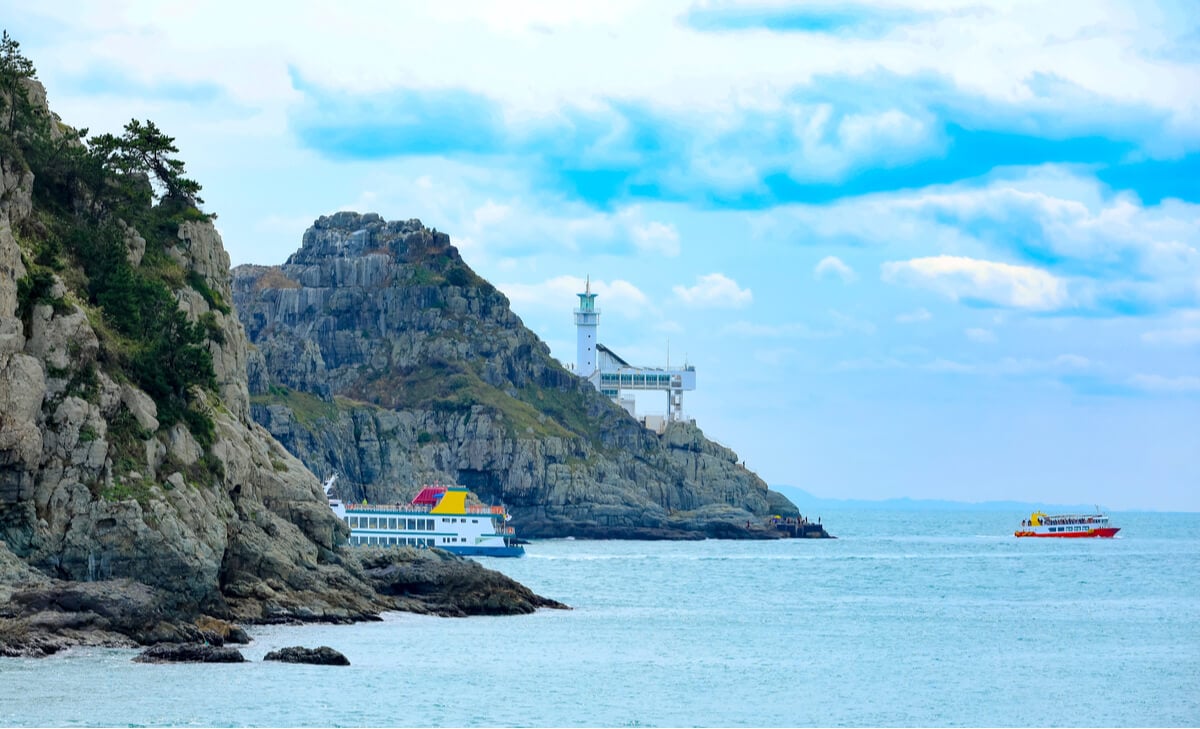
Of course, you can always catch a flight out of Seoul to virtually anywhere in the world. You have plenty of choices for onwards travel when flying out of the Korean capital, particularly major destinations in Southeast Asia like Bangkok or Singapore. A backpacking Southeast Asia adventure isn’t far away!
- Backpacking Japan Travel Guide
- Backpacking China Travel Guide
Yes, for sure and definitely. South Korea is what I like to call a part of ‘expensive Asia’ . Wages are high, the cost of living is high, modern conveniences are plentiful, yet, somehow, rice and tofu are still crazy cheap because this is Asia and no man or woman shall ever be denied their rice!
What I’m trying to say is, South Korea is a great destination for the working traveler provided your willing to endure the bureaucratic rigmarole. Here’s a great guide that breaks down the types of and requirements for South Korean work visas . Essentially though, you’ll be applying for a different visa depending on your occupation.
Now, if you DON’T want to plow through the bureaucratic rigmarole, volunteering in South Korea is also a fantastic option! Although, you may want to consider joining a reputable volunteering platform in order to find decent gigs. English is tough to come by, and it’s always good to have a trustworthy service behind you as you travel.
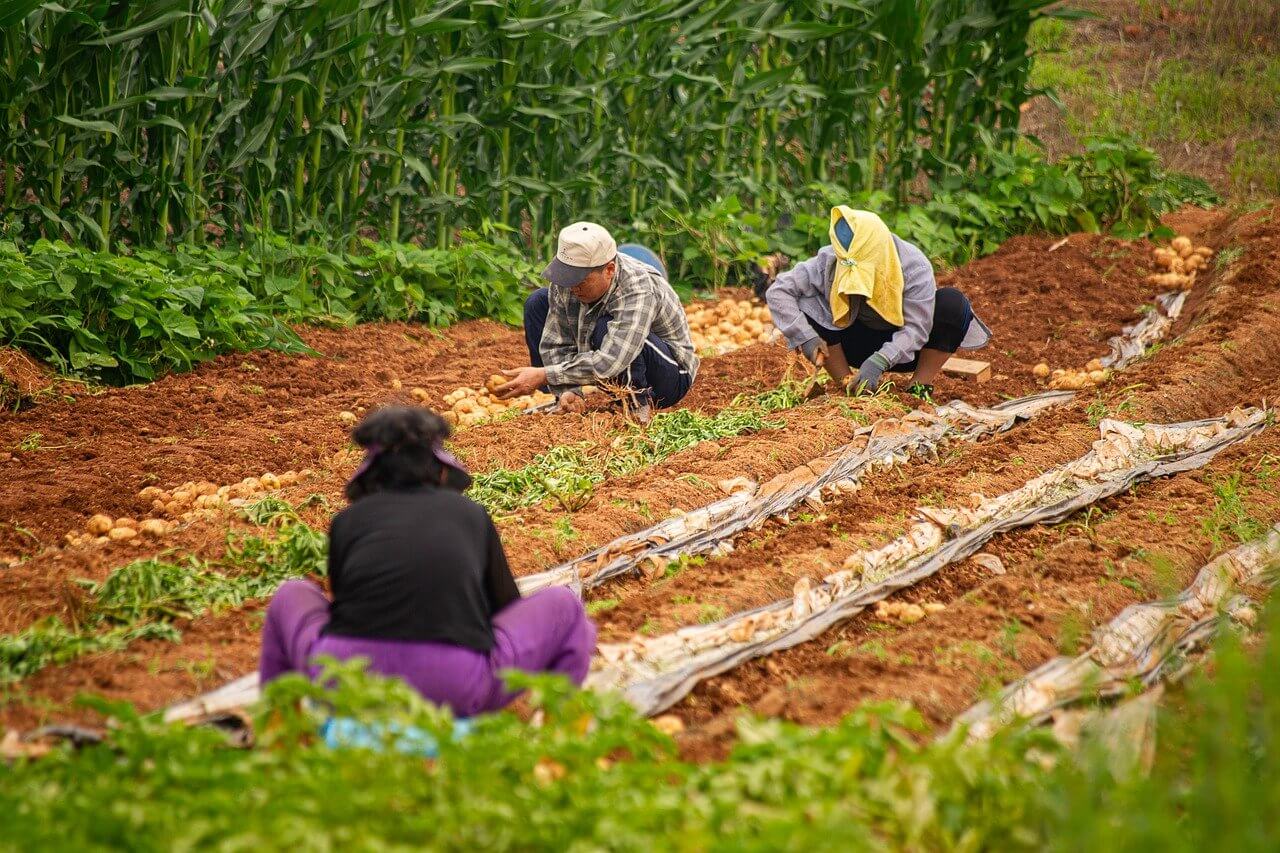
A new country, a new contract, a new piece of plastic – booooring. Instead, buy an eSIM!
An eSIM works just like an app: you buy it, you download it, and BOOM! You’re connected the minute you land. It’s that easy.
Is your phone eSIM ready? Read about how e-Sims work or click below to see one of the top eSIM providers on the market and ditch the plastic .
Volunteering in South Korea
Volunteering abroad is an amazing way to experience a culture whilst helping your host community. There are plenty of different volunteer projects in South Korea including teaching, construction, agriculture and pretty much anything.
South Korea is full of opportunities for backpackers to volunteer. Most gigs you’ll find are teaching English, but there are also plenty of opportunities to work in hospitality in exchange for free accommodation. All you need is a tourist visa and you’re ready to get started!
Want to find some awesome volunteering opportunities in South Korea? Then signup for Worldpackers , a platform that connects local hosts with volunteer travelers. As a Broke Backpacker reader, you’ll also get a special discount of $10. Just use the discount code BROKEBACKPACKER and your membership is discounted from $49 a year to only $39.
Programs run through reputable work exchange programs , like Worldpackers, are generally very well-managed and highly reputable. However, whenever you are volunteering do stay vigilant especially when working with animals or children.
Teaching English in South Korea
You know what’s even better than traveling? Getting paid to do it! If you’ve ever thought about teaching English abroad , South Korea is hands down one of the best places to give it a try.
In a country obsessed with education, jobs for native speakers are abundant. South Korea is also one of the highest-paying places to teach English. That brings us to our next point.
There are tons of jobs for native English speaking teachers in South Korea. If you’re a native speaker with a college degree and a TEFL certificate , you can easily find a job teaching in South Korea.
You WILL need TEFL certificate though; they’re super easy to obtain through online courses. We recommend going through MyTEFL because not only are they an excellent organisation, but you can also score yourself a 50% discount using the code PACK50 .
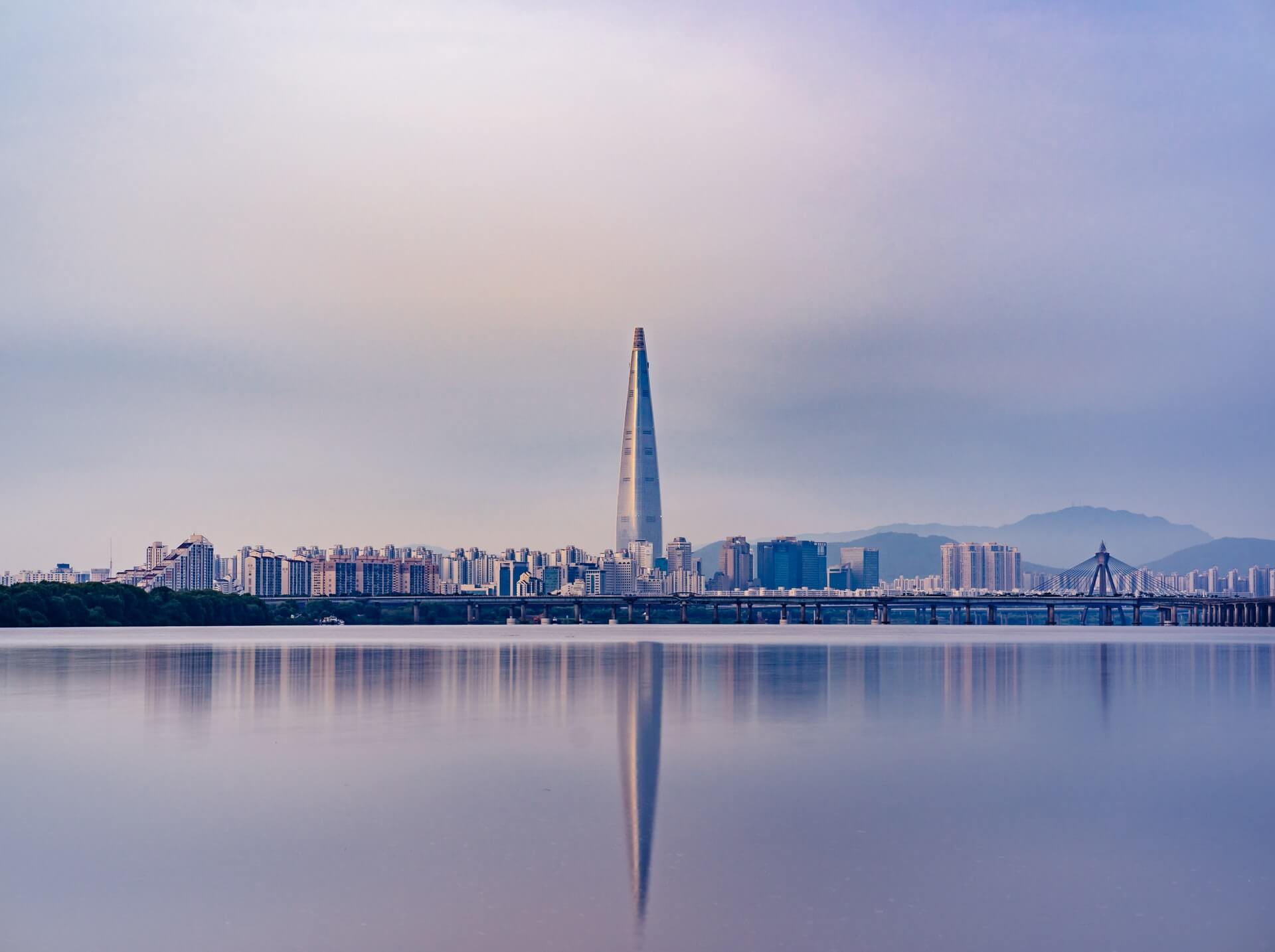
Getting a TEFL with Global Work and Travel is also a viable option. You can do the course either online or in Icheon where you’ll stay in shared accommodation with other TEFLers. They’ll also assist you with the VISA process and getting a job on completion of the course. There isn’t much they don’t help you with so you can’t really go wrong!
Many English teachers start out by working in a hagwon , which is basically an after-school and weekend gig. Even brand new teachers earn a decent salary and usually get an apartment provided by the school, in addition to airfare reimbursement at the end of a year contract.
Once you’ve got some experience under your belt, you can transition to a public school or university job and work a normal schedule.
Many people turn to teaching English in South Korea into a career and make really good money doing it. I have many friends who have taught English in South Korea and almost all of them had a great experience, except one buddy who had an awful boss. That can happen anywhere, though…
If you’re interested in learning more about working as an ESL teacher in South Korea, check out my interview with our friend Gwendolyn about her time spent teaching English in South Korea .

Oh wow. Where to begin? Enjoying the mouth-watering cuisine is definitely a highlight of backpacking South Korea. Make sure you hit up some street food, hole in the wall local joints, and Korean BBQ restaurants.
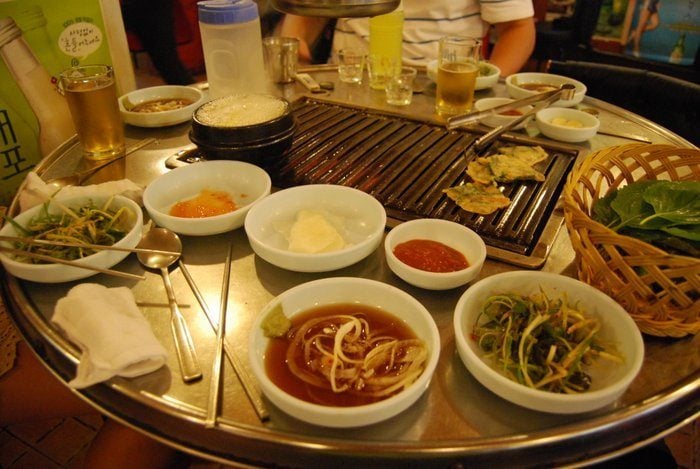
It is also worth mentioning that pretty much every meal comes with some kind of banchan or side dish; the amount basically scales with how you’re eating. If you’re eating solo, you’ll typically get 1-3, but if you’re in a big group you’ll get a bunch of banchans .
Popular Dishes in South Korea
Here are some dishes you have to try in South Korea:
- kimchi = the national dish – spicy, fermented cabbage
- bibimbap = a rice bowl with vegetables, spicy sauce, and a fried egg
- bulgogi = marinated beef
- japchae = stir-fried noodles
- teokbokki = rice cakes spicy sauce
- pajeon = savory pancake made of flour, green onions, and whatever else
- samgyetang = a soup with ginseng broth and chicken stuffed with rice
- dubu kimchi = stir-fried pork and kimchi served with boiled tofu
South Korea is a very homogenous country – around 96% of the population is Korean – so it’s not hard to meet Koreans. What might be hard is communicating, as English is not very prevalent. Most young people speak some English, although many be shy to speak a second language with foreigners.
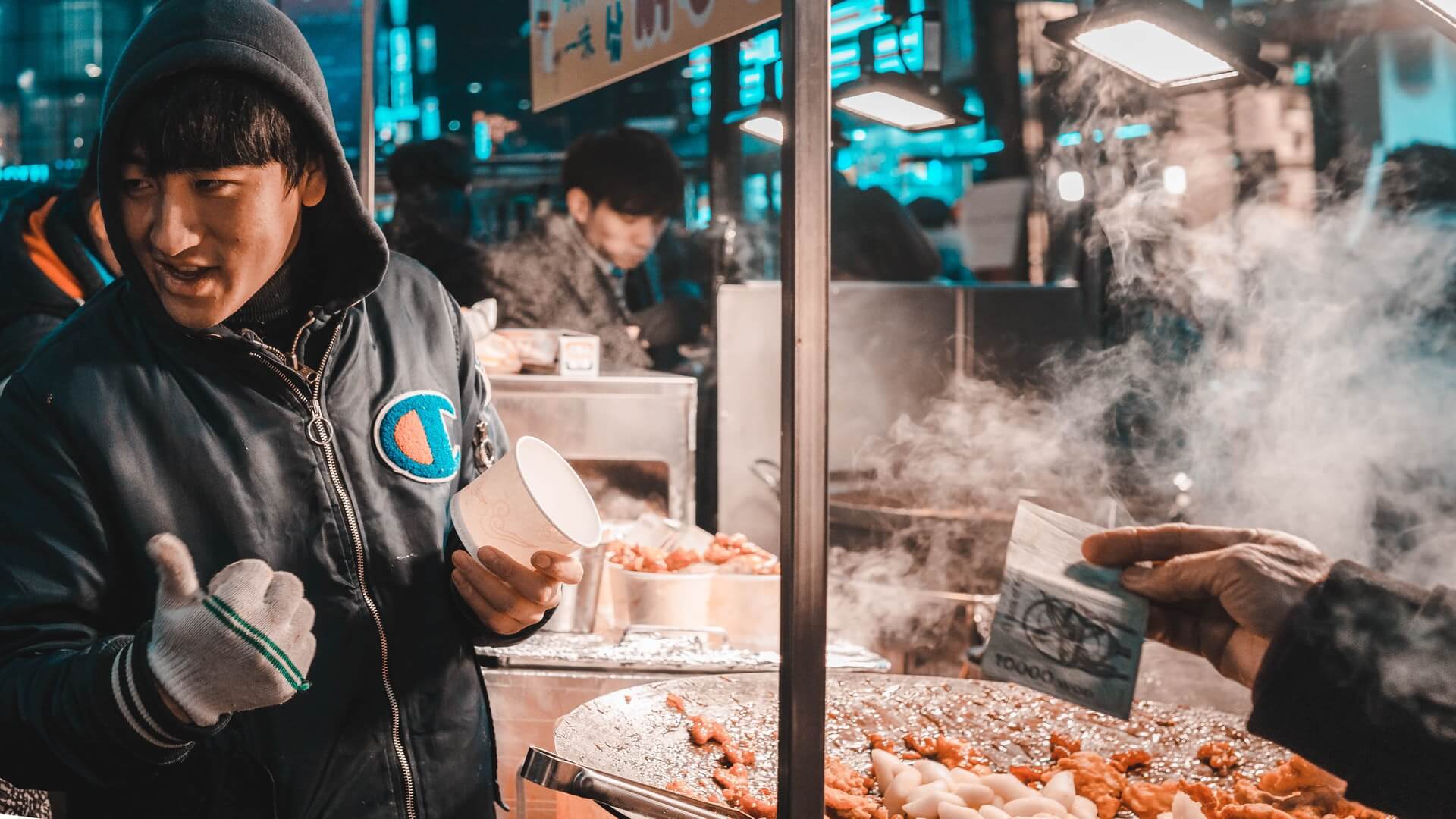
People in South Korea like to get outside and socialize in public parks when the weather is nice. Coffee shops and tea houses are also popular places to hang out and chat. As hiking is so big in South Korea, you’ll always meet people out on the trails.
Of course, you can always go out to bars and meet people as well. As I mentioned above, Koreans like to throw back a few cold ones after work (with a little soju mixed in, of course). Strike up a conversation and next thing you know it’s 3 AM and you’re hammered drunk belting out some karaoke. Welcome to South Korea!
Useful Travel Phrases for South Korea
Korean is difficult to learn, but a little effort goes a long way when learning a new language for travel. Plus, it opens up all kinds of experiences and opportunities.
Here are a few useful Korean travel phrases to get you started:
- Ahn-nyung-ha-se-yo = Hello
- Bahn-gap-seup-ni-da = Nice to meet you
- Uh-dduh-keh ji-neh-seh-yo? = How are you?
- Ah-nee-oh = No
- Jwe-song-ha-ji-mahn = Please
- Gam-sa-ham-ni-da = Thank you
- Binil bongjiga eobsda = No plastic bag
- Jebal jip-eusibsio = No straw please
- Peullaseutig kal but-igi balabnid a = No plastic cutlery please
- Chon-mahn-eh-yo = You’re welcome
- Sil-le-hahm-ni-da = Excuse me
- Yong-o-rul hahl-jool a-se-yo? = Do you speak English?
Books to Read About South Korea
Reading up on South Korea before visiting is a great way to earn some insight into the country!
- The Birth of Korean Cool : Find out how “one nation is conquering the world through pop culture” in this fascinating read. Beyond “Gangnam Style,” writer Euny Hong shows how a very uncool country became cool.
- Korea: The Impossible Country : How did South Korea transform itself from a failed country into an economic powerhouse in just 50 years? Find out in this in-depth look into South Korea’s rise from the ashes.
- The Two Koreas: A Contemporary History: Learn about the complicated history of the Korean Peninsula from World War II up to the present day in this highly acclaimed book.
A Brief History of South Korea
I’ll begin to explain South Korea’s recent history with the founding of the country on August 15, 1948. After the Japanese surrendered in World War II, the peninsula was partitioned – the US would administer the south, while the Soviet Union would administer the north.
The division was supposed to be temporary, but it didn’t quite work out that way. The Korean War broke out in 1950 and lasted for three long and bloody years. With no agreement, the status quo remained and the two would go on as separate entities.
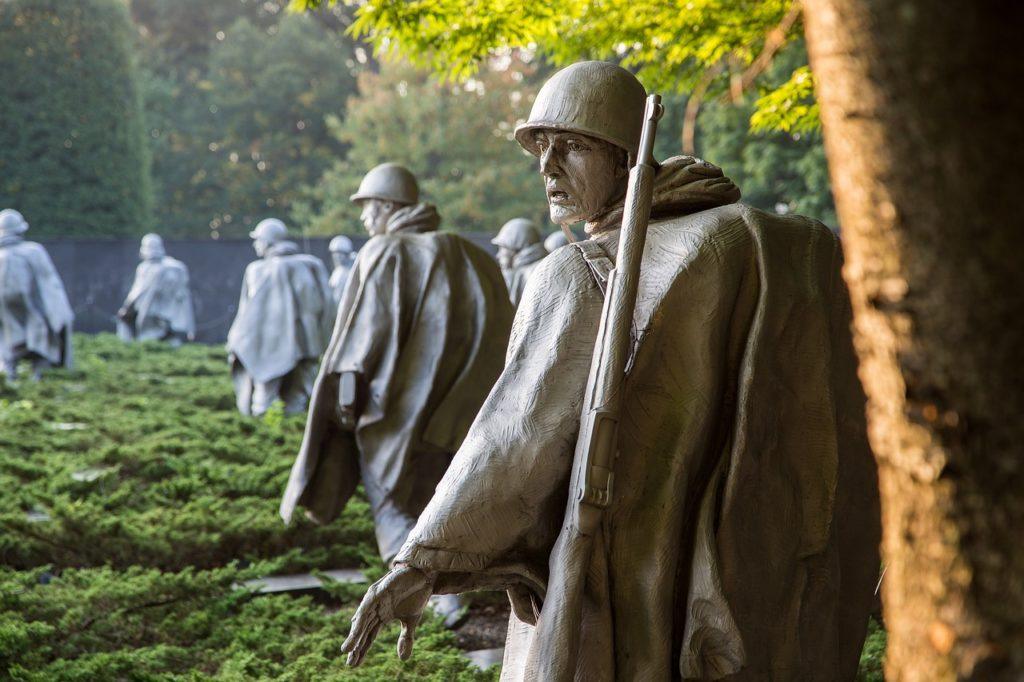
In the 70 years since the Korean War, it’s remarkable to see the stark contrast between the two Koreas. Just look at a satellite image of the Korean peninsula at night . While South Korea is full of bright, shining lights, the north is shrouded in darkness.
Since its founding, South Korea has gone through periods of democratic and autocratic rule. The era known as the First Republic was mostly democratic, but the Second Republic was overthrown early on and replaced by an autocratic military regime.
The country is currently in the Sixth Republic and is, for the most part, a liberal democracy.
South Korea elected its first female president, Park Gyuen-hye, in 2013. However, she was impeached in 2016 due to a corruption scandal.
The current president is Moon Jae-in, who was inaugurated in 2017. He made history by meeting with North Korean leader Kim Jong-un, and has done so on multiple occasions now.
Just as you would anywhere else in the world, be sure to respect the local culture and customs when backpacking South Korea.
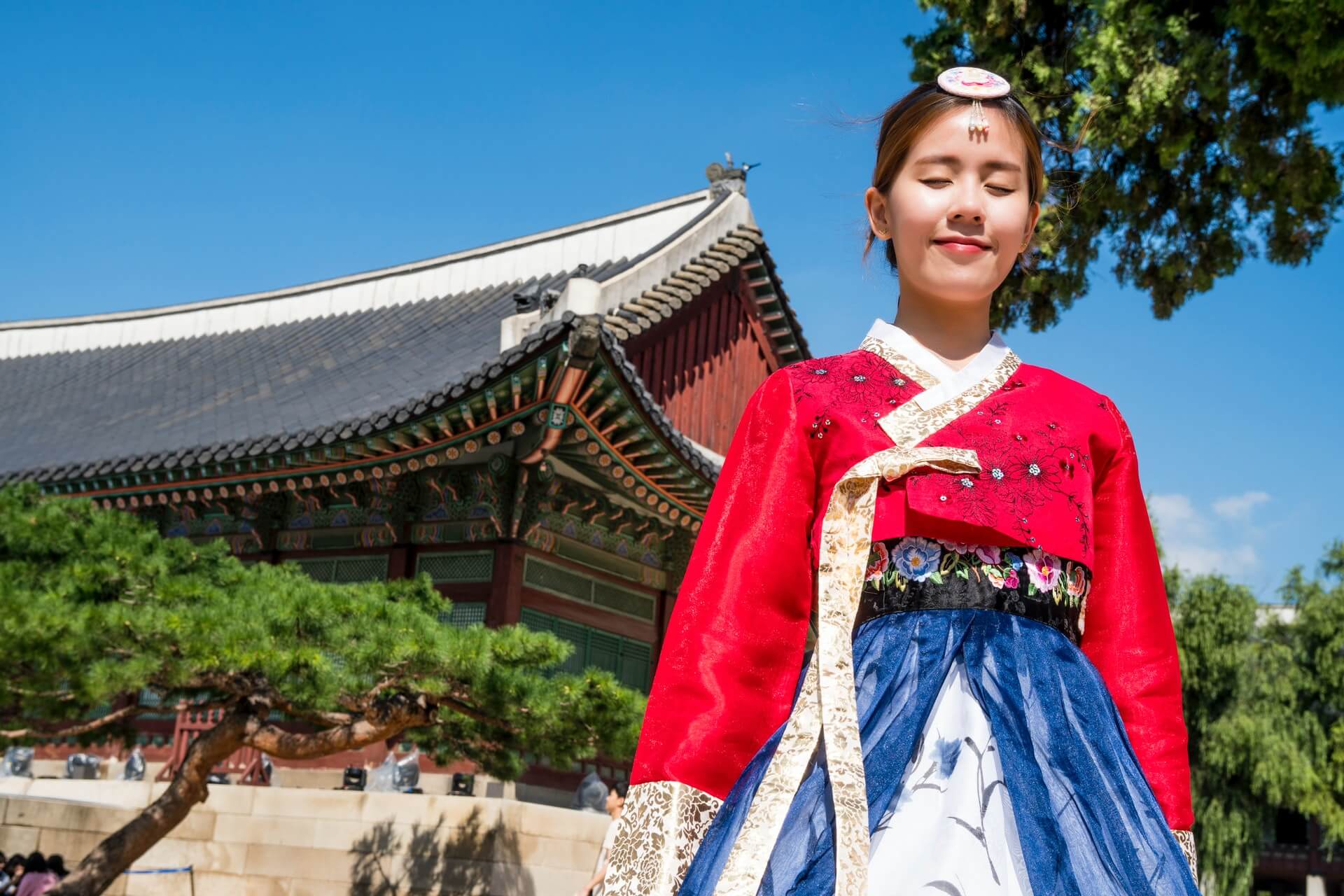
For example, you should always pour someone else’s drink before your own, and shouldn’t leave chopsticks in your rice bowl, as this resembles ancestral ceremonies.
Be sure to remove your shoes when you enter someone’s home in South Korea. People love sitting and even sleeping on the floor here, so it’s very rude to muck it up with your dirty shoes. Other than that, just be respectful and friendly and people here will treat you very well.
And Have a Blast Backpacking in South Korea
While South Korea isn’t often brought up as a backpacking destination, it most certainly should be. With bustling cities, tons of outdoor adventures, a vibrant culture, and even a beautiful island, you’re sure to have a great time backpacking South Korea.
This is a fascinating country that has transformed drastically over the last few decades. It’s amazing to see the clash of tradition and modernity taking place here.
On one hand, Koreans proudly celebrate their traditions and ancient culture. On the other hand, they’re sprinting towards the future with break-neck speed.
Should you decide to travel to South Korea, you will be well rewarded. It’s an affordable destination that offers tons of unique experiences.
Best of all, you don’t need a lifetime to take in all that the country has to offer. Carve out a few weeks to dive into South Korea, and it will be one of the best trips you ever take.
- Best hostels for South Korea
- South Korean foods to try
- Is South Korea expensive
- Backpacking Japan guide
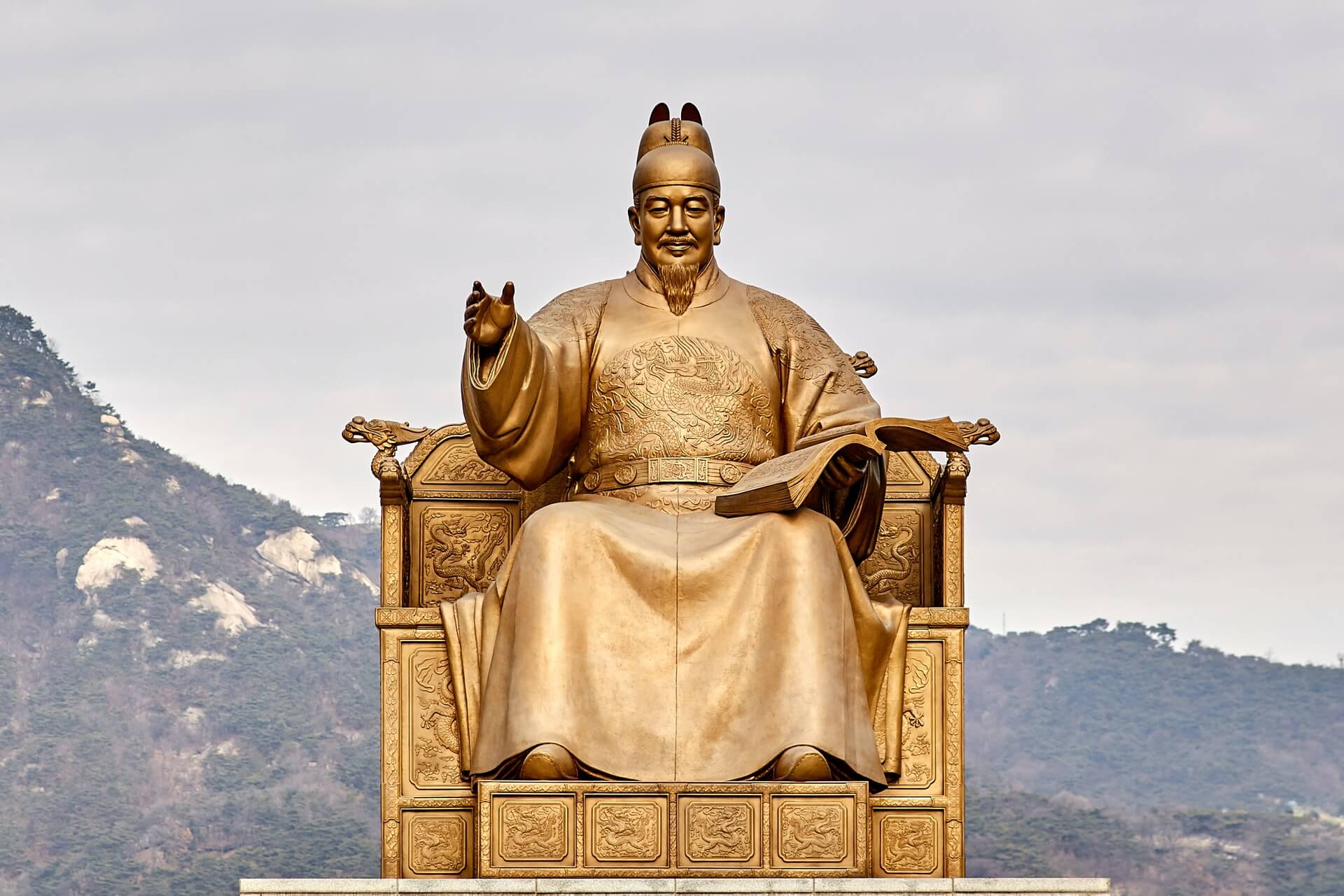
Share or save this post

Note: Backpackers in Jeollanam-Do (southernmost province) are welcome, but BEG-Packers are not.
Koreans are put off by these vermin and local expats will happily inform the local police, who will escort them to the nearest airport.
Bring a positive appearance to Korea. Don’t become a cautionary tale.
That “Oeam Folk Village in spring” photo is probably actually autumn. That’s when the cosmos bloom. (Also, the rice looks pretty high.)
also from my side a big thank you for the helpful tips. I am heading to south korea in a couple of weeks and i will definitely use some of your tips and recommendation when i am there
Fab reading. Heading out for a week from Egypt after a visit to Hong Kong and China. Thanks for all the info!
Have an awesome time!
I enjoyed your article. I started learning Korean a month ago and will take your advice on spending more time to speak it. Thanks!
I’m in Danyang and i dont see widely available ATMs, i tried 2 already and they dont wanna work with my visa.
Leave a Reply Cancel reply
Your email address will not be published. Required fields are marked *
Save my name, email, and website in this browser for the next time I comment.
Notify me of followup comments via e-mail.
- Philippines
- South Korea
- National Parks
- Travel Stories
- How Much Does It Actually Cost to Travel the World?
- What’s In My Backpack: The Ultimate Long-Term Travel Packing List
- My Favorite Non-Fiction Travel Books
- All Budget Travel Resources
- Writing Portfolio
10 Days in South Korea: A Mini Travel Guide (2023)
This post may contain affiliate links. This just means I may receive a small commission at no extra cost to you for helping them promote their product or service. I don’t endorse any services I don’t personally use or recommend.
South Korea is a destination I’ve always been semi-interested in. It never topped my bucketlist, but it was also far from the bottom. My hesitation has always been my pension for remote undeveloped destinations rather than a modern metropolis. But I love Bangkok, Cairo, and Mumbai. So, why not add Seoul to my list?
We spent 10 days in South Korea and while that’s not nearly long enough to be any kind of expert on the country, it was long enough to gain some valuable insight and recommendations worth passing along. Here’s our mini travel guide for a quick trip to South Korea.
Our Mini Travel Guide to South Korea (10-Day Itinerary)
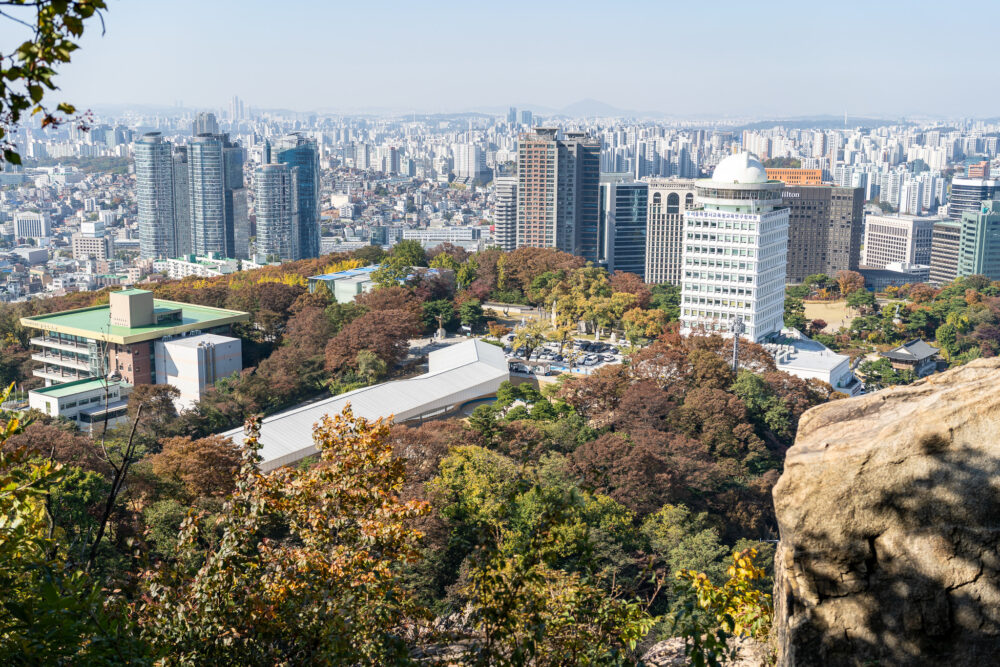
This is not a be-all-end-all list for the country. But it is a collection of my favorite destinations, food, and some helpful tips to make getting around the country a bit easier for first-timers.
Important Tips for Traveling in South Korea
Fall is the perfect time to visit Korea. Specifically, early to mid-October when the hills are alight in gold, orange, and red leaves. Leaf-peeping here rivals Vermont. The entire countryside is covered in forested hills that change with the season. Add to that the mild temperatures and blue skies, and this is the best season to visit.
I’ll divide the rest of the tips into two separate categories…tips for making travel easier and tips to make the rich culture of Korea more digestible.
Tips to Make Travel Easier
1. make sure your flight arrives before 11 pm. .
Night flights into Seoul are rare but they do happen. I know because we were on one. Arriving late into Seoul, where the airport is an hour-long drive from the city center means you have to taxi rather than use the super easy and cheap metro. Taxis from the airport to the city cost around $55.
2. Download KakaoMap
For whatever reason google maps and maps.me are basically useless in Korea. This map will save your skin though. The only downside is it’s not offline compatible (that I know of) so you’ll still need a Korean SIM card to use it for directions outside the hostel. We found things on Kakao and then plotted them on Maps.me so we could skip the SIM card.
3. Screenshot the front of the building so you can actually find it.
Most of the time the name of restaurants will be in Korean, not English so it’s helpful to know what the place looks like rather than what it’s called. We were especially sure to do this with our accommodation.
4. You don’t NEED a T-Money card but it will save you time.
A T-Money card is essentially a reloadable public transport card. You can use the disposable trip cards each metro use but since we used the metro several times per day in Seoul it seems like it makes the most sense to just get a card. Each metro ride is about 75 cents per person. Buses take cash as well as T-money cards.
5. Watch out for Mondays.
Museums, restaurants, and shops are often closed on Monday. Think Sunday hours in the USA.
6. Inter-city bus tickets can be bought the day of, but on the weekends should be purchased in advance.
There are little kiosks with English menu options that should be able to help you secure tickets at each bus station. We bought all of ours on the day of travel with no problems. But during high season or weekends, you could have problems securing a seat day of on the more popular or less serviced routes.
7. “Express Buses” don’t actually get you there any faster.
Because roads are so well maintained in South Korea the “Intercity” buses and “Express” buses have little to no time difference between destinations. The big difference is in the type of bus. Express buses are a little more expensive, located in slightly less convenient areas, and a little nicer with larger seats and more recline. But the intercity buses are super comfy too.
The most important factor in deciding which you should use is where the respective bus stations are in relation to your accommodations. For us, we pretty much exclusively used the intercity buses because the terminals were all within walking distance from our accommodation.

Cultural Tips
1. know the polite way to give and receive something. .
You should always receive things with two hands. You should always hand things to another person while using one hand and the other gently touching your elbow or forearm area.
2. Korea isn’t super solo traveler friendly.
This is arguable I suppose. Here’s the deal. There are a lot of dorms and it’s very easy to make friends in South Korea because there is a huge number of solo travelers. BUT a lot of Korean food is meant to be eaten in groups. To the extent that some restaurants won’t even let solo travelers be served certain meals (Korean BBQ for example). Portions in Korea are HUGE.
It’s also good to know that if a dish is 15-20,000 won you can expect it to be large enough to serve two hungry people. Meals in Korea are just meant to be shared and if you do eat solo you’ll end up spending more on food and having tons of leftovers.
Our Suggested South Korea Itinerary
This is how we filled our 10 days in Korea and how I would alter it if we could do it all again.
Seoul (4+ days)
If I could spend more time in Seoul just to eat all the glorious food…I would have. But Seoul is rather expensive. We found two dorm beds for $13 each at a lovely hostel in Hongdae called Time Travelers Relax Guesthouse . Hongdae is a young “nightlife” neighborhood but the hostel was quiet and it’s well connected to the rest of the city by metro.

There’s a lot to do and see if you like parks, exceptional food, history, and museums. It’s also a city extremely popular with expats and those doing a work exchange while going to school. Digital nomads as well.
If you’re planning to go from Seoul to Sokcho by bus (you should, especially in the Fall) you should depart from DongSeoul Station . Not only is it easier to reach than the express bus terminal from Hongdae but it drops you off nearer the water (and likely your lodging) in Sokcho so you can walk.
Sokcho (2 Days)
It takes about 2.5 hours to reach Sokcho from Seoul. Take the bus from the Daegu station. It’s less popular with foreign tourists but it drops you at the intercity bus terminal in Sokcho which is closer (usually within walking distance) to most lodging.
Sokcho itself is a big summer beach + seafood destination. The streets are lined with crab tanks and stands BBQing little Mackerel. The city is much larger than I expected and other than the central market and lovely coastline at sunset doesn’t have all that much to offer. The main appeal is Seoraksan National Park.
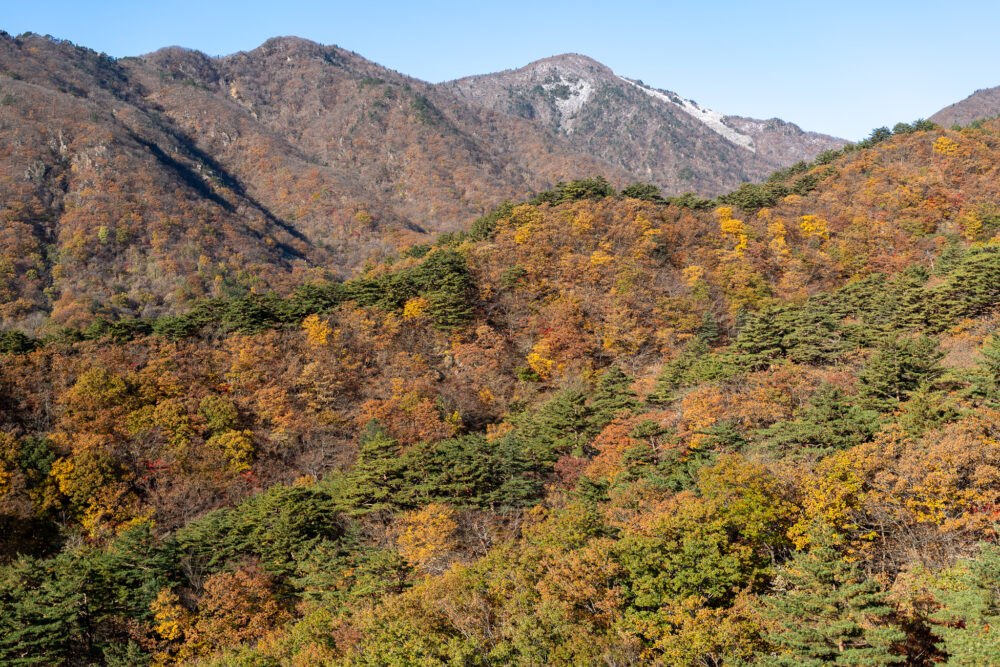
Take bus 7 from town to the end of the line and pay the $3 entrance fee for some of the best hiking in South Korea. Be sure to arrive before 7:30 AM to beat the crowds. And avoid weekends in the peak Spring, Summer, and Fall months.
If you only have time for one hike make sure it’s Ulsanbawi Rock. A 7-mile round trip uphill hike to an incredible viewpoint of Sokcho and the smooth boulders forming a ridge in the park. This one hike wiped us out and made us wish we had one more day in the park. So if you want to see it all and do the waterfall hikes or the walk through the valley to Geumganggul cave I would plan for one more day in the park.
Hostel: I recommend James Blue Hostel . James was super helpful in planning our trip, offers free coffee and breakfast, lovely rooms, and was right near all the bus stops we needed.
Jeonju (2 days)
Getting here from Sokcho via bus is a half-day venture. It can take anywhere from 5-6 hours and only a few departures per day that don’t route you back through Seoul. Plan to head to the bus station early.
The capital of culture and food in South Korea. Specifically, Bibimbap. During fall the streets of Jeonju are covered in the golden wings of ginkgo leaves and brilliantly yellow ginkgo, some over 600 years old, rim the old town. Jeonju is also known for its numerous festivals and being home to South Korea’s largest traditional village with more than 600 Hanok homes decorating the city skyline.
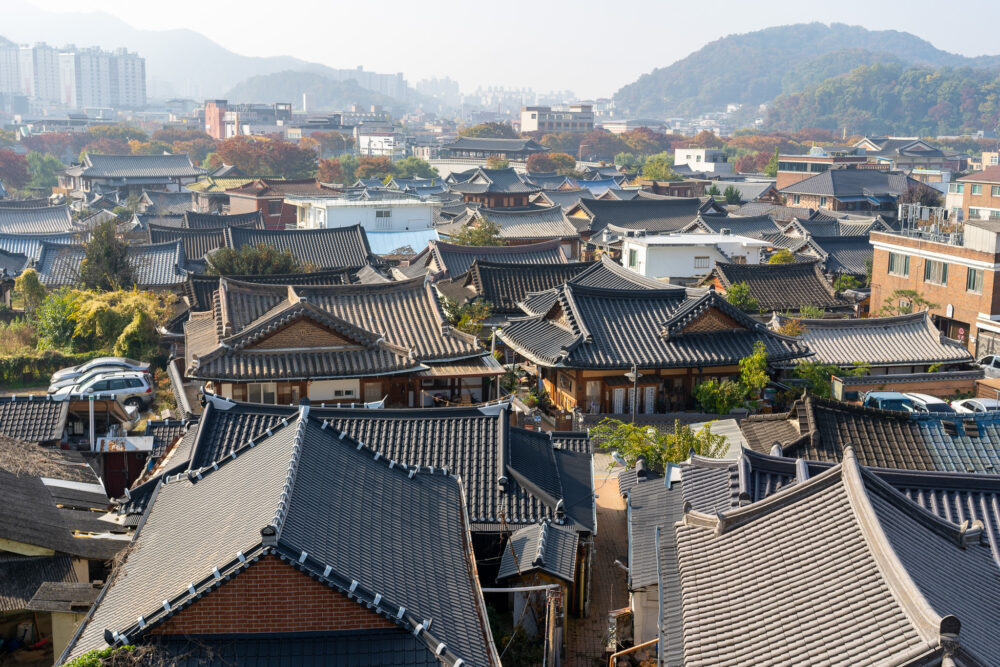
Many travelers miss Jeonju unless they’re foodie focused. But eating is Korea’s main attraction and it is a very pretty city.
Busan (2 days)
The bus from Jeonju to Busan is 4 hours and super easy. There are tons of buses leaving from both the intercity and express stations in Jeonju.
I hesitate to recommend two days in Busan. If you are going to cut one day out of your itinerary make it one from here. It’s not that I don’t like the city. I do. But as far as attractions and food go…the other destinations in Korea have more to offer. Busan is dirtier, more chaotic, seedier (not in a dangerous way), and I found the attractions a little more gimmicky. I feel like you could cram the beaches of Busan, Gamcheon Cultural Village, and food in Busan all into one day.
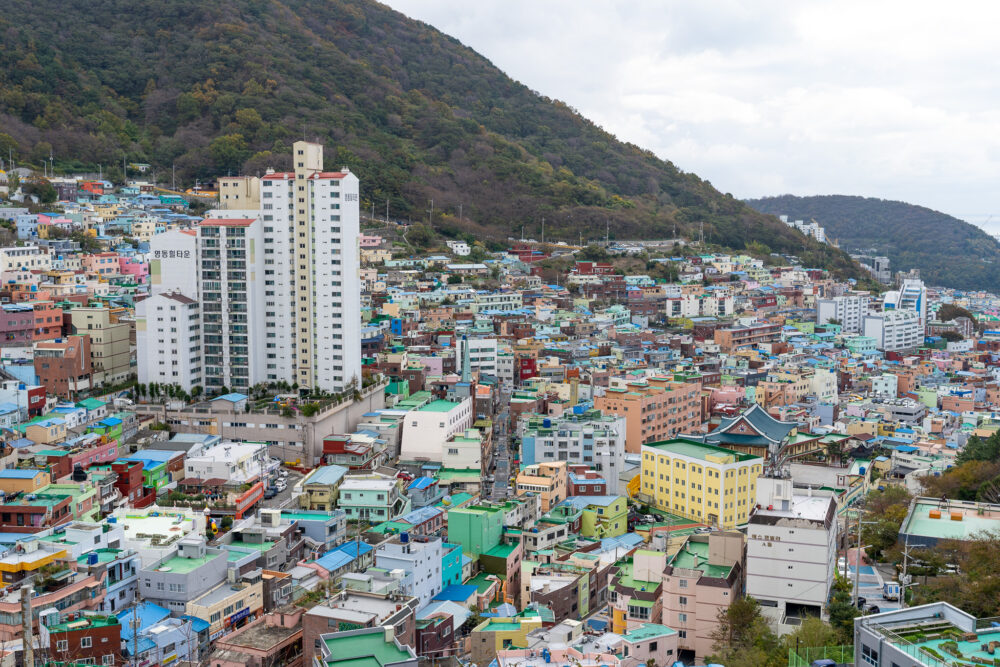
But judging by other travelers’ ravings about Busan, it appears that I’m in the minority.
There are plenty of other destinations you could add to your itinerary, popular ones include Jeju Island or the Gyeongju burial mounds. With limited time (and money) we decided to stick to just these 4 in the 10 days that we allotted for South Korea. This gives you a very well-rounded look at the country.
Sights We Recommend in South Korea
South Korea would be an amazing place to live. It’s no wonder so many digital nomads and English teachers spend a year or two getting to know the country. But not all of us have years to gallivant around the country.
Here’s a look at a few things you should definitely do on a short trip.
Best Sights in Seoul, South Korea
- Hike to Namsan Tower. The hike is only about 2.5 miles round trip and has great views of the city. We didn’t feel the need to go up into the tower because the views from the summit were impressive enough.
- Visit the War Memorial of Korea Museum. It’s free and a great way to learn about the history of the Korean Peninsula.
- Gyeongbokgung Palace. This offers a great look at ancient architecture in Seoul. It’s photogenic and a nice way to spend a morning. You can also rent a traditional Hanbok for $6 and enter the palace for free.
- Namdaemun Market. This outdoor market has everything. Tasty street food and all kinds of goods, it was one of my favorite places to visit in Seoul. Lunch is the best time to visit.
- Gangnam. This is a popular wealthy neighborhood in Seoul that’s worth walking through late at night.
- Enjoy the nightlife in Itaewon. This is a late-night club spot. If that’s you’re thing, you’ve got to check it out.
- Traditional Hanok Village. Get here early to see a beautifully preserved traditional neighborhood and photograph the steep streets.
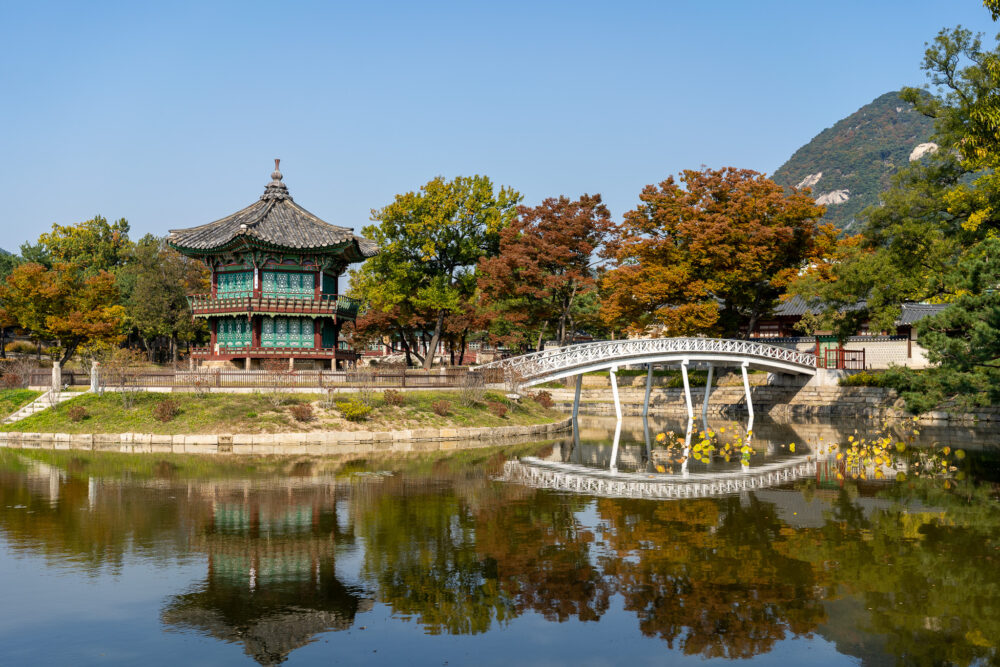
We skipped the DMZ. At $60 per person, DMZ tours are pretty expensive and it’s not like you get to set foot in North Korea. If you’re super interested in the current state of the demilitarized zone between the two countries the tour could be a good add-on to this list. I just felt like it wasn’t worth it to us.
Attractions to see outside of Seoul
- Seoraksan National Park (Sokcho) . Ulsanbawi Peak is one of the more difficult trails but still doable in a long morning. I recommend getting to the park when it opens at 7 AM and starting this 7-mile hike right away.
- Igidae Coastal Walk (Busan). This is a lovely seaside walk to enjoy the pretty coastline of Busan.
- Gamcheon Cultural Village (Busan). This is a pretty touristy spot. But it’s worth an early morning visit to beat all the people and see the colorful neighborhood from above.
- Jeonju Hanok Village. This is the largest in South Korea. There are plenty of viewpoints throughout the city to photograph the iconic rooftops.
- Jaman Mural Village (Jeonju). Near the Hanok village is a small neighborhood covered in cute Korean murals. There’s a really tasty deep-fried rice cake gimbap in there too.
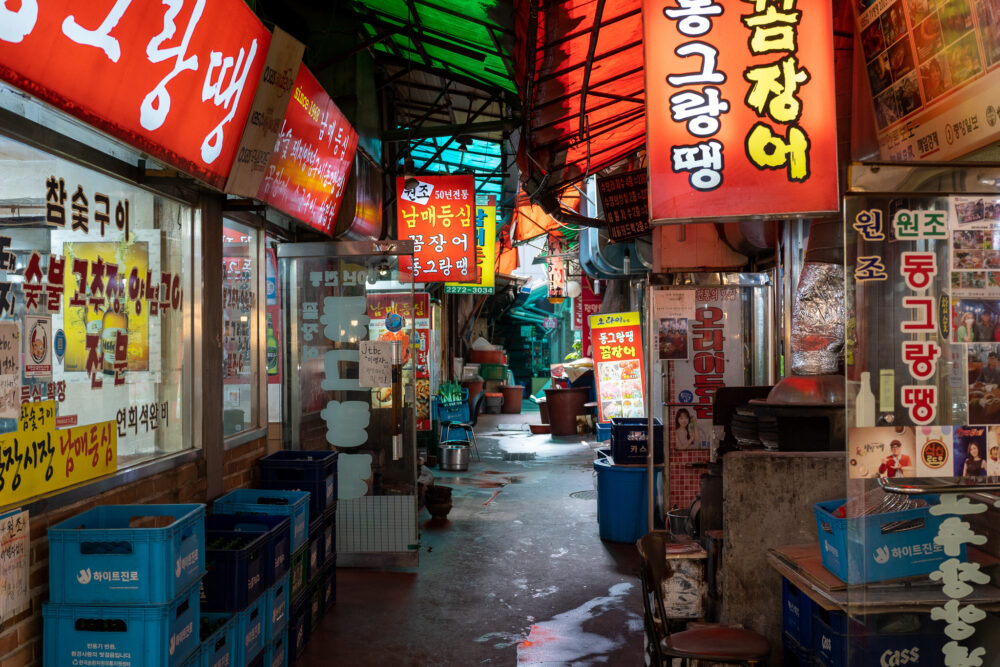
Food We Recommend in South Korea
Food is one of the main reasons to visit South Korea. I mean, the country is extraordinary, with excellent nature preserves and sprawling livable cities filled with parks. But the food is a major draw for travelers. Here are a handful of my favorites.
You would have to spend more than a month in Seoul to hit all the best places. My 4-days were nowhere near enough. Normally, I wouldn’t even bother making food recs having been in the city so short of time. But thanks to Will Fly For Food and several other blogs I was able to compile a list of the best of the best.
Don’t forget to look up all these places on KakaoMap because Google Maps work so poorly in Korea.
Some Must Eats in South Korea
- Hyodo Chicken. (Seoul) Hands down the best friend chicken in the world. I mean it. I don’t care where you are staying — make the journey to it and get the original + soy-soaked bone-in. This place is owned by two Michelin chefs but costs the same as any other classic chicken and beer joint in Korea.
- Woo Lae Oak. (Seoul) Korean BBQ, the best kimchi I had in the country, and the must-eat dish — Pyongyang North Korean Noodles. Made from buckwheat and in a cold broth.
- Sokcho Seolong. (Sokcho) Stepping outside of Seoul, this Hawaiian/Japanese fusion is incredible. Get the Tonkatsu.
- Dok Galbi. (Seoul) The name of the restaurant is in Korean so just put (37.555987, 126.925378) into your GPS and that should find it. Massive portions and best served with an order of udon scrambled into it.
- Gyeongdong Market. (Seoul) This is THE street food market in Seoul. Many of the dishes are Michelin-starred or featured on various Netflix shows (like Street Food). You have to get Kimchi dumplings, potato pancakes, and hand-cut noodle soup. Come for lunch rather than dinner and be sure to pick the place with the longest line.
- Grandma Yus Bibimbap. (Seoul) The best in Seoul. Jeonju is renowned for its bibimbap through.
- Yeontabal Korean BBQ. (Seoul) If you need the best Korean BBQ in the country.
- Sooni’s Store. (Seoul) I recommend the Kimchi stew if you can handle the spice or a delicious rice cake and cheese ramen.
- Manjok Ohyang Jokbal. (Seoul) Pig trotters and pork belly.
- The Best Bibimbap (Jeonju). Okay, again the restaurant is in Korean so you’ll have to make do with the GPS coordinates and look for the big line outside. Coordinates: 35.817573, 127.1458
- Veteran Noodle (Jeonju). This locally famous shop serves kalguksu noodle soup and dumplings with heated floor seating.
- Dongducheon Budae Jjigae (Busan) . If you haven’t found a good army soup yet (spicy stew with Spam, hotdog, ramen, tofu, and other American-style canned non-perishables) this is your chance. I promise it’s far better tasting than it sounds.
- Daily Beer Nampo (Busan) . It’s always good to have another chicken and beer joint on hand in South Korea. This one serves its signature beer from a Pyrex glass and has above-average chicken.
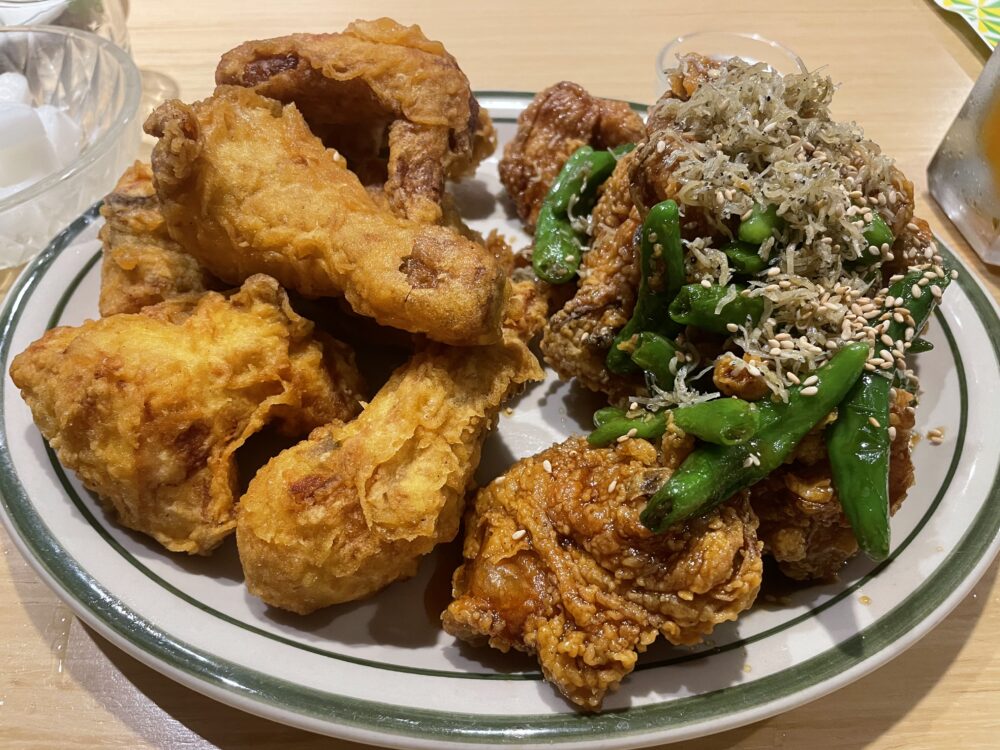
Skip Tosokchon Samgyetang Chicken Soup. This place is touted as “the best soup in Korea” but honestly, we found it quite bland and not even close to our favorite meal in South Korea. It’s right in the heart of the tourist district, the line can be over an hour long, and it costs nearly $14 for a single soup. Maybe it’s because we ordered the soup to-go (because we weren’t about to wait in the lunch rush line) but we weren’t impressed. I get it’s an indigenous recipe with ginseng and jujube* but I would say not worth the wait.
Street food is actually very common in Korea. But it’s all mostly the same. Tteokbokki rice cakes, steeped fish cakes, meat sticks, walnut puffs, and egg/cheese bread. It’s also not that cheap. I found that most items were at least $1 per piece.
Budget for 10 days in South Korea
Here’s exactly how much we spent in South Korea for two travelers over the course of 10 days.
Daily Accommodation Cost: $26
Daily Food Cost: $37
Total Spent on Transport: $150 + $55 Airport taxi
Amount Spent on activities in South Korea: $11
Total Spent in South Korea: $899.08
Total Spent Per Person Per Day in South Korea: $44.95
Considering we try to stick to a budget of $50 per day for the two of us ($25 pp per day) this is an expensive country for us. We found it difficult to save money when the bulk of our expenses was on food that we wanted to try. Korean food culture is very unique and we didn’t want to miss out on that experience. But unlike Japan where you can just share one single dish to save money–Korean cuisine is typically charged per person with a min of two people eating the same dish. This meant we had to eat out for every meal to try it all and spend way more than we wanted to.
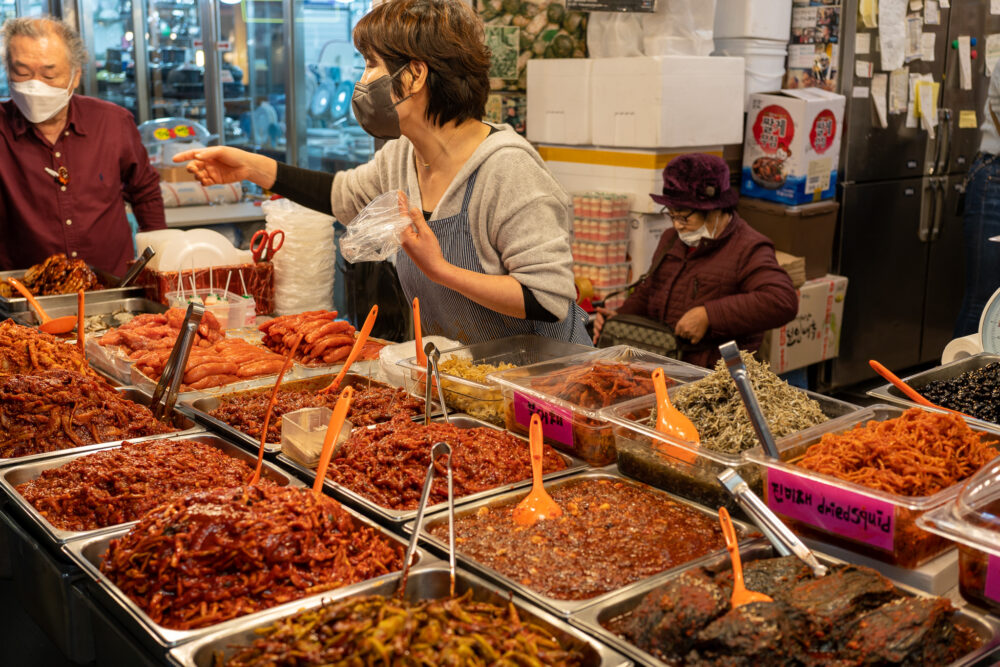
How to Save Money in South Korea
We visited South Korea and Japan back to back. While some things in Japan were definitely more expensive (transportation, mostly) I found South Korea, surprisingly, to be equally if not more expensive day-to-day as Japan. Here are a few ways to make South Korea a little more affordable.
1. Participate in a work exchange.
This is super popular in South Korea and usually consists of spending 1-4 hours per day helping at your hostel in exchange for free accommodation. You can ask around upon arrival if any hostels are looking for volunteers.
2. Street food or 7/11.
This is the cheapest way to eat in the country. Hot food in Asian 7/11’s is actually quite good. And super affordable. I recommend the bao buns, hot ramen, and all the grape-flavored gummy snacks.
3. Try lunchtime at fancier restaurants.
This can be a great way to try smaller dishes or specials at lower prices than the set dinner menus.
4. Go out in groups.
Certain meals should be eaten in groups. Korean BBQ for one. This is one of the meals most restaurants won’t even serve to a single traveler. Although some places charge per person, it’s often a little cheaper to dine with more people and share.
I really enjoyed my time in Korea. I felt like the 10 days we spent in the country was the perfect amount of time to get to know the culture on a really basic level and enjoy the best attractions, food, and destinations. South Korea is going to unseat any of my favorite countries to visit any time soon, but those who really love efficient and clean cities might feel differently.
Save This Post For Later!
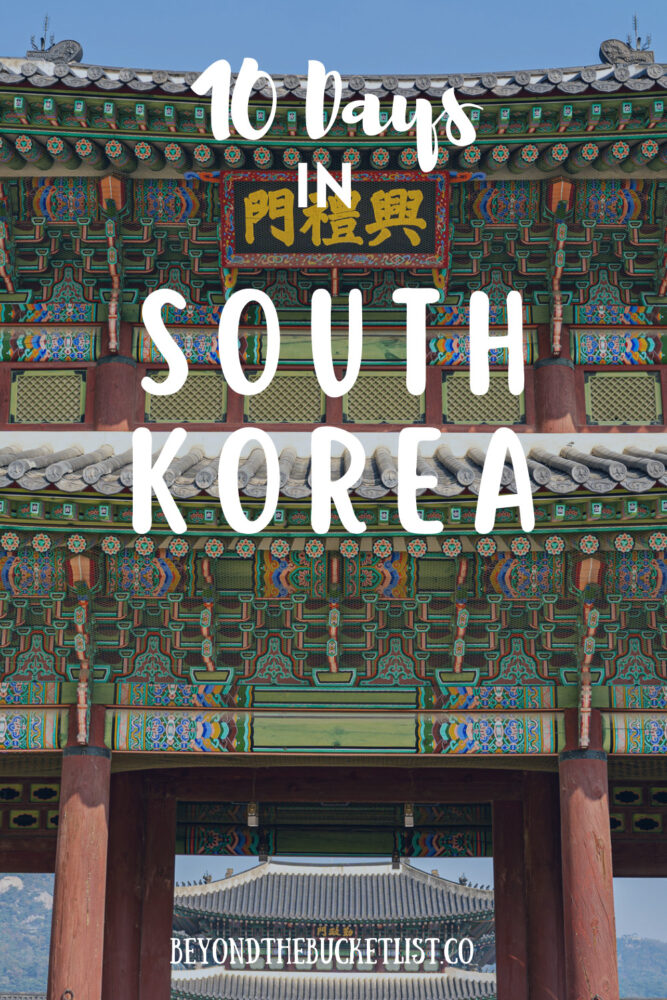
No Comments
Leave a reply cancel reply.
Save my name, email, and website in this browser for the next time I comment.
Notify me of new posts by email.
Sign up to our newsletter!
This site uses Akismet to reduce spam. Learn how your comment data is processed .
10 Luxury Camper Van Accessories that Every Vanlifer *NEEDS*
15 tips for visiting japan on a budget (how to travel cheap in japan), beyond_the_bucketlist.

- Work with me
- Privacy policy

- Years in review
- United Kingdom
- Bosnia & Herzegovina
- North Macedonia
- Philippines
- South Korea
- South Africa
- Africa Overlanding
- Central America
- New Zealand
- Solo Travel
- Budget travel
- Travel tips
- Travel itineraries
- Hidden gems
- Bucket list
- Travel resources
- Digital nomadism
- Blogging tips
- Start a travel blog
Budget travel , South Korea
Is korea expensive south korea trip budget.
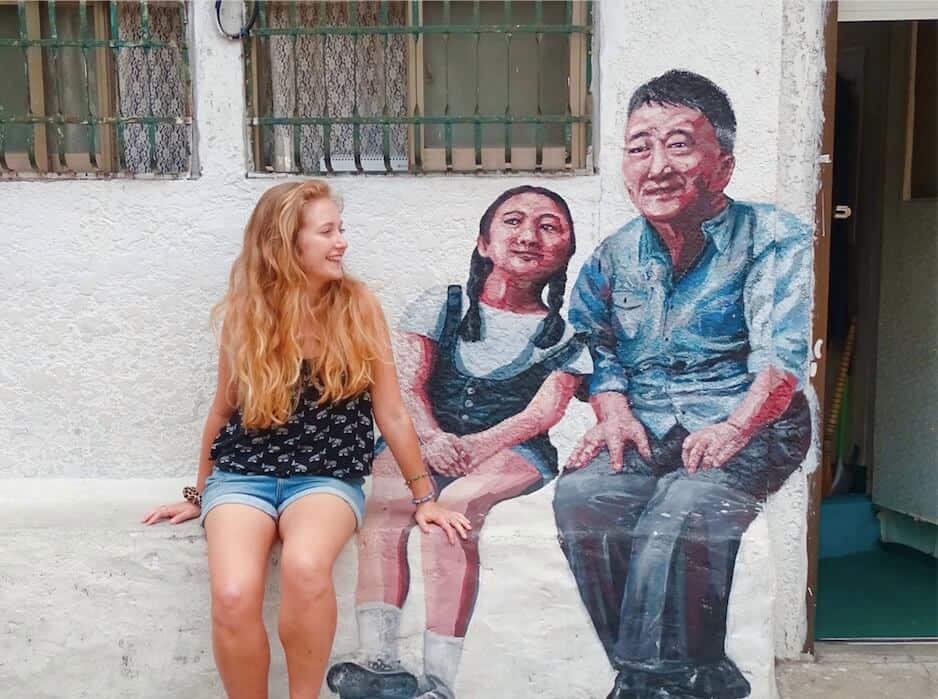
Table of Contents
This post may contain affiliate links to things like tours, hotels, Amazon associates and products. These help me earn a small commission at no additional charge to you.
Before my trip, I was wondering is Korea expensive? and I have to say the answer is yes… but it depends where you’re comparing it to. In this guide, I’ll share my Korea trip budget as well as my South Korea budget tips and tricks. Before my 2 weeks in Korea , I’d heard it was an expensive place to travel. I was expecting high prices and for that reason, it wasn’t sas bad as I’d anticipated. Maybe if I’d expected Southeast Asia costs, I’d have been horrified. Hopefully, by the end of this guide, you should have a good idea of what to budget for a Korea trip.
KOREA ESSENTIALS Accommodation: Booking.com / Hostelworld Activities: Viator / GetYourGuide Getting there: air ( Skyscanner ) Getting around: Train ( Trip.com ) / bus Pre-book private airport to hotel transfer Travel insurance: True Traveller (European travellers) / Hey Mundo (other nationalities) / Safety Wing (digital nomads)
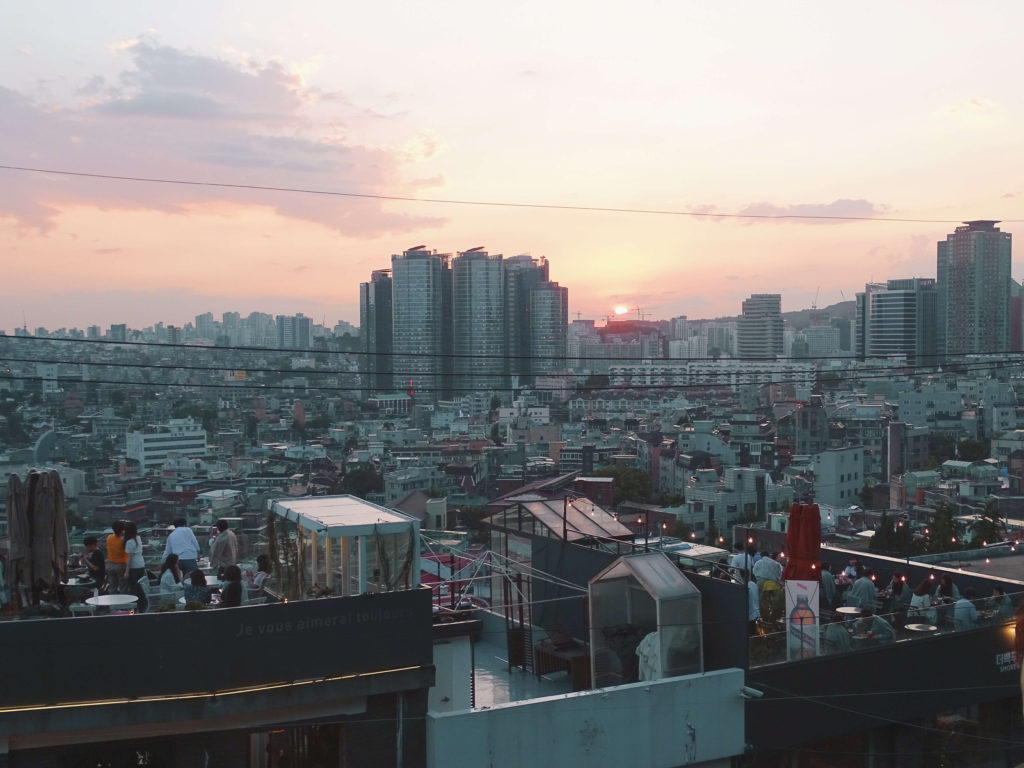
Is South Korea expensive?
Without doubt, South Korea is expensive to visit when accommodation is concerned. Food and transport aren’t dirt cheap but also aren’t bank-breaking. Your South Korea trip budget will be increased if you eat in upmarket areas of Seoul like Hongdae. With a little effort and my South Korea budget tips, you can find ways to travel affordably.
Read next: 30 South Korea travel tips
Korea budget travel compared to other Asian countries
If you’re used to travelling in Southeast Asia, the cost of Korea travel will hit hard. Calculate your Korea trip budget by doubling what you’d take to Thailand, Vietnam or Indonesia. It’s well over double the cost of travel in India ! Travelling in Korea is also double the cost of travelling in Taiwan , despite the two islands being so close together. The cost of travelling in Japan is similar to South Korea although, having been to both, I consider Japan slightly more expensive. If you’ve been to Japan before, consider a similar Korea travel budget.
Korea travel budget overview
So let’s get down to the nitty-gritty, how much did I spend during 3 weeks in South Korea?
My South Korea trip budget for 3 weeks was 1,300,000 KRW (£860 / $1,100). Korea budget travel is possible at 60,000 KRW (£41 / $51) per day.
This figure is based on a budget travel style of staying in dorms, eating cheaply where possible, and doing activities independently rather taking day tours. You’ll need to add to this figure if you plan to eat in restaurants each night and stay in hotels.
Note – this total doesn’t include return flights to Jeju Island from Seoul, a day tour to the DMZ and two day tours on Jeju Island which were hosted thanks to this blog.
Things that make Korea affordable
1. There are hostels everywhere. If you want to keep your Korea budget down, you can usually find dorms even in smaller cities. 2. There’s lots of street food in Seoul . Despite the high prices of the city, eating cheaply is something you don’t have to worry about. 3. Efficient public transport. Seoul has one of the most efficient subways in Asia with over 23 lines. There are also underground train networks in Incheon, Busan, Daegu, Gwangju and Daejeon. You never need to pay for taxis.
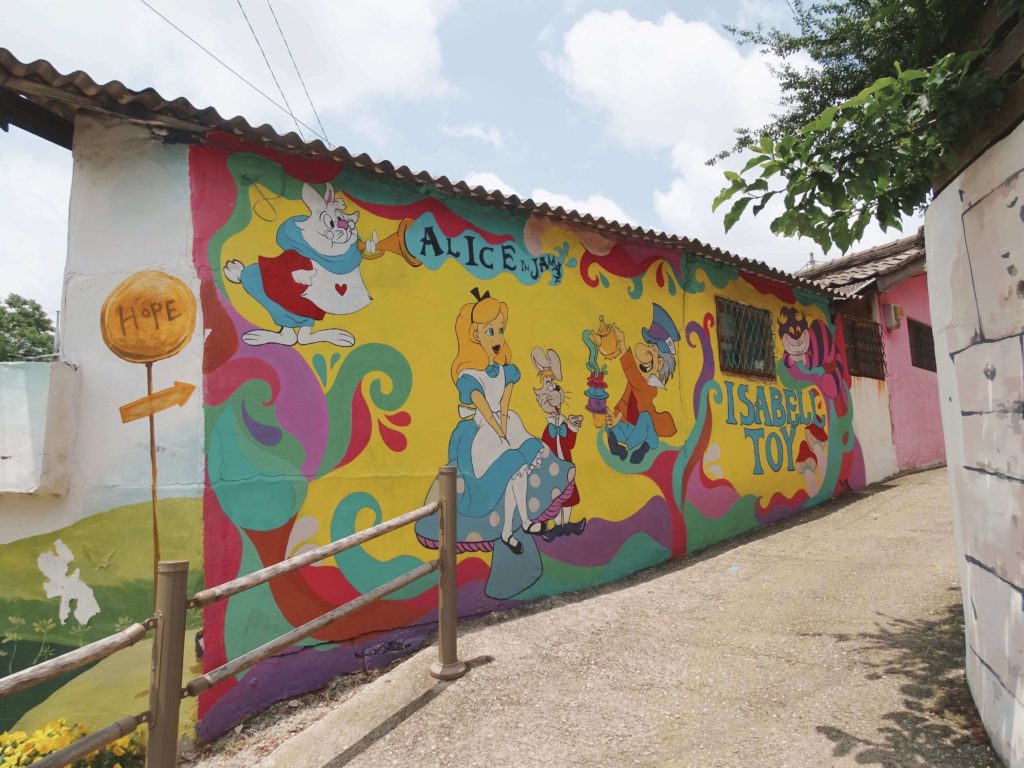
Things that make Korea expensive
1. In cities outside of Seoul, there wasn’t as much street food as I’d expected. Markets were more like wet markets selling fresh produce rather than ready-to-eat street food. 2. Some meals are more expensive for solo travellers. At Korean barbecue restaurants, they’ll only seat tables of two or more, although luckily you can find places that charge a solo surcharge. For that reason, dining out can be expensive unless you’re travelling with another person. Learn more about travelling solo in South Korea with my blog post. 3. Visiting the DMZ is impossible without paying for a DMZ tour . On Jeju Island, the public transport is limited so hiring a car or taking day tours will increase your Korea budget.
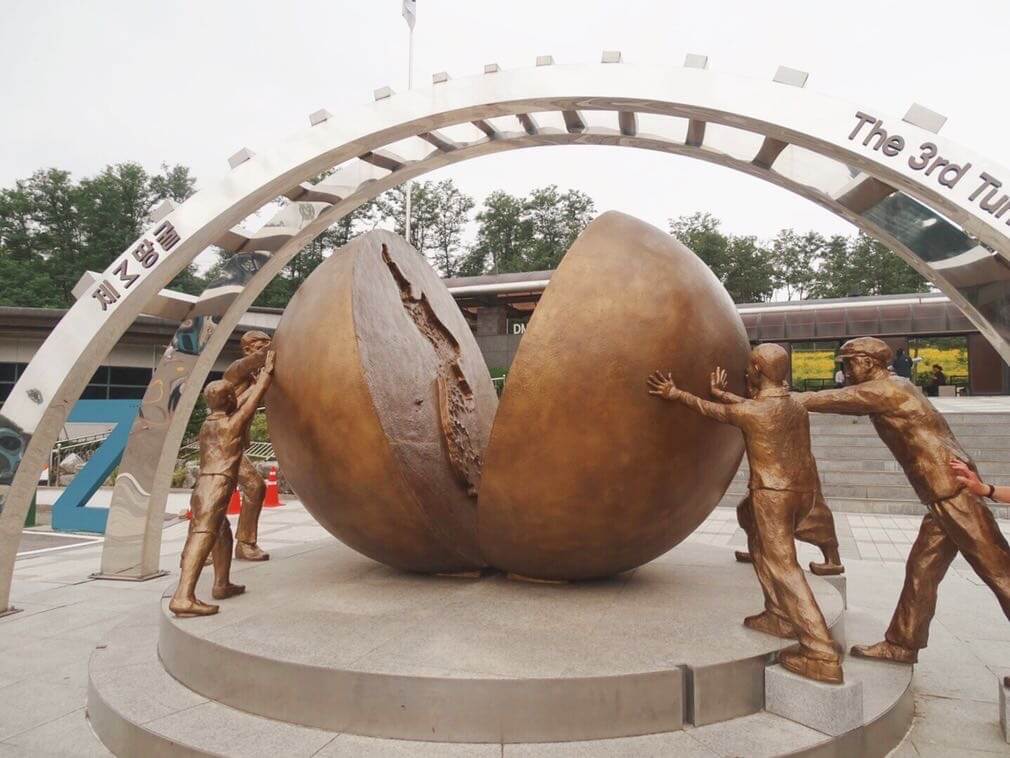
Next, let’s break down your Korea budget by category …
Cost of a South Korea visa
This varies depending on what passport you’re travelling with. UK citizens can enter South Korea for 90 days visa-free.
South Korea budget travel – accommodation
So we can fully answer the question, is Korea expensive?, let’s start with accommodation as this will be your greatest expense. The average price of a hostel bed per night: 22,000 KRW (£15 / $19). The average price of a private room in a hostel per night: 32,000 KRW (£22 / $30) Hotels in South Korea start at 45,000 KRW per night (£30 / $40) a night and like anywhere, go up into the hundreds.
Best hostels in South Korea
If you’re taking a South Korea budget trip, you’ll probably want to stay in hostels. These were some of my favourites… Bunk Guesthouse, Hongdae, Seoul – This is one of my favourite hostels I’ve ever stayed in. The friendly owner, Brian, learns every guest’s name and offers helpful recommendations and group Korean bbq and soju nights. There are small dorm rooms with private kitchens and lounge rooms, right in the middle of the coolest neighbourhood in Korea. Check availability for 22,000 KRW (£15 / $19) per night . Blue Backpackers, Seomyeon, Busan – I enjoyed my stay in this friendly, family-run hostel which is located down a peaceful side street in the coolest area of Busan which has lots of shops, street food, markets and restaurants. Check availability from 17,000 KRW (£12 / $16) . Rainbow Inn, Jeju Island – this hostel in Jeju City was a good base for exploring the island. It was pretty swish with a comfy lounge area, private bunks with their own curtains and chargers and a delicious buffet breakfast. Check availability . Santa Guesthouse – in Korea’s ancient capital, Gyeongju, this guesthouse is pretty basic but definitely the best place to meet other backpackers. The friendly owner offers lots of local tips. Check availability for 15,000 KRW (£10 / $13) .
I use Hostelworld to browse hostels and find the best-priced accommodation.
South Korea budget travel – transport
You can get around fairly cheaply in South Korea providing you don’t take the fast train. Here’s a breakdown of transport prices in Korea:
Korea budgets for getting between cities
Slow train: I was pleased with the low cost of transport as my first couple of journeys cost just 5,000 won each (£3.30 / $4). This included a ride from Gyeongju to Daegu on the slow train which took just under 2 hours.
Fast train: Increase your Korea trip budget to take the fast train. I paid 30,000 won (£20 / $30) from Jeonju to Seoul on the fast train. I could have travelled cheaper on a slow train or bus but wanted to meet friends for lunch so had an ah, screw it moment. It took less than 2 hours to travel 200km and included snacks.
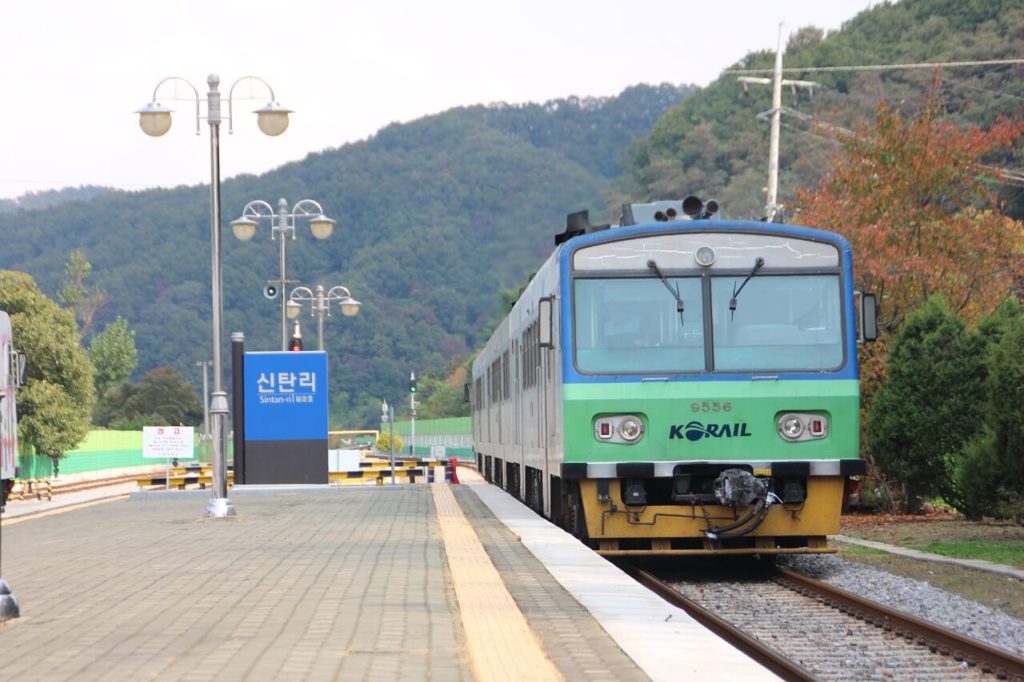
Bus: There’s also an efficient bus network running around South Korea. I took two: one from Busan to Gyeongju (5,000 KRW) and one from Daegu to Jeonju (10,000 KRW). These are similar in price to the slow train so I weighed up the prices for individual journeys and took whichever was cheaper.
Booking tip – you can usually just show up at the station and get a ticket. But to secure a seat on trains , use Trip.com , partner of Korail (the official railway network of Korea). The website accepts international payment options, unlike Korean rail websites. Click the three stripes in the top right corner then the flag to change it to English.
To summarise, shorter journeys of a few hours are affordable in South Korea whereas longer journeys on fast trains are more expensive. If you have enough time when it comes to these longer journeys, taking a bus will cost half the price of a fast train.
Korea budget for travelling around cities
Getting around Korean cities is affordable and straightforward although it’s worth noting Google Maps doesn’t work properly anywhere in South Korea. It’s best to use a Korean app like Naver instead. Over all, in terms of public transport and affordability, South Korea is great for budget travellers. The only places without efficient public transport networks are those small enough to explore on foot. The main ways to get around include:
Metropolitan Subway: In cities like Seoul and Busan, you can travel around affordably via underground train. Tickets operate on a tier system and cost 1,250 KRW for journeys of 10km or less (teenagers 720 / children 450). Faires go up 100 won for every addition 5 km travelled. Purchase a ticket by selecting your destination on touch screen machines.
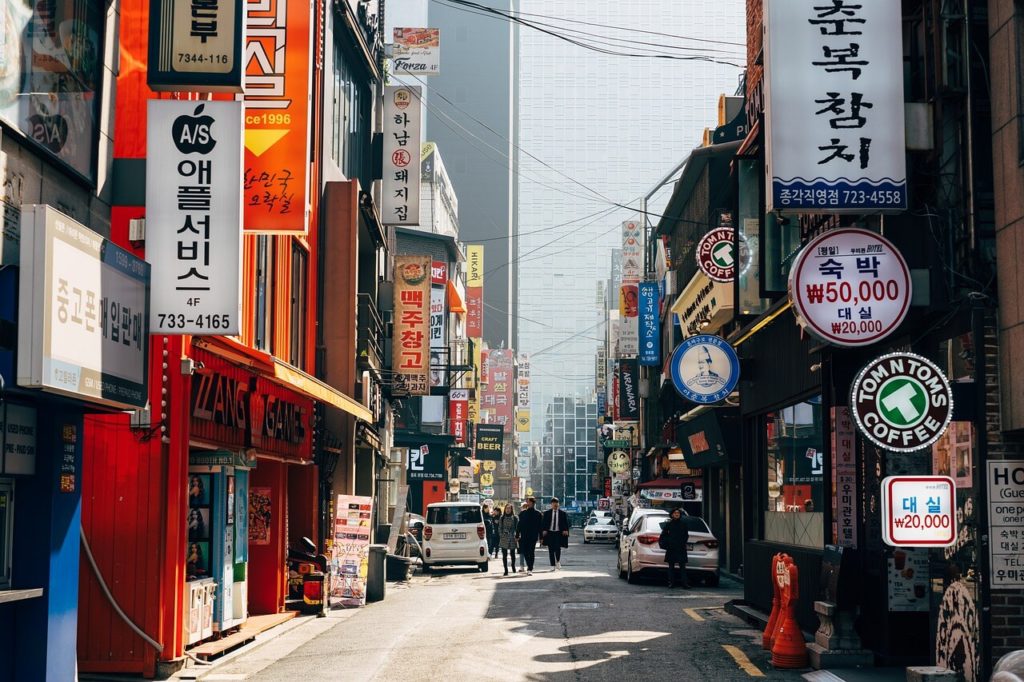
Bus: In Seoul, buses cost either 1,000 or 1,300 won depending on the colour of the bus. When you board, there will be a metal bucket next to the driver specifying the amount. Pay in coins or notes but don’t expect any change. Unlike the subway with its clear map and colour-coded lines, buses can feel confusing but I’d encourage you to hop on them. They’re efficient and a great way to see the city as you move about. The schedules are listed on Google Maps.
South Korea budget travel tip – pick up a Korea Tour Card, cashbee or Tmoney card. These save you 100 won per journey. You pay a 4,000 won deposit (of which 3,500 is refundable) and top up via subway station machines. Queuing to buy individual tickets is time-consuming so it’s really convenient to tap in and out quickly as you travel. You can use them on buses, too.
Korea travel budget – flights
Major airports in Seoul and Busan are well-connected globally. From London – flights begin at £500 return. These take 11 hours. From Australia – flights begin at $100 (AUD). They take 15 hours. From the US – return flights begin at $600. They take 15 hours. If you’re visiting Korea from elsewhere in Asia, you can get affordable tickets with various Asian airlines. I flew from Taipei (Taiwan) to Busan for $100 and departed Seoul for Hanoi (Vietnam) for $150. Use Skyscanner to browse deals on flights.
Cost of getting to & from the airport
I’ve been including this section in my blogs since my Cuba budget was blown by spending $50 getting to and from the airport in Havana! In comparison, getting to and from the airport won’t blow your Korea travel budget. Gimhae Airport to Busan : This costs 2,800-3,300 KRW (depending where you’re staying) on Line 2 Metro, or 6,000 KRW on a bus. Incheon Airport to Seoul : It costs 8,000 KRW to get from Incheon to Seoul on the Airport Railroad Express (AREX) which runs until 9.45pm or 9,000 KWR on the bus. A taxi costs around 45,000 KRW so avoid this if travelling Korea on a budget.
South Korea travel budget – food & drink
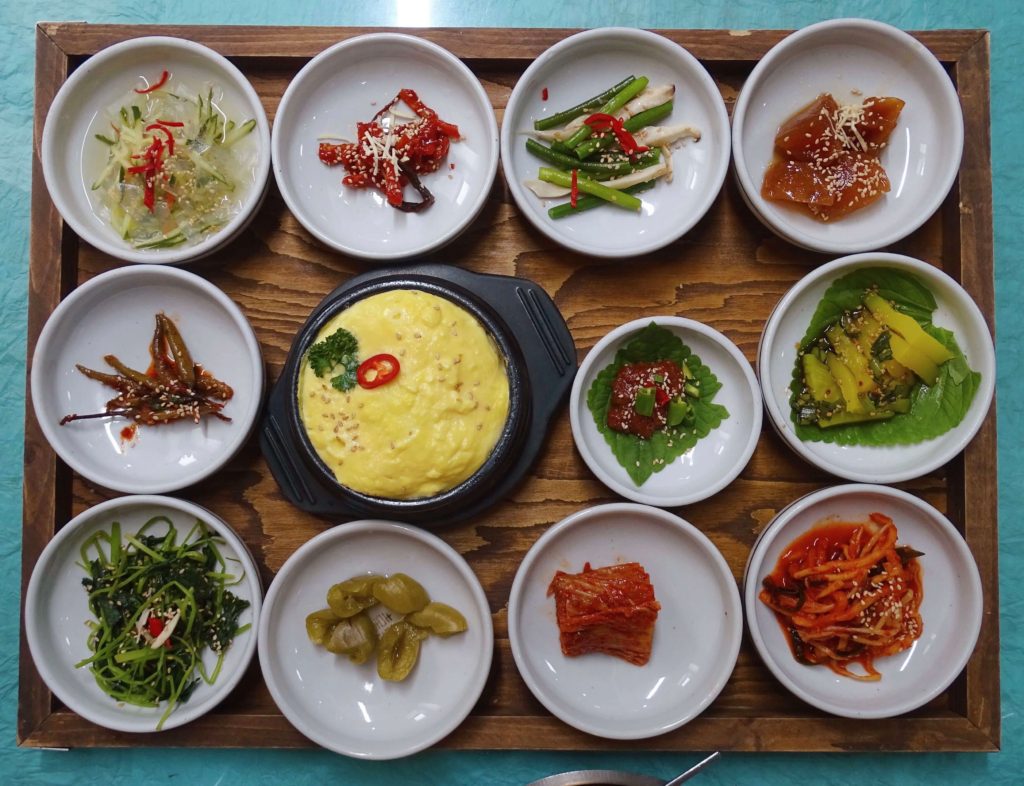
My favourite topic – Korean food ! The cost of this varies a lot in South Korea. I found restaurants to be much more expensive in Seoul which isn’t surprising given that capital cities are often more expensive. Street food prices: You can eat street food for as little as 2,000 KRW (£1 / $1.50) which is ideal if you want to keep your Korea budget low. I can’t promise you’ll have the most nutritious diet but it’ll still be tasty. Cheap street food dishes to look out for include tteokbokki (sticky rice cubes in a hot chilli sauce), gimbap (sticky rice rolled in seaweed with fillings like ham and kimchi), tempura and Korean pancakes made with leek, kimchi or seafood. Restaurant prices: In modest local restaurants you can eat sit-down dinners like bibimbap for as little as 5,000 KRW. This dish usually includes a few veggies so it was my go-to when I wanted to eat cheap while still getting some nutrients. If you want a wider variety of dishes at better quality restaurants, dishes go up to 20,000 KRW. For another affordable option, seek out Japanese restaurants where you order at the screen then grab a table until the chefs call out your number. Not only is this an informal and affordable way to dine with dishes for 5,000 KRW, but Japanese food is delicious and doesn’t carry the same guilt as eating pizza in Asia.
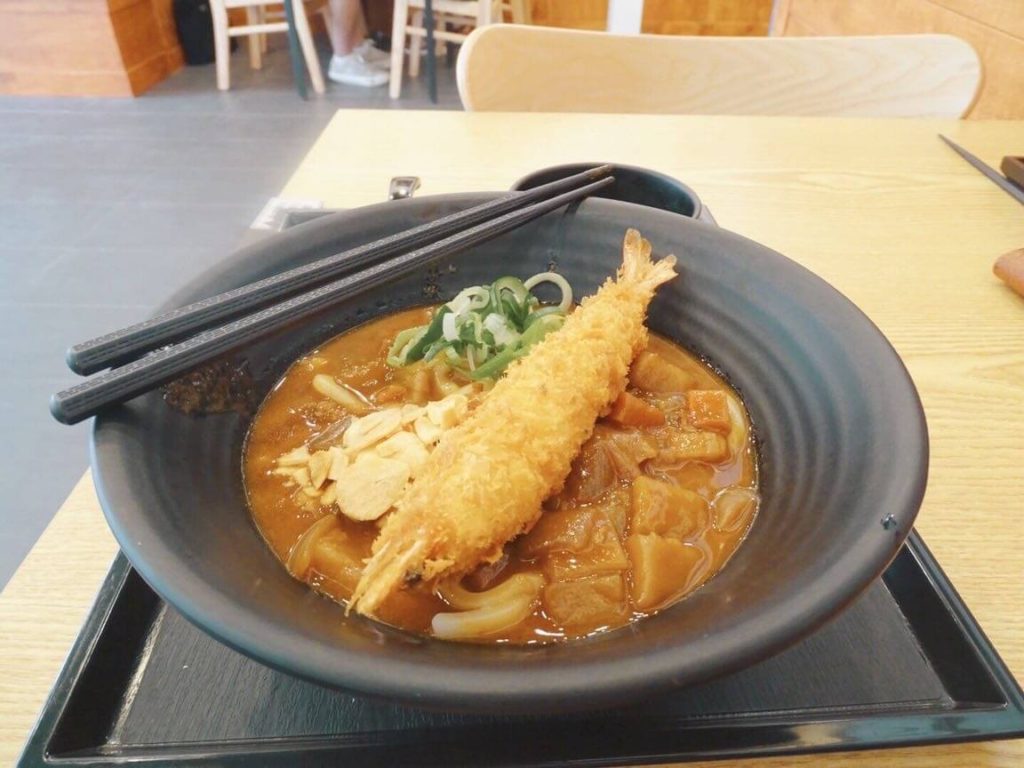
Stylish restaurants in Seoul: I can’t tell you anything about fine dining or Michelin star restaurants but I can tell you about quirky cafes and modern eateries. I was surprised by the cost of these. Dishes popular with young people like fried chicken is served with beer at Chimeak restaurants for as much as 20,000 KRW. If you’re travelling Korea on a budget, I would suggest escaping hip neighbourhoods like Hongdae unless you’re eating street food!
Tipping in South Korea
Something that will reduce your South Korea dining budget is the fact that tipping isn’t customary. It’s just not part of the culture in the same way it is in the US or Europe. Even if it feels rude by your standards, don’t sweat it – no one in Korea will think you’re being rude.
South Korea trip budget – SIMs and data
SIM cards nearly blew my South Korea travel budget! I assumed they’d be affordable like elsewhere in Asia but on my first day, locals told me the only place I could get one was the airport… where I’d just been. Ahh. This is because SIMs aren’t really available for foreigners unless they have a residency card. I ended up not getting one as I couldn’t afford it. If you really want a SIM, you’re best off getting a tourist one at a major airport.
Click here get a tourist SIM (4g) to collect at Seoul airport .
A cheaper option is to rent a portable pocket Wi-Fi (also from the airport) which you rent and return at the end of your trip.
Rent a pocket Wi-Fi device to collect at Seoul airport .
Cost of South Korea travel – tours & trips
Is South Korea expensive when it comes to tours? It depends. Many half-day tours start from $30 but can go up to $200 for bucket list experiences in South Korea including transport and food. There are plenty of day tours on offer in South Korea but it’s easy to go without them. I took a day tour to the DMZ which was essential because you can’t visit unless you’re in an organised tour group. Other than that, I travelled independently to keep the cost of travel in South Korea down.
South Korea travel budget – Jeju Island
I found the cost of travel on Jeju Island more than the cost of travelling South Korea generally. Firstly, you’ll have to budget for flights which cost around $50 return and secondly, getting around on Jeju is tricky as public transport is limited. Hiring a car on Jeju Island costs around $40 a day, which is indeed cheaper than taking day tours. As I don’t drive and was travelling solo, I took a couple of day tours for $90 (100,000 KRW) a day.
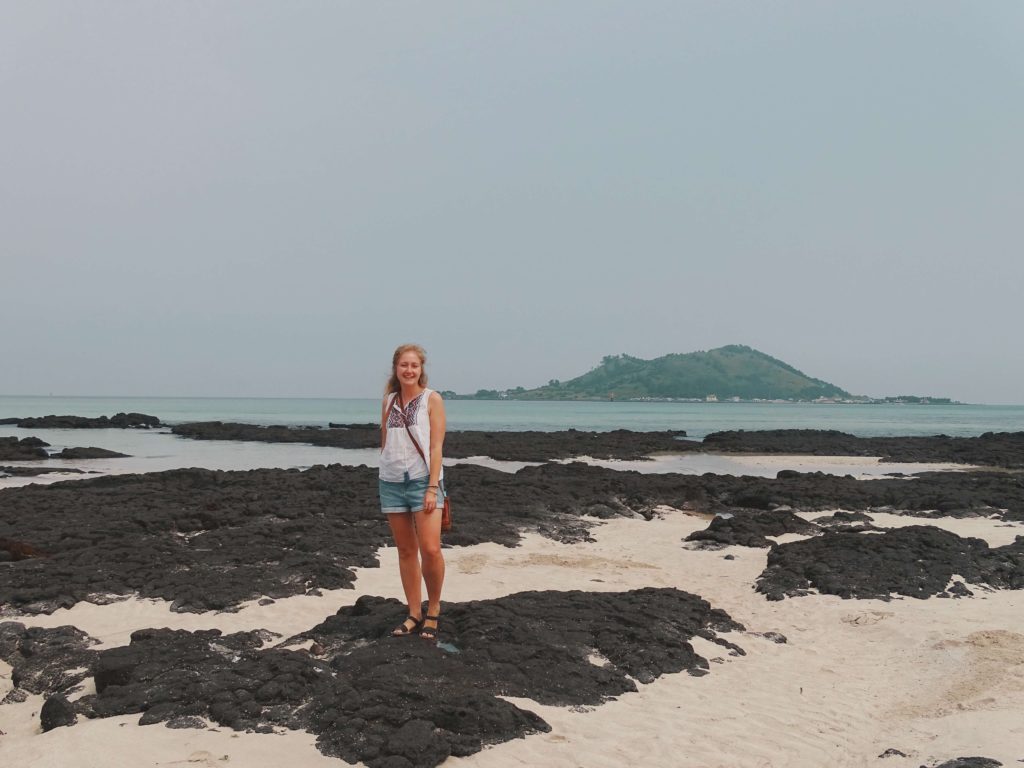
Read next: How to visit Jeju Island without a car
Bottom line – if you want to visit Jeju Island, consider increasing your Korea budget!
South Korea budget tips
1. Use Wi-Fi rather than a SIM card. There are public hotspots everywhere in South Korea. 2. Find hostels with kitchens! These are much more common than in other places in Asia. 3. Seek out local produce markets. Here you can pick up sweet potatoes and other healthy veggies for your meals. You can’t find much fresh stuff in convenience stores like the 7-Eleven unless you want a lone banana swapped in styrofoam. 4. Although they don’t sell much healthy food, don’t overlook the 7Eleven for Korea budget eats. Gimbap rolls are only 2,000 KRW; two make a decent lunch. You can even buy lunchboxes and ready meals. I can’t promise they’re healthy but I can promise they’re cheap!
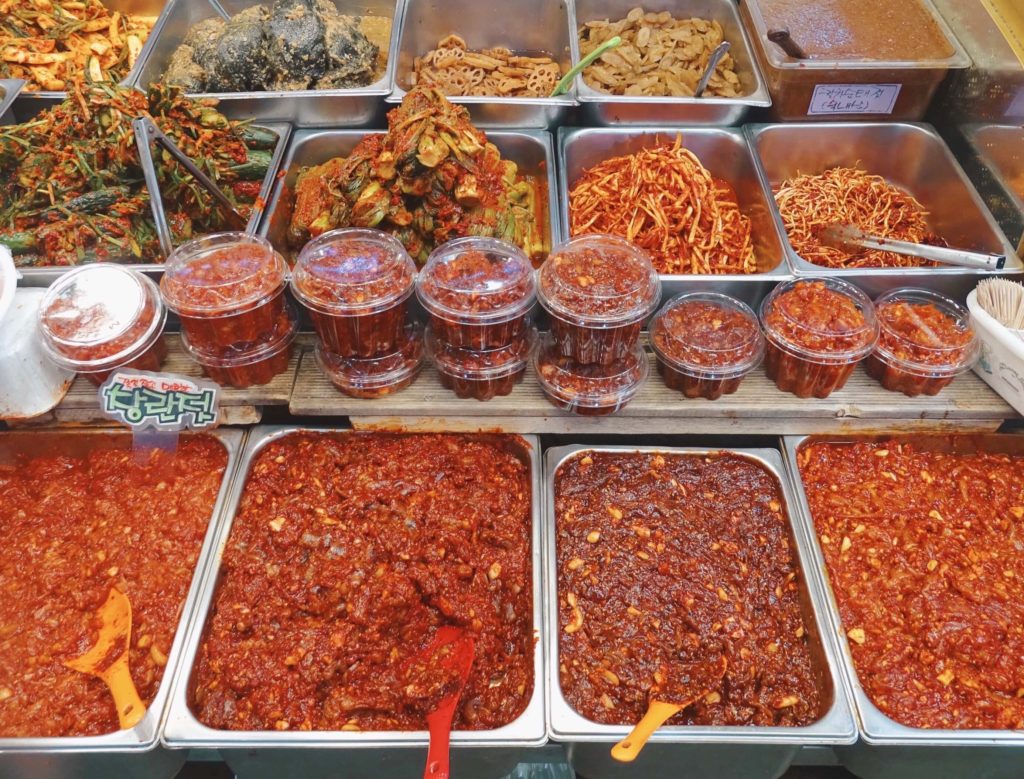
Best places to travel on a South Korea budget trip
There’s one place I’d say not to visit on a Korea budget trip which is Jeju Island. Better options include: Daegu – this was one of the cheapest places I visited in South Korea, partly because I filled up on free pastries at Schumann and Clara cafe (they’re unlimited when you buy a coffee!). There are a few free hikes around Daegu including to Apsan Observatory in Apsan Park and Gatbawi Rock at Mount Palgong. Both these can be reached cheaply by local bus.
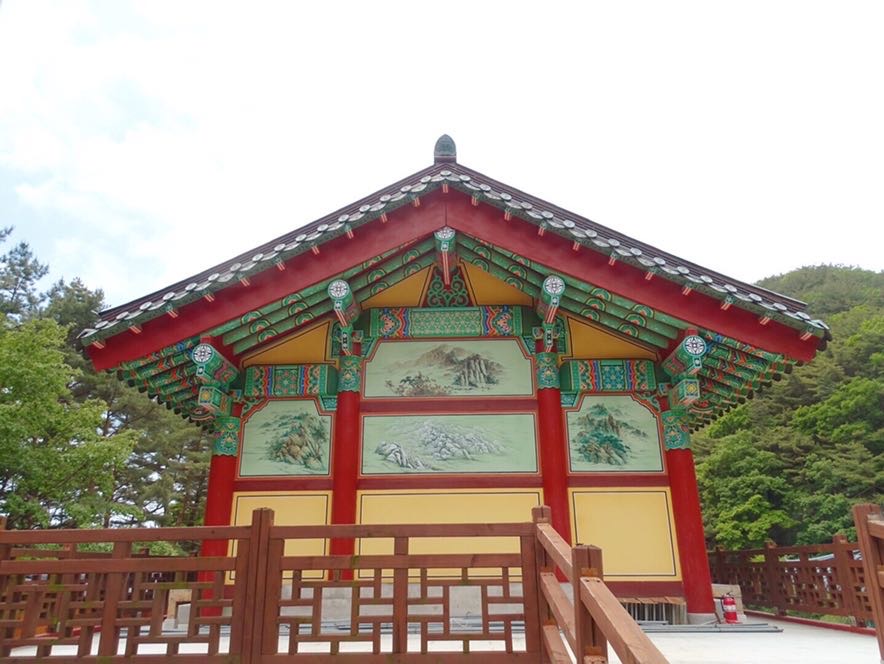
Gyeongju – this city on the east coast of South Korea is walkable so you never need to pay for taxis. As the historical capital, there are plenty of palaces and tombs, few costing more than 5,000 KRW to enter. You can also take a cheap bus ride to Buddhist temple, Bulguksa, and hike to the giant stone Buddha at Golgulsa Temple. Overall, it’s a great destination to keep your Korea travel budget low. Seoul – even though Seoul is an expensive city, there are lots of free things to do during a South Korea budget trip. If you’re visiting Seoul on a budget , you can visit many various museums and eat cheap street food at the many markets.
Free things to do in Seoul on a budget
- Visit museums like the National Folk Museum of Korea and Seoul Museum of Art
- Wander around the colourful murals at Ihwa Mural Village
- Go hiking in Bukhansan National Park
- Wander around Bukchon Hanok Village
- Hang out by the Han River
- Walk along Cheonggyecheon Stream
- Hike along the 19km city wall
- Tour ancient Bongeunsa Temple (pictured below).
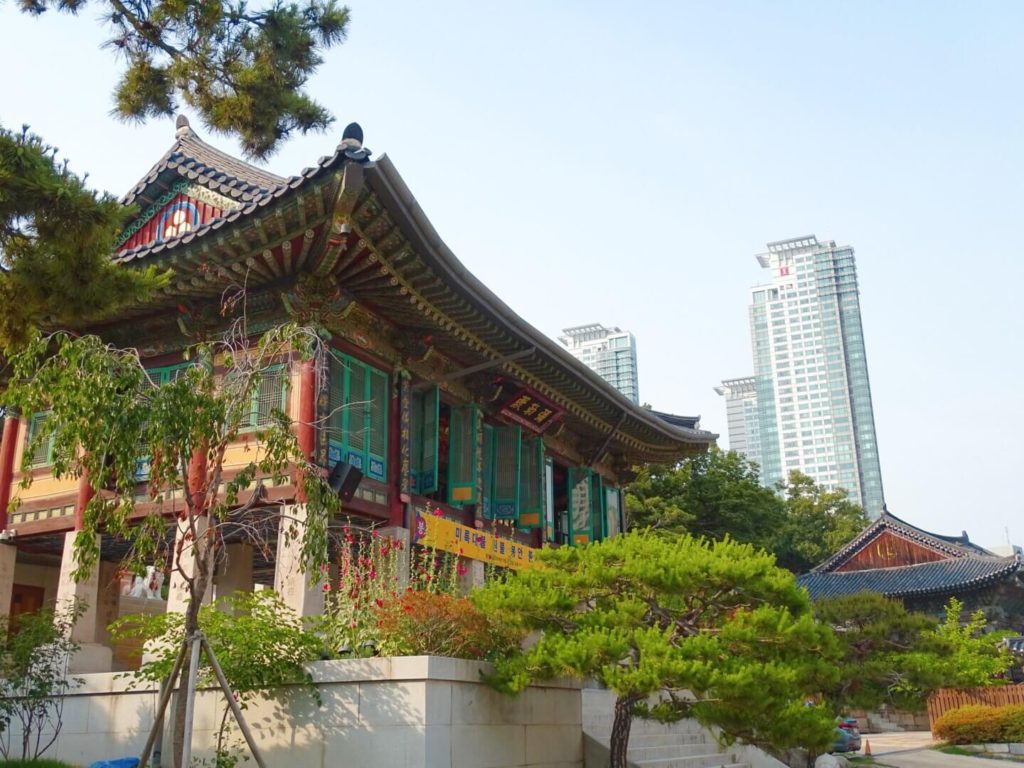
Free things to do in Busan on a budget
- Hang out on Haeundae Beach and check if you’re visiting for a free festival like the Sandcastle Festival
- Explore colourful houses, murals and outdoor art exhibitions at Gamcheon Culture Village
- Take a cheap bus to Yonggungsa Temple by the bus
- Hike along Igidae Coastal Walk.
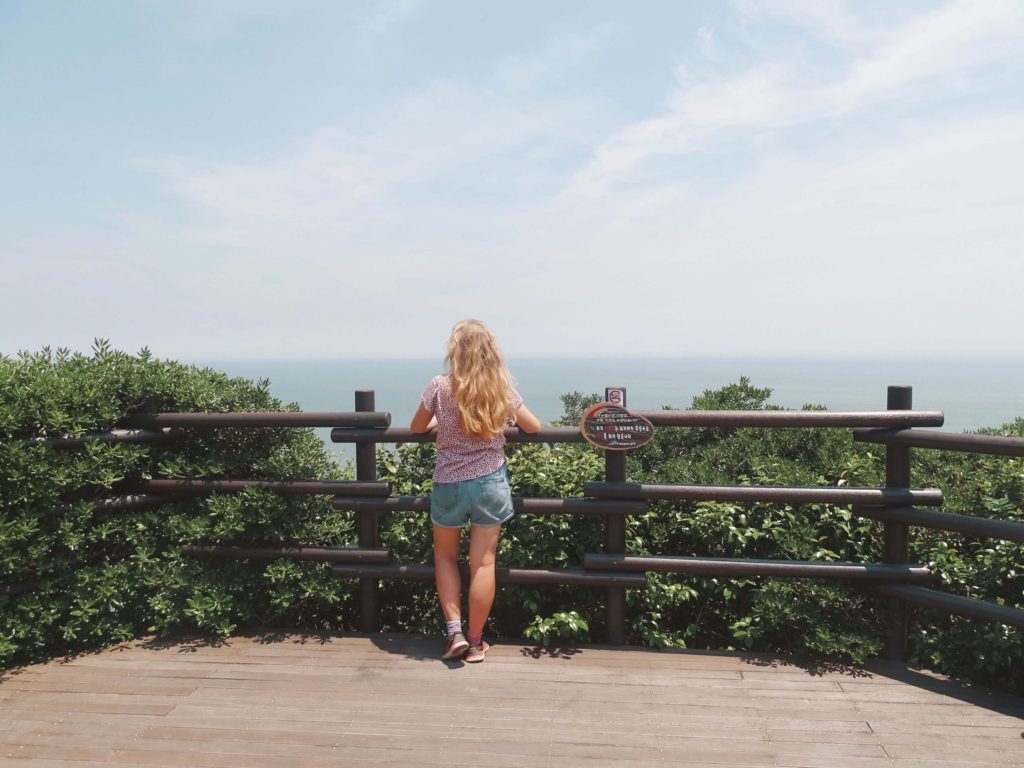
Mini Korea budget itinerary
Days 1-5: Seoul. While spending 5 days in Seou l , I would suggest a day visiting the DMZ, a second day visiting Bukchon Hanok Village and hiking in Bukhansen National Park, a third day at Iowa Mural Village and Gwangjang Market, a fourth day exploring cool neighbourhoods like Gangnam and Hongdae, and a final culture day exploring the museums and galleries. Days 6-7: Visit Sokcho and spend a couple of days hiking in Seoraksan National Park OR visit Jeonju and explore its picturesque Hanok Village.
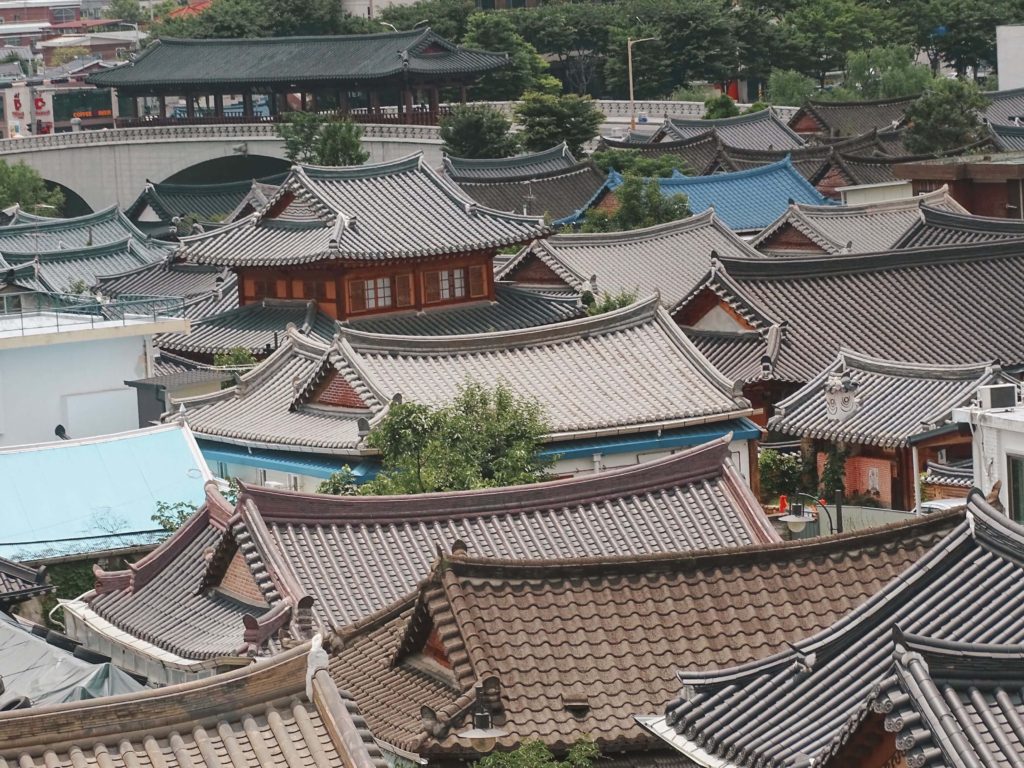
Days 8-10: During 3 days in Busan , you can visit Gamcheon Culture Village, relax on Haeundae Beach, explore Nampo neighbourhood, hike along Igidae Coastal Walk or within Taejongdae Park and finally, unwind at a Korean jjimjilbang (nude hot pool area) such as Spa Land in Shinsegae Centum City. You can also take a few fun day trips from Busan . A specific Korea budget tip for Spa Land – visit after 8pm or before 9am on weekdays for discounted tickets. Visiting on a weekday is cheaper than a weekend generally; you’ll pay 15,000 KRW rather than 18,000 KRW.
Essentials for a budget Korea trip
- Copy of Lonely Planet Korea .
- A Korean phrasebook & dictionary .
- A handy bumbag to keep your belongings secure.
- Reusable coffee cup (collapsable) for hot takeaway drinks.
- A reusable water bottle that you can fill up with filtered water (your accommodation will have this).
- Alternatively, a filtering water bottle that allows you to safely drink tap water.
- Metal straw and cloth bag set to reduce the use of plastic straws.
- Travel luggage – I use I recommend the Osprey Farpoint ( men’s ) ( women’s ).
- A camera – I use the Sony DSC-HX350 Digital Compact Bridge Camera which I think is one of the most affordable options based on the zoom and quality of photos.
- A GoPro if you’re into making videos – I use the HERO8 Black .
- Solo travel pick: a tripod or mini GorillaPod to get yourself in the shot – I use the Manfrotto tripod and Joby GorillaPod .
Thanks for reading my South Korea budget guide!
I hope I’ve answered your questions and got you excited about your South Korea budget trip 🙂 Ask me any questions in the comments.
Follow for more Korea content on Instagram , Facebook , Twitter and YouTube .
Check out my other South Korea blogs:
- Ultimate 2 week South Korea itinerary
- Solo travel in Korea
- 30 Korea travel tips
- South Korea bucket list
- South Korea food guide & best foods to try
- Ultimate Seoul itinerary
- Seoul street food guide
- Jeonju travel guide
- Best things to do in Busan
- Day trips from Busan
- Visiting Jeju Island without a car
- Tips for visiting the DMZ from Seoul
See you next time for more adventures,
For more travel content, follow me on Instagram , Facebook , Twitter and YouTube .
Ps. Liked South Korea budget guide? Pin it for later!
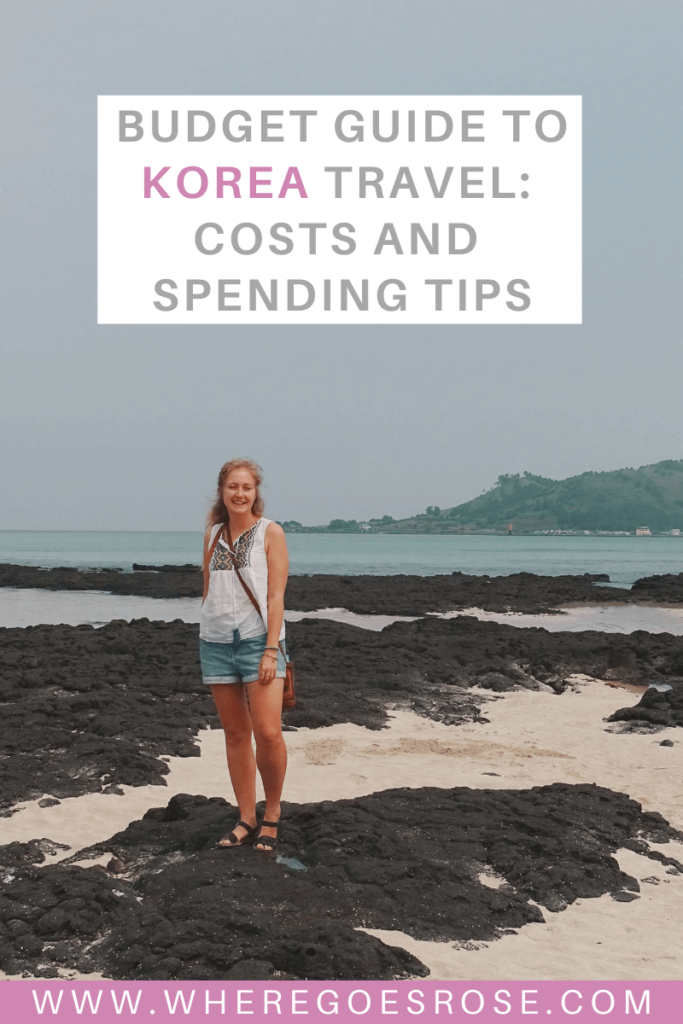
VISITING SOUTH KOREA? These are my trusted resources: Getting around by air – I use Skyscanner to find the best-value flights, using the ‘search by month’ tool to find the cheapest dates. You can also use the ‘to anywhere’ feature if you’re flexible on where you’re going. Buses – buses are comfy and efficient. It’s tricky for foreigners to book online so it’s best to turn up on the day. Trains – use Trip.com , partner of Korail (the official railway network of Korea) to book your trains in advance. The website accepts international payment options, unlike Korean rail websites. Click the three stripes in the top right corner then the flag to change it to English. Driving in Korea – use Rentalcars.com to compare car rentals. Hiring a car will be especially useful on Jeju Island. For hotels in Korea, I use Booking.com – they also have self-catering apartments. You can filter by review score and price to find the best-rated budget places. For hostels, I use Hostelworld . To save money on accommodation, I use Trusted Housesitters , a website that connects homeowners going away and travellers who can sit their homes & pets. Browse South Korea tours and activities on GetYourGuide . I also check Viator and Klook in case they have a better price. For food tours with passionate local chefs and foodies, check out EatWith . Need travel insurance ? I use True Traveller (for UK & Europe residents) since it’s affordable but covers everything you’d need including various activities, valuables and pre-existing conditions. Unlike some companies, they insure you if you’re already travelling / don’t yet have your flight home booked. Get a quote . For travel insurance for other nationalities, I recommend Hey Mundo and for long-term digital nomad travellers, I suggest Safety Wing . Check out my resources page for more travel discounts and tips!
Rose is a solo traveller from the UK who has been on the road since 2015. She wants to show other women that solo travel isn't scary and doesn't have to be expensive! Rose has lived in Mexico, Canada and all over Asia, seeking out food, bubble tea and street art wherever she goes!
2 thoughts on “ Is Korea Expensive? South Korea Trip Budget ”
What a great article! We’re currently dreaming of going to South Korea again – we’ve been there before and we love, love love it! Here’s to a year with loads of travel plans and new experiences!
+ thank you for running this blog, found some great travel tips through you. May good karma come your way 🙂
Leave a Reply Cancel reply
Your email address will not be published. Required fields are marked *
You can see how this popup was set up in our step-by-step guide: https://wppopupmaker.com/guides/auto-opening-announcement-popups/

Korea Budget Travel Itinerary: Exploring the Land of Kimchi Without Breaking the Bank
South Korea, a land of ancient palaces, breathtaking landscapes, and the mouthwatering aroma of kimchi, has become an increasingly popular destination for travelers from all around the world. While it may be known for its cutting-edge technology and high-quality cosmetics, exploring Korea doesn’t have to be an expensive endeavor.
With careful planning and a well-thought-out budget travel itinerary, you can experience the best of Korea without breaking the bank. In this comprehensive guide, we’ll take you on a wallet-friendly journey through the enchanting corners of South Korea, packed with rich history, diverse culture, and unforgettable experiences.

Korea Budget Travel Itinerary
Day 1: arrive in seoul, the dynamic capital.
Seoul, the vibrant capital of South Korea, is the perfect starting point for your budget travel adventure. Upon arrival, head to your chosen budget accommodation, such as a guesthouse or hostel in the lively Hongdae or Myeongdong districts. These areas offer affordable options and excellent opportunities to connect with fellow travelers.
After settling in, take a leisurely stroll through the streets of Hongdae, known for its artistic vibe and bustling nightlife. You can enjoy street performances, explore quirky shops, and sample delicious street food at budget-friendly prices. End your day at the Han River, where you can enjoy a picturesque sunset view, a perfect way to kickstart your Korean adventure.

Day 2: Immerse in Tradition at Gyeongbokgung Palace and Bukchon Hanok Village
Begin your second day with a visit to Gyeongbokgung Palace , the grandest of the Five Grand Palaces in Seoul. The entrance fee is affordable, and you’ll have the opportunity to witness the rich history of Korea through its majestic architecture and the famous Changing of the Guard ceremony.
Next, head to Bukchon Hanok Village , a charming neighborhood that preserves traditional Korean houses (hanoks). Stroll through the narrow alleys and experience the authentic ambiance of the past. Entry is free, and you can take memorable photos against the backdrop of beautiful hanok rooftops.
For a budget-friendly lunch, indulge in a Korean classic: bibimbap. This nutritious rice dish topped with vegetables and meat or tofu is both delicious and affordable. Look for local eateries or street stalls to savor this culinary delight without straining your budget.

Day 3: Explore the Myths of DMZ and Return to Seoul for Shopping
On day 3, embark on a DMZ (Demilitarized Zone) tour, a unique opportunity to witness the historical and political complexities of the Korean Peninsula. While guided tours to the Joint Security Area (JSA) can be pricey, there are budget-friendly options that explore other areas of the DMZ, like the 3rd Tunnel and Dora Observatory . These tours offer insightful experiences without breaking the bank.
After your DMZ tour, return to Seoul and spend the afternoon shopping at Namdaemun Market or Dongdaemun Design Plaza. These bustling markets offer an array of affordable clothing, accessories, and souvenirs. Don’t forget to hone your bargaining skills to secure the best deals!
Day 4: Travel to Busan – The Seaside Gem
Take an economical KTX (Korea Train Express) or a budget bus to Busan, South Korea’s second-largest city. Busan is known for its stunning beaches, fresh seafood, and bustling markets.
Upon arrival, drop your bags at your chosen budget accommodation and head straight to Haeundae Beach, one of the most popular beaches in the country. Enjoy the sun, sand, and sea without spending a dime.
In the evening, explore the vibrant Nampodong Street, famous for its street food and affordable local delicacies. Treat yourself to steaming hotteok (sweet pancakes) or odeng (fish cake skewers) without putting a dent in your budget.

Day 5: Discover Busan’s Cultural Heritage and Serene Temples
Start your day with a visit to the beautiful Beomeosa Temple , a peaceful haven tucked away in the mountains. The temple is free to enter, and you can experience the tranquility and spirituality that resonates throughout its premises.
Next, head to Gamcheon Culture Village, a charming and colorful neighborhood that resembles Santorini. Stroll through the narrow alleys adorned with vibrant murals and sculptures, showcasing the artistic side of Busan.
Day 6: Island Escape to Jeju
Jeju Island, a natural wonder and a UNESCO World Heritage Site, is a must-visit destination in Korea. While flights to Jeju can be reasonably priced, booking in advance can help you secure even more affordable deals.
Upon arrival, rent a scooter or use public buses to explore the island’s breathtaking attractions. Visit the Jeju Folk Village, Seongsan Ilchulbong Peak, and Manjanggul Cave, which showcase the island’s diverse landscapes.

Day 7: Farewell to Korea
On your final day in South Korea, take a moment to reflect on your incredible budget travel journey. Savor one last meal of Korean barbecue or bibimbap, and reminisce about the experiences that have made this trip unforgettable.
Remember, budget travel doesn’t mean skimping on experiences; it’s about making wise choices, seeking out affordable options, and embracing the authentic culture of your destination. With this budget travel itinerary, you can explore the best of Korea without sacrificing your savings, creating memories to cherish for a lifetime. Happy travels!
As your time in South Korea comes to a close, take a moment to reflect on the incredible experiences and memories you’ve gathered throughout your budget travel adventure. From the bustling streets of Seoul to the serene temples of Busan and the natural beauty of Jeju Island, you’ve experienced the diversity that South Korea has to offer.
Consider leaving behind a small token of appreciation at the places you’ve visited, such as a heartfelt note or a positive review for the budget-friendly accommodations and local businesses you’ve encountered. This gesture not only shows gratitude but also supports the local community and encourages sustainable tourism.
Before you head to the airport for your flight back home, use public transportation to minimize expenses and reduce your carbon footprint. Bid farewell to South Korea with a sense of fulfillment, knowing that you’ve embraced the essence of budget travel while immersing yourself in the wonders of this captivating country.

The Joy of Budget Travel in South Korea
South Korea, with its rich history, breathtaking landscapes, and vibrant culture, offers a captivating experience that can be enjoyed on a budget. By strategically planning your trip, seeking affordable accommodations, and indulging in budget-friendly local experiences, you can create cherished memories without breaking the bank.
Throughout your journey, you may have encountered the warm hospitality of the locals, tasted the flavors of traditional Korean cuisine, and explored the fascinating mix of modernity and tradition. The joy of budget travel lies not only in its affordability but also in the authentic connections and unique experiences it fosters.
As you board your flight back home, carry the spirit of budget travel with you to future adventures. Remember that the essence of travel lies in exploring new cultures, meeting diverse people, and forging connections that transcend borders and budgets.
South Korea has welcomed you with open arms, and its treasures will forever hold a special place in your heart. Embrace the memories, share your stories, and inspire others to embark on their own budget travel adventures.
And so, with a heart full of gratitude and a mind teeming with unforgettable experiences, bid farewell to South Korea, knowing that budget travel has allowed you to witness the true essence of this beautiful nation. Until we meet again, happy travels and may your wanderlust lead you to new and exciting journeys around the globe!
If you enjoyed our free South Korea travel itinerary then be sure to check some other itinerary’s and tips for South Korea
Safety when travelling South Korea
South Korea Travel Tips
How much money to bring to Korea

James is a travel writer with a passion for exploring new destinations and creating detailed itineraries. With years of experience, he shares his insider tips and recommendations to help travelers plan unforgettable trips. Follow James on his adventures and discover your next dream destination.
South Korea Travel Tips: Your Ultimate Guide to a Memorable Journey
South korea travel itinerary: unraveling the charms in 7 days, leave a comment cancel reply.
Save my name, email, and website in this browser for the next time I comment.

6 Tips for Budget Travel in Korea
South Korea was often overlooked by travelers to Asia who opt to visit Japan or Southeast Asia. But thanks to K-pop and the Hallyu wave, Korea is gaining recognition and attracting more tourists.
Upon arrival, one will quickly discover that there is much more to the peninsula than kimchi and BB cream. Serene mountain ranges, quaint villages, vibrant rice paddies, rambunctious markets, and tranquil Buddhist temples can be found in tucked away corners.
Dynamic is perhaps the best adjective to describe the clashing of generations in a nation that went from shambles to one of the most economically powerful countries in 50 years.
Budget Travel South Korea
It goes without saying that Korea is a rewarding place to explore. Here are some tested tips on budget travel in South Korea.
1. Save money on accommodation by sleeping at jjimjilbangs (Korean saunas)
Sore feet from a day’s worth of exploration? Pamper yourself in hot baths and get a place to sleep for as little as little as $6 USD.
Going to the public bath is a favorite pasttime for Koreans and a must on every traveler’s bucket list for the ultimate Korean experience. Do note the adjective, public, so you are naked among dozens of locals of the same sex.
It may be uncomfortable at first, but most people become accustomed quickly when they realize everyone is in the same boat. Talk about a great way to step out of your comfort zone!
In the coed sleeping area, don’t expect luxurious comfort, but rather a floor to sleep on and perhaps a mat and pillow. Sleeping overnight in a Korean spa is fa from luxurious, but still a unique experience nonetheless.
Read more details about staying at a Korean sauna.
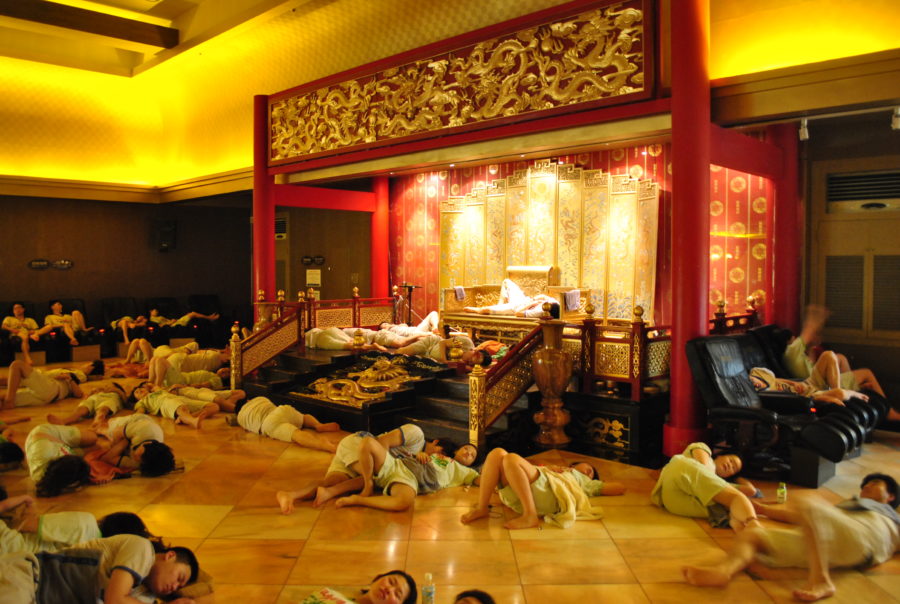
2. Eat at Kimbap Shops
24-hour kimbap shops are ubiquitous and a decent way to try a variety of Korean food without breaking the bank. Prices range from about $1.30 to $6 USD.
The dishes won’t win any awards, but it is a fine introduction to the various dishes such as stews (Kimchi jjigae), soups (dumpling and rice cake soup), kimbap (rice and vegetable rolled in seaweed), rice dishes, pork cutlet (adaptation of Japanese tonkatsu), and spicy rice cakes (tteokbokkki).
Check out this menu for a general translation.
3. Get out of the big cities
This may be a given for most travelers, but I’ve met quite a few people who went to Korea and only stayed in Seoul.
Unless you are only interested in citylife, I highly recommend going out into the countryside and visiting some of Korea’s slower paced life.
Like the water? Visit one of the many islands dotting the coast such as Namhae and Bigeumdo. A mountain goat? Take your pick at one of the many mountains and national parks. Seoraksan, Jirisan, and Wochulsan are among the most beautiful mountains.
To be frank, the big cities in Korea all look the same and have the same kind of franchises, so sticking to just Seoul and Busan is good enough for a short trip.
4. Carry a reusable water bottle.
Summer is steamy and you will need to hydrate often. Save money and abstain from consuming plastic by carrying a reusable (preferably BPA free) water bottle.
Filtered water machines are ubiquitous in Korea. Fill up with clean water at any restaurant, bus terminal, train station, and even cell phone shops.
Plus, it’ll save you from the daily scavenger hunt of finding a public trash can.
Shop insulated water bottles with protective lid > Shop water bottles with purification filter and protective lid >
5. Learn your transportation options
There are various methods and transfers between cities via bus and train.
Buses between large cities are frequent and you can just show up any time, but to get to smaller towns, plan accordingly.
Read more about traveling in Korea via bus .
6. Learn some Hangeul 한글 (the Korean alphabet)
안녕하세요! This is not a direct money-saving tip, but it will help tremendously and ultimately save time and money in the long-run.
Korean may look intimidating at first glance, but once learn the writing system, you will be surprised how simple and scientific it is.
Since there is barely any English outside of the big cities, knowing how to read Hangeul saves a few headaches. Besides, it’s fun and rewarding! Locals will be impressed and appreciative if you know a few phrases as well.
Hangeul can be learned in just a few hours. I recommend watching this video for pronunciation and taking a look at this comic for a quick lesson.
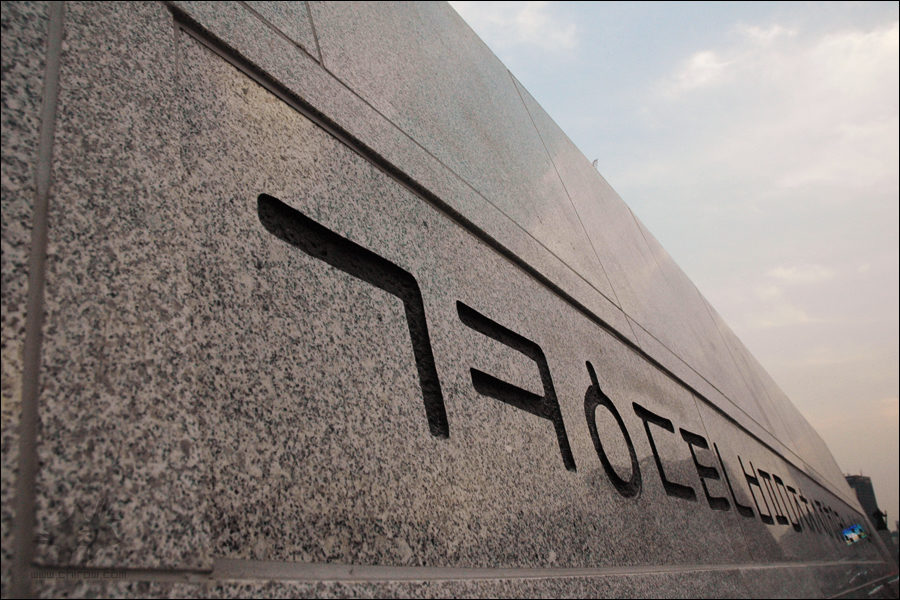
Have you been to South Korea? What are some of your favorite tips for budget travel?
✈️ Protect your Korea trip with Travel Insurance – We’ve started using Nomad Insurance by Safety Wing for affordable evacuation, international medical, and trip coverage.
For further reading:
- A Quick Guide to Teaching English in Korea
About the Author:
Lianne is a Korean-American adoptee who taught elementary school in Korea for three years. She traveled to nearly every Asian country with her boyfriend on a budget of $15 per day. She is passionate about finding ways to make travel meaningful on a budget such as CouchSurfing and volunteering. She is currently teaching English in Japan. Read more about her teaching experiences, travel tips, and adoption story at LianneBronzo.com .
Like this post? Pin it for later or share with friends!
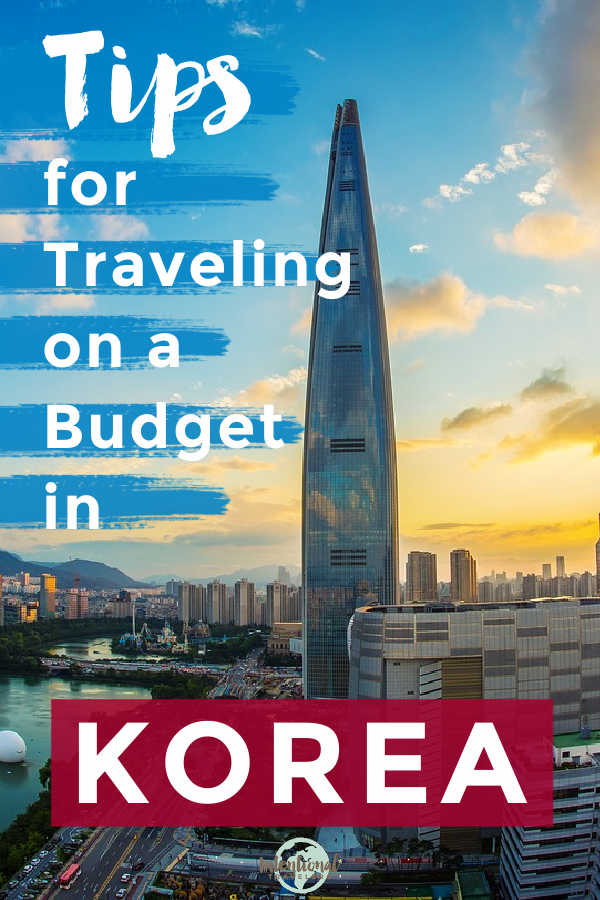
Similar Posts
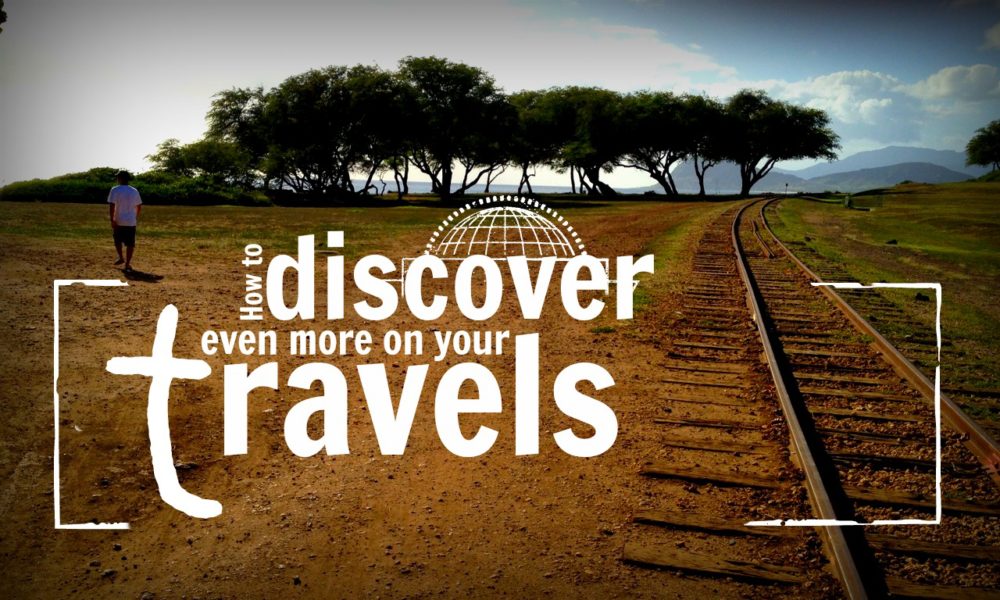
Geocaching: How to Discover Even More in Your Travels
It was only recently that we discovered one of the most interesting ways to boost our travel experiences. It is currently a hobby for over 800,000 people worldwide and has been going on since May of 2000. You may or may not have heard of it, but chances are, you pass by “caches” and “geocachers” on a daily…
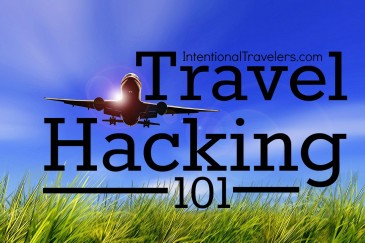
What Is Travel Hacking?
I almost cringe at the term “travel hacking”- it sounds like something illegal. But that’s the commonly used phrase for the art of getting free or discounted travel through award points and miles. Try not to think of hacking like a guy on his computer in a dark basement breaking into your bank account online. Think…
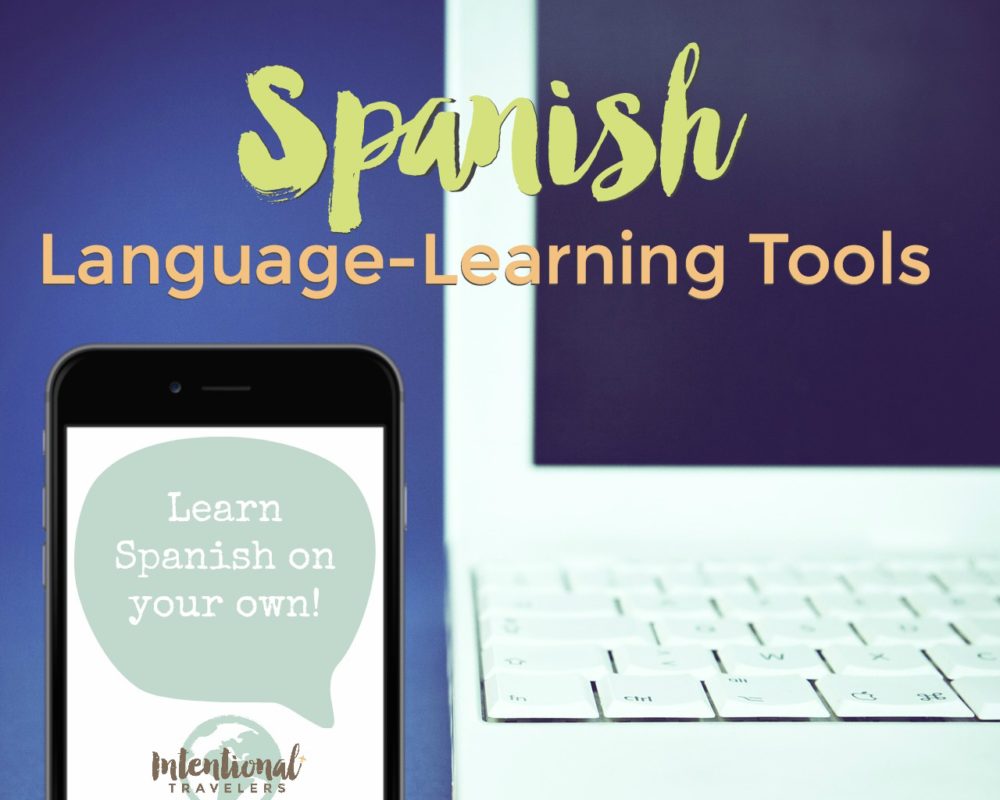
Top Spanish Language Learning Tools: Teach Yourself Spanish for Travel!
How would you like to teach yourself Spanish for travel? Let’s talk about Spanish language learning tools, apps, and the best free Spanish lessons online (and offline). Learning a language is an incredible asset for traveling the world. Being able to speak to host country nationals in their mother tongue can not only help you…
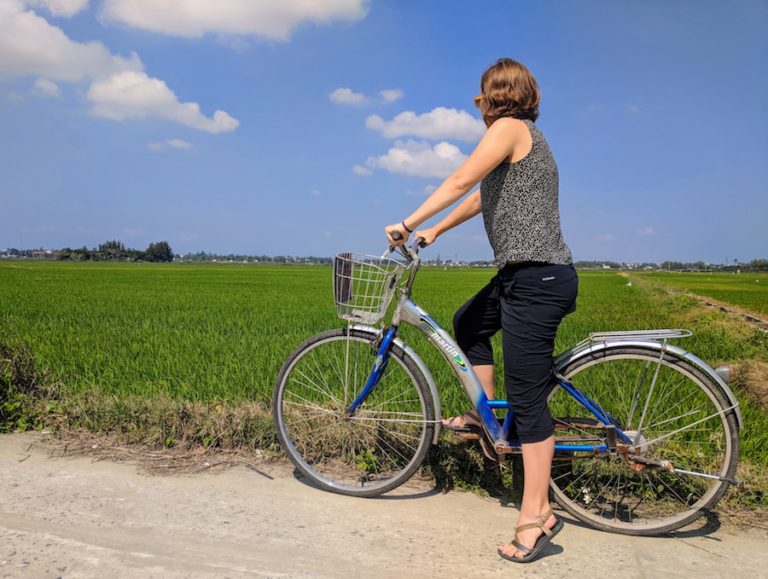
Central Vietnam Itinerary: Top Destinations to Visit
Many tourists are drawn to traveling Vietnam from North to South, but we often recommend prioritizing destinations in Central Vietnam. If you’re visiting this area, our Central Vietnam itinerary will help you plan the perfect trip. Is Central Vietnam worth visiting? In my personal opinion, yes 100%. Having spent several months in Vietnam over several…

Hiking Cinque Terre: 2024 Trail Tips & Itinerary
Cinque Terre is a magical destination with great opportunities for scenic hiking on the coast of Italy. Although several of the main trails are closed until 2024, you can still fulfill the dream of hiking Cinque Terre. This post covers everything you need to know about visiting Cinque Terre to hike in 2024. Updated: April…
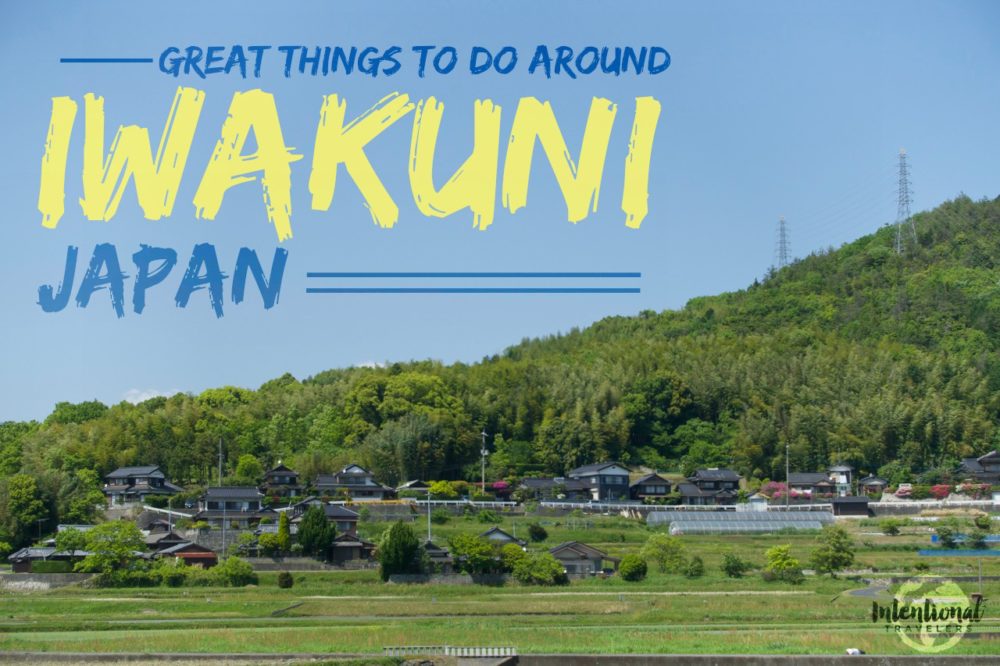
Great Things To Do Around Iwakuni, Japan
While slightly off the beaten path, we found that Iwakuni can actually be a great destination for a trip to Japan. For anyone visiting family at the Iwakuni Marine Corps Base, there are plenty of things to do in and around Iwakuni to fill up a week’s vacation. We spent several weeks in Iwakuni, visiting Jedd’s parents while…
One Comment
Great tips, Lianne! South Korea is amazing!
Leave a Reply Cancel reply
Your email address will not be published. Required fields are marked *
This site uses Akismet to reduce spam. Learn how your comment data is processed .
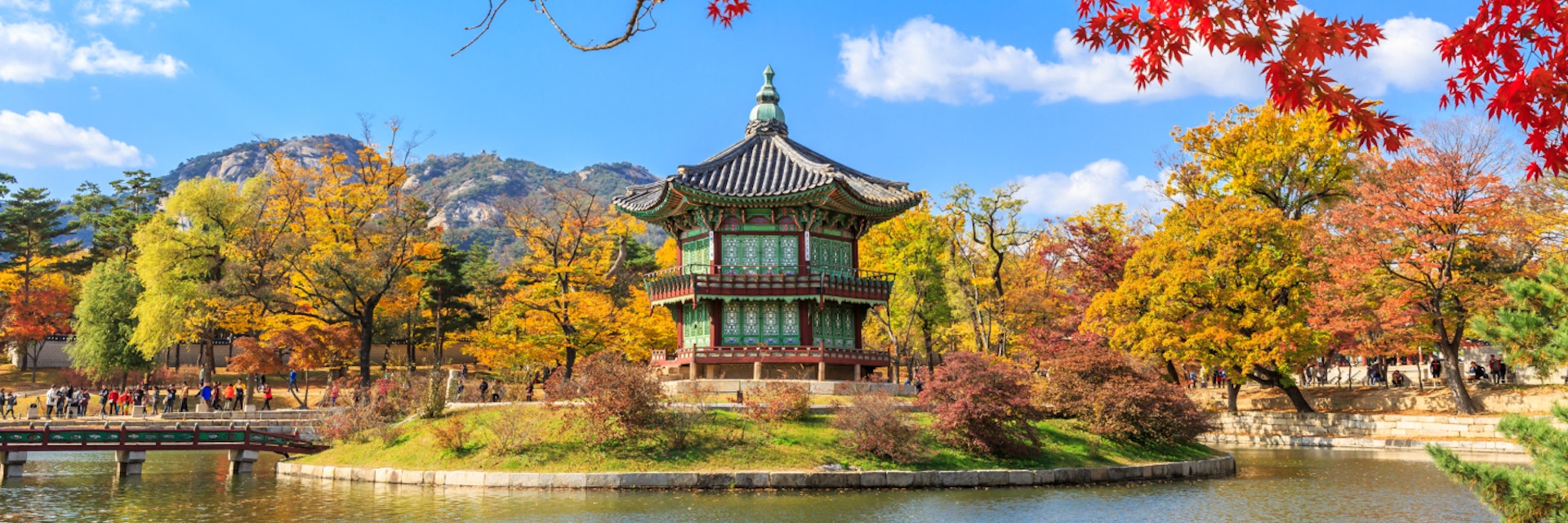
Getty Images
South Korea
From Seoul's glittering nightlife to Seoraksan National Park's vertiginous hikes, South Korea offers the traveler a dazzling range of experiences, beautiful landscapes and 5000 years of culture and history.
Best Time to Visit
Best places to visit, attractions, must-see attractions.
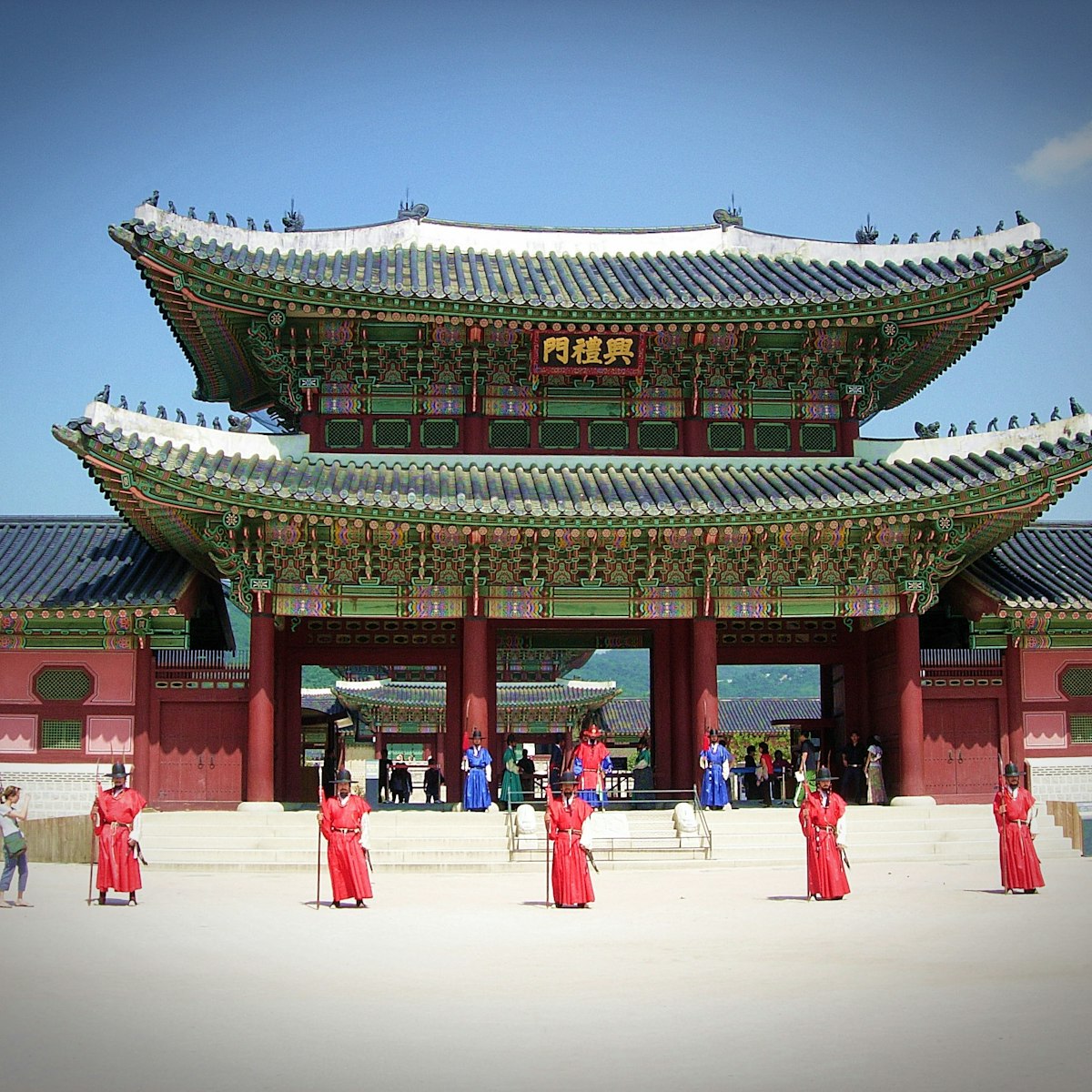
Gyeongbokgung
Gwanghwamun & Jongno-gu
Like a phoenix, Seoul’s premier palace has risen several times from the ashes of destruction. Hordes of tourists have replaced the thousands of government…
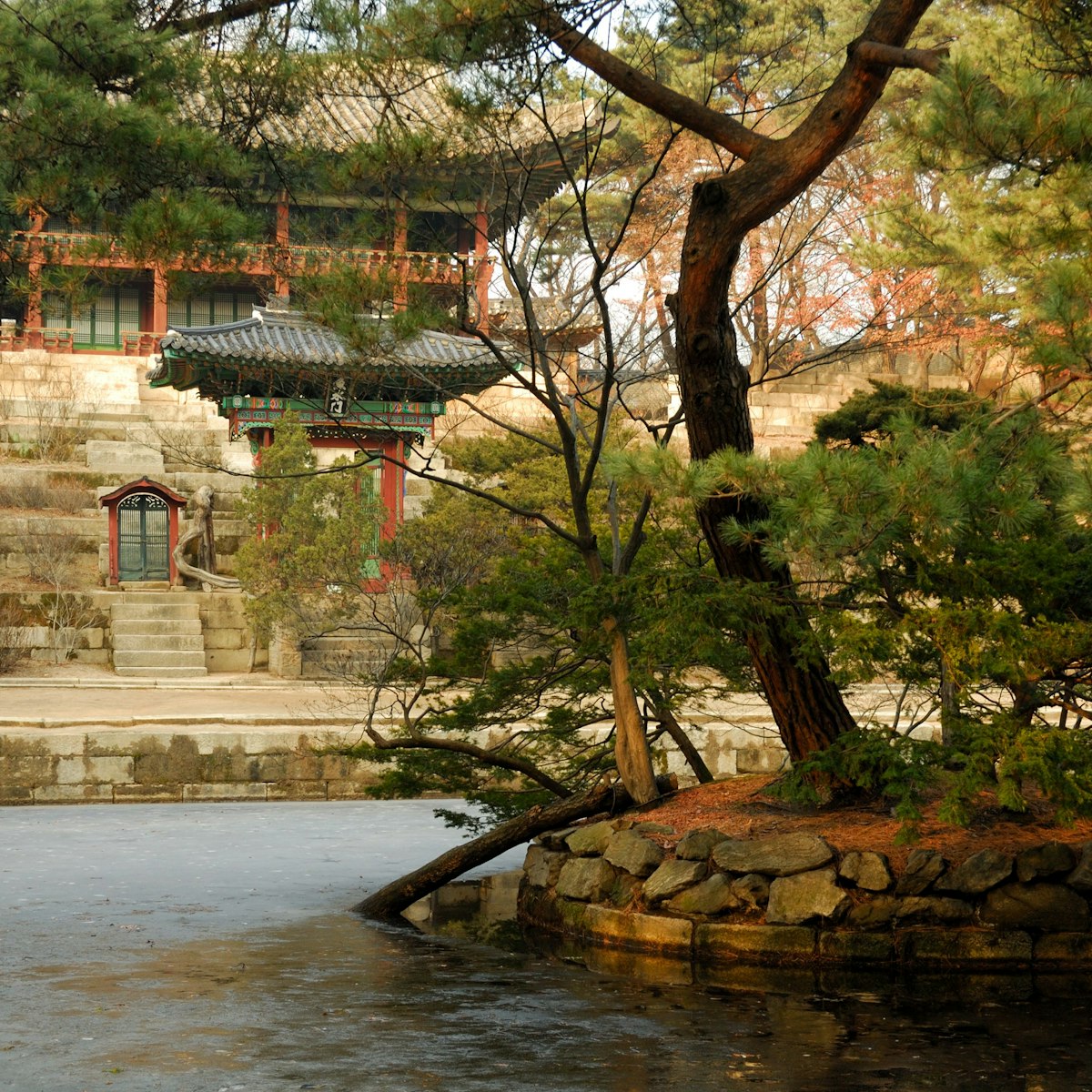
Changdeokgung
The World Heritage–listed Changdeokgung is the most beautiful of Seoul's five main palaces. You must join a one-hour guided tour to look around. English…
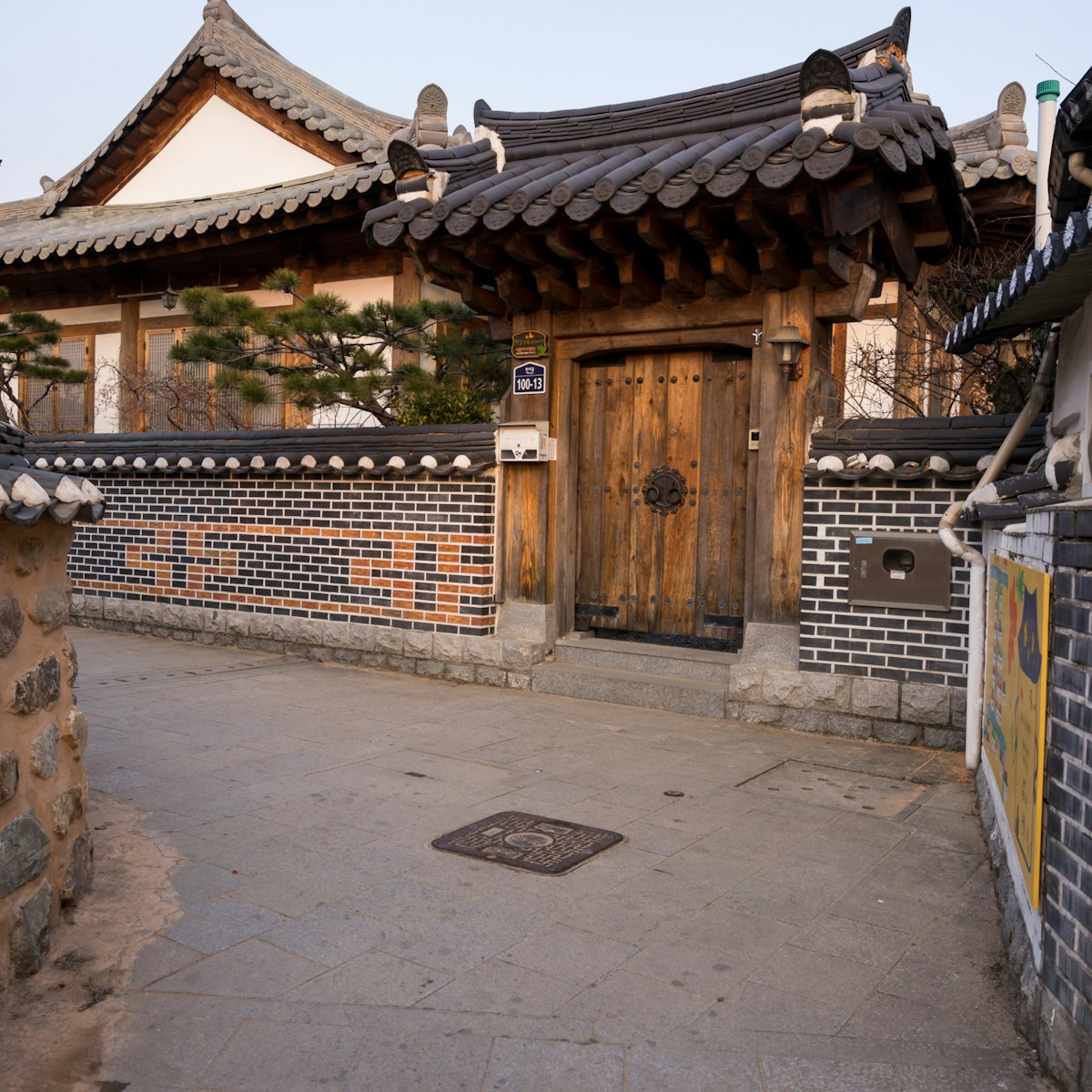
Jeonju Hanok Maeul
This maeul (village) has more than 800 hanok (traditional wooden homes), making it one of the largest such concentrations in the country. Virtually all of…

Leeum Samsung Museum of Art
Itaewon & Yongsan-gu
Amid the celebrity-owned apartments on the leafy southern slope of Namsan is Korea's premier art gallery. Beautifully designed and laid-out, it balances…

Seongsan Ilchul-bong
This majestic 182m-high, extinct tuff volcano, shaped like a giant punchbowl, is one of Jeju-do's most impressive sights and a Unesco World Heritage site…

Ssanggye-sa
Gyeongsangnam-do
The visual imagery of this temple is a feast for the eyes and, like any exquisite dinner, should be savoured with deliberation. Stone walls supporting…

Jagged ridges, 400m-high peaks, ropes, ladders and awe-inspiring views await travellers looking for a challenging hike. Most travellers disembark the…

The World Heritage–listed fortress wall that encloses the original town of Suwon is what brings most travellers to the city. Snaking up and down Paldal…
Top picks from our travel experts
The 10 most unmissable experiences in south korea.

Korea Tea Museum
Jeollanam-do
Here you can learn more than you ever thought you needed to know about tea, both in Korea and around the world, and also take part in a traditional tea…
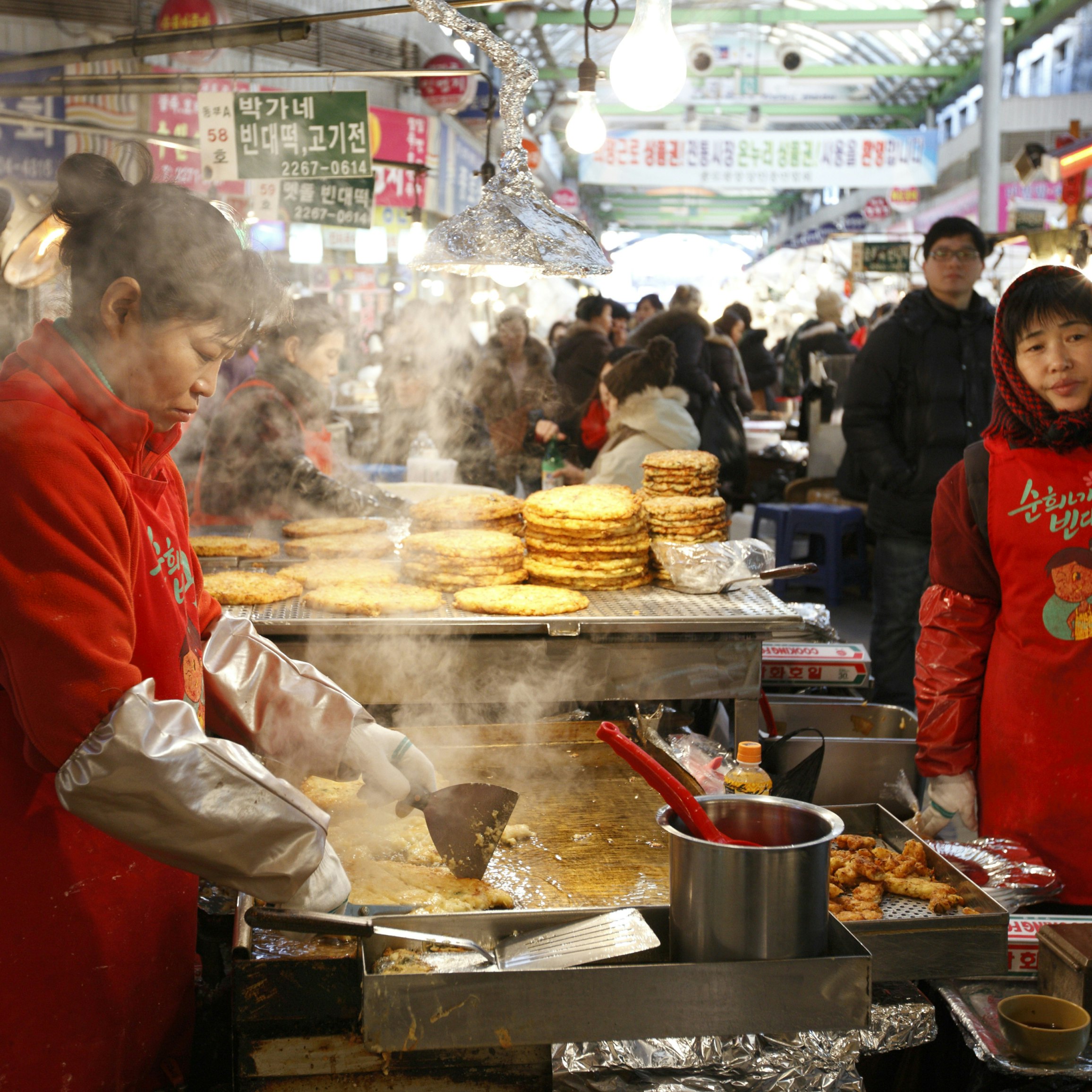
Gwangjang Market
Dongdaemun & Eastern Seoul
This sprawling fabric market is now best known as Seoul’s busiest meokjagolmok (food alley), thanks to the 200 or so food stalls, kimchi and fresh-seafood…

Sandy walking trails wend through this bamboo grove, past pavilions and film locations for Korean dramas. It's one of the area's most popular attractions…

Gwangju Kia Champions Field
Catch the Kia Tigers professional baseball team in action from April through November. Stock up on snacks from the street vendors outside the stadium,…

Gukje Market
West of Nampo-dong, this traditional market has hundreds of small booths with a staggering selection of items, from leather goods to Korean drums.

Daehan Dawon Tea Plantation
One of Korea's most iconic sights, the Boseong Daehan Dawon Tea Plantation is spectacularly set on a hillside covered with curvy row after row of…

Cheong-gye-cheon
With its landscaped walkways, footbridges, waterfalls and a variety of public artworks, such as the enormous pink-and-blue shell entitled Spring in Cheong…

Dongmun Market
Traditional Korean food market. Fun for a wander and peek at local seafood for sale, which you can have cooked up on the spot at small restaurants. It's…
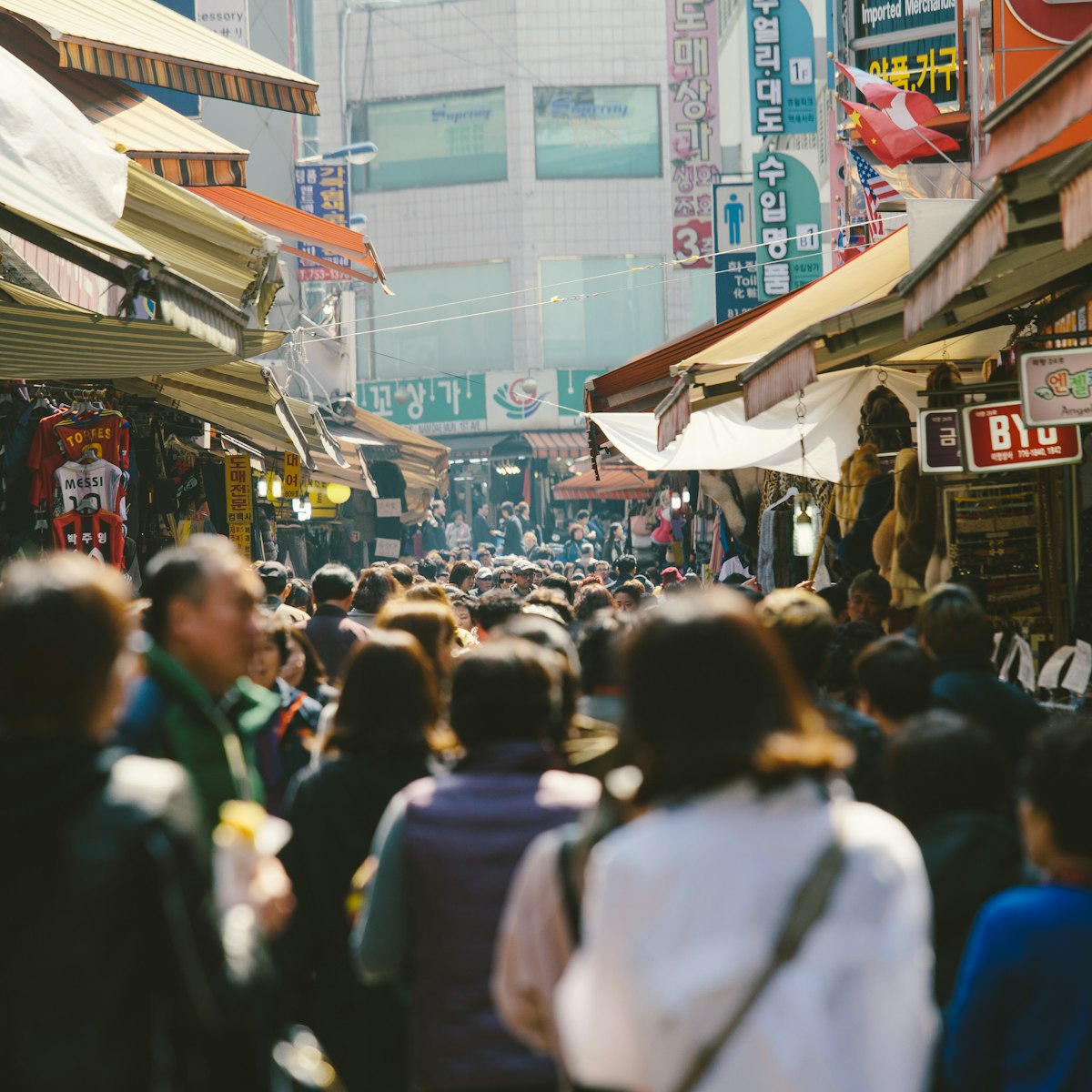
Namdaemun Market
Myeong-dong & Jung-gu
You could spend all day in this swarming night-and-day market and not see it at all. The largest market in Korea, each section has hundreds of stalls,…

Dongdaemun Market
The bargaining never stops at this colossal retail and wholesale cluster, best visited at night when local buyers come clamouring for deals. The…

Jungang Market
Daejeon's biggest traditional market has porridge and pancake vendors, piles of kimchi and chicken feet, clothing and household goods.
Planning Tools
Expert guidance to help you plan your trip.
Best Things to Do
South Korea has an incredible mix of attractions that will keep you coming back for more. These are 10 of our favorites.
Things to Know
Before your trip to this cultural powerhouse, read our tips for planning, navigating etiquette, health and safety concerns and more.
Transportation
With some of the best public transport in the world, South Korea is a gift to travelers. Here's what you need to know about getting around when you arrive.
Visa Requirements
Do you need a visa to enter South Korea? Read our guide to find out.
Money and Costs
If you’re looking to travel to South Korea on a budget, follow this money-saving guide, from advice on SIM cards to tips on transit.
Best Road Trips
South Korea might not leap out as the obvious place for a road trip, but the back roads reveal a different side to the peninsula. Here are our top trips.
Latest stories from South Korea
Filter by interest:
- All Interests
- Adventure Travel
- Art & Culture
- Beaches, Coasts & Islands
- Food & Drink
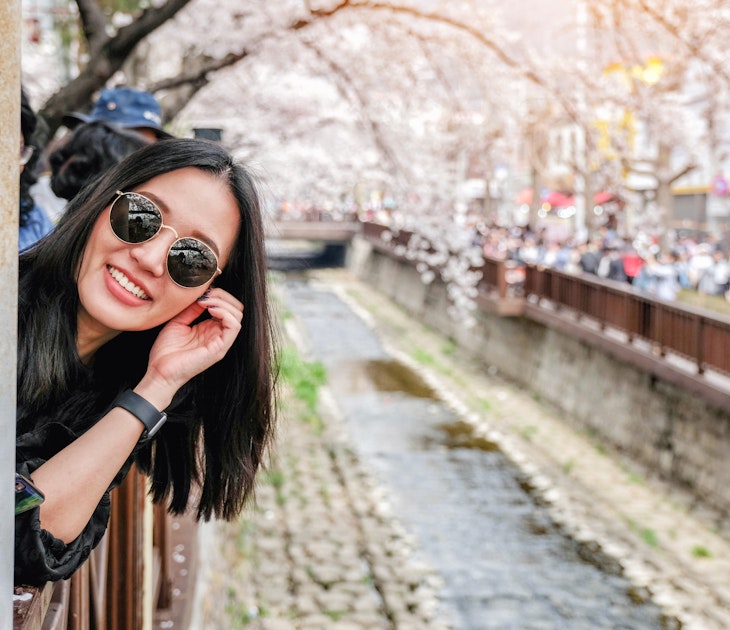
Feb 22, 2024 • 6 min read
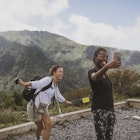
Feb 20, 2024 • 6 min read
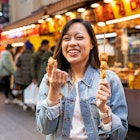
Feb 19, 2024 • 8 min read

Feb 18, 2024 • 4 min read
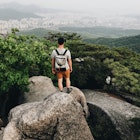
Feb 18, 2024 • 7 min read
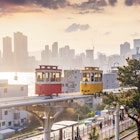
Feb 18, 2024 • 10 min read

Feb 17, 2024 • 10 min read
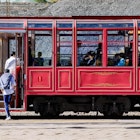
Feb 17, 2024 • 8 min read
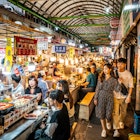
Jan 27, 2024 • 17 min read

Apr 28, 2023 • 6 min read
in partnership with getyourguide
Book popular activities in South Korea
Purchase our award-winning guidebooks.
Get to the heart of South Korea with one of our in-depth, award-winning guidebooks, covering maps, itineraries, and expert guidance.
South Korea and beyond
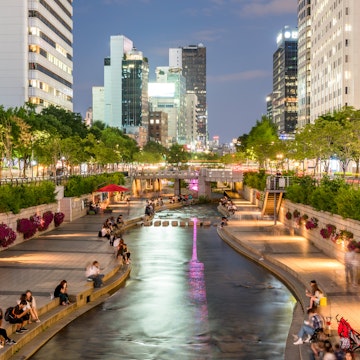

- Visa Application Helpline
Subscribe to our newsletter
Learn how to live a sustainable long-term travel lifestyle.
By signing up, you agree to the our terms and our Privacy Policy agreement.
Top 27 Places to visit in Darjeeling, Explore the Beautiful Hills of Darjeeling
Top 10 things to do when traveling to shimla: shimla travel guide, the ultimate paris travel guidelines for first timers | top attractions & things to do.

The Best 10-Day South Korea Itinerary: Budget and how to plan
If you’re looking for a travel destination that offers a rich cultural experience and a glimpse into history, South Korea is the perfect choice. Despite its small size, this country is packed with diverse attractions and a unique charm that will captivate any traveler.
Whether you’re interested in exploring ancient palaces, indulging in delicious street food, or immersing yourself in the vibrant K-pop culture, South Korea has something for everyone. With this ultimate 10-day South Korea itinerary , you’ll be able to make the most of your time in this fascinating country.
South Korea will give you the perfect opportunity to create a storming itinerary to explore the bustling cities quiet mountains and countryside. South Korea has a synchronized harmony of traditional culture and modern history.
Tourists can enjoy the cultural heritage through the UNESCO sites and can enjoy the variety of food, local culture, and lifestyles. Along with Korea’s Buddhist temples, and UNESCO sites you will find beautiful mountains, hiking trails, and port cities will let you experience the full range of diversity in the country.
Planning a Trip to Korea Preparations
Though you cannot plan to see all there is in 10 days you surely can have the most rejuvenating experience. Planning a trip to Korean districts and there are many cultural sites. Before flying to Korea, it will require that you have ETA (Electronic Travel Authorization) for Korea.
You can apply online on their website and when granted you will be eligible to live in the country for 30 to 90 days. You will also require a valid passport, accommodation, and permit if you were to travel across the country. The required travel duration for most travelers are 10 to 15 days. And it is always recommended to get started on your preparation one or two months ahead.
Documents Required for Visiting South Korea:
- Valid Passport & Visa
- K-ETA (Electronic Travel Authorization) For citizens of Selected Countries
- Cash for Currency Exchange
To have a hassle-free trip to South Korea there are few more things you can do to prepare. Few of them are using a language translator app, using specialized local maps, downloading cab app, and getting cashless money transfer systems. Here are the top apps for planning South Korea itinerary 10-days you can use to make your journey easy.
10-Day South Korea Itinerary: Provinces, Day to Day
You must start your visit from the capital of South Korea, Seou l and you will get to learn the royal history, Korean cuisine. Then on 3rd Day, you can travel to Suwon to watch the folk village and enjoy the folk village view. Then continue your journey to the South and move to Andong where you will find the beautiful Hahoe folk village, and you should visit the Soju Museum, Bongjeongsa Temple.
After spending a few days in Andong, it’s time to visit the cultural and Spiritual heart of Korea, Gyeongju. Visit the attractions like Tumuli Park, Bulguksa Temple, and more. Then for the last days of your trip, you will travel to the bustling fishy port city of Busan where you can roam around the fish markets and taste heavenly fish or go on a fish-catching trip. With this itinerary, you will be able to see the most remarkable culture and attractions of Korea.
Seoul: 2 Days
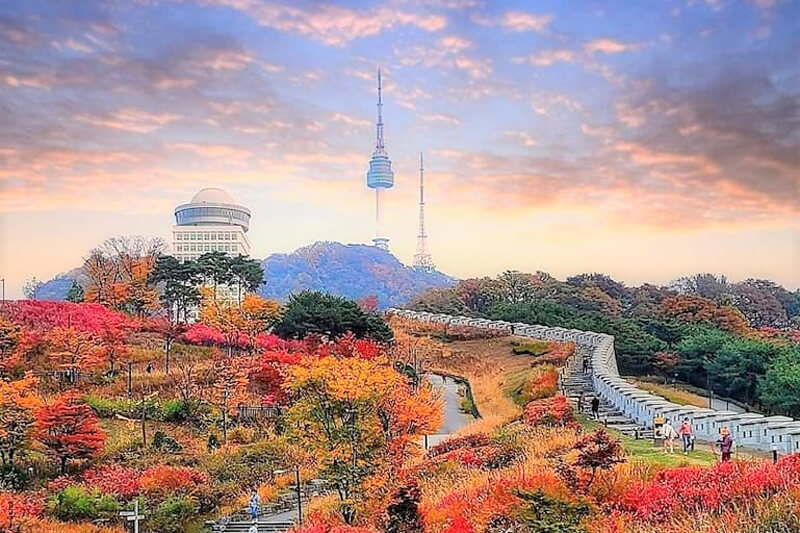
Seoul offering a modern yet traditional lifestyle should be the first place in your south Korea itinerary for 10-days. The Seoul trip for two days will be your first step in familiarizing yourself with the city’s cultural, historical, and traditional sides. Take the first day slow and visit the royal palaces and UNESCO sites. You can start your trip with Gyeongbokgung Palace, and then continue to visit Cheonggyecheon Stream, Gwangju Traditional Market, and Insadong Shopping Street.
Gyeongbokgung is one of the most popular and oldest palaces in Seoul . This served as the main official palace during the Joseon dynasty. The entrance fee to the palace is $2.50 and you can also rent hanboks if you want great pictures in the traditional dresses. After the tour head over to the Cheonggyecheon Stream where you can enjoy a nice walk and enjoy the art murals, greenery, and scenic beauty.
Make your way to Gwangju Market, where you will be enjoying a whole array of foods. Some of the famous foods there as one of the oldest markets in Seoul are bindaetteok, mandu-guk, and bibimbap. From there you can go to visit the traditional Bunchon Hanok village.
For Day 2 in Seoul , start your day with a delicious breakfast in Hongdae. Hongdae is a vibrant area where young people hang out and Hongdae shopping street is also a great area to hang out. From there you can go to museums of the city and during the sunset hike up the N Seoul tower where you will enjoy the beautiful city’s nighttime landscape view. You can also have an amazing dinner on the restaurants of N Seoul tower.
Day 3: Trip to DMZ
The DMZ tour from Seoul takes a whole day. You must keep aside a one-full day for this historic area. You can only have guided tours of the DMZ area. The Demilitarized Zone portrays the rich history of the Korean Wars. The DMZ tour packages are available from $25. Visit the freedom bridge, DMZ exhibition hall, and other monuments. You will get a brief recap of the historical moments throughout the trip to DMZ.
Day 4 & Day 5: 2 Days in Andong
By Korean standards, it’s a long journey between Seoul and Gyeongju . For this itinerary, there’s no better place to break up the trip than Andong. Long known for its traditionalism, Andong is a center of culture and folklore. It’s one of the best places to visit in South Korea for a glimpse of its ancient past.
For Day 1: Explore the impressive grounds of the historic Neo-Confucian Academy with a trip to the historic Dosan Seowon and for Day 2: Admire a stunning view of the surrounding natural landscapes from the top of the Buyongdae Observatory.
Also, the Woryeonggyo Bridge, a wooden footbridge crossing the Nakdong River, provides breathtaking views of the surrounding mountains and is a popular spot for photographers and nature enthusiasts.
Day 6: 1 Day in Gyeongju
No place during your 10 days in South Korea will live up to expectation better than Gyeongju. This fascinating city is nothing short of the cultural and spiritual heart of Korea. Gyeongju checks off all the boxes that drove you to visit South Korea in the first place.
Compared to the hubbub of Seoul and brash Busan, Gyeongju is a relaxing respite. And it’s as fulfilling as either. The top attractions in Gyeongju are spread far & wide. They encompass some of Korea’s finest cultural moments. Tumuli Park is one of the few Gyeongju tourist attractions smack dabs in the middle of town. The park is an ancient burial site. About two dozen Korean royal tombs sprout from the earth here.
Day 7 & Day 8: 2 Days in Jeju Do
Jeju is South Korea’s one of the most vibrant islands to experience beautiful braces, local markets, and more. On the first day arriving in Jeju, you can visit the Jeju Folklore and Natural Music and Halla Arboretum. And you can then visit the Jeju five-day folk market and Dongmun Traditional Market.
The next day you can catch the sunrise at Hallasan or at Sarabong Peak early in the morning. Then you can go visit the Hamdeok beach and Manjangul cave. There are a lot of places to explore in the south of Jeju-do and you will have a refreshing experience while travelling here.
Day 9: Busan
Busan is one of those take-it-or-leave-it places. Apparently, suggests that anyone should fall in love with, or even like, this brash Korean port city. And that’s usually where the story ends. When you are in Busan, don’t leave out the bustling J agalchi Fish Market.
It’s one of the city’s top cultural attractions, and an absolute must-see and must-do. This is not just the port city’s most significant market; it’s the biggest fish market in South Korea. All types of seafood caught around the Korean peninsula find their way to the market stalls of Jagalchi Fish Market .
With your trip coming to close soon, make time to fit one more temple into your Korea itinerary : Beomeosa Temple. This ancient temple is Busan’s top tourist attraction. The original temple was founded in AD 678 by Ui Sang, a monk in the Jogye Order of Korean Buddhism. It has since been rebuilt multiple times. Most of the current buildings hail from the 16th and 17th centuries.
From stone pagodas to ornate wooden gates, the beauty of the city entrances you. The temple also benefits from a spectacular location. It sits at the foot of Mount Geumjeongsan. Visiting Beomeosa Temple, it’s easy to forget you’re in Korea’s second-biggest city.
Day 10: Departure
On Day 10 return to Seoul, and get your things packed. On the last day you can visit some famous places in Seoul or have a last traditional meal of Korean cuisine. You will have a lot of memories and an experience of Korean culture by the time you live.
Most Popular Tourist Attractions in South Korea
There are a lot of beautiful places across South Korea where you can experience a diversity of landscapes, culture and food. Taking a trip to South Korea is a phenomenal way to experience the joys of life. Here are the top few tourist attractions and landmarks of South Korea that any first-time traveler must cover.
DMZ is a zone between South Korea and North Korea near the 38th parallel north. And the demilitarized zone is a walk through the history for tourists where you can understand the value of the war history of the country. This area works as a buffer zone between two countries and is a place for maintaining political peace.
Changdeokgung Palace:
One of the most popular UNESCO sites in Seoul is the Changdeokgung Palace. Changdeokng Palace is an official residential building built in the Joseon dynasty. This complex was built as a secondary palace from Gyeongbokgung Palace to have the administrative work done.
Gyeongbokgung Palace:
The Gyeongbokgung palace is a South Korean first palaces for administrative work. It was built in 1935 in Hanyang, currently the heart of Seoul. This is quite famous for taking pictures in hanbok, traditional korean dress and visiting the historical settings, and artefacts. At the entrance, you will also find the historical Gwanghwamun gate located at the three-way intersection.
Hwaseong Fortress:
Hwaseong fortress is a one-of-a-kind brick and pilestone fortress made in Joseon dynasty. It’s located in the centre of Suwon, a few kms away from Seoul. It was built by King Jeongjo to honour his father, Prince Sado.
Namsan Tower:
Namsan tower located in Seoul is an observatory tower on the highest hill in Yongsan-gu district of Seoul. It gives undeniably the best view in the city and is worth a visit. The lovelocks there for couples are also quite famous. You can also enjoy the views from the cafe or the restaurant on the N Seoul tower.
Lotte World:
Lotte World is a major theme park in Seoul with indoor and outdoor rides, shows and parades, and an aquarium. If you have come here with children, taking a day to go to Lotte world will really make the trip a lot of fun. The aquariums, ice rink and parades are a true treat to kids.
Jeju Island:
Jeju Island is one of the most peaceful and pleasant natural spaces that you can visit. It is one of the most beautiful volcanic islands on the planet Earth. Top attractions in Jeju-do are the lava tunnels, Hallasan, Cheonjiyon waterfall, and the hiking trails.
Nami Island:
Nami Island has gained popularity as a scenic and romantic spot, and you can go there to enjoy cherry blossoms and the tree-lined pathways are quite romantic during Autumn and Spring. You can also enjoy different types of activities like cycling, zip lining and boating in Han River.
Traditional Villages:
There are a beautiful Korean village like Bukchon Hanok, Yongin-si in Seoul where you can get roam around the beautiful streets, visit artisans and traditional arts.If you travel to Andong during your trip, you must visit Andong folk village to visit the Andong folk museum, thatched house. You can also visit the Jeonju-si for old shrines, Boseon-gun in South Jeolla province for the entrancing beauty.
Dodohaehaesang National Park:
Dodohaehaesang National Park is the largest natural park in South Korea and if you are a nature lover you will have a great time as there are 1500+ plant species and 1200+ animal species. The scenic beauty of the island the park is located on is all the is also an attraction.
National Museum of Korea:
National Museum of Korea has collections of Korean traditional products, and you will find a lot of art exhibitions going on every day worth visiting. You will see the collection of art, artifacts, and crafts from Korean and international artists at the National Museum.
South Korea Food Markets
South Korea has a lot of vibrant food markets which are worth visiting for tasting local foods and get immersed in the local lifestyle. A few of the top South Korean food markets are Gwangjang Market, Namdaemun, and Dongdaemun Design Plaza in Seoul for tasting the most famous traditional foods. You may also visit the jagalchi fish market in Busan for fresh fish and seafood and tasty foods.
Budget for South Korea 10-Day Itinerary
Your travel tastes, style, and the time of year you intend to travel all affect how much money you allocate for a 10-day itinerary in South Korea. I can give you a general idea of the expenditures related to a traveler on a medium budget, though. Please be aware that these projections were created using pricing as of my September 2021 update and may have altered since then.
Accommodation: The price of lodging can change based on the area and the type of lodging you select (hotels, hostels, guesthouses, etc.). Budget travelers should budget $30 to $100 per night for a mid-range hotel or guesthouse, on average.
Food: There are numerous culinary alternatives available in South Korea at various pricing brackets. For roughly $5 to $15 each meal, budget-conscious travelers may savour delectable street food and regional cuisine. The price range for meals at mid-range restaurants could be between $15 and $30.
The public transit system in South Korea, which includes buses and subways, is good. Spend between $100 and $150 on transport over the course of ten days, which includes getting around cities and possibly taking the train to various locations.
Activities and Sightseeing: Different attractions and activities have different entrance prices. Budget, on average, $5 to $20 per attraction. You can budget between $100 and $150 for this category if you’re going to numerous paid attractions.
Shopping and souvenirs: Depending on your shopping tastes, this expenditure can vary greatly. Budget travelers should set up $100 to $200 for shopping and souvenirs.
Other: It’s a good idea to have some extra cash on hand for unanticipated costs like tips, extra snacks or drinks, or any emergency requirements. Set aside between $100 and $200 for other costs.
Without factoring in international flights to and from South Korea, a ballpark estimate for a 10-day moderately priced vacation in South Korea could vary from $800 to $1,000. Remember that this is only a rough estimate, and that the actual cost of the trip may change depending on your choices. It is advised to conduct detailed pricing and expense research for your planned route and travel duration in order to obtain a more precise budget.
Related Posts
The best maldives itinerary: cost-breakdown of maldives vacation packages (4 to 7 days), new zealand itinerary & tour packages to design the perfect vacation, macau trip itinerary: experience the perfect visit, the best 4-day hong kong itinerary: explore the city’s highlights.
Save my name, email, and website in this browser for the next time I comment.
This site uses Akismet to reduce spam. Learn how your comment data is processed .
Type above and press Enter to search. Press Esc to cancel.
May 3, 2024
Celebrating Buddha’s Birthday in South Korea
The top k-news from around the world, 31 best korean dramas on netflix, q&a with salle yoo, the first chief legal…, top 5 hidden gems for authentic korean food….
Join Our Newsletter

- Korean Childbirth Traditions
- HWANGAP 60TH BIRTHDAY
- LEARN THE KOREAN LANGUAGE
- KOREAN ZODIAC
- Korean Weddings
- TRAVEL GUIDE
- RESTAURANTS
- FOOD STORIES
- K-DRAMA & MOVIE
- South Korea Travel Guide
Where to Go, What to See & How to Stay on Budget
By Patricia Liu and Joel Marinan
There has never been a better time to visit South Korea. Clean, modern, sophisticated, and ultra safe, Korea is a destination that you will want to come back to again and again. With the rise of Korean culture and entertainment throughout the world, the country is experiencing a renaissance of sorts, especially for foreigners who wish to experience all that Korea has to offer.
Korea has always been a fascinating country to visit and deserves a place on everyone’s travel bucket list. Known for its stunning blend of tradition and modernity, Korea features futuristic technology, bustling markets, and a thriving pop culture scene. There are no guns or drugs allowed in Korea, and visitors can expect a high level of safety and cleanliness while exploring the country. Also of note is that Korea is a no tipping culture, so savoring the delicious cuisine is extra affordable, as are the cab rides to restaurants and other destinations.
Speaking of affordability, the exchange rate between the Korean won and the US Dollar has been very favorable for Westerners, which is another perk of traveling to Korea right now.
Our South Korea Travel Guide shows you where to go, what to see, and when to travel. Start your journey with itinerary ideas and pre-travel tips, the best day trips, and lots more essential Korean travel advice. Let’s go!
Here are some of our most popular articles that will help you make the most of your trip to South Korea.

A Local’s Guide to Gyeongju
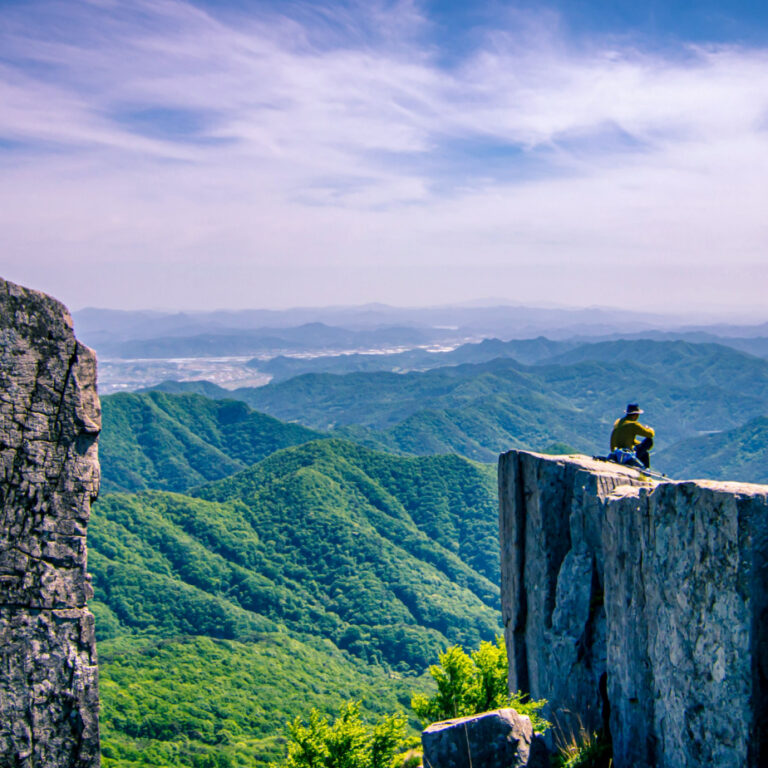
What To Do in Korea in May: The Family Month
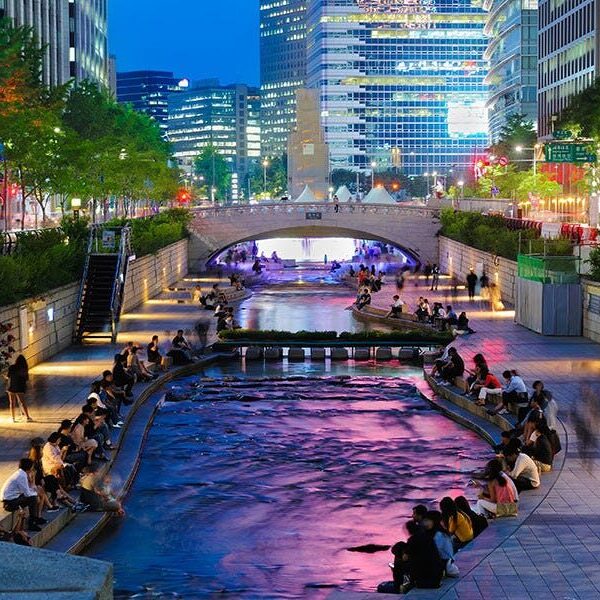
19 Did-You-Knows About Korea
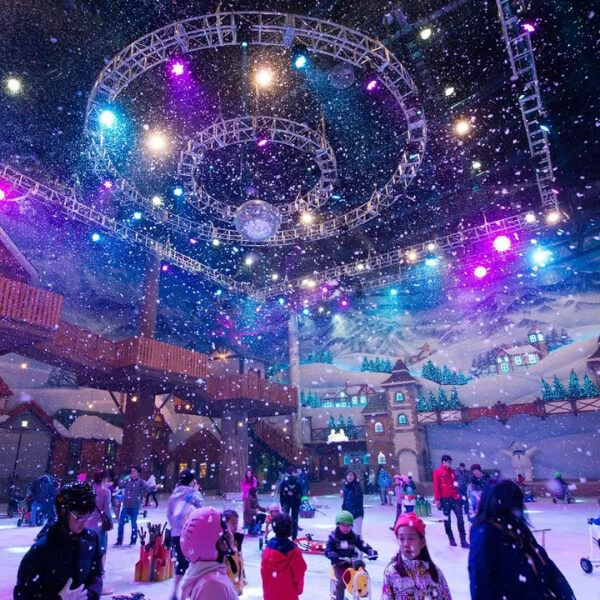
10 Ways to Spend a Magical Christmas in Korea

Hiking in Seoul, the Top 5 Mountains You Must Try

Jeju Island: Top 10 Places You Must See
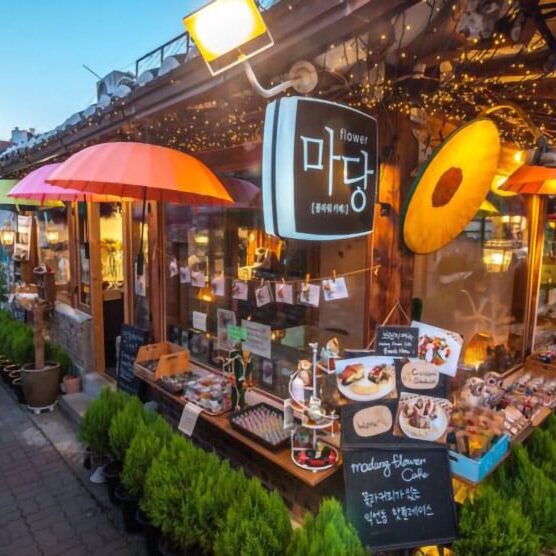
19 Best Things to Do in Seoul Right Now- An Insider’s Guide
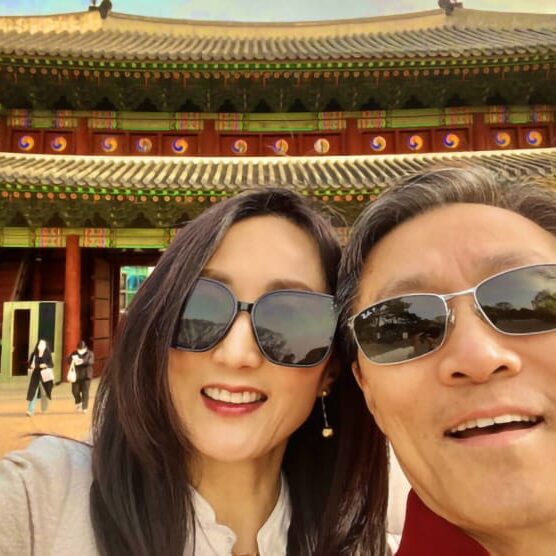
23 Reasons Seoul Will Be Your New Favorite City
Latest travel updates.
- Vaccination is NOT a requirement for entry into Korea.
- There is no requirement on the passport’s remainder validity for entry. You may travel to Korea as long as your passport remains valid throughout your stay in Korea.
- From April 1st, 2023, travelers from the USA, Canada, and 21 other countries no longer need to apply for the K-ETA to travel to Korea. This will run at least until 31st December, 2024 and is designed to make it easier to travel to Korea.

Planning Your Trip To Korea
Check the Korean Embassy for any possible travel restrictions.
- If you’re not sure where to stay, check out our guide to the best hotels in Seoul . You can find our recommendations for the best luxury, mid-range, and budget hotels in Seoul, as well as long-term apartments that you’ll love.
- For the best flight deals to South Korea, Best of Korea recommends Skyscanner and Expedia . You can find the cheapest prices and most convenient flights and buy the one that suits you best.
- For the best hotel prices in Seoul, Best of Korea recommends Klook 0r Agoda – they cover most hotels in Seoul and the rest of Korea and offer great prices without hidden fees.
- Before you travel to Korea, it’s a good idea to order an eSim card, regular sim card or portable WiFi router to collect at the airport so you’re connected as soon as you arrive. You can change a small bit of money before you travel, but you can also use the airport ATM to get some Korean won.
- There are large differences in exchange rates so you will need to do some comparing before you exchange a large sum of money. You can exchange USD to KRW easily at banks or money exchange shops in all major tourist areas like central Seoul (Myeongdong and Namdaemun are good places but the Coex Center also offers money exchange. You can also negotiate the exchange rate with the vendor if you think it is too high.
- You can withdraw cash from bank ATMs. Alternatively, use a pre-paid travel card like the one offered by Wise , which allows ATM withdrawals and payments and works perfectly in Korea.
- Don’t forget to bring a travel adapter for your electronics and leave plenty of extra space in your suitcase for the many Korean souvenirs and goodies you’ll buy on your tri
Do US Citizens Need A Tourist Visa?
No, travelers from the USA don’t need a tourist visa to enter South Korea. You can visit for up to 90 days visa-free.
Current COVID-19 Rules In Korea
Most COVID-19 rules in Korea have been dropped and now there are only 2 main rules to be aware of. First, face masks are mandatory when visiting medical facilities (hospitals). There is no longer a 7-day mandatory quarantine for people in South Korea. If you’re infected with COVID, the Korean government recommends a 5 day self-quarantine, but it’s not enforced. Travelers to Korea should follow the current restrictions or may be liable for fines or deportation.
Korean Tourism Support Hotline
If you have any concerns or problems when traveling in Korea, you can call 1330 . This is a dedicated tourism support hotline where trained specialists provide tourist assistance and is available in Korean, English, Japanese, Chinese, Russian, Vietnamese, Thai, and Malay.
US Government Travel Advisory For Korea
The U.S. Department of State currently has a level 1 travel advisory (Exercise Normal Precautions) for the Republic of Korea (ROK). Find out more about current travel advisories for South Korea on the Department of State website.

6 Best Destinations In Korea
South Korea is truly a country of contrasts. From the bustling, modern city of Seoul , with cutting-edge designer buildings, VR labs, and AI robots, to peaceful UNESCO World Heritage cities like Jeonju and Gyeongju , there are many unique places to explore.
There’s nothing worse than coming back from vacation and hearing about incredible places you missed that you wished you’d seen, such as a beautiful Buddhist temple by the beach (Haedong Yonggungsa Temple) or a leafy island getaway where deer and rabbits roam freely (Nami Island).
Here are 6 of the best destinations in Korea that you absolutely must visit, as well as some of the sights you’ll want to check out while you’re there. We’ll be bringing you lots more detailed destination guides in the future, so be sure to visit again soon.
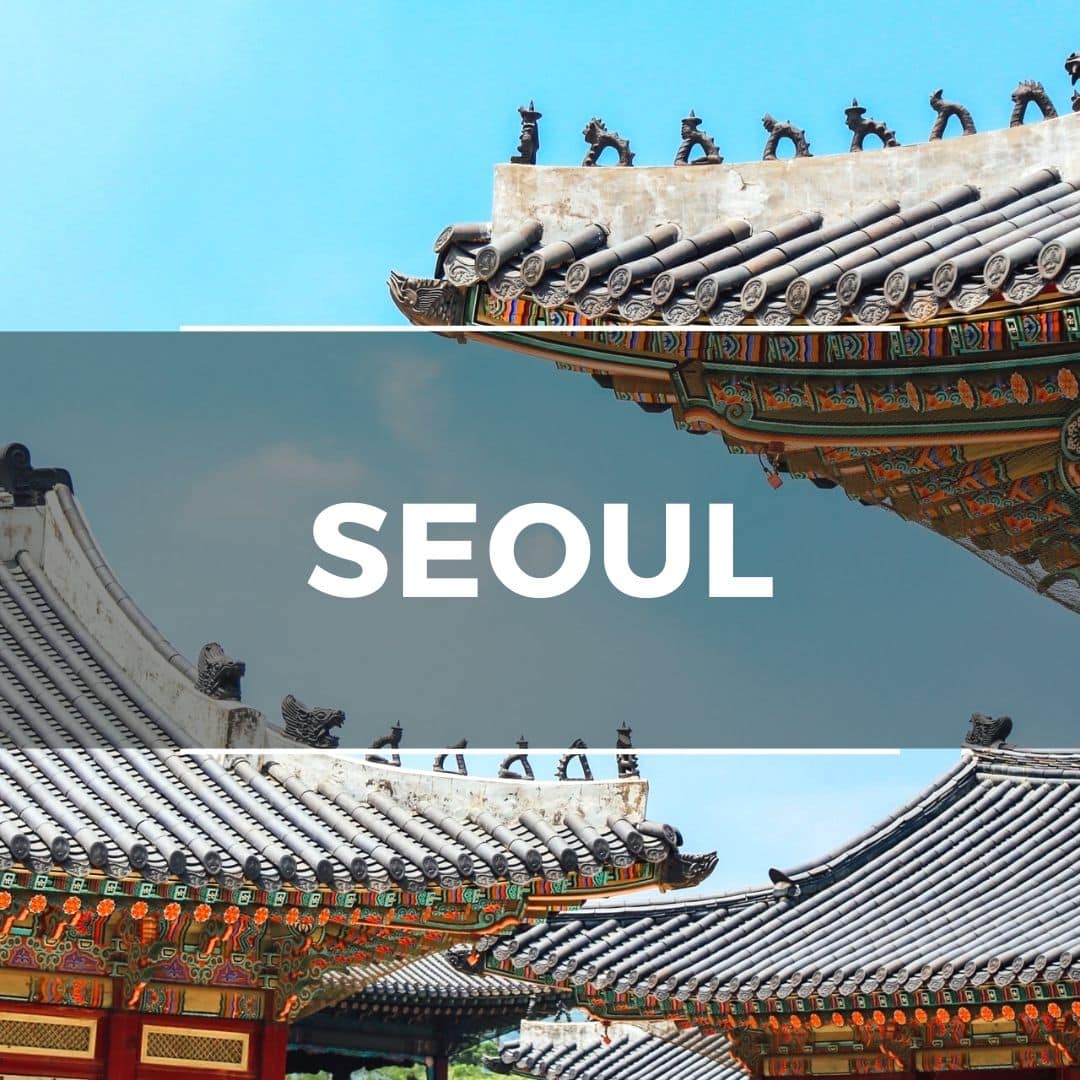
Korea’s Busy Capital
Seoul is Korea’s largest city, capital, and first, stop for most travelers to Korea. There are many beautiful places in Seoul , including landmarks, relics from ancient kingdoms, towering skyscrapers, Buddhist temples, Michelin-starred restaurants, and some of the best street food you’ll find in the world. If you see only one city in Korea, you should definitely visit Seoul.
You’ll never be bored in Seoul. Whether you’re traveling as a family, as a couple, or by yourself, there’s so much to do. Be sure to plan lots of time to check out Korea’s capital.
This Full Day Tour of Seoul will show you some of the hottest spots in the city, while this Customized Private Tour of Seoul will allow you to choose where to go.
Here are 10 of the best Seoul attractions:
- Gyeongbokgung Palace
- Bukchon Hanok Village
- Starfield COEX Mall
- Bukhansan National Park
- Myeongdong Street Markets
- Lotte World Tower
- Secret Garden (Changdeokgung Palace)
- Dongdaemun Design Plaza
- N Seoul Tower
- Yeouido Hangang Park

Korea’s Second City
Busan, Korea’s second city, is a thriving port city far away from Seoul both physically and culturally. This popular summer destination features some of Korea’s most popular beaches and bars. Explore Busan and you’ll find sprawling markets, fresh seafood, film festivals, the world’s largest shopping mall, coastal temples, and lots more.
Busan is a city with some very photogenic sights. See the sunrise on the beach, hike around leafy coastal streets on the side of cliffs, and marvel at the wide range of (living!) seafood in the markets.
This Full Day Tour of Busan will show you the best beaches, markets, and local sights, while this Customized Private Tour of Busan will allow you to choose where to go.
Here are 10 of the best Busan attractions:
- Haeundae Beach
- Gwangbokdong Food Street
- Haedong Yonggungsa Temple
- Huinnyeoul Culture Village
- Gamcheon Culture Village
- Oryukdo Sky Walk
- Lotte World Busan
- Jagalchi Fish Market
- BIFF Square & Centum City Mall
- Taejongdae Resort Park
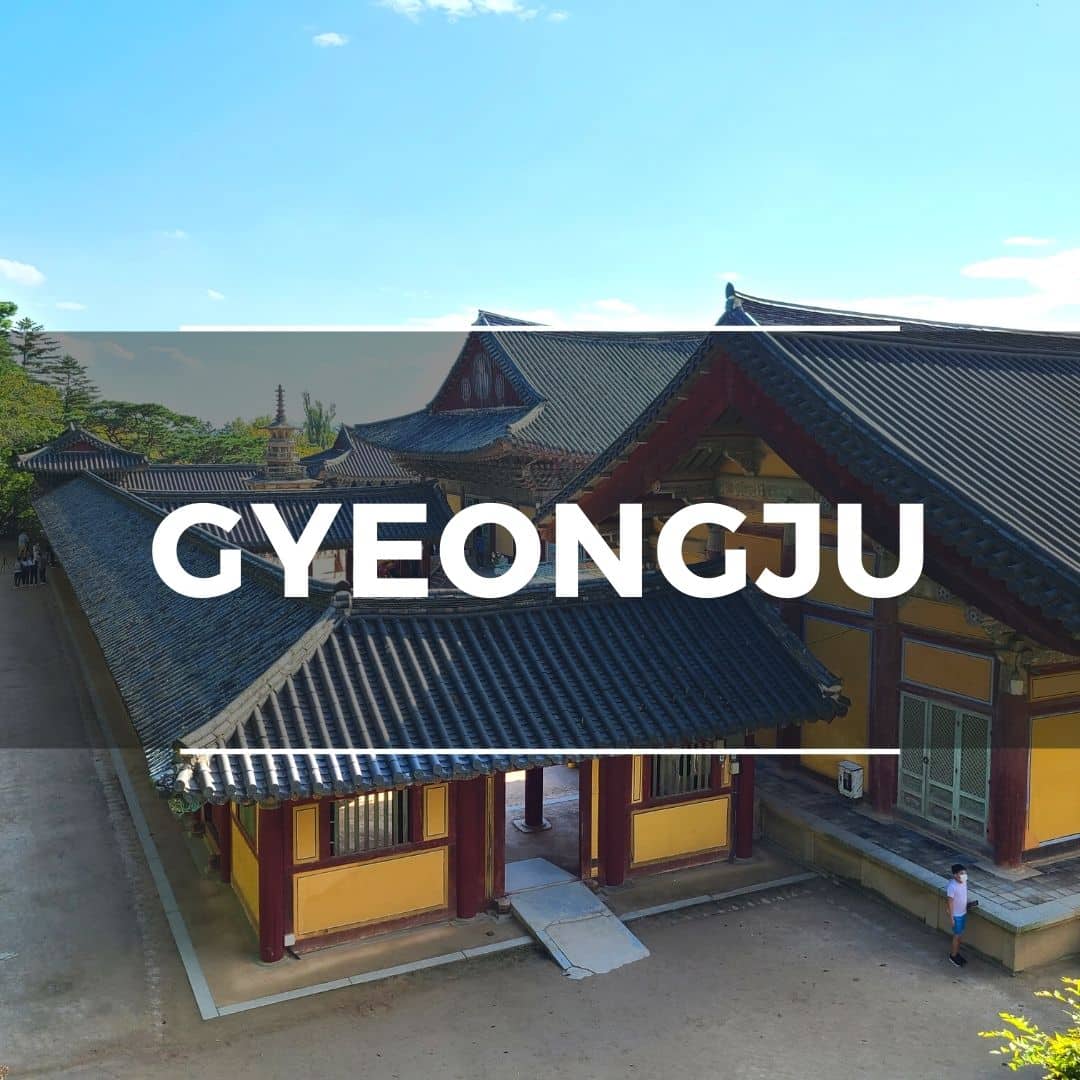
UNESCO City
Gyeongju is the former capital of the Silla Kingdom, part of the Three Kingdoms part of Korean history. These days, Gyeongju is an open air museum housing Korea’s finest history and monument. This UNESCO World Heritage City is a must-see for those who want to learn more about Korea’s deep cultural past.
Gyeongju is packed with temples, palaces, historical sights, and monuments. But it’s not just the history that draws the crowds, the city is an area of natural beauty, lined with cherry blossoms and shadowed by misty mountains.
This Full Day Tour of Gyeongju from Busan will take you around Korea’s open-air museum city, showing the top UNESCO sites along the way, while this Customized Private Tour of Gyeongju will allow you to choose where to go.
Here are 10 of the best Gyeongju attractions:
- Gyeongju Historic Area
- Bomun Lake Tourist Complex
- Bulguksa Temple & Seokguram Shrine
- Donggung Palace & Wolji Pond
- Yangdong Folk Village
- Cheomseongdae Astronomical Observatory
- Gyeongju National Museum
- Gyochon Traditional Hanok Village
- Woljeonggyo Bridge
- Gyeongju National Park
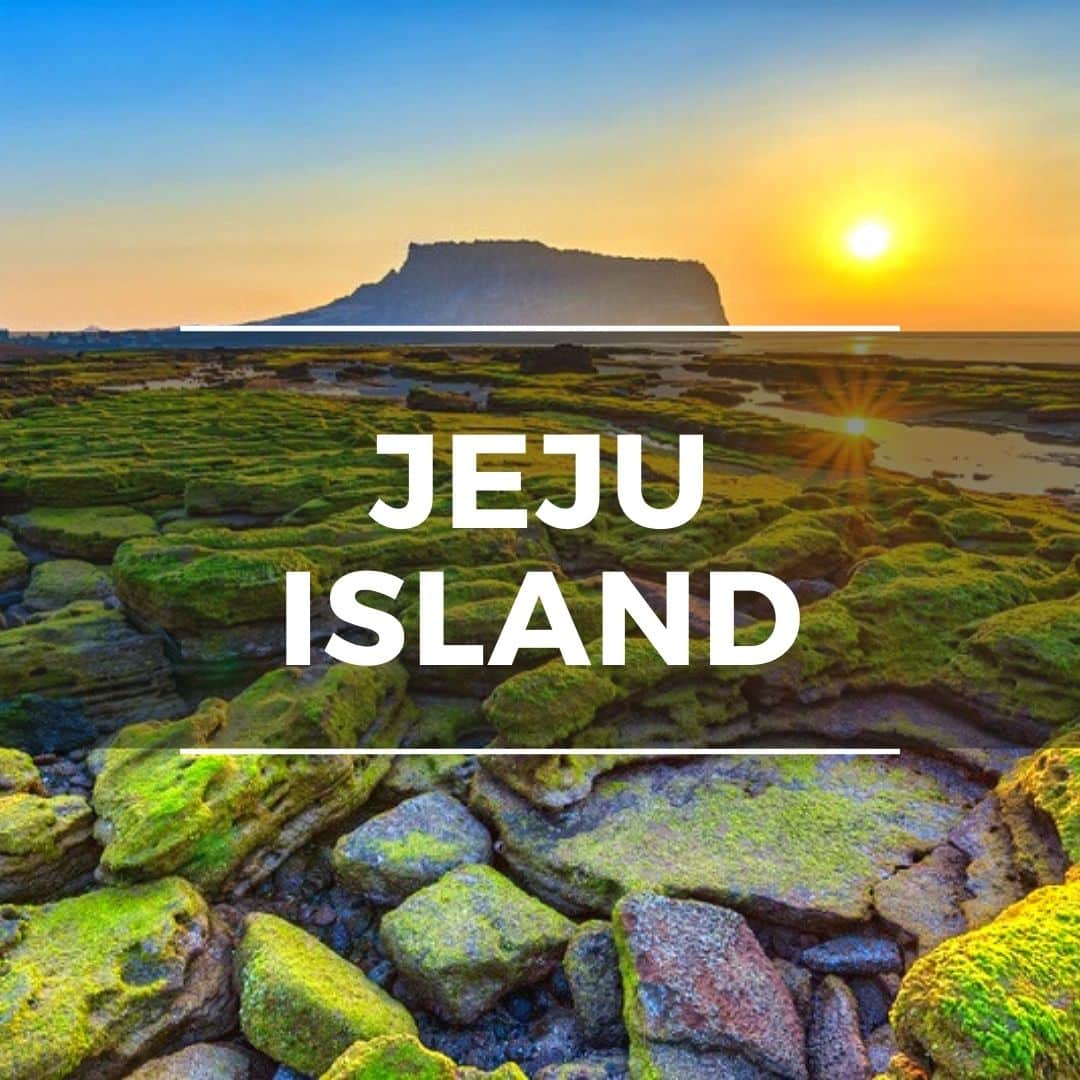
Natural Wonder
Jeju Island is Korea’s semi-tropical island that’s a popular vacation destination for locals and tourists alike. This area of outstanding natural beauty offers up rugged coastal walks, sandy beaches, green hills, and a volcano to hike up for those who enjoy a challenge. Culture and cafe lovers will also find Jeju Island a charm.
From snorkelling under the sea, to hiking above the clouds, sampling Jeju’s black pork BBQ, and drinking local green tea, there’s so many exciting activities, sights, tastes, and experiences waiting for you on Jeju Island.
This Full Day Tour of Jeju Island will show you some of the most incredible UNESCO World Heritage sites on Jeju’s East Coast, while this Customized Private Tour of Jeju Island will allow you to choose where to go.
Here are 10 of the best Jeju Island attractions:
- Seongsan Ilchulbong Sunrise Peak
- Jusangjeolli Hexagonal Lava Cliff
- Hallasan Mountain (Volcano)
- Hamdeok Beach
- Jeju Folk Village
- Hyeopjae & Geumneung Beach Areas
- Cheonjeyeon & Jeongbang Waterfalls
- Udo Traditional Island
- Yakcheonnsa Coastal Buddhist Temple
- O’Sulloc Green Tea Fields
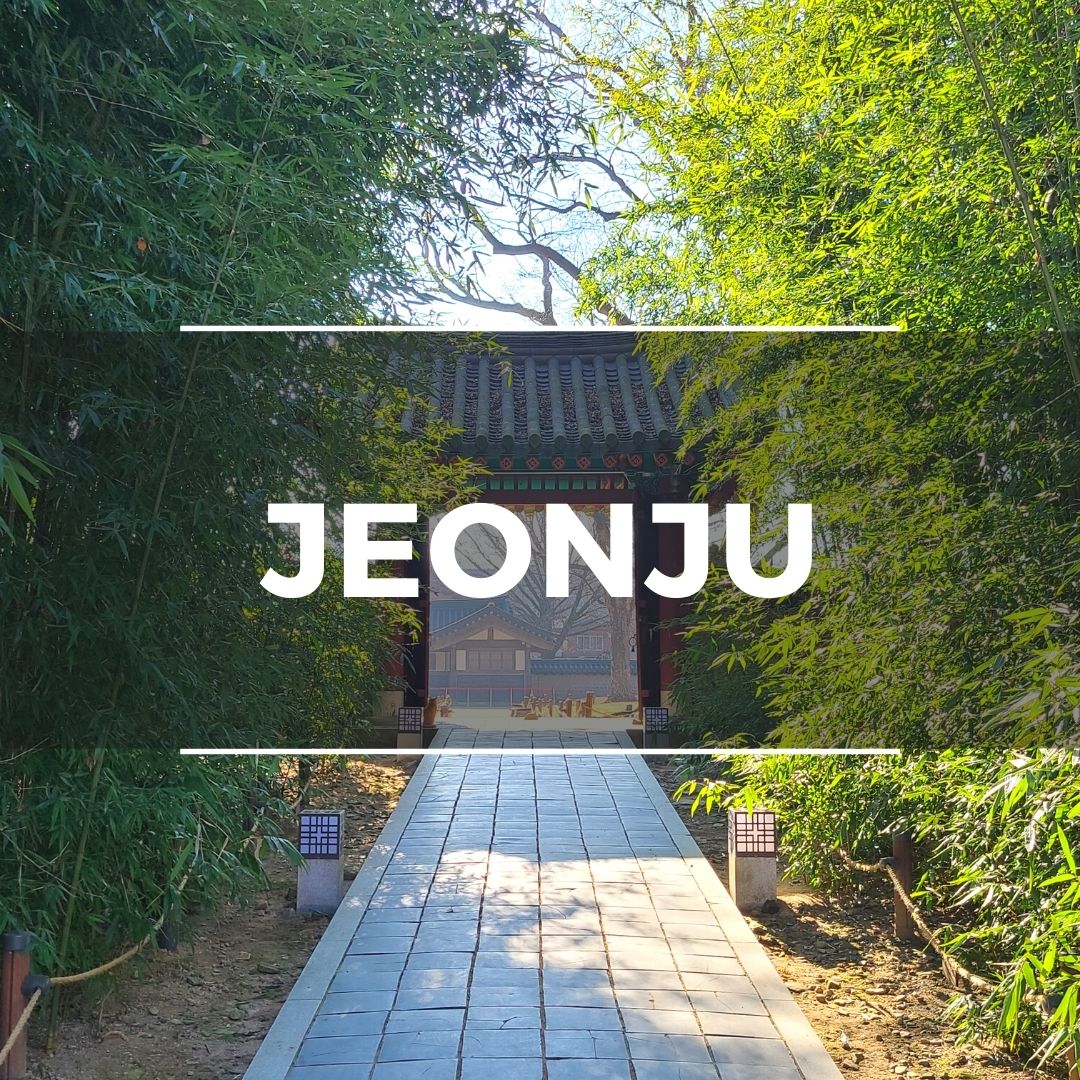
Traditional Korea
Jeonju is famous for its historical and cultural sights, including the sprawling Jeonju Hanok Village, packed with more than 700 traditional hanok houses. Jeonju’s many impressive sights are close to each other and perfect for a day trip from Seoul or Busan. You can even stay overnight in one of the traditional houses.
Jeonju is a tourist hotspot so there are plenty of things to keep travelers entertained and places to experience traditional Korean food and drinks. Be sure to check out the Jeonju bibimbap, one of Korea’s national dishes. Rent hanbok (traditional clothes), take lots of pictures, and see the sights.
This Full Day Tour of Jeonju will show you around the beautiful hanok houses and traditional Korean restaurants, while this 2-Day Tour of Jeonju includes an overnight stay in a hanok and lots of delicious Korean meals.
Here are 10 of the best Jeonju attractions:
- Jeonju Hanok Village
- Gyeonggijeon Shrine & Portrait Museum
- Jeongdon Catholic Church
- Jeonju Hyanggyo Confucian School
- Nambu Traditional Market
- Jaman Mural Village
- Omokdae Viewpoint
- Deokjin Park
- Hanbyeokdang Pavilion
- Taiji-ro & Hyangoyo-gil Shopping Streets
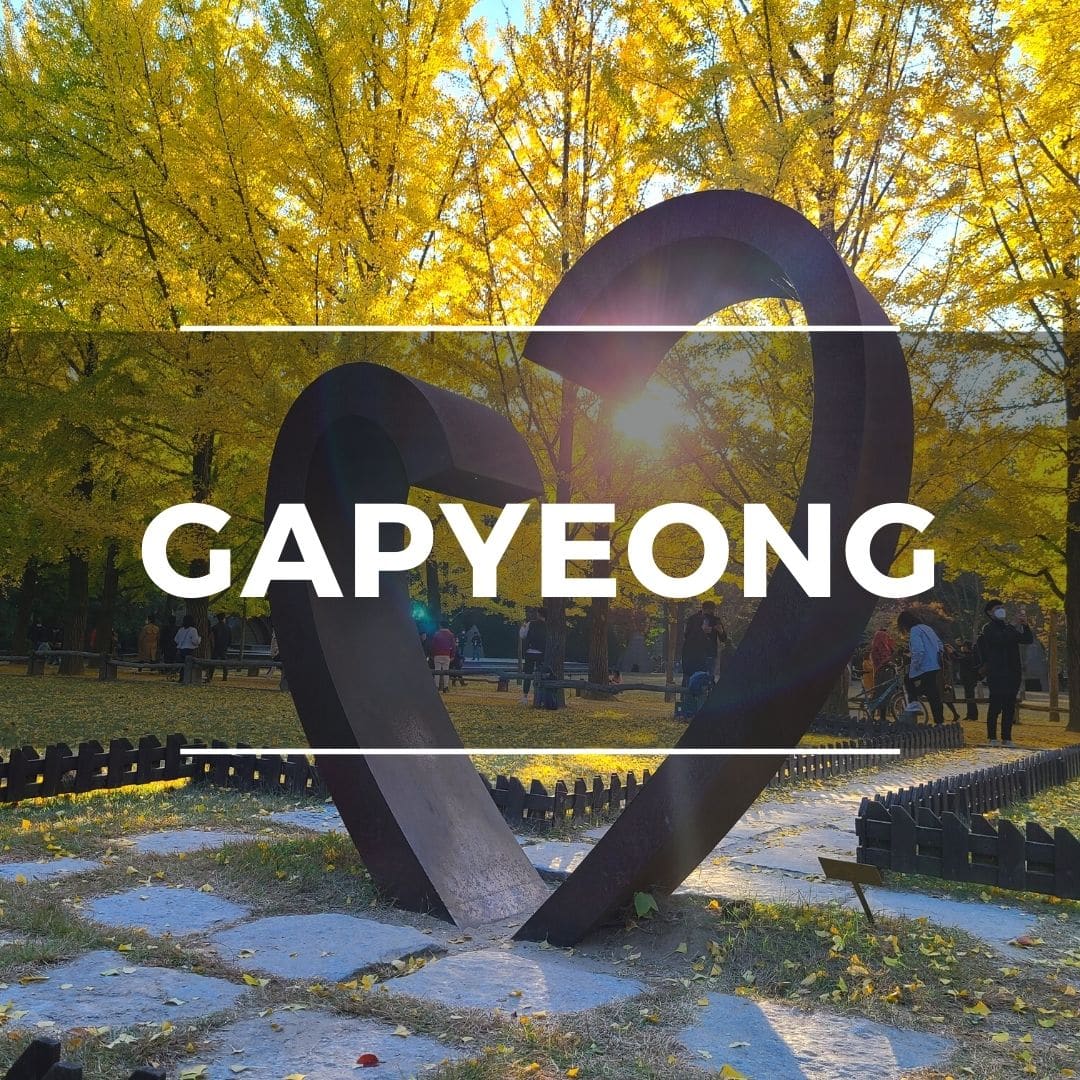
Rural Attractions
Gapyeong County is an area just outside of Seoul that’s home to several interesting attractions celebrating Korean and foreign culture. The lush green hills and blue rivers of Gapyeong make it a great place to immerse in Korean nature.
You’ll find some of the hottest day trip locations here. Explore Gapyeong County on a day trip from Seoul. You can see romantic tree-lined streets and cafes on Nami Island, explore one of Korea’s most beautiful gardens, take a trip to Petite France, and enjoy cycling through the hills on an abandoned railway track.
This Full Day Tour of Gapyeong will show you around Nami Island, Garden of Morning Calm, and the Rail Bike Park.
Here are 10 of the best Gapyeong attractions:
- Nami Island
- Garden of Morning Calm
- Petite France
- Ganchon Rail Bike Park
- Edelweiss Swiss Village
- Cheongpyeong Lake
- Jarasum Island
- Kalbongsan Recreational Forest
- Gapyeong Sledding Hills
- Nami Island Zip Line

There are loads of locations to visit in Korea that make for a perfect day trip from Seoul. Hop on a coach, train, or tour bus in the morning and explore one or more of these unique destinations.
Here are 10 of the best day trips from Seoul to discover on your next journey to Korea:
- DMZ (North Korean Border)
- Suwon Hwaseong Fortress
- Everland Theme Park
- Jeonju Historic City
- Seoraksan National Park
- Korean Folk Village
- Alpaca World
- Gwangmyeong Cave
Most travelers to Korea arrive at Incheon Airport and then travel into Seoul (it’s only 40 minutes away) to begin their journey. Seoul is certainly an incredible place to start traveling, but it definitely shouldn’t be your only destination. Korea has a lot to offer, including a lot of seasonal activities and events that you should take into consideration.
Spring and fall are the best seasons to visit Korea and during these times the traditional cities like Gyeongju and Jeonju look amazing. They’re covered with cherry blossoms or fall foliage and this creates some postcard-like scenes. Gapyeong area is packed full of natural sights to enjoy, so definitely check out these areas.
If you’re visiting during summer, head towards the coastal areas, including the north-east coastal towns of Gangneung & Sokcho, or the south-east coastal areas of Busan and the nearby islands, such as Geoje, Tongyeong, and Yeosu. You’ll find lots of winter activities to enjoy in these areas.
Winter is cold and dry and, ironically, a great time to visit Jeju Island. This semi-tropical island is warmer than the mainland, but still gets snow on the mighty Hallasan Mountain. You can sit on a sunny beach one day and then hike knee-deep in snow the next. Jeju is also famous for its citrus, with thousands of tangerine trees dropping their juicy fruits in early winter.

Where To Stay In Seoul
South Korea is truly a country of contrasts. From the bustling, modern city of Seoul , with cutting-edge designer buildings, VR labs, and AI robots, to peaceful UNESCO World Heritage cities like Jeonju and Gyeongju , there are many unique places to explore. If you’ve decided on Seoul, here are some of the best hotels that are well located and highly reviewed.
Choosing the best destinations to visit in Korea can be a challenge, especially if you don’t know what there is to see. You might not have heard of some of these destinations, which is not surprising. Korea is a country of undiscovered wonders that are waiting to be found.
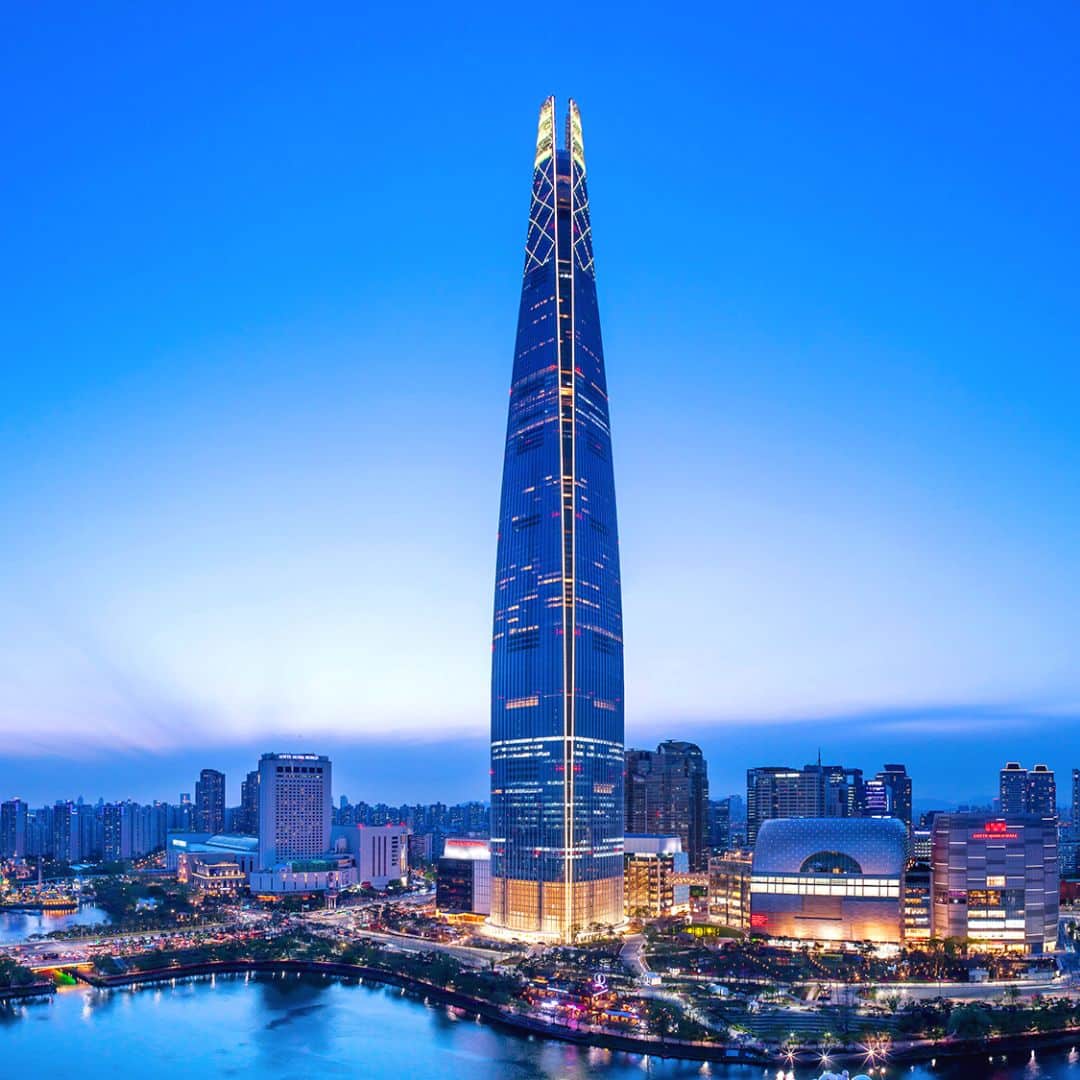
If you want the best Seoul has to offer, these luxury hotels are for you. Located in Seoul’s glitziest neighborhoods, these hotels are within walking distance of Michelin-starred restaurants, chic boutiques, galleries, museums, and the finest shopping experiences available.
Expect nothing but the best in terms of service and style at these luxury hotels. Silky soft sheets, immaculate rooms with the finest fixtures and fittings, and true 5-star service from the hotel staff. These hotels have sports, dining, and entertainment facilities to make you comfortable during your stay.
Airport transfers are available with these hotels, making your journey into and out of Seoul a breeze. Located in popular upmarket districts in Seoul, these neighborhoods have lots of local charm for you to discover, as well as allow easy access to other parts of the city with excellent transport options nearby.
Not only are these beautiful, comfortable hotels inside, but they are also located in some of the most iconic buildings or districts and provide amazing views over some of Seoul’s most interesting districts. The view from the first hotel is worth the cost alone.
Recommended Luxury Hotels In Seoul
Here are 3 of the best luxury hotels in Seoul that we recommend for an unforgettable stay in Korea’s capital:
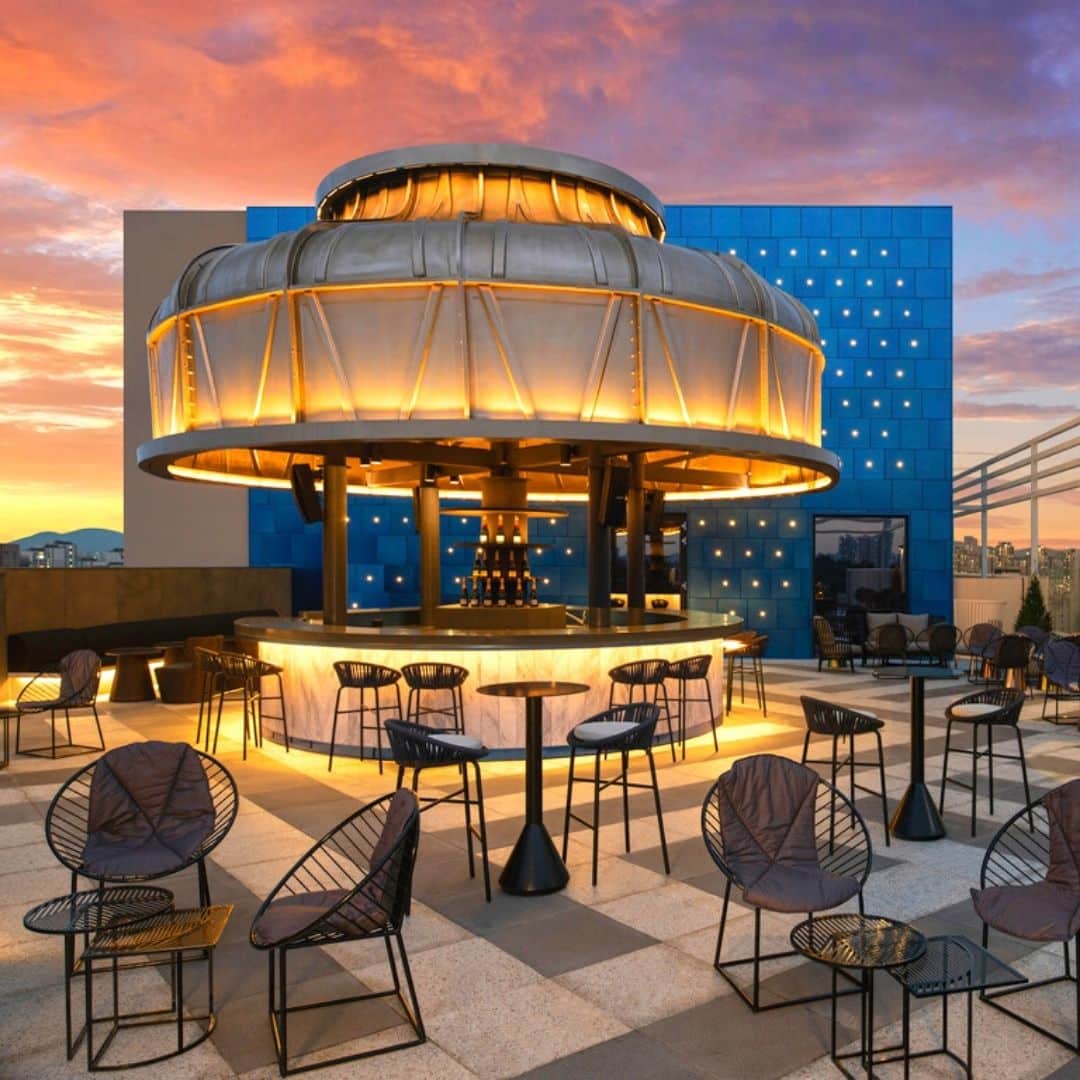
Families. couples and other travelers that want to experience the best of Seoul without breaking the bank can sleep easy with these mid-range hotel recommendations in some of Seoul’s trendy, vibrant districts, including Hongdae, Gangnam, and Myeongdong.
Encounter stylish accommodation in Seoul’s Hongdae districts, which is full of street culture and artistic scenes from the district’s eponymous Hongik University – one of Korea’s leading art centers.
Fashion lovers and shoppers will find lots to love in downtown Gangnam, with its wide streets and glassy storefronts bracketing narrow side streets and hidden delicacies.
Myeongdong is famous for its budget and mid-range accommodation options, including several hotels by the famous Lotte chain – one of Korea’s best mid-range brands.
Whichever mid-range hotel you choose in Seoul, you can be sure you’ll have fantastic city views, convenient subway access, and lots of unique cultural sights, sounds, and tastes to experience.
Recommended Mid-Range Hotels In Seoul
Here are 3 of the best mid-range hotels in Seoul that we recommend for an comfortable stay in Korea’s capital:
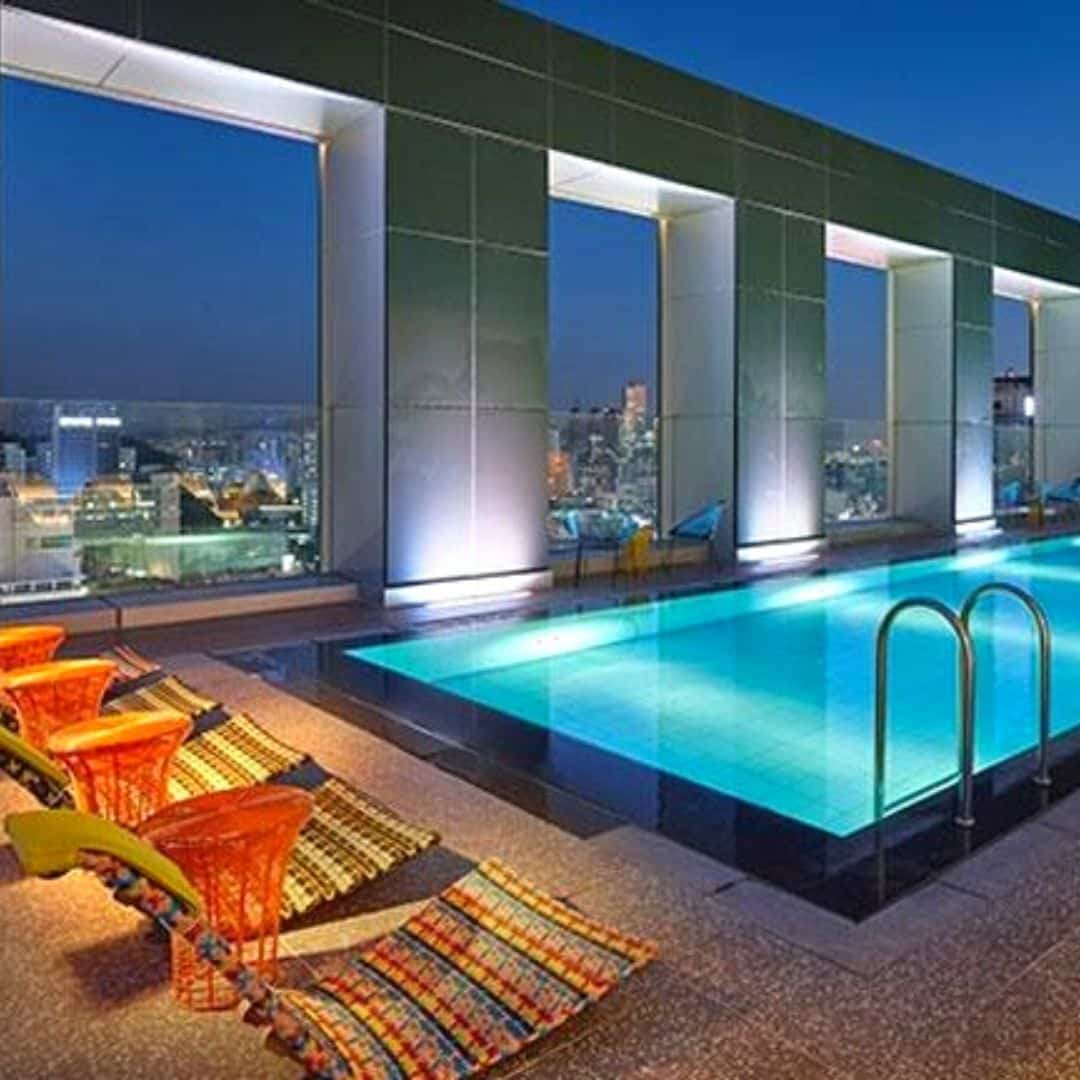
Seoul has a wealth of budget accommodation options that will help make your money go further. These hotels are all around $100 or less but offer the comfort and convenience that you’d expect to find in a mid-range hotel. One even has a beautiful rooftop pool.
Although these hotels are cheaper, don’t lower your expectations. You’ll always find great service in Korea. Save on sleeping to spend more on shopping, souvenirs, sights, and all the other fun things there are to do in Seoul.
These budget hotels in Seoul are also in great locations for shopping, enjoying local culture, and seeing the real side of Seoul and Korea. Hongdae offers bargain hunters the chance to get boutique fashion at market prices, Gangnam has plenty of cafes and cheap eats tucked away off the main avenues, and Myeongdong is a budget traveler’s paradise full of $1 street food and bargain souvenirs.
You won’t be disappointed with a night at any of these hotels. If you want to make your budget go further so you can spend more on some of the incredible day trips Seoul has to offer, definitely book a night at one of these hotels.
Recommended Budget Hotels In Seoul
Here are 3 of the best budget hotels in Seoul that we recommend for an affordable stay in Korea’s capital:

Korean Travel Tips
Korea is a unique country with a written language that looks nothing like English, fascinating etiquette rules , and an always busy lifestyle. Travelers may be lost trying to do even the simplest things.
These travel tips include the best options for staying connected, how to use public transportation easily and cheaply, great discount cards that will save you money as you travel, where to exchange money, and how to learn some basic Korean phrases for when you travel.
These essential Korean travel tips have been crafted by experienced travelers who love to save time and money. Only the best quality services and products are recommended here.
Here are our Korea travel essentials that’ll help you get around more easily, save you money, and let you get the most out of your trip.
Plan ahead now and you’ll have fewer troubles on your travels, giving you more time to enjoy your time in Korea.
If you’re traveling to Korea, you’re almost certainly going to want to get access to the internet to help you navigate, translate Korean, or even book tickets to attractions. Korea has one of the world’s best mobile internet and the prices are very reasonable. 5G mobile internet services are available across the country and Korea was one of the first to get the super-fast service. You won’t have problems connecting with a sim card or WiFi router when you travel.
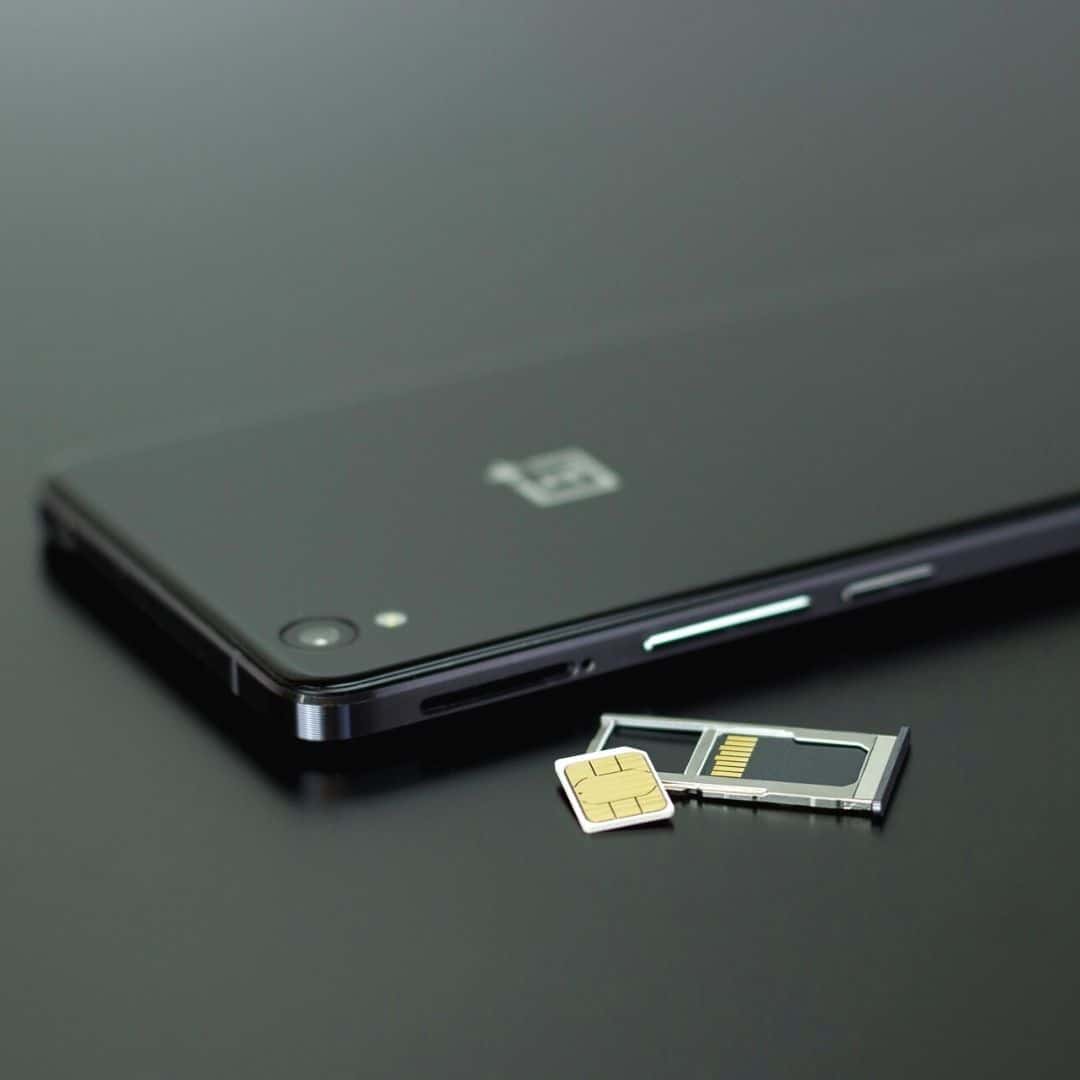
Sim Cards & Data Plans
A Korean sim card is a great way to get access to all your usual cellphone services when you travel to Korea. Sim cards come with data-only packages, or data and phone services combined.
Buying a Korean sim card will give you access to a Korean phone number, which is useful when using Korean apps. If you want to order food online in Korea, you need to have a Korean phone number to complete the order.
Korean Sim Card Costs
Prices start at W5,900 ($5) for a 1-day sim. You can also get 10-day sim cards (W34,700/$28) and 30-day sim cards (64,400/$52). These all come with unlimited data, domestic calls, and texts.
You can purchase a Korean Sim Card From Klook and collect it at the airport. This is a very convenient option as you can use it immediately to help navigate and check in back home.

Portable WiFi Routers
A Korean portable WiFi router will give you access to mobile internet throughout Korea by connecting to WiFi hotspots run by the major phone companies in Korea and comes with great coverage.
The major benefits of a portable WiFi router include a lower cost than a Korean sim card and also the ability to connect up to 3 devices to 1 router. That means that families and groups will be able to share the service.
Korean Portable WiFi Router Costs
The cost of a Korean portable pocket WiFi router is W3,200 ($2.60) per day. You can rent the WiFi router for as many days as you require and pay in advance and pay any excess days when you return it.
You can also purchase a Korean Portable WiFi Router From Klook and collect it at the airport. You can book online before you travel so that it’s guaranteed to be waiting for you.
Should I Get A Sim Card Or WiFi Router In Korea?
Both a sim card and WiFi router are great options for travelers to Korea and will almost guarantee a great reception for mobile internet. The choice between whether you should get a sim card or WiFi router in Korea really comes down to the costs involved and if you need a Korean phone number.
WiFi routers are cheaper and allow you to connect 3 devices, so they’re perfect for families. However, a sim card gives you a Korean phone number, which means you can call people and also register for Korean apps which require a phone number.
Check out our detailed article about the Best Sim Card & Portable WiFi options for traveling to Korea.
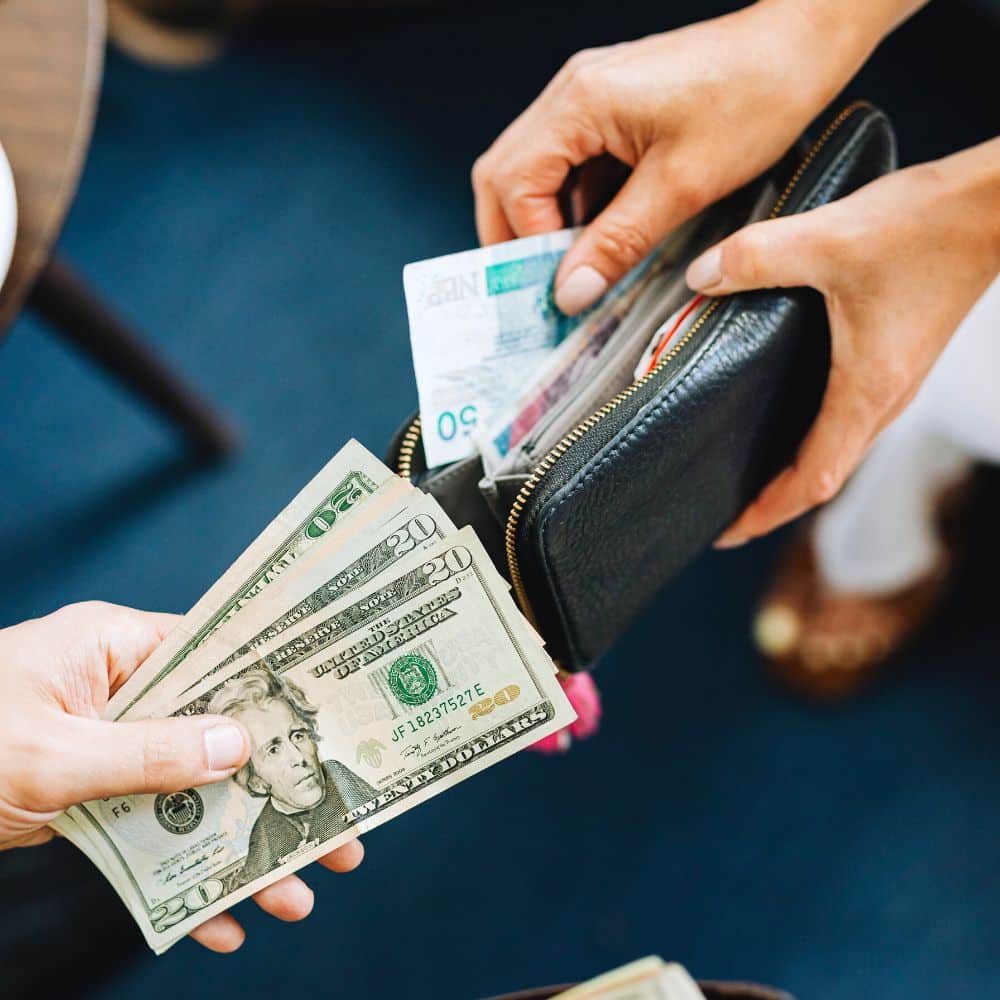
Korea is a safe, modern country and one that has pushed hard for the mass adoption of cards. Almost every location that deals with money is required to accept card payments. This is great news for travelers to Korea as you can use a card to pay for meals out, entrance tickets, trains, and lots more.
Cash is still needed for some things, such as topping up transportation cards like the T-Money Card (more on that soon) and for paying for small things like street food. Please note, as Korea doesn’t have a tipping culture, you don’t need cash for leaving a tip. In fact, if you try to leave a cash tip, it’ll be returned to you in most places.
Read on to find the best tips to avoid getting ripped off when exchanging money and how to pay the lowest fees when you use a card to pay in Korea. Be a smart traveler and save more money for shopping and souvenirs.
Korean Money Exchange Options
Once you arrive in Korea, there are several options for exchanging money. First, you can exchange money at a money changer in tourist areas such as Myeongdong. These money changers used to have the best rates in Seoul.
However, a better option these days is to use the currency exchange machines from WOW Exchange. These machines are located all over Seoul’s most popular tourist spots, stations, and hotels. They allow you to exchange foreign cash directly to Korean won, with better rates than at the airport. You can also use these machines to claim a tax refund for your shopping before heading to the airport. Both options require a passport.
Should I Change Money At The Airport?
Exchanging money at the airport is easy and convenient as you can instantly get cash to use for shopping, transportation, and general use. However, the exchange rate at the airport is usually much worse than you’ll find in other places in Korea, as mentioned previously. If you need cash as soon as you land, withdraw a small amount ($50) and then exchange the rest in Seoul.

Travel Money Cards For Korea
While cash is useful and familiar when traveling, a much better option is to use a travel money card (also known as a currency card). Travel money cards, such as the Wise Travel Money Card, allow you to pay for travel expenses without the need to carry cash or convert money.
A travel money card offers the convenience of using a credit card without high fees that a regular bank could charge. It also allows you to withdraw cash from an ATM without a fee (up to a limit), so you can avoid carrying any cash on the flight or using a money exchange. The exchange rate is the mid-market rate, meaning it’s better than you’ll find even at the money exchanges listed before.
Can I Use My Bank Card In Korea?
Credit cards are widely accepted in Korea. Visa and Mastercard users shouldn’t face a problem, but other cards aren’t as widely accepted. Debit cards and cash withdrawals might not work depending on the bank. Your bank may charge a fee when using it overseas, or give a bad exchange rate. Check with your bank before traveling.
The best option for travel money in Korea is to have a mixture of cash and cards, with a backup credit card just in case. Taking some USD with you is always a good option as you can find plenty of places to exchange it to Korean won and probably at a better rate than you’ll get in the US. If you want to withdraw money in Korea, look for the global ATMs in tourist areas.
Taking a travel money card will be safer, cheaper, and more convenient than relying on your own bank or credit card, too. These cards offer competitive rates and are widely accepted around the world so you can use them to visit other countries, too. If you use a travel money card and it gets lost or stolen, you can freeze the card instantly with the app and not have to worry about losing the balance on the card.
When you visit Korea, you’ll notice that most people pay for goods with a card or payment app, even for small purchases like a bottle of water. Unfortunately, the payment apps that are common in the US, such as Apple Pay or Google Pay, aren’t available in Korea. Korean apps, such as Kakao Pay, require a Korean bank account, and therefore aren’t an option for travelers.
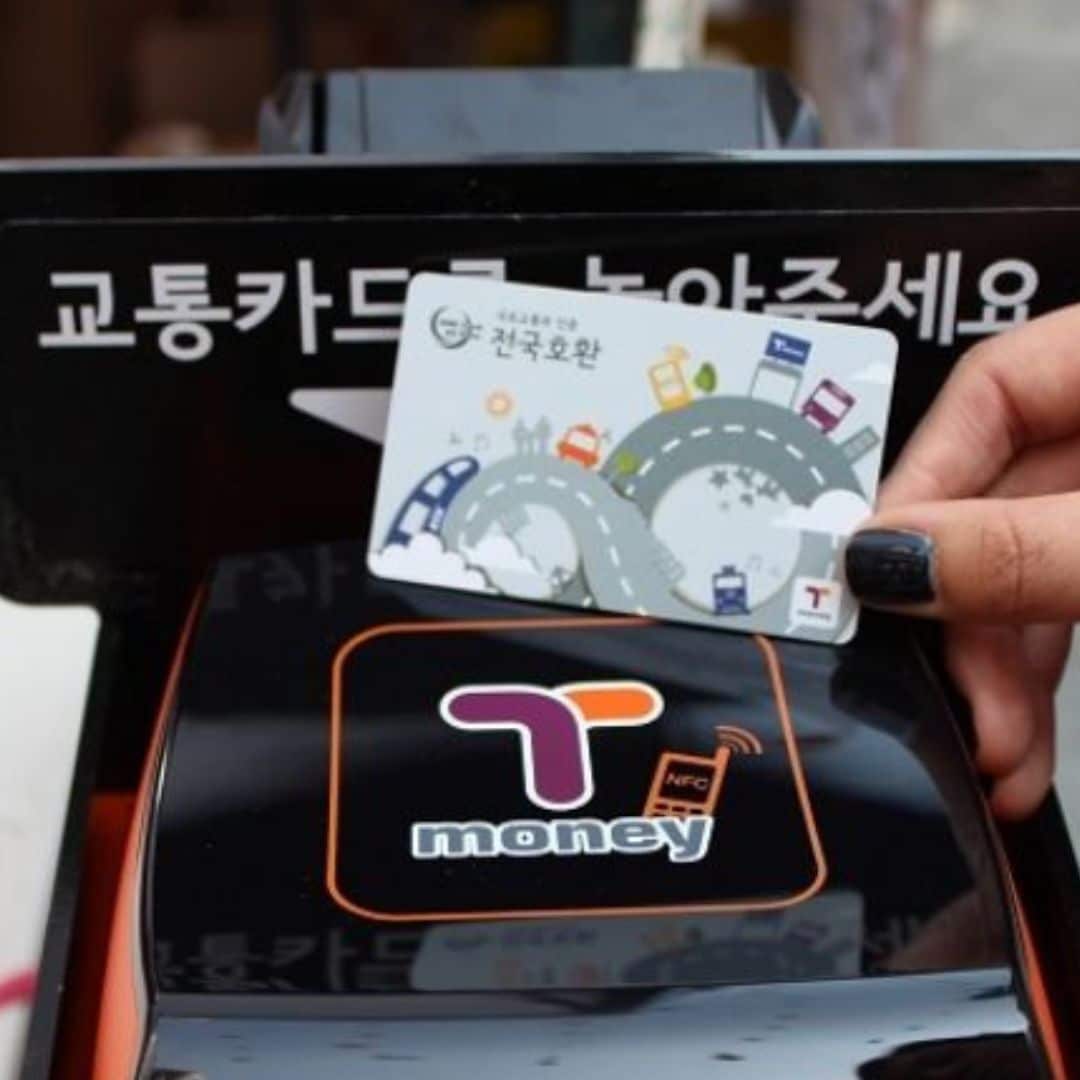
T-Money For Public Transport
The T-Money Card is an essential purchase for every traveler to Korea. The T-Money Card is a transportation card that allows contactless travel on Korea’s buses and subways. Simply buy a T-Money Card, top-up the card, then use it to travel.
Not only is this transportation card really convenient, it also saves you money. You’ll receive a discount on every bus or subway journey when you pay with the T-Money Card. These discounted fares are available in all cities across Korea, not just Seoul.
This isn’t the only use of the T-Money Card. You can also use to buy a coffee from Starbucks, get lunch in McDonald’s, shop for Korean cosmetics, and even to watch a baseball game. It’s a very useful card that can be used anywhere you see the T-Money Card.
You can get the T-Money Card in Korea from subway stations and at certain transport centers, including Seoul Station and Incheon Airport. The card costs 2,500 KRW. You can buy the card with a credit card, but to top-up the card, you need to use cash. If you buy a Discover Seoul Pass, this card includes the T-Money functions.
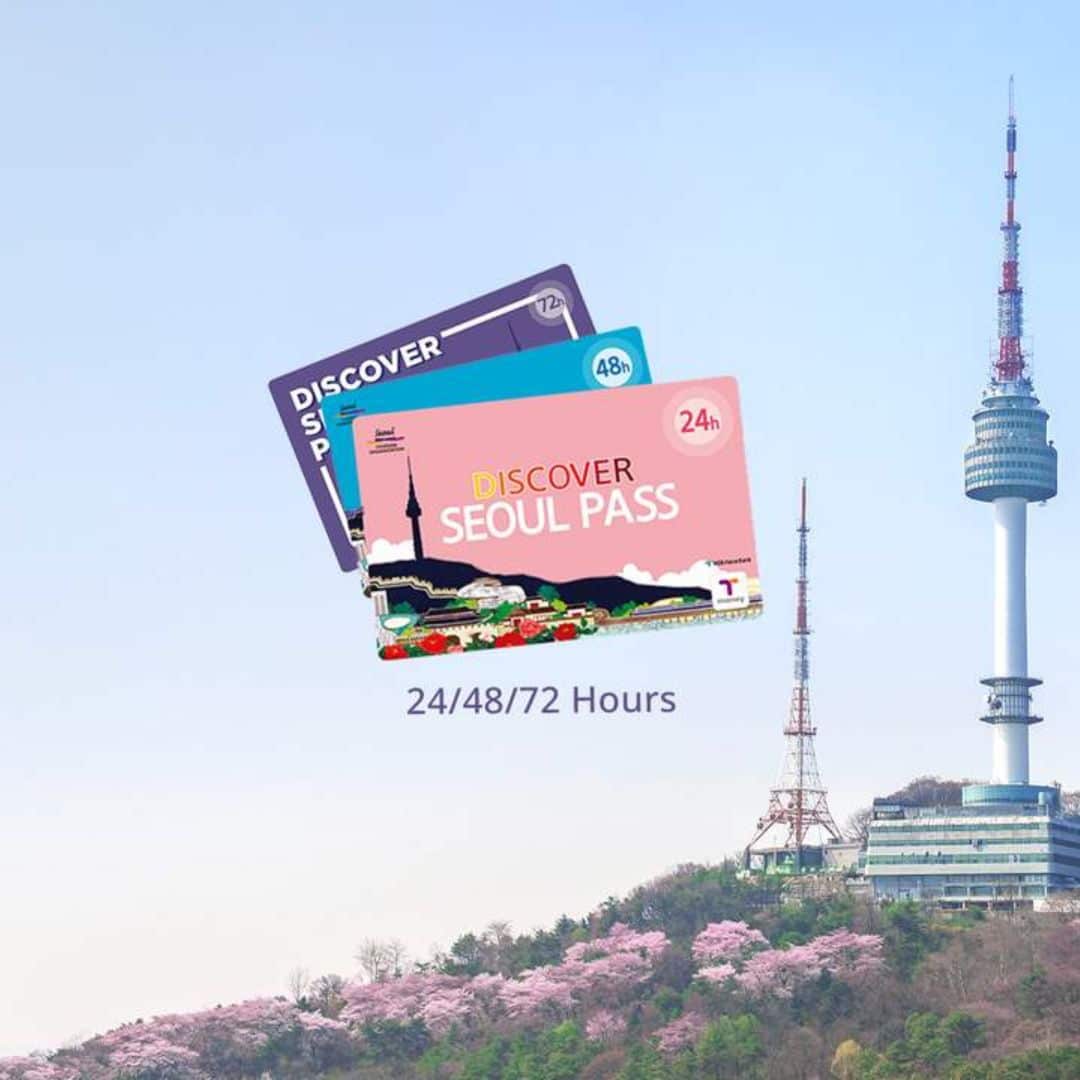
Save With The Discover Seoul Pass
Travelers to Seoul have a lot of options for incredible attractions to enjoy and experience. However, tourists, especially families, can find that the cost of these attractions quickly add up, especially when you are visiting many locations in a short time.
A great way to save money when you travel in Seoul is to buy a Discover Seoul Pass – a special card that offers you big savings on some of Seoul’s top attractions, as well as other benefits.
If you plan to visit Seoul’s Royal Palaces, N Seoul Tower, Lotte World Adventure Theme Park, the COEX Aquarium, Alive Museum, Seoul Zoo, or other premium attractions, you can gain free entry when you purchase a Discover Seoul Pass.
Not only that, you can also get a free river cruise, free hanbok rental, free ride on the Airport Express from Incheon Airport to Seoul, free City Tour Bus Ride, free T-Money Card and lots more.
The Discover Seoul Pass is valid for 24 | 48 | 72 hours and is valid from the moment you first use it until that many hours later.

Things To See & Do In Korea
If you want to build your own itinerary for South Korea, then this section of the South Korea Travel Guide will provide the building blocks you need to craft the perfect trip.
South Korea is a country packed with famous landmarks and sights, unique culture – modern & historical, family-fun activities, outdoor adventures, cozy cafe districts, and natural wonders. There’s more to do in Korea than you could imagine and it’s impossible to explore it all in one trip. Try to plan your itinerary by cities and locations. For example, plan your day in Seoul stay by district.
Here are some of the best things to see and do in South Korea, broken down into different themes so you can find things that interest you the most. The location of each of these attractions is included, too, so you can create a city by city itinerary, seeing the best South Korea has to offer.
These attractions are available all year round so whenever you go to Korea, you can enjoy them. There are plenty of things to see and do in Korea that only happen during certain seasons. Check out the Season Guide in this South Korea Travel Guide for more information about Korean festivals and seasonal events.
Here are 10 of the best Korean landmarks:
- Lotte World Tower (Seoul)
- Bukchon Hanok Village (Seoul)
- Nami Island (Gapyeong)
- Banwol ‘Purple Island’ (West Coast)
- N Seoul Tower (Seoul)
- Dongdaemun Design Plaza (Seoul)
- Seoraksan National Park (Gangwon Province)
- Hwaseong Fortress (Suwon)
- Cheonggyecheon Stream (Seoul)
- Gamcheon Cultural Village (Busan)
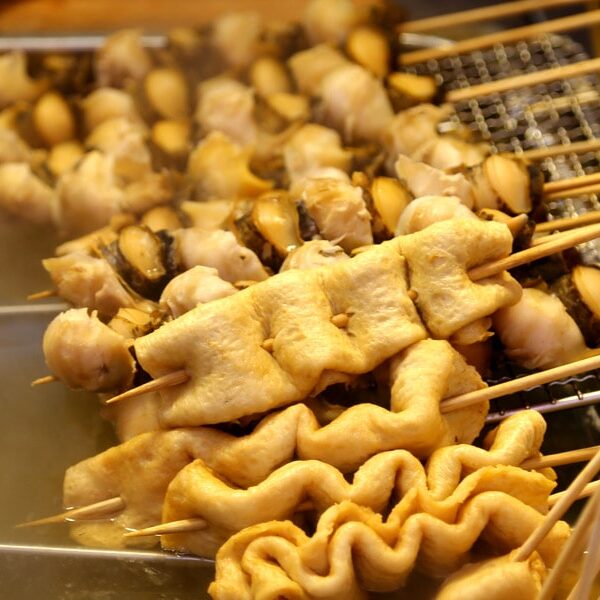
Why travel to a diverse country such as Korea and not embrace the local culture? Here are 10 of the best unique Korean experiences you can only enjoy fully in Korea. Be brave, try something new and create lasting memories of your Korean adventure.
Here are 10 of the best uniquely Korean experiences:
- Wear Traditional Korean Hanbok (Royal Palaces)
- Sing In A Korean Noraebang (Everywhere)
- Sleep In A Korean Hanok House (Hanok Villages)
- Visit The Kimchi Museum (Seoul)
- Eat Street Food (Traditional Markets)
- Experience A Korean Temple Stay (National Parks)
- Drink Makgeolli – Korean Rice Wine (Everywhere)
- Visit The World’s Most Dangerous Border – The DMZ
- Relax In A Korean Sauna (Everywhere)
- Visit A Korean Green Tea Field (Boseong, Jeju)

Here are 10 of the best Korean historic sights:
- Gyeongbokgung Palace (Seoul)
- The Secret Garden (Seoul)
- Bulguksa Temple (Gyeongju)
- Jeonju Hanok Village (Jeonju)
- Seoul Fortress Walls (Seoul)
- Haedong Yonggungsa Temple (Busan)
- Andong Hahoe Folk Village (Andong)
- Gyeongju Historic Area (Gyeongju)
- Baekje Historic Area (Gongju, Buyeo)
- Jangsaengpo Whale Museum (Ulsan)

Here are 10 of the best modern K-Culture spots:
- K-Pop Headquarters (Seoul)
- HYBE Insight (Seoul)
- COEX Artium (Seoul)
- K-Style Hub (Seoul)
- Hongdae Shopping Street (Seoul)
- Hallyu K-Star Road (Seoul)
- Asia Culture Center (Gwangju)
- Busan International Film Festival Square (Busan)
- MBC World Theme Park (Seoul)
As you’ll see, there’s just so much to see and do in Korea. You could spend a whole week in Seoul and not run out of exciting activities to do and sights to explore. Our advice is to try to avoid planning to do too many things in one day and adding in plenty of free time.
There’ll be many random things that catch your eye, such as a curious side street, or your nose, like the delicious smells from a food stall. Make sure you’ve got flexibility in your schedule to investigate these surprises and to take a rest if you need to – walking and traveling for days on end can get tiring.
Korea comes alive at night and markets and city streets are often best explored after the sun goes down. Drab concrete buildings come alive with neon signs, lanterns, and electric lights and are quite a sight to be seen. Visit popular tourist attractions such as the royal palaces and hanok villages during the morning as they’ll be less crowded.
If you plan to visit the Secret Garden in Changdeokgung Palace (you really should!), tickets are available on the day and sell out fast. Getting to these places early can guarantee you get tickets, see the sights unobstructed, and have time in the evening to soak up the night life and culture.
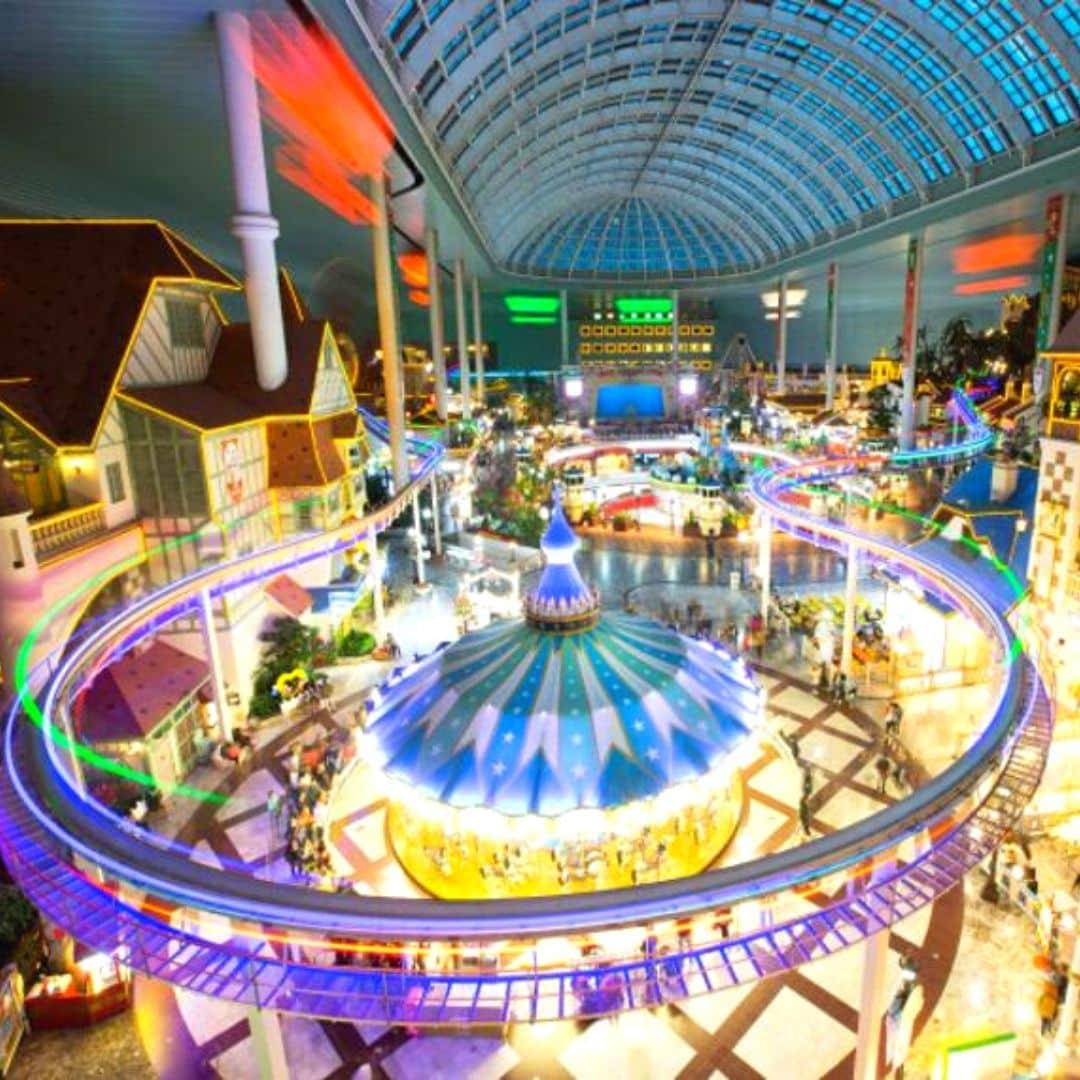
Here are the 10 best family-friendly activities in Korea:
- Nami Island & Garden of Morning Calm (Gapyeong)
- Seoul Grand Park & Zoo (Seoul)
- Lotte World Adventure (Seoul, Busan)
- Alive Museum & Dynamic Maze (Seoul)
- Seoul Children’s Grand Park (Seoul)
- Seoul Children’s Museum (Seoul)
- Everland & Caribbean Bay Theme Parks (Near Seoul)
- Sea Life Busan Aquarium
- Jeju Dinosaur Island (Jeju)
- Alpaca World (Gangwon Province)
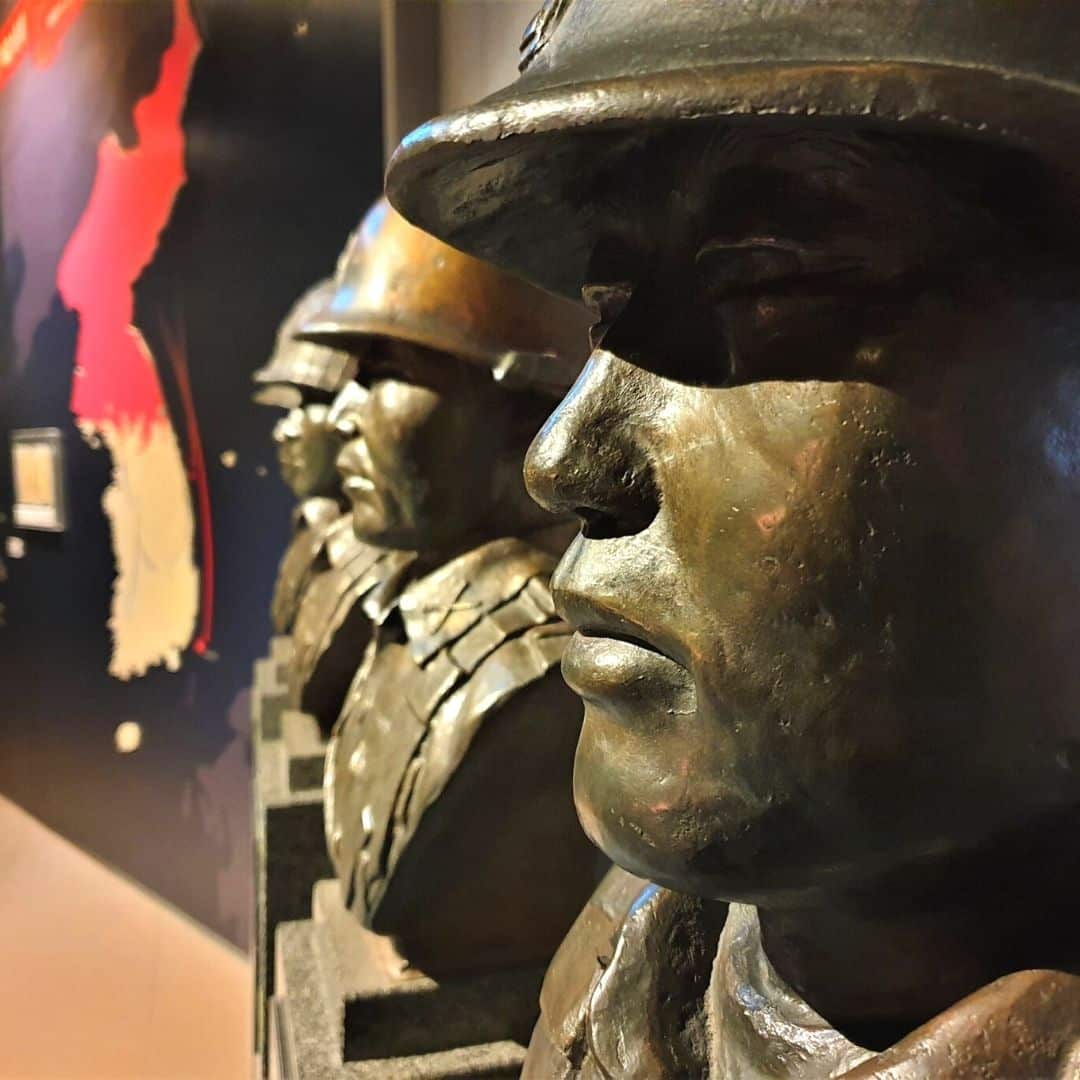
Here are the 10 best museums & galleries in Korea:
- National Museum of Korea (Seoul)
- Seoul Museum of Art (Seoul)
- Gyeongju National Museum (Gyeongju)
- War Memorial of Korea (Seoul)
- National Folk Museum of Korea (Seoul)
- National Maritime Museum (Busan)
- Seodaemun Prison History Museum (Seoul)
- Seoul Museum of History (Seoul)
- Museum Kimchikan (Seoul)
- Daegu Art Museum (Daegu)

Here are the 10 best cafe areas in Korea:
- Ikseondong Hanok Village (Seoul)
- Gyeongui Line Hongdae (Seoul)
- Samcheondong Cafe Street (Seoul)
- Jeonpo Cafe Street (Busan)
- Hwangnidan-Gil (Gyeongju)
- Gangneung Coffee Street (Gangneung)
- Sinsa-Dong / Garosugil Road (Seoul)
- Jukjeon Cafe Street (Seoul)
- Hwaseong Haenggung Area (Suwon)
- Kim Kwang Seok Gil Street (Daegu)

Here are 10 of the best Korean markets and shopping areas:
- Gwangjang Market (Seoul)
- Myeongdong Market Area (Seoul)
- Jagalchi Fish Market (Busan)
- Centum City Mall (Busan)
- IFC Mall (Seoul)
- Starfield COEX Mall (Seoul)
- Nambu Market (Jeonju)
- Seomyeong Underground Shopping Center (Busan)
- Seogwipo Maeil Olle Market (Jeju)

Here are 10 of the best natural sights in Korea:
- Hallasan Mountain (Jeju)
- Jirisan National Park (Jeollanam Provice)
- Seoraksan National Park (Gyeonggi Province)
- Seongsan Ilchulbong Sunrise Peak (Jeju)
- Damyang Juknokwon Bamboo Forest (Damyang)
- Boseong Green Tea Plantation (Boseong)
- Haeundae Beach (Busan)
- Udo Island (Jeju)
- Hwaamdonggul Cave (Gangwon Province)

Travel Itinerary For Korea
When planning a travel itinerary for South Korea, it’s best to think about what kind of experience you want when you travel to South Korea and build your itinerary from that. What kind of traveler are you and what do you want to take away from your Korea trip? Are you planning a trip for yourself, for your family, or as a romantic escape?
Do you want to learn about traditional Korean culture and history? Are you visiting to immerse yourself in modern Korean culture and maybe meet your idols? Are you planning to get out into Korea’s mountains to hike and join a Buddhist Temple Stay? Or are you going to eat, drink, shop, and make the most of Korea’s discounted goods? Or all of the above?
This section of this South Korea Travel Guide will offer some of the best one-week and two-week itineraries for South Korea. These itineraries are rough guides, created to help you begin planning your trip. Feel free to pick and choose the parts from them that you like to create your own travel itinerary for South Korea. We’ll be adding more great itineraries soon, be sure to check back for the latest ideas.
Classic 1 Week Itinerary For Korea: Seoul, Busan, Gyeongju
This is one of the most popular of the 1-week itineraries for South Korea and will take you to the most famous and interesting places that are top of most travelers’ South Korea bucket lists. Starting in Seoul, Korea’s capital, you’ll explore the best sights in this city before taking a day trip out to the lovely Gapyeong County to get a breath of fresh Korean countryside air.
From day 4, zip across the whole of Korea on the high-speed KTX train and explore Korea’s second city, Busan. See coastal temples, fish markets, wide beaches, and more in Busan before taking a day trip to Korea’s historic UNESCO World Heritage City, Gyeongju. On the last day, it’s time to return to Seoul to pack your bags full of the best souvenirs and snacks and say farewell in the highest part of the city.

Afternoon : Dressed in your hanbok, enjoy more traditional Seoul with a walk around the narrow streets of the Bukchon Hanok Village. Visit traditional Korean teahouses, galleries, markets, and more.
Evening : Check out the stalls and shops of artsy Insadong, contemplate Jeogyesa Temple, and take an evening stroll along the Cheonggyecheon Stream before dining in Myeongdong or the Jonggak Avenue of Youth. This Full Day Tour of Seoul will show you some of the hottest spots in the city, while this Customized Private Tour of Seoul will allow you to choose where to go.
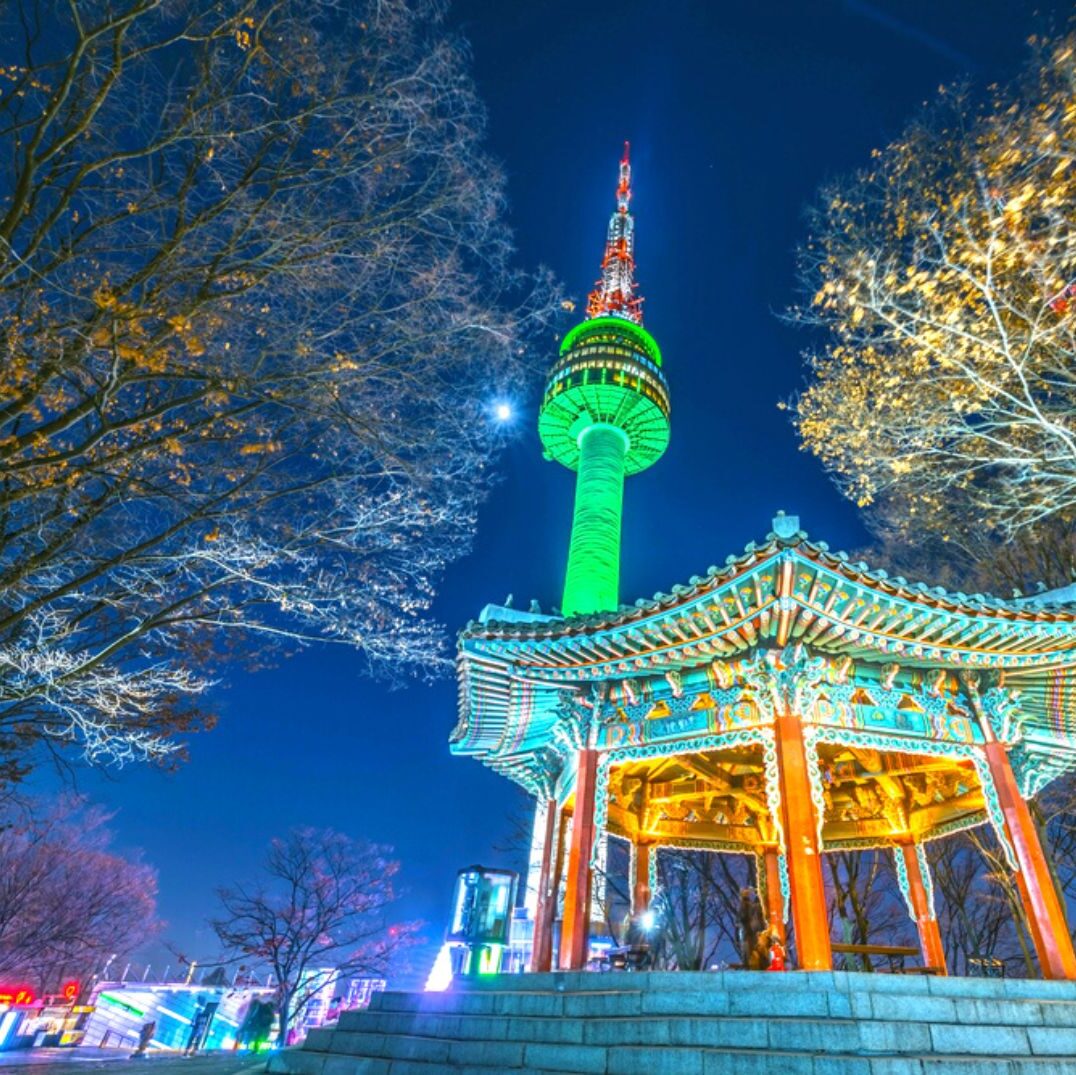
Afternoon : Head back to central Seoul and witness the bustling sights and delicious smells of Seoul’s traditional Gwangjang and Dongdaemun Markets. Try delectable Korean street foods here.
Evening : Take the Namsam Cable Car to the top of Namsan Mountain and watch the sunset from N Seoul Tower. See some of Seoul’s fortress walls before heading back down to go late-night shopping at Myeongdong Market.

Afternoon : Zip line or sail over to Nami Island for impressive nature, bike rides, leafy walks, and cozy cafes. See popular scenes from K-dramas and even some wild animals, like deer and rabbits.
Evening : Pedal your way along an abandoned railway at the Gangchon Rail Bike Park before heading back to Seoul for fine dining in Gangnam’s Apgujeong Rodeo district.
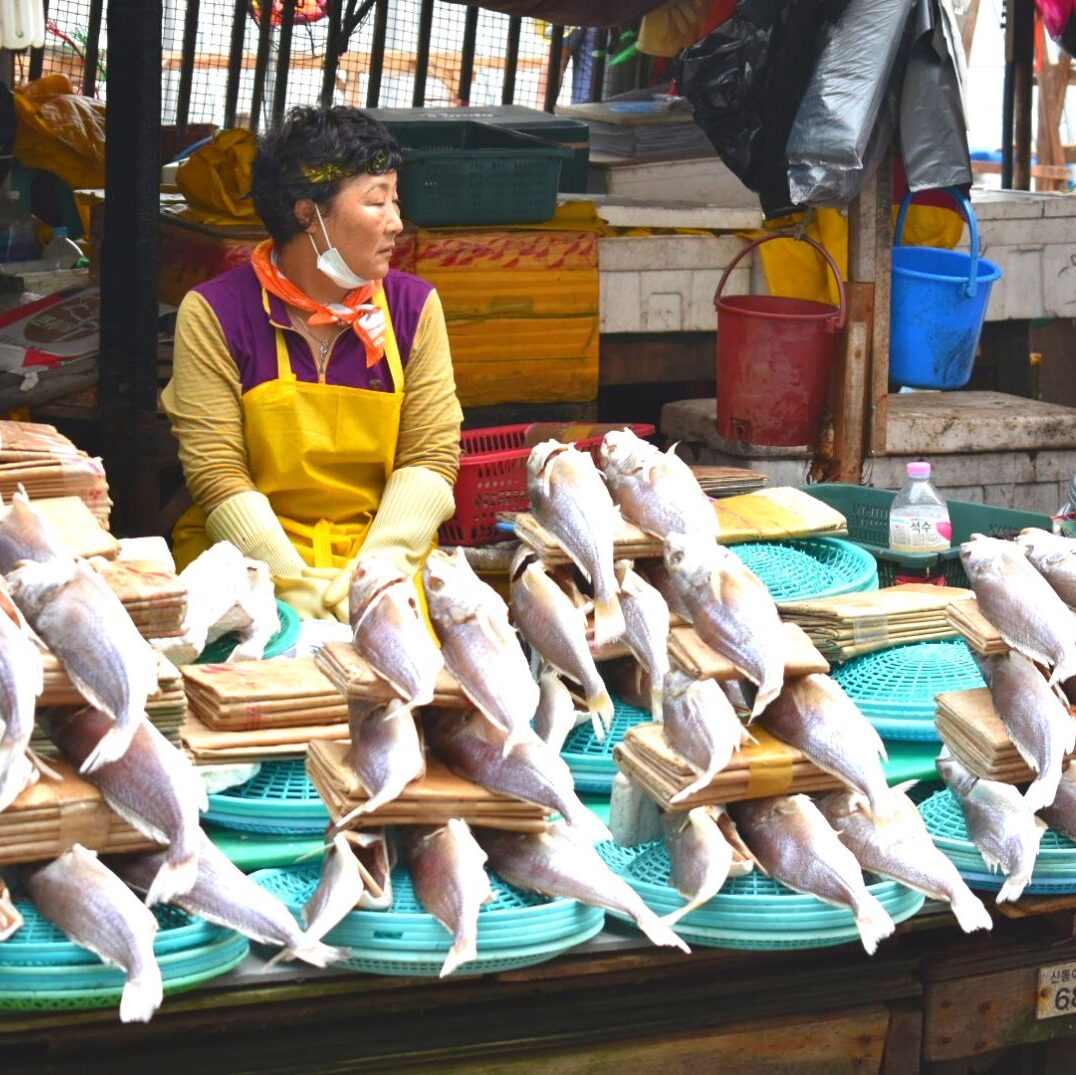
Afternoon : Head to the Nampo-dong near Busan Station and visit Jagalchi Market for a fresh seafood lunch. Then explore cosy Bosu-dong Book Alley or take a taxi to the Huinnyeoul Culture Village.
Evening : Take the subway up to Haeundae Beach for Busan’s best night-scenes. Grab dinner overlooking the beach, or at one of the market stalls. If you’re feeling brave, visit BUSAN X the SKY to see breathtaking views over the coast and city.

Afternoon : Head to the Gyeongju Gyochon Traditional Village for a traditional meal and to see the stunning Woljeonggyo Bridge. Gyeongju National Museum is nearby, too.
Evening : See the tranquil night views of Wolji Pond where palace buildings reflect perfectly in still waters. Stop at Hwangnidan-gil area for dinner and drinks before returning to Busan.
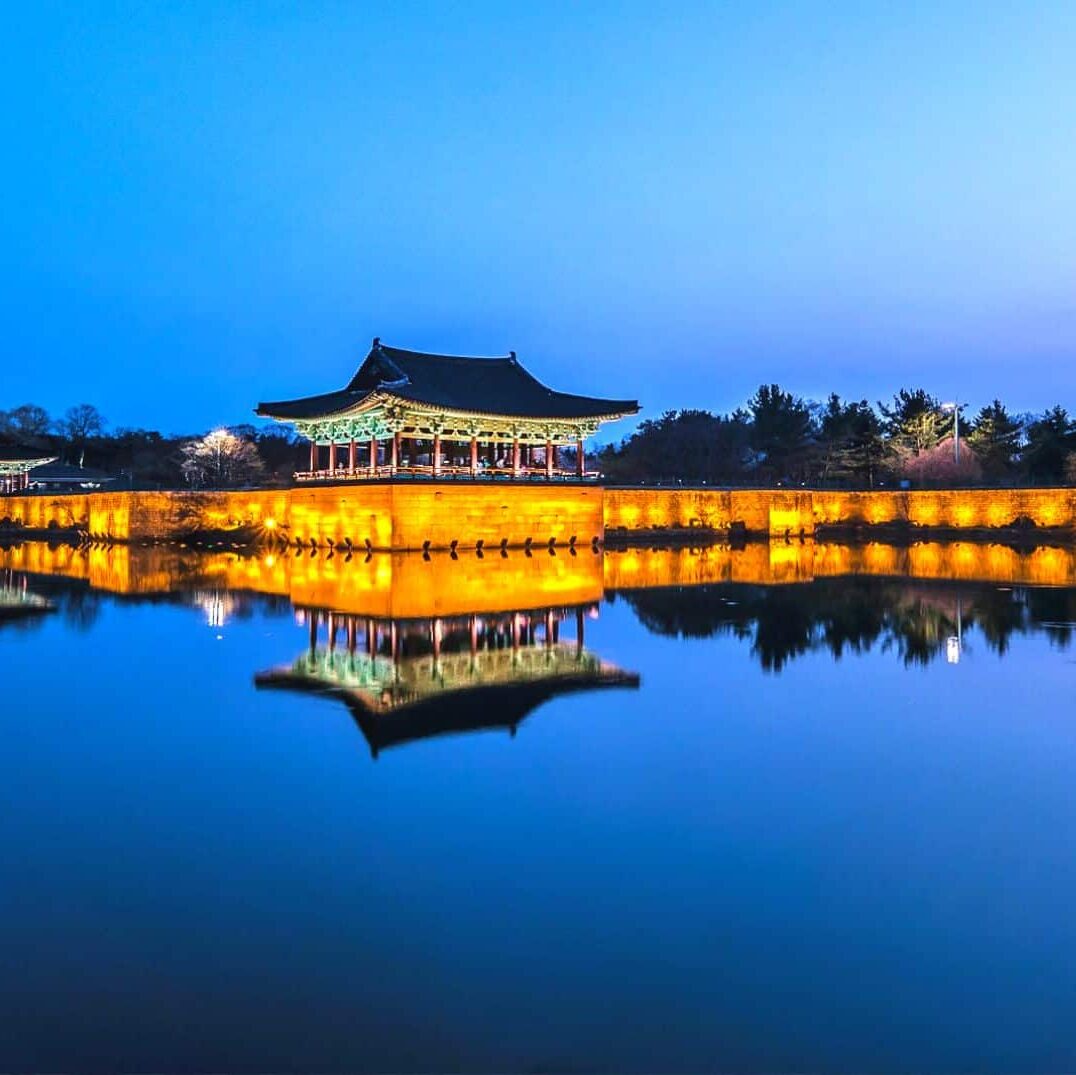
Afternoon : Explore the artistic shopping streets of Hongdae for last minute souvenirs and gifts for yourself. Take a break in one of the unique animal or artsy cafes.
Evening : Either take a night cruise along the Han River from Yeouido Hangang Park or dine in style at the Lotte World Tower in Jamsil, the world’s 6th tallest building. Both offer great night views of Seoul and unforgettable memories to take home.

Korean Seasons Guide
The best time to visit South Korea is during the warm spring or fall seasons. The weather is mild and clear, there’s a range of festivals and seasonal activities to enjoy, and you can travel to Korea comfortably.
The best months to visit are April, May, September, and October. These months are all during the Korean school semester, so there won’t be as many local travelers around during the weekdays. However, expect the weekends to be busy as people leave the cities to travel within Korea.
Large public holidays, including Chuseok (mid-autumn festival) in September / October) and Buddha’s Birthday (May), provides travelers with the opportunity to experience Korean culture and celebrations. These holidays change each year based on the lunar calendar.
Korean Weather & Climate
South Korea is a country that experiences four very distinct seasons, with temperatures ranging from 100 Fahrenheit in the summer to below 0 Fahrenheit in the winter. Each of South Korea’s seasons brings opportunities to see unique natural views and enjoy the different climates in Korea.
Spring has some of the gentlest weather, with light rain and a quick jump in temperature to the 60s and 70s by late March. Summer begins with the rainy season in late June and becomes extremely humid and hot throughout July and August before cooling again in September.
Fall has the best weather in Korea, with many warm, sunny days. Cold winter weather appears very quickly in mid-November and the first snow usually appears by late November. Winter is dry and sunny with the lowest chance of rainfall but is also very cold. Snow isn’t constant, but can fall for several weeks on and off during winter.
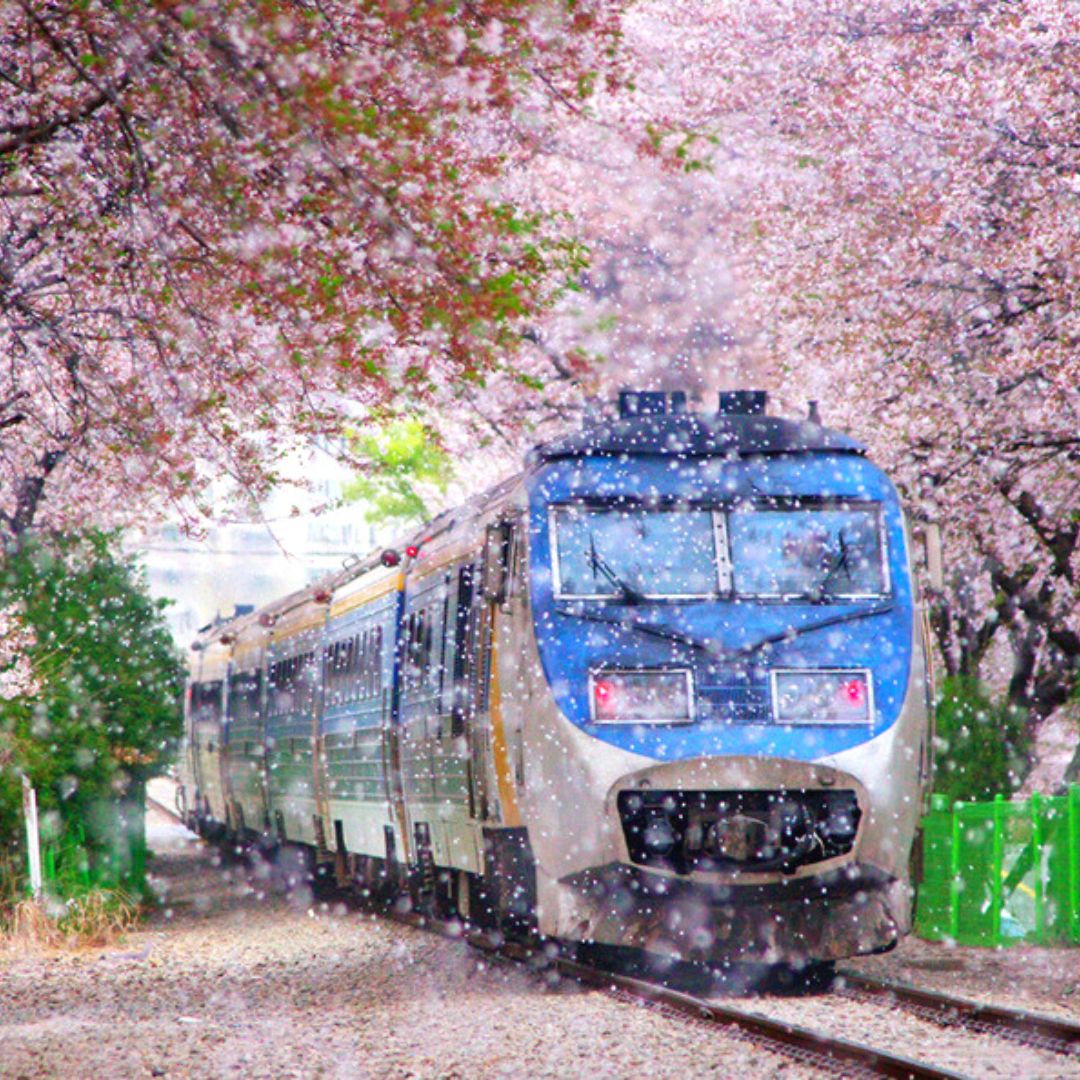
Visiting in spring offers the chance to see beautiful cherry blossoms stretch across the country, as well as many other spring flowers that brighten up Korea after a cold winter.
Spring starts in late March with the awakening of the cherry blossoms and ends in early June with the start of the rainy season. South Korea is a country with a close connection to nature, which can be witnessed in the many spring festivals and celebrations that happen throughout the year.
Some of the best spring festivals include the Jinhae Cherry Blossom Festival, Damyang Bamboo Forest Festival, Yeon Deung Hoe Lotus Lantern Festival, Jindo Sea Parting Festival, and Boseong Green Tea Plantation Festival.

The weather in summer is perfect for getting outside and relaxing on one of Korea’s many beaches. Some of the best activities include spending a weekend camping or glamping by the beach, hiking in shaded valleys in the national parks, and water sports such as surfing, kayaking, and scuba diving.
Unfortunately, the heat may put off some travelers, and high humidity makes it uncomfortable to move around too much. Fortunately, Korea is a modern country with lots of air-conditioning and ways to deal with the hot weather, including delicious summer dishes.
Cool down with a bowl of Korean bingsu (shaved ice dessert) or a cool latte in one of the many cozy Korean cafes in popular beach destinations.

Travelers to Korea in the fall are treated to spectacular fall foliage creeping far and wide. You can see it falling on palace grounds, sprawled on mountains in national parks, and along city streets.
The start of the fall foliage season in Korea coincides with the end of the hot and humid summer, with clear skies and cool weather, making it the perfect time to travel in Korea. Like spring, the fall season in Korea is one of the festivals and celebrations.
The Chuseok holidays in late September / early October are the biggest public holidays of the year, with cultural events held in popular tourist destinations. There’s also a range of cultural festivals, such as the Andong Mask Festival, Baekje Culture Festival, Jinju Namdang Yudeung Lantern Festival, Jeonju Bibimbap Festival, and the Seoul Kimchi Festival.

Winter, like summer, has more extreme weather than spring and fall, with temperatures often in the 20s and 30s and below. This season, however, is also one of the best for travelers who want to see clear, blue skies and experience good weather.
Winter is the driest season and it very rarely rains. If you don’t mind the cold weather, it’s perfect for traveling around South Korea. One of the biggest draws during winter is the chance to see snowy Korean landscapes, from snow-bedecked royal palaces to frosty peaks atop Korea’s many mountains.
Winter sports are popular in Korea, with ski and snowboard resorts aplenty. Winter also offers the chance for family fun with winter attractions including sledding, winter illuminations, and Christmas parades.

Cost To Travel To Korea
The cost to travel in South Korea largely depends on your personal style of travel. You can travel on a low budget in Korea, for under $50 per day, or you could also travel for 10 times that amount if you wished to.
Food costs range from a few dollars for a bowl of jajang (black soybean) noodles to hundreds for premium hanwoo (Korean beef) steak. The same applies to accommodation, with budget hostels costing $10 per night and premium 5 stars hotels costing hundreds.
Most travelers to Korea will already know what they want to prioritize their spending on. Some travel to Korea to eat, others to shop, and many more to experience the unique culture and history that Korea has to offer.
The costs in this section of our South Korea Travel Guide are based on the latest costs in Korea from this year. Examples of different costs have been covered to give you an idea of what to expect when you try to budget.
Please note, these prices are based on traveling in Seoul during non-peak times. Prices may be higher in peak times, which include cherry blossom season (Apr) and fall foliage season (Oct). Popular tourist cities, such as Gyeongju and Jeonju, may also have higher prices on weekends.
How Much Does It Cost To Travel In South Korea?
Travelers may find they want to spend more on hotels and less on eating out, or vice-versa, so don’t feel like you have to only follow the costs for one section. This is only a guideline to help you plan based on your own personal preferences.
To make it easier to figure out your expected costs to travel in Korea, this South Korea Travel Guide has broken down the costs into 3 different categories. These categories loosely fit 3 different types of travelers, as described below:
- Accommodation: $200+ per night, per room (double)
Korea has a wide range of luxurious hotel options, including rooms in the Lotte World Tower, historic hanok houses, and glamping for those who want to escape to the countryside.
- Food & Drink: $100+ per day, per person
It’s easy to spend a lot on food and drink in Korea as there are so many delectable restaurants. Fresh seafood, Korean steak, or the finest foreign foods are all available.
- Transportation: $20+ per day, per person
Taxis and transportation are relatively cheap in Korea. A taxi journey across Seoul can cost less than $20 for 30 minutes and even the 1st class options on Korea’s high-speed trains are under $100 for the longest journey (Seoul to Busan).
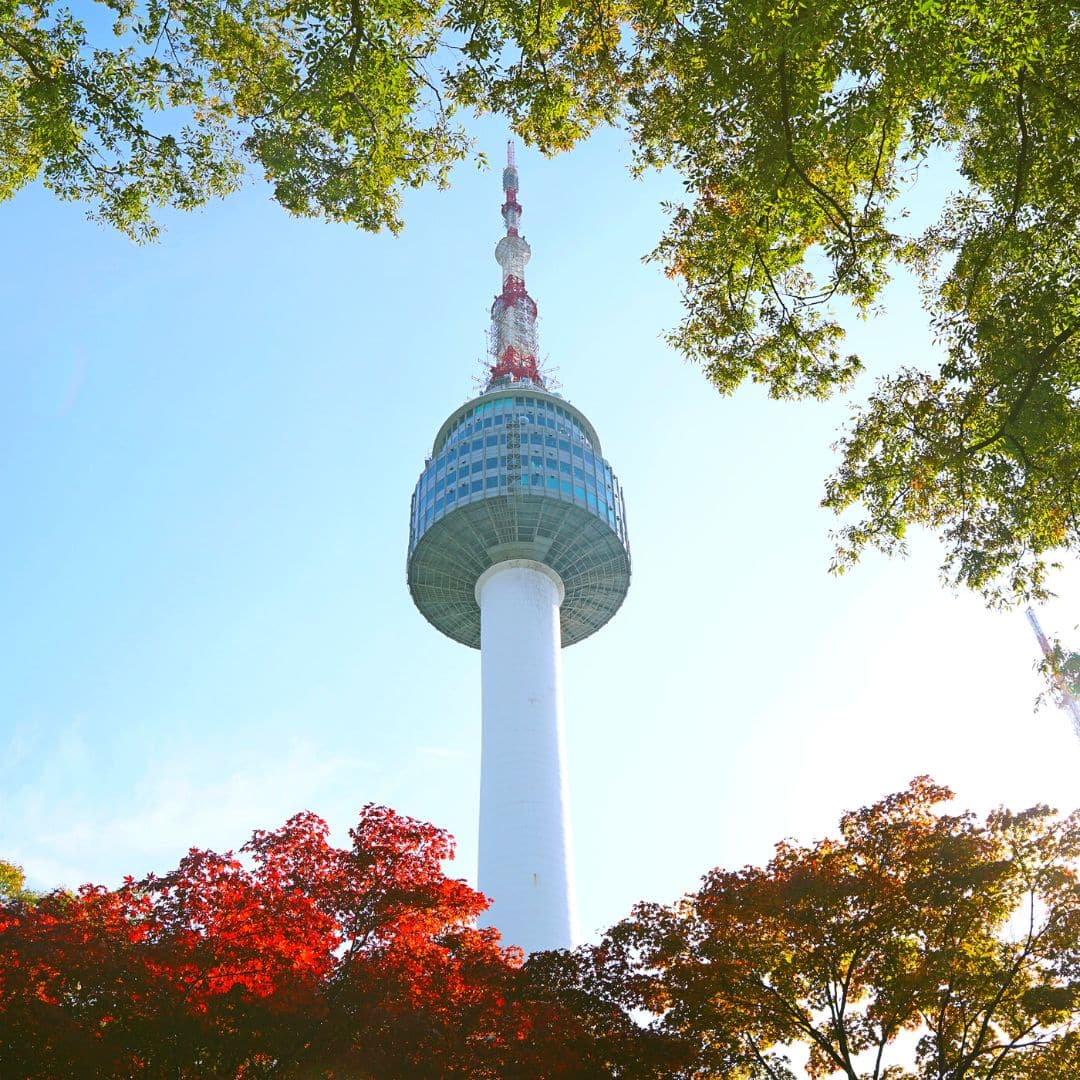
- Accommodation: $100 ~ $200 per night, per room (double)
You can book 4-star hotels in Seoul for very reasonable prices and enjoy both comfort and lower prices than you’d find at home. Korea has a wide range of comfortable mid-priced hotels.
- Food & Drink: $50+ per day, per person
With all-you-can-eat Korean restaurants that serve unlimited Korean BBQ and other dishes for under $20 or $30 per person, it’s easy to enjoy the best food Korea has to offer without breaking the bank.
- Transportation: up to $15 per day, per person
Use the subway and buses to get around the big cities and trains to travel further around Korea without breaking the bank. You can even splash out on a taxi and pay only a few dollars per person when traveling as a group for a few dollars extra.
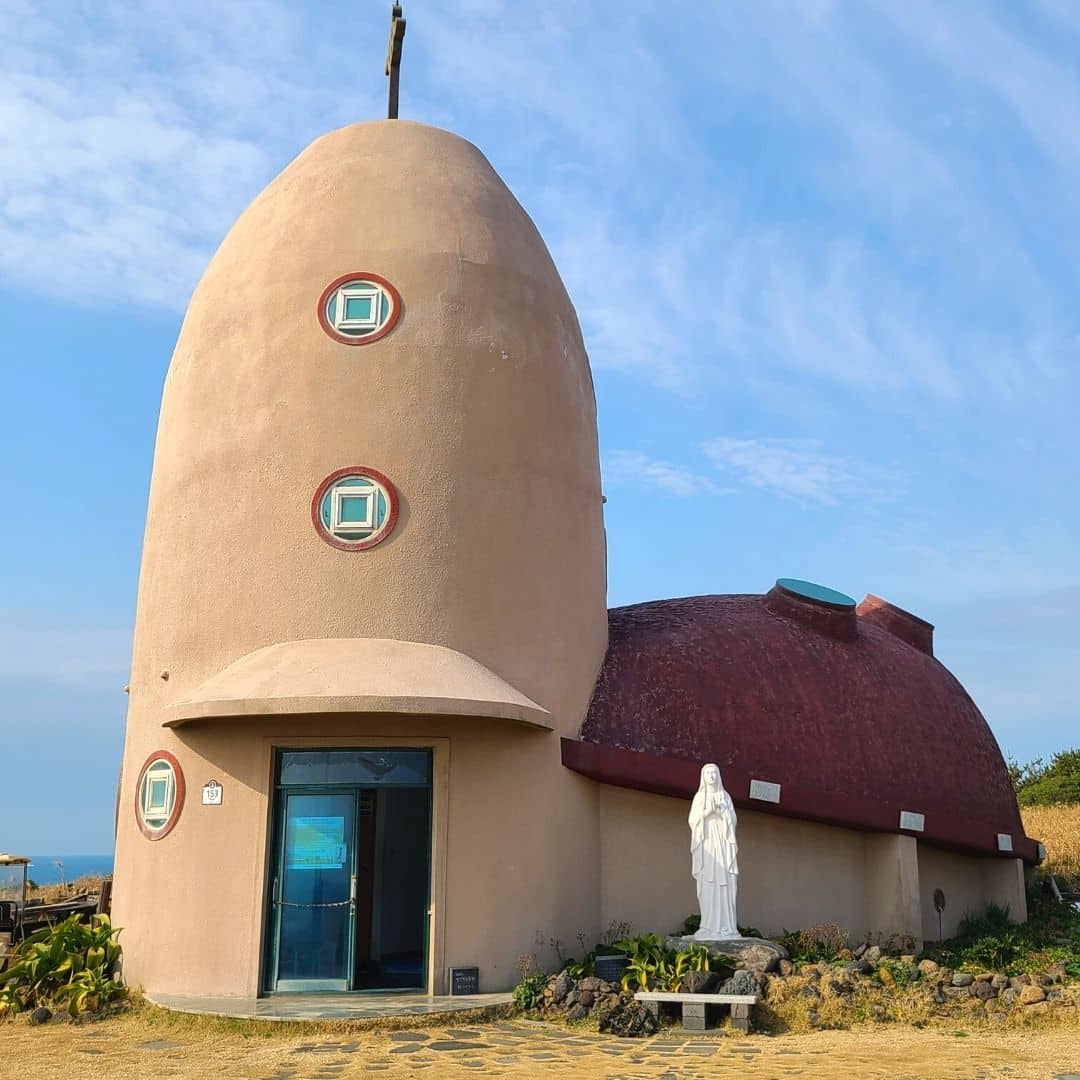
- Accommodation: up to $100 per night, per room (double)
Hostels and guesthouses can be found for under $50 per night and are perfect for somewhere to rest and recharge. If that’s all you need, save money here and spend it elsewhere.
- Food & Drink: $20 – $30 per day, per person
If you budget well and stick to street food, free hotel breakfasts, and convenience store foods, you can eat well and still have enough to splurge on good food for dinner.
- Transportation: up to $10 per day, per person
Walking and buses are cheap and convenient ways to travel around Korea’s biggest cities. Traveling from city to city is also cheap, with intercity buses costing less than $10 for 1-2 hour journeys.

Further Costs To Travel In South Korea
Besides these everyday costs to travel in South Korea, there are other costs that you’ll need to cover from time to time. These costs include internet & phone access, day trips, activities, souvenirs, travel insurance, and flights. These costs will be broken down into low and high-end costs that you can expect to pay in Korea.

Museums and galleries offer unique (and authentic) Korean souvenirs such as pottery, painting, tea & soju sets, and more. If you want something a bit more special, head to the underground markets near Gwangjang Market in Seoul and get your own handmade hanbok, which you can get posted back home to save luggage space.
- Small Souvenirs: $5+
- Korean Cosmetics: $5+
- Korean Artworks: $10+
- Korean Tea (box of): $10 to $20
- Korean Soju Set: $10 to $20
- Korean Handcrafts: $10+
- Tailored Hanbok: $200+
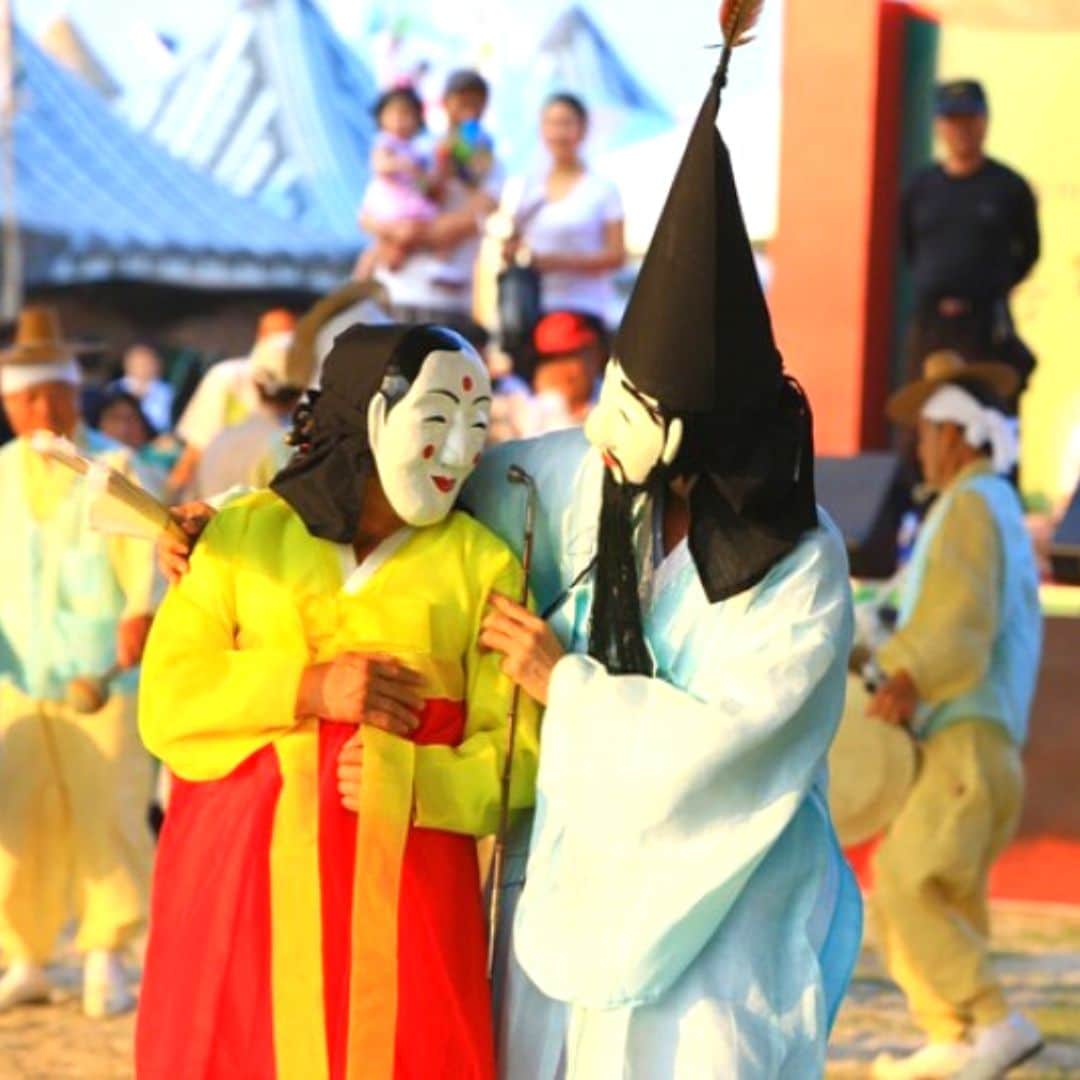
The day trip prices quoted below are the prices you can expect to pay with a reputable tour company like Klook or Trazy . Hiring a private guide will be a lot more expensive and might come to $200+ per day.
Please note: The prices quoted below are estimates and may change depending on the season or tour services.
- DMZ Tour – $50 to $120
- Nami Island Area – $40 to $70
- Everland Theme Park – $30 to $50
- Jeonju Hanok Village – $50 to $70
- Korean Folk Village – $50 to $60
- Seoraksan Mountain – $70 to $150
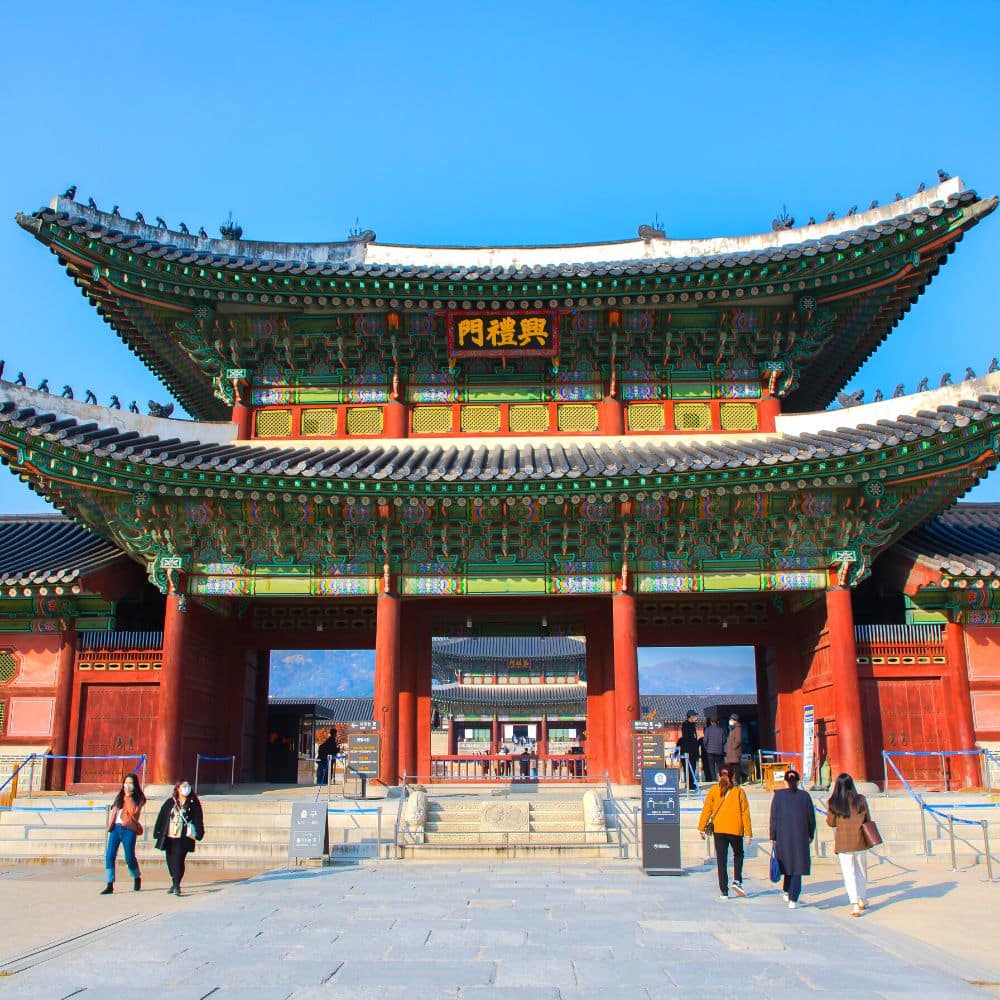
As mentioned earlier in this South Korea Travel Guide, buying a Discover Seoul Pass is a great way to save money on Seoul’s premium attractions.
- Royal Palaces – $3
- N Seoul Tower – $10
- Hanbok Rental – $10+
- Seoul City Tour Bus – $10
- Han River Cruise – $15 to $30
- Seoul Sky Observatory – $30 to $50
- Aquariums – $20 to $30
- Seoul Zoo & Seoul Grand Park $10
- Amusement Parks – $30 to $40
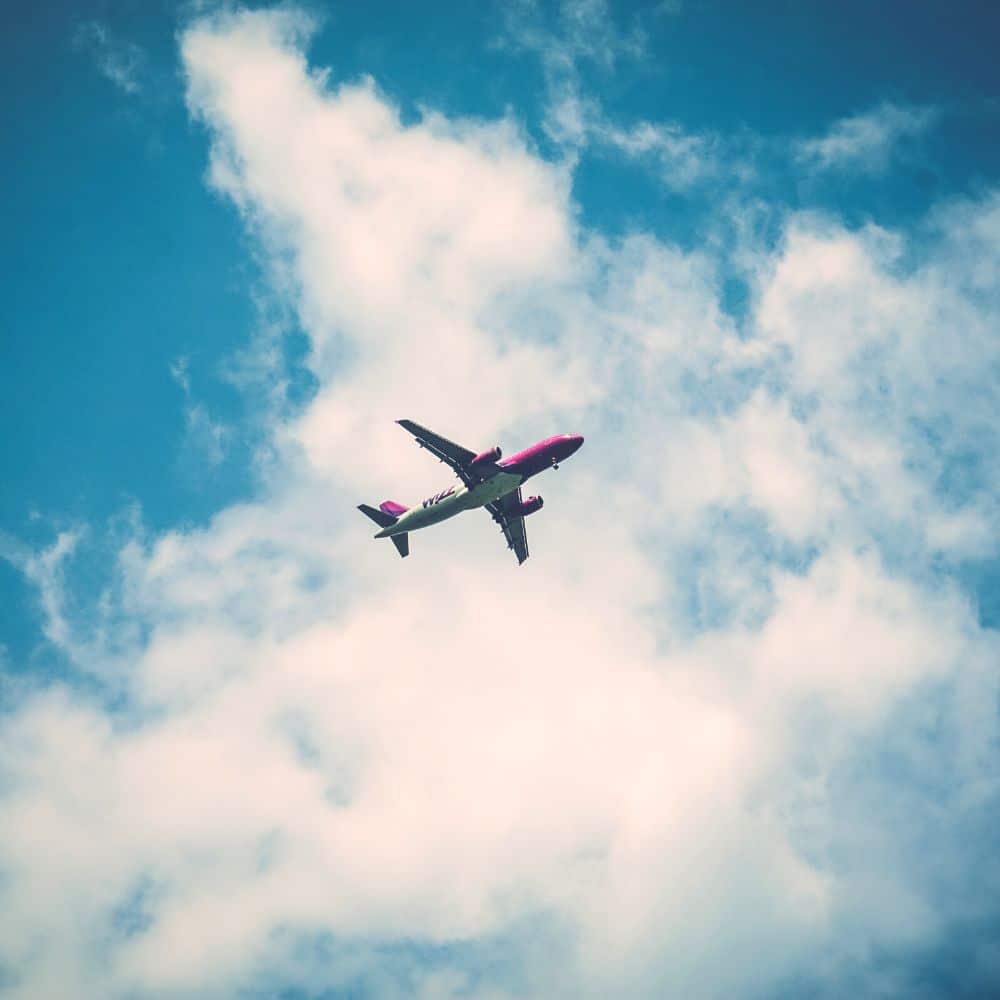
The cost to fly to Korea is more than twice the normal price right now. Fortunately, Korea ended the restrictions on the number of flights into the country from June 2022 and flight costs and availability should be improved in the near future.
Best of Korea recommends Skyscanner and Expedia for the best flight deals to Korea.

Why Travel To South Korea?
In recent years, travelers from around the world have been increasingly drawn to South Korea. The country is a must-see destination in Asia, with more than 17 million travelers in 2019. After reading this South Korea Travel Guide, you’ll understand what draws so many people to the Land of The Morning Calm, as Korea is also known.
There are myriad reasons why people visit Korea. Many come to experience life in a unique country, packed with historical and cultural sights that you won’t find elsewhere in the world. In the afternoon you can walk through a royal palace dressed in hanbok (traditional Korean clothes), sip green tea in a hanok (traditional Korean house), and pass Buddhist monks walking peacefully through an ancient temple.
Modern South Korean culture is conquering the world, with chart-topping acts that include BTS and Black Pink, Oscar-winning movies like Parasite, and phenomenally successful TV shows like Squid Game. This brings in legions of fans flocking to shooting locations and film sets to relive their favorite K-Culture moments. Some lucky travelers even get to catch sight of their favorite K-Stars walking around Gangnam, a hotspot for Korea’s most famous citizens.
Not only is Korea a beautiful country, it’s a country that will make you beautiful, with some of the world’s best fashion and beauty shops. Korea is famous for its K-Beauty products and is a beauty and fashion shoppers paradise. From the street fashions of Hongdae, to the luxurious fashion malls of Gangnam, and the wall-to-wall malls with discount clothes in Dongdaemun, you’re guaranteed to find something you can’t resist at a great price. If you prefer a cultural shopping experience, there are traditional markets all over Korea, where you can experience street food, buy novel gifts, and see how locals live and socialize.
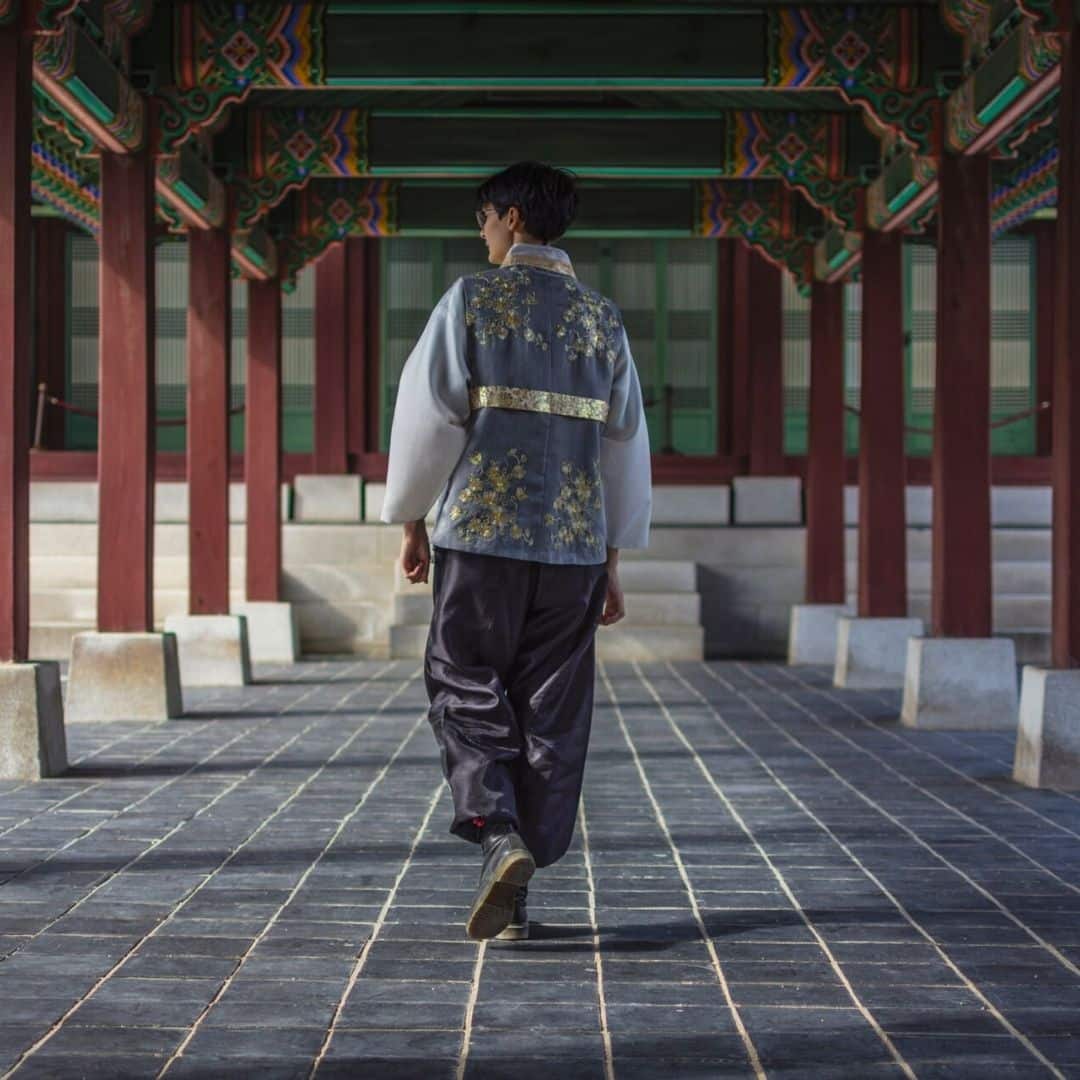
There’s so much more to South Korea than what you’ll find in the cities, however. South Korea, a country that’s 70% mountainous with coasts on three sides, offers so much to nature and adventure lovers. Hiking, South Korea’s national pastime, is a popular way to see more of the Korean countryside, looking down over rice fields, forested valleys, and pockets of urbanization. Skydiving, parasailing, scuba diving, water sports, cycling, rock climbing, white water rafting, and lots more are on offer and very reasonably priced. South Korea is a great place to enjoy the great outdoors.
The real jewel in South Korea’s natural crown, however, has to be Jeju Island – one of the New 7 Wonders of the Natural World. Explore lava caves, hike to the peak of the central dormant volcano (Hallasan Mountain), trek around the rugged coast, relax on a sandy beach in a modern cafe, and even try your hand at horse riding.
Whatever your reason to travel to South Korea, you’re sure to find more and more reasons to return again and again. Let this South Korea Travel Guide whet your appetite for your first trip, inspire you to plan a follow-up trip, and guide you to the best things to see and do in South Korea.

South Korea Travel Guide FAQs
Not sure about the South Korea travel restrictions and want to know more about visas, vaccinations, and what the rules are? This next section covers some of the most frequently asked questions about traveling to Korea now. If you have more questions that aren’t covered below, feel free to write to us on the Best of Korea Facebook page.
Do I need a visa to travel to South Korea?
US citizens and tourists from 111 other countries, including Canada and Mexico, don’t need a visa to travel to South Korea. The US government and South Korea have a visa-free travel arrangement and tourists can stay for up to 90 days.
What happens when I arrive in South Korea?
From September 2022 onwards it is no longer necessary to provide any vaccination status or take any PCR or RAT tests. A mandatory health check will be required, but this is only a simple form you can fill in on arrival.
What happens if I get a positive PCR result?
If you test positive for COVID-19 while in Korea, you will need to quarantine for 7 days at government facilities. Travelers who break the quarantine rules are subject to deportation or fines.
Can I travel to Korea if I'm unvaccinated?
Yes, you can still travel to South Korea if you’re unvaccinated. South Korea no longer restricts travel based on vaccination status (as of October 2022).
However, if a traveler (vaccinated or unvaccinated) tests positive for COVID-19 in Korea, they will have to self-quarantine until negative.
South Korea is a dynamic and culturally rich country that deserves a place on everyone’s travel bucket list. Known for its stunning blend of tradition and modernity, Korea features futuristic technology, bustling markets, and a thriving pop culture scene. Perhaps most importantly, visitors can expect a high level of safety and cleanliness while exploring the country and savoring its delicious cuisine.
This South Korea Travel Guide shows you where to go, what to see, and when to travel. Start your journey with itinerary ideas and pre-travel tips, the best day trips, and lots more essential Korean travel advice. Let’s go!
LATEST KOREA TRAVEL UPDATES
How to travel to korea, best destinations in korea, where to stay in seoul, korean travel tips, things to see & do, travel itineraries for korea, korean season guide, cost to travel to korea, further costs to korea, why travel to korea now, south korea travel faqs.
6/1/23 From June 1st, 2023, there is no longer any mandatory quarantine for COVID-infected people in Korea – both locals and travellers. The Korean government now recommends that infected people showing symptoms should self-isolate (voluntarily) for 5 days.
4/1/23 From April 1st, 2023, travelers from the USA and 21 other countries no longer need to apply for the K-ETA to travel to Korea. This will run until 31st December, 2024 and is designed to make it easier to travel to Korea.
3/20/23 From March 20th, 2023, the indoor mask mandate has been removed for public transport, including buses, trains, subway, taxis, and flights. The only remaining mask mandate is for medical facilities, including hospitals, care homes, and pharmacies.
How To Travel To Korea
Current Travel Restrictions For South Korea 2023
If you’re suspected of infection when you arrive (high temperature, feverish signs), you may be asked to take a PCR test. PCR tests are now free for travelers suspected of being COVID-19 positive within the first 3 days of arrival. This South Korea Travel Guide is regularly updated with the latest Korean travel restrictions.
Requirements To Travel To Korea
Here’s a simple 2-step guide about how to travel to Korea right now. Most restrictions have been lifted so travel to Korea is easier than ever. This applies to travelers from the US, Canada, and many other countries . As mentioned, it doesn’t matter whether you’re vaccinated or not.
Check the Korean Embassy if you’re not sure in either situation.
- When you travel to Korea, you will be asked to complete a self-check health questionnaire to show you’re not sick. You can do this when you arrive or complete it before you depart on the Q-Code website .
- You don’t need to do any testing before you fly, but it is a good idea to take a self-test to make sure you’re safe. If you’re infected in Korea, it’s necessary to do 7 days self-quarantine. You don’t need to bring copies of your vaccination records but printing a copy of the K-ETA is recommended.
No, travelers from the USA don’t need a tourist visa to enter South Korea. You can visit for up to 90 days visa-free. However, you must apply for the K-ETA before traveling and upload your travel plans and hotel details.
Here are 6 of the best destinations in Korea that you absolutely must visit, as well as some of the sights you’ll want to check out while you’re there. We’ll be bringing you lots more detailed destination guides in the future, so be sure to visit again soon

This Full Day Tour of Seoul will show you some of the hottest spots in the city, while this Customized Private Tour of Seoul will allow you to choose where to go.

Korea is a unique country with a written language that looks nothing like English, interesting Korean Cultural And Etiquette Rules , and an always busy lifestyle. Travelers may be lost trying to do even the simplest things.
If you’re traveling to Korea, you’re almost certainly going to want to get access to the internet to help you navigate, translate Korean, or even book tickets to attractions. Korea has one of the world’s best mobile internet and the prices are very reasonable. 5G mobile internet services are available across the country and Korea was one of the first to get the super-fast service. You won’t have problems connecting with a sim card or WiFi router when you travel
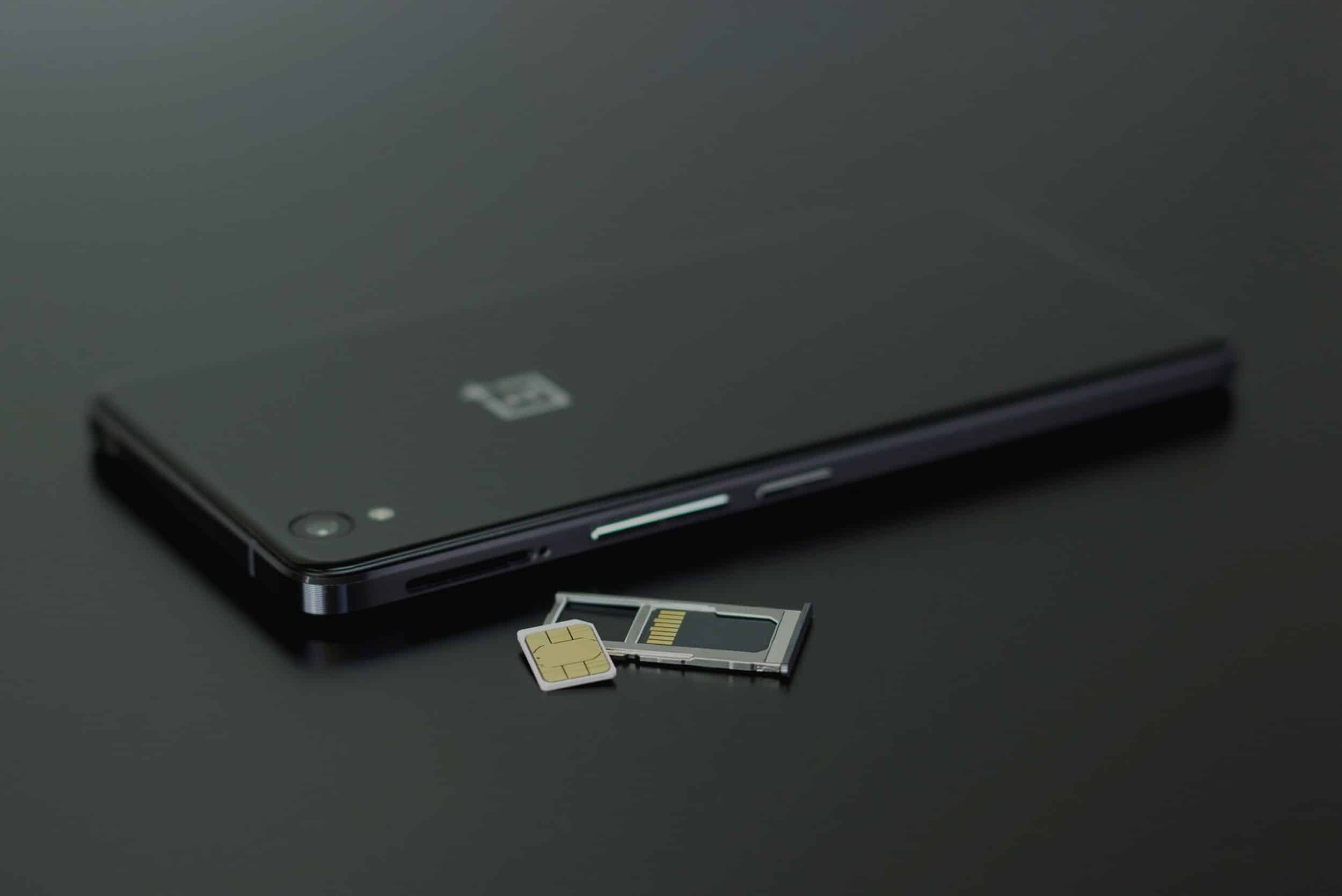
Traveling to any country involves potential scams, bad exchange rates, mistakes, and confusion when it comes to dealing with foreign currency. Fortunately, travelers to Korea have a wide range of options for travel money both before and while they travel.

South Korea is a country packed with famous landmarks and sights, unique culture – modern & historical, family-fun activities, outdoor adventures, cozy cafe districts, and natural wonders. There’s more to do in Korea than you could imagine and it’s impossible to explore it all in one trip. Try to plan your itinerary by cities and locations. For example, plan your day in Seoul and stay by the district.
Here are some of the best things to see and do in South Korea, broken down into different themes so you can find things that interest you the most. The location of each of these attractions is included, too, so you can create a city-by-city itinerary, seeing the best South Korea has to offer.
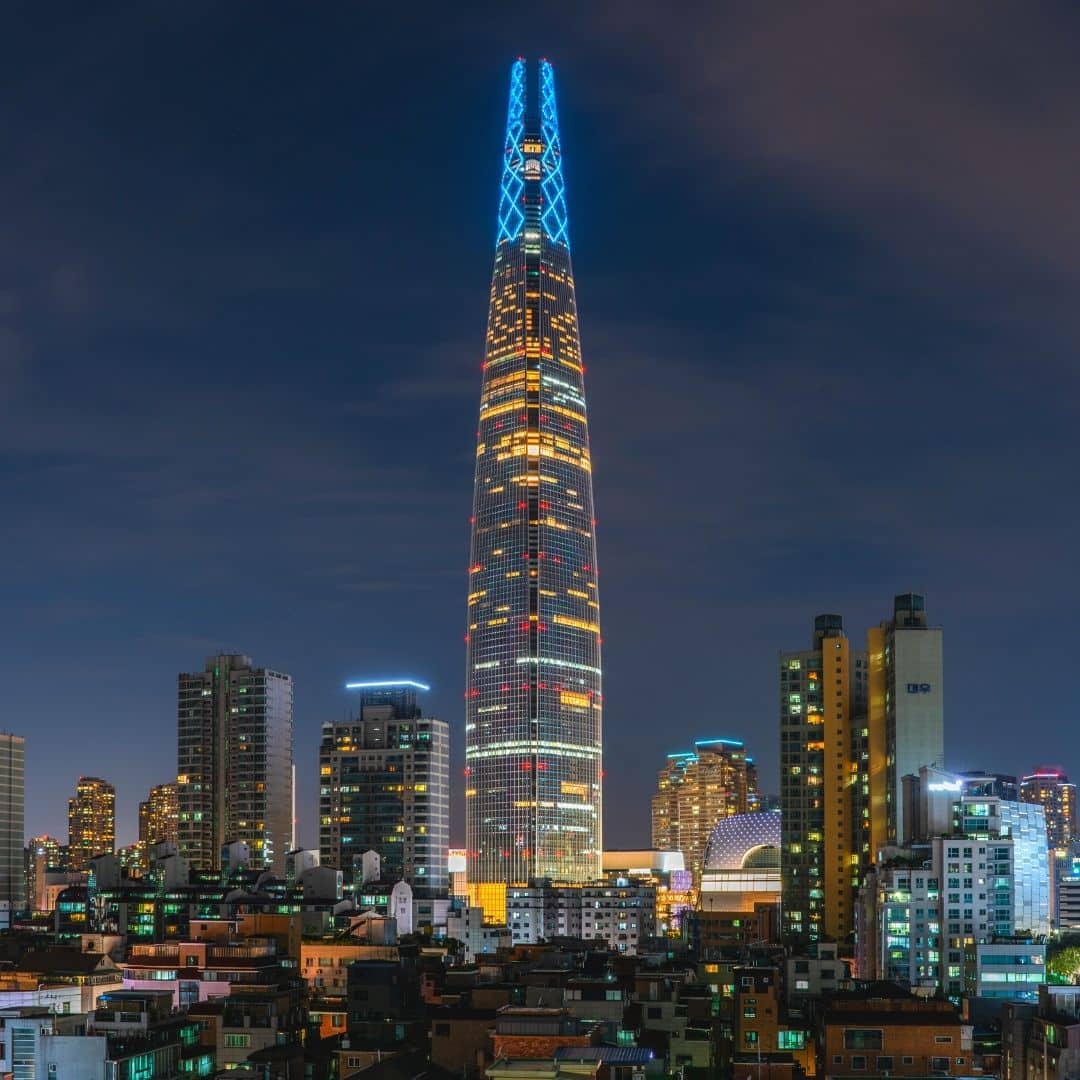
Any South Korea Travel Guide would be incomplete without thee top landmarks & famous areas in Korea. These unmissable Korean attractions offer some of the best sights in Korea, showing you Korean history, culture, design, and sense of humor.
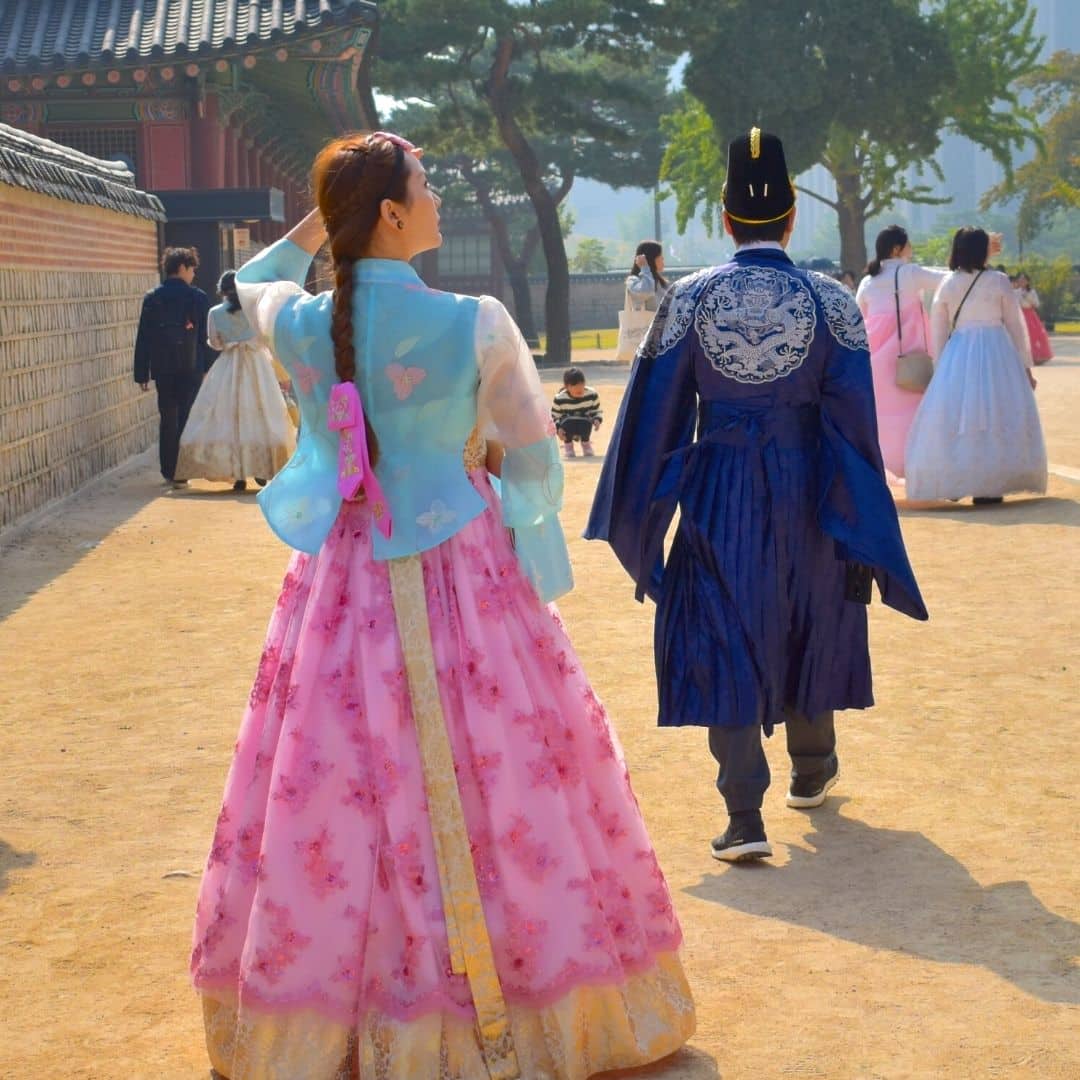
Learning about Korea’s past is not only enjoyable, it’ll also open your eyes to how modern Korean culture has evolved. Witness the majesty of grand palaces and the humble Buddhist temples and gain an insight into life in Korea with these fascination historical sights.

Are you a fan of Korean culture? Then check out these 10 modern K-Culture locations in Korea. Whether you’re ARMY or an arthouse cinema fan, you’ll love these sights. K-Drama fans, check out these K-Drama Filming Spots in Seoul .

If you’re traveling to Korea with your family, you don’t need to worry about the kids getting bored. There are plenty of family-fun attractions in Korea to keep them amused and to show them what Korea’s really like.

Culture lovers will find no shortage of places to learn about Korean, Asian, and world history & culture. Korea has a rich history and displays this through a range of museums. Learn about traditional life, Korean wars, the democracy struggles, and even kimchi .

Once a land of teahouses, Korea has now fully embraced coffee culture. Korea’s late-night culture makes cafes a great place to gather and chat. The rise of social media has also led to hundreds of insta-worthy cafes with photogenic decor, unusual coffee designs, and delicious desserts.

Many people travel to Korea just to shop, thanks to the low prices, haggling in the markets, and good quality items. From traditional markets to high-end designer goods, there’s somewhere to shop for everyone. Be sure to try authentic Korean street foods in the markets, too.

Korea is a country surrounded by sea on 3 sides and 70% mountainous, giving it a wealth of natural beauty. Besides Korean cherry blossoms , flowers, and fall foliage, there are sculpted gardens, shimmering ponds, riverside parks, and a volcano to see.

Morning : Explore Seoul’s historic royal palaces starting with Gyeongbokgung or Changdeokgung Palace in central Seoul. You get free entry if you’re wearing a Korean hanbok, so be sure to pick one up from the rental shops outside.
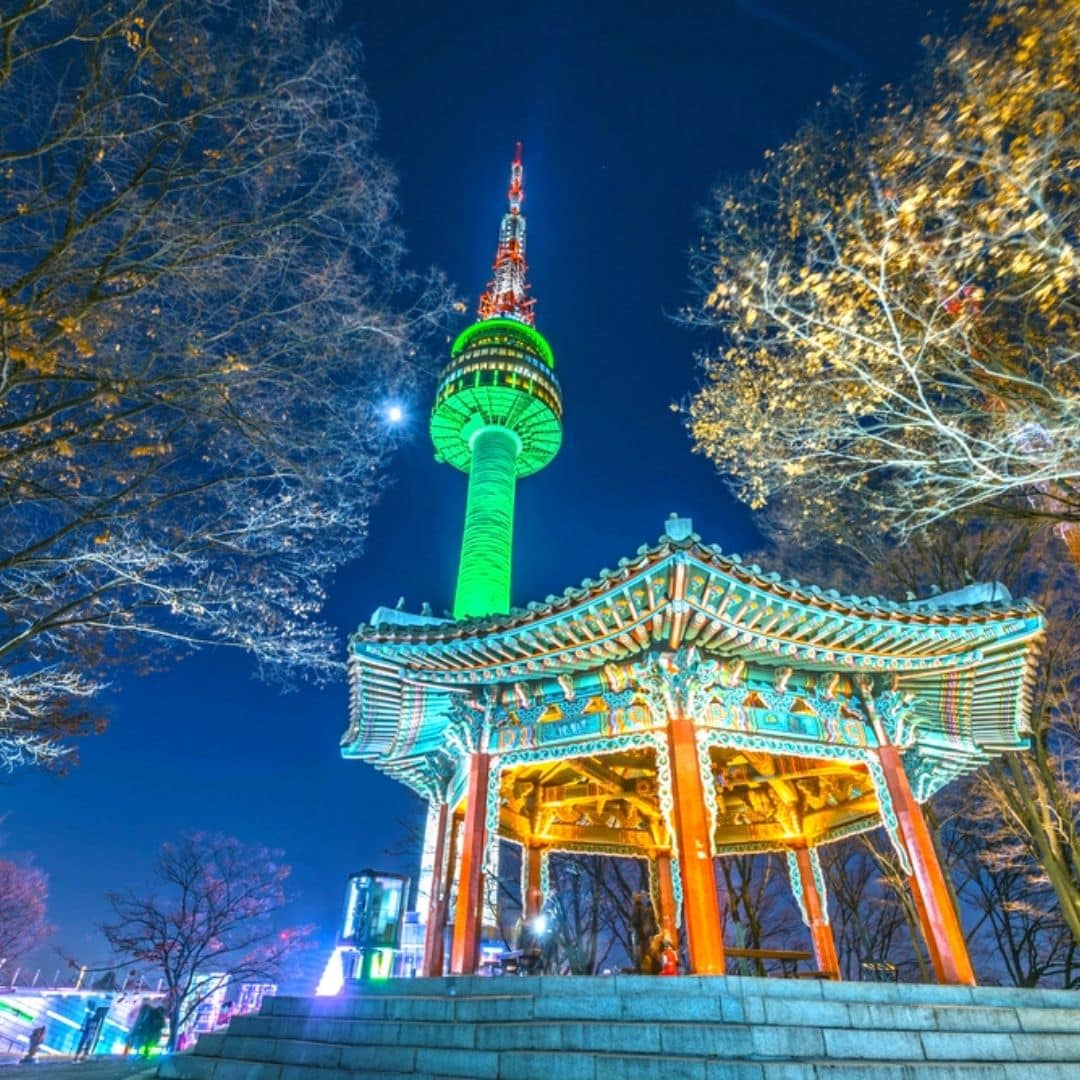
Morning : Learn about Korea’s history at the National Museum or War Memorial in Yeongsan. These fascinating museums have interactive exhibits and feature 1000’s of years of Korean history.

Morning : Take a day trip from Seoul to explore Gapyeong County. See the wonders of the Garden of Morning Calm and its idyllic nature. This is one of the most beautiful gardens in Korea.

Morning : Grab an early breakfast at Seoul Station and ride the high-speed KTX train directly to Seoul. It takes less than 4 hours and rides past rice fields, mountains, and the Korean countryside.

Morning : Take a day trip to the UNESCO World Heritage City of Gyeongju and roam the Gyeongju Historic Area. See Daereungwon Tomb Complex and Cheomseongdae Observatory.

Morning : Pack your bags and ride the KTX back to Seoul. Head to Hongdae for street food snacks or Michelin-starred delights in famous restaurants.

March to May

June To August

September to November

December to February
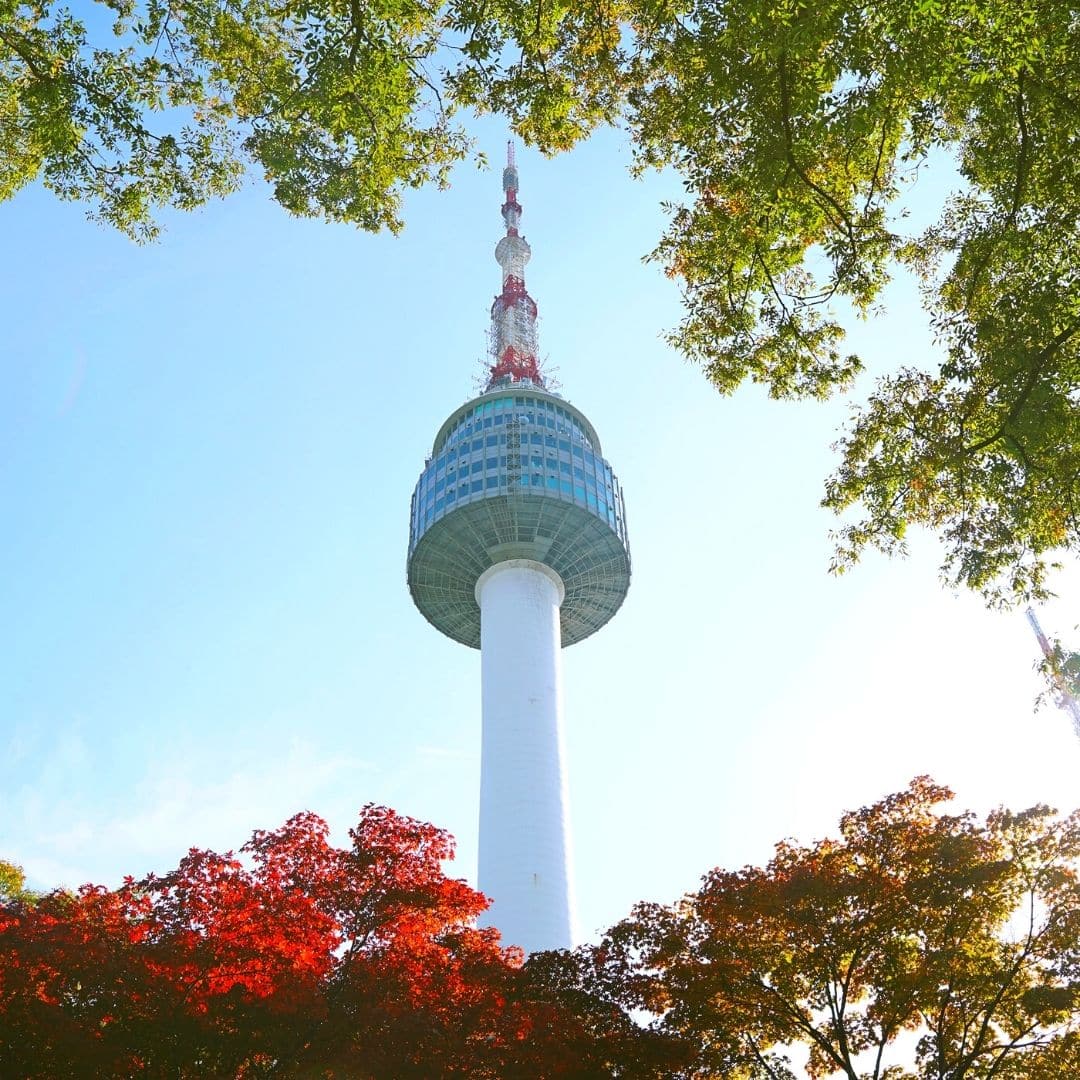
Korean Souvenir Costs
The best places to buy souvenirs in Korea are in the traditional markets and tourist areas. Insadong in Seoul has a lot of art and souvenir shops, as do the market streets around Bukchon Hanok Village. Hongdae offers lots of bargain snacks and souvenirs to take home.

Day Trip Costs From Seoul
A day trip from Seoul is a must to see a different side of Korea from what you’ll experience in the capital. Taking a day trip is a great chance to experience Korea’s countryside, nature, and hard-to-reach cultural attractions.

Korean Activity Costs
Seoul and other Korean cities have so much to offer to tourists. From historical palaces to exciting theme parks and attractions, it’s easy to have fun, explore, and discover more about Korea’s history.

Flight Costs To Korea
Flight costs depend on which airports you’re traveling from. A flight from Los Angeles to Incheon Airport (Korea’s main airport) costs around $1370 right now. Flight costs vary depending on the season and time of day.
Welcome to Best of Korea!
Please Sign Up for Updates
We hate spam. You can unsubscribe anytime.

IMAGES
VIDEO
COMMENTS
1 EUR: 1,450 KRW. 1 GBP: 1,675 KRW. 1 AUD: 875 KRW. Yes, this does make calculating the prices of things rather tricky when you're in South Korea! For me, I kept in mind that 10,000 KRW is roughly 8 USD (€7, £6, or 11.50 AUD) and it made figuring out the prices of things far easier.
South Korea Travel Costs. Accommodation - A bed in a hostel dorm with 4-6 beds costs 20,000-25,000 KRW per night, while a bed in a dorm with 8 or more beds costs around 14,000-20,000 KRW. A single private room is around 40,000 KRW, while a double private room is 70,000 KRW.
South Korea's cost of living is on the rise, but it's definitely still possible to visit on a budget. Between its vast and affordable transit system, wide range of dining options and abundance of low-cost activities and attractions, South Korea can prove a relatively inexpensive travel destination.. To maximize your savings, here's a guide full of helpful pointers to visiting South Korea on a ...
Food Budget in South Korea Average Daily Costs. Calculated from travelers like you. While meal prices in South Korea can vary, the average cost of food in South Korea is $28 (₩38,176) per day. Based on the spending habits of previous travelers, when dining out an average meal in South Korea should cost around $11 (₩15,270) per person.
Budget Travel Guide: South Korea on a Shoestring If you're looking for an exciting and budget-friendly destination for your next trip, South Korea is definitely worth considering. This fascinating country is a blend of ancient traditions and modern technology, with plenty of stunning scenery, delicious food, and unique cultural experiences to ...
Here's the full breakdown of our South Korea travel costs. We both shared the same card and cash, but for this breakdown, we'll show you roughly how much the same trip would cost for one person too. Our full South Korea travel costs for 2 people (2 weeks) Korean E-Visa - 20,600₩ (£14)
2. Get a T-Money card for transportation (and more) Image credit: Karl Baron. When travelling in Korea on a budget, it's a must to get yourself a T-Money card to minimise the cost of your subway, bus and cab rides! In other words, instead of single journey tickets, fares are much cheaper when using your T-Money card.
Understanding Seoul. The political and economic center of South Korea, Seoul is home to almost 12 million residents. The larger Seoul Capital Area (Sudogwon), which includes neighboring Incheon and Gyeonggi-do, houses 25.6 million people (half of the country's population), making it the fourth largest metropolitan area in the world, after Tokyo, Shanghai, and Jakarta.
Asia / South Korea /. For a trip to South Korea, you should plan for daily costs anywhere between $43 to $280. If there's two of you traveling, your daily expenses could range from $87 to $559. These price ranges are based on the average daily spending of $110 (₩147,903) per person which comes from the travel expenses of other visitors.
The cost of travel in South Korea is somewhere in the middle. It's definitely cheaper than North America and Western Europe, but more costly than backpacking in Southeast Asia. While it's possible to get by on a daily budget of around $30-35, you'll be more comfortable if you can allot $45-50 a day.
June, July and August are South Korea's high season for travel, with hotels and airfare anywhere from 10% to 25% more expensive than in the off seasons. ... If you're looking to travel to South Korea on a budget, follow this money-saving guide, from advice on SIM cards to tips on transit. Wildlife & Nature. The best places to visit in April ...
In South Korea, there is a comprehensive and efficient transport system that connects all the major tourist destinations Daily travel costs can be as low as KRW 5,000 (~USD $4) for a single journey on public transportation, but taxis and other forms of private transportation can easily cost several thousand won per trip. The most common form of transport for locals is buses and trains in Korea
Total Spent in South Korea: $899.08. Total Spent Per Person Per Day in South Korea: $44.95. Considering we try to stick to a budget of $50 per day for the two of us ($25 pp per day) this is an expensive country for us. We found it difficult to save money when the bulk of our expenses was on food that we wanted to try.
Deoksugung PalaceGwangjang Market in Seoul. You don't have to spend a lot of money to eat well in South Korea. Korean comfort food (such as hearty soups, noodles, stews, and rice dishes) can be found at 24-hour kimbap shops for just 1,800 to 7,000 KRW (or 1.50 to 6 USD).. If you're on a really tight budget, we can suggest a great South Korea food hack: Skip restaurants altogether and eat ...
My South Korea trip budget for 3 weeks was 1,300,000 KRW (£860 / $1,100). Korea budget travel is possible at 60,000 KRW (£41 / $51) per day. This figure is based on a budget travel style of staying in dorms, eating cheaply where possible, and doing activities independently rather taking day tours.
Normal Option. If you're on a normal budget, you can spend around $250-$400 per person for a day trip to Korea. This budget includes public transportation, breakfast and lunch, self-guided tours, and admission to some attractions. A regular budget trip of 5 days would cost $1,200. This would break down to $600 for lodging, $300 for food, $400 ...
As your time in South Korea comes to a close, take a moment to reflect on the incredible experiences and memories you've gathered throughout your budget travel adventure. From the bustling streets of Seoul to the serene temples of Busan and the natural beauty of Jeju Island, you've experienced the diversity that South Korea has to offer.
Budget Travel South Korea. It goes without saying that Korea is a rewarding place to explore. Here are some tested tips on budget travel in South Korea. 1. Save money on accommodation by sleeping at jjimjilbangs (Korean saunas) Sore feet from a day's worth of exploration? Pamper yourself in hot baths and get a place to sleep for as little as ...
Tips for budget travel in South Korea 1. Wait for a cheap flight Korea's most famous girl group welcomes travellers at Incheon International Airport. We know, we know. If you're like us, you're probably so excited to step foot in South Korea that you're ready to take the next flight out. But our first South Korea trip budget rule is to ...
If you're looking to travel to South Korea on a budget, follow this money-saving guide, from advice on SIM cards to tips on transit. Read article. Best Road Trips. South Korea might not leap out as the obvious place for a road trip, but the back roads reveal a different side to the peninsula. Here are our top trips.
Here are the top apps for planning South Korea itinerary 10-days you can use to make your journey easy. 10-Day South Korea Itinerary: Provinces, Day to Day. You must start your visit from the capital of South Korea, Seoul and you will get to learn the royal history, Korean cuisine. Then on 3rd Day, you can travel to Suwon to watch the folk ...
The cost to travel in South Korea largely depends on your personal style of travel. You can travel on a low budget in Korea, for under $50 per day, or you could also travel for 10 times that amount if you wished to. Food costs range from a few dollars for a bowl of jajang (black soybean) noodles to hundreds for premium hanwoo (Korean beef ...
Confirm. On average, the cost of living in South Korea in 2024 is 26% less than in the United States (USA). The graphic below shows the percentage of variation between prices United States in in the United States (USA) and United States by types of expenses: % Price variation between South Korea and United States in 2024 Restaurant Hotel Food ...
62 Likes, TikTok video from Angelica | Home & Travel (@angelica.lizaba): "Discover South Korea's Winter wonderland on a 10-day budget travel adventure. Explore popular destinations and create memories that will last a lifetime. #diytravelphilippines #southkorea #winteritinerary #budgettravel".